One of the biggest attractions in the Dayton, Ohio area is the National Air Force Museum. (Officially the National Museum of the United States Air Force, but that’s a mouthful.) Four large hangars are chock full of military aircraft from the era of the Wright Brothers to cold war stealth bombers. You can easily spend an entire day inside.
And best of all, it’s totally free to visit! There are a few paid attractions inside, but to park and to see everything inside is completely free. There are even free guided tours of each hangar! In all, the museum covers 19 acres, almost a million square feet, and holds around 360 aircraft. (Feels like more than that – don’t forget to look up.)
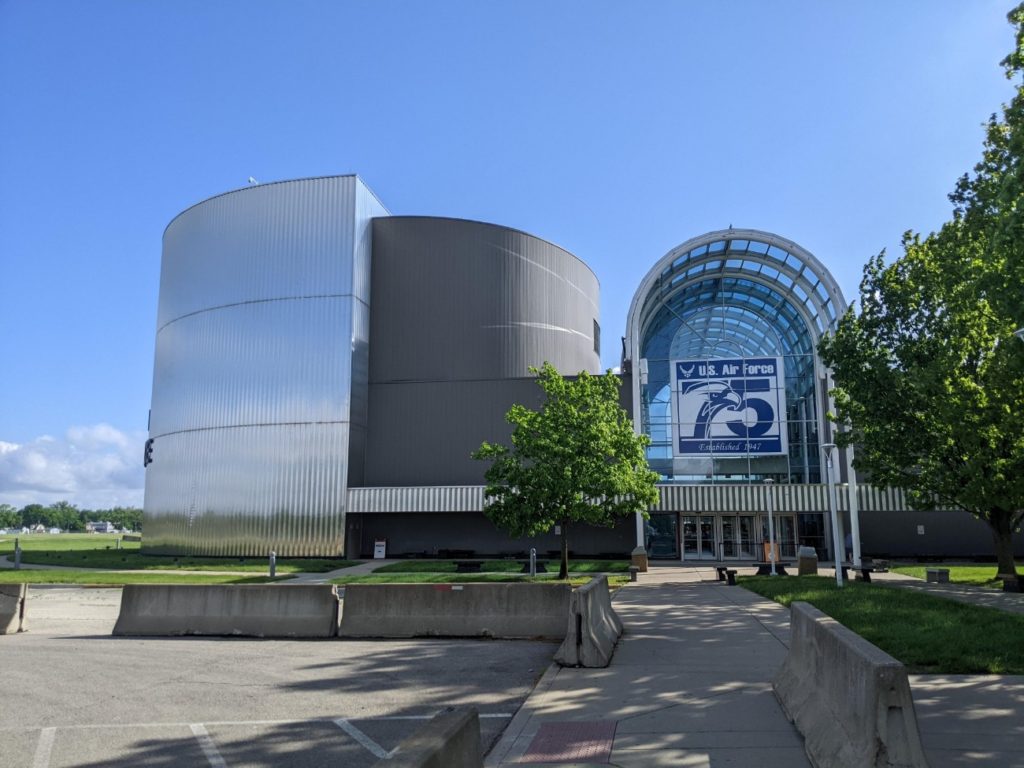
National Air Force Museum
The National Air Force Museum is located near where the Wright Brothers had their bicycle shop and near some of the earliest landing strips created. And it’s all adjacent to the Wright-Patterson Air Force Base – the highway exit to the museum swings you by the base’s entrance.
You circle the museum as you get closer, almost like coming in for a landing. There is a generous amount of parking with a smaller handicap lot right next to the entrance. Looking at it from the outside, you see the rounded end of a 3D theater on the near end, and four large connected hangar buildings stretching off to the right. Notice that the Air Force insignia painted on the outside of each hangar is different, as the symbol has changed over time.
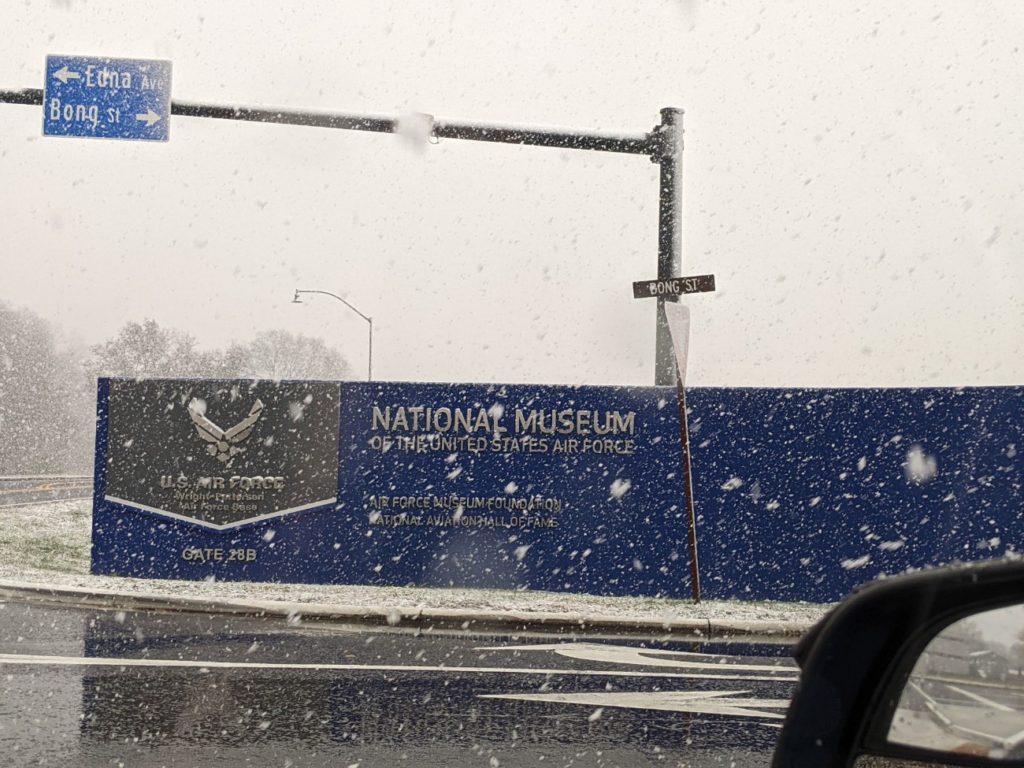
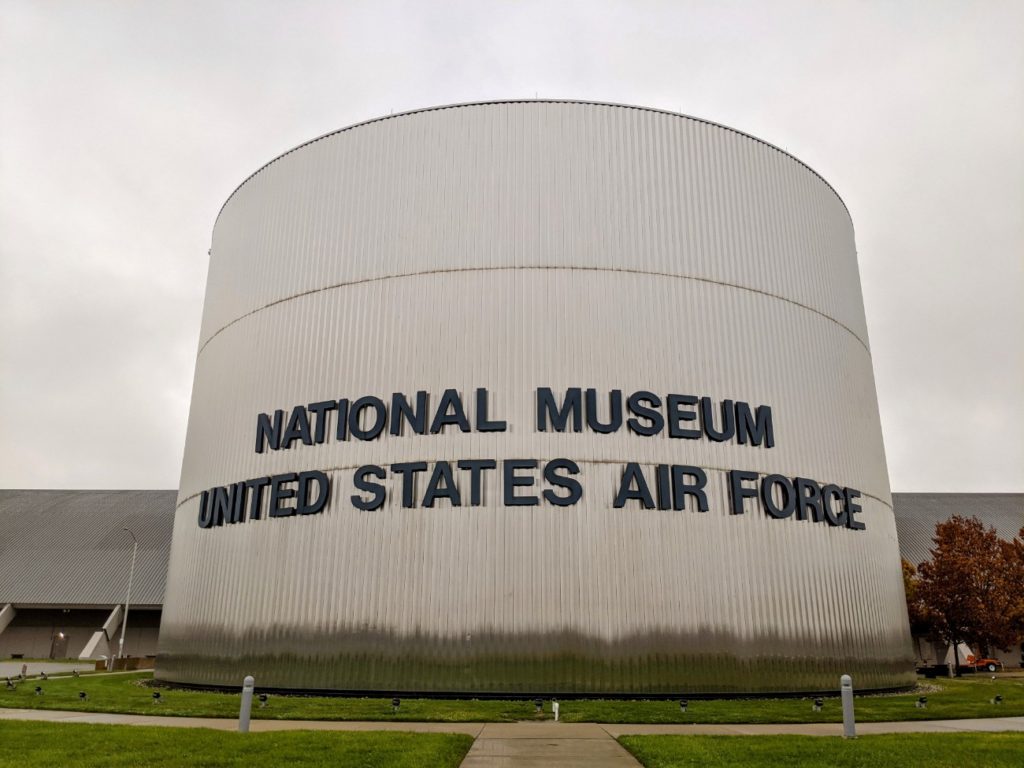
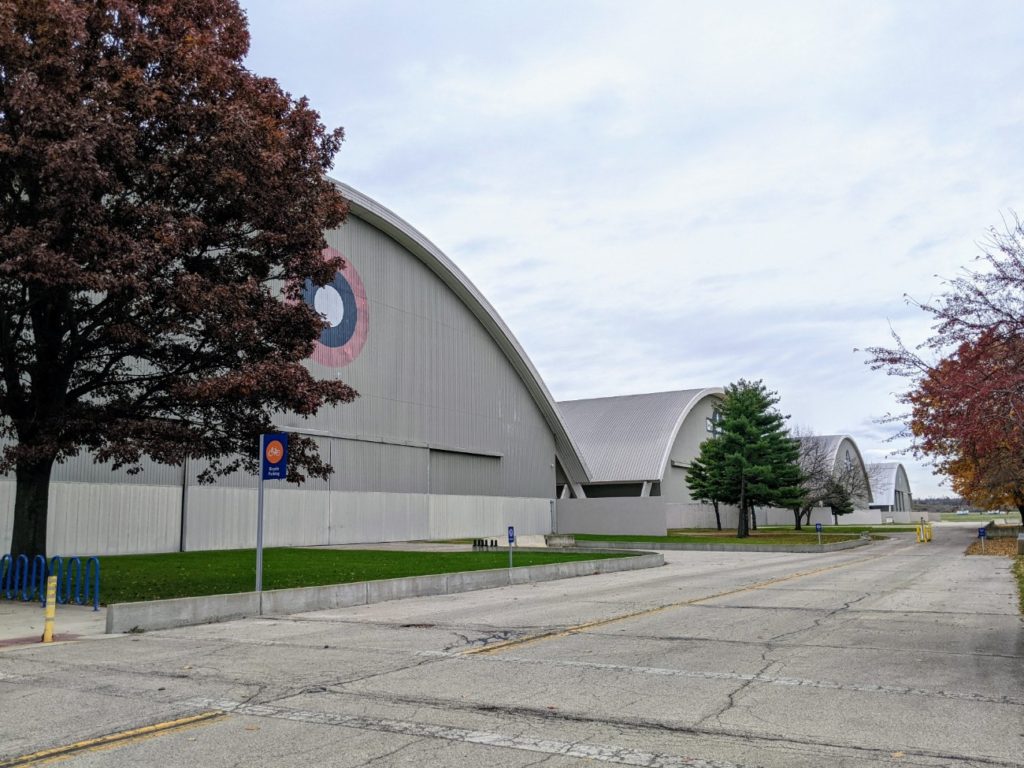
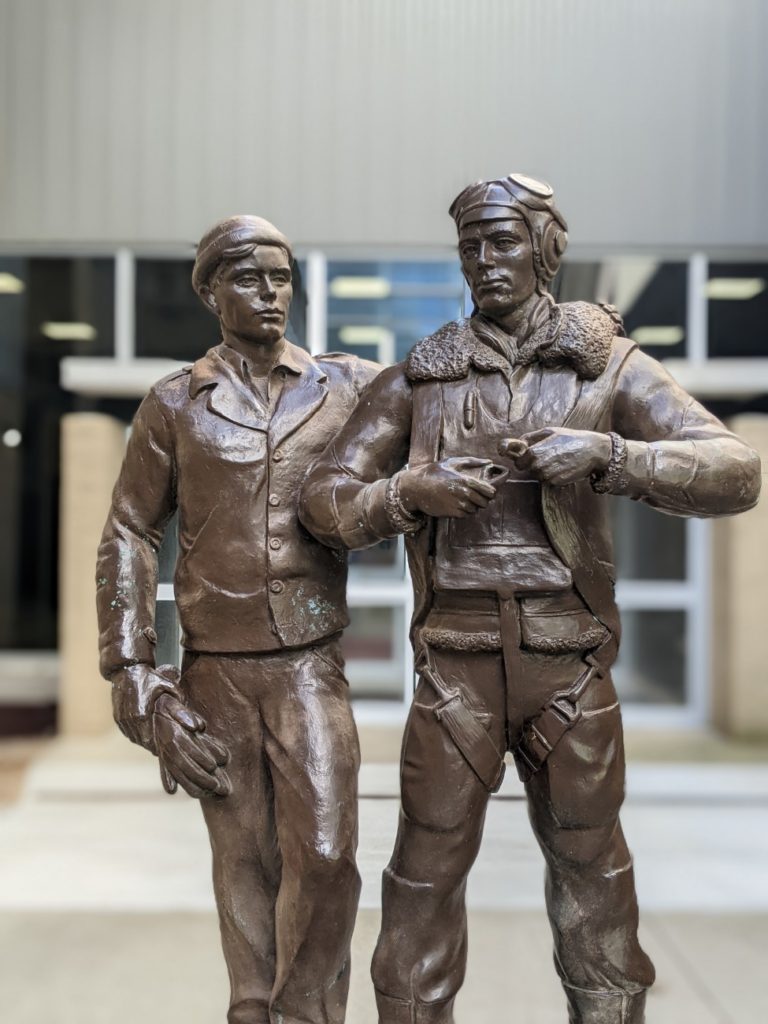
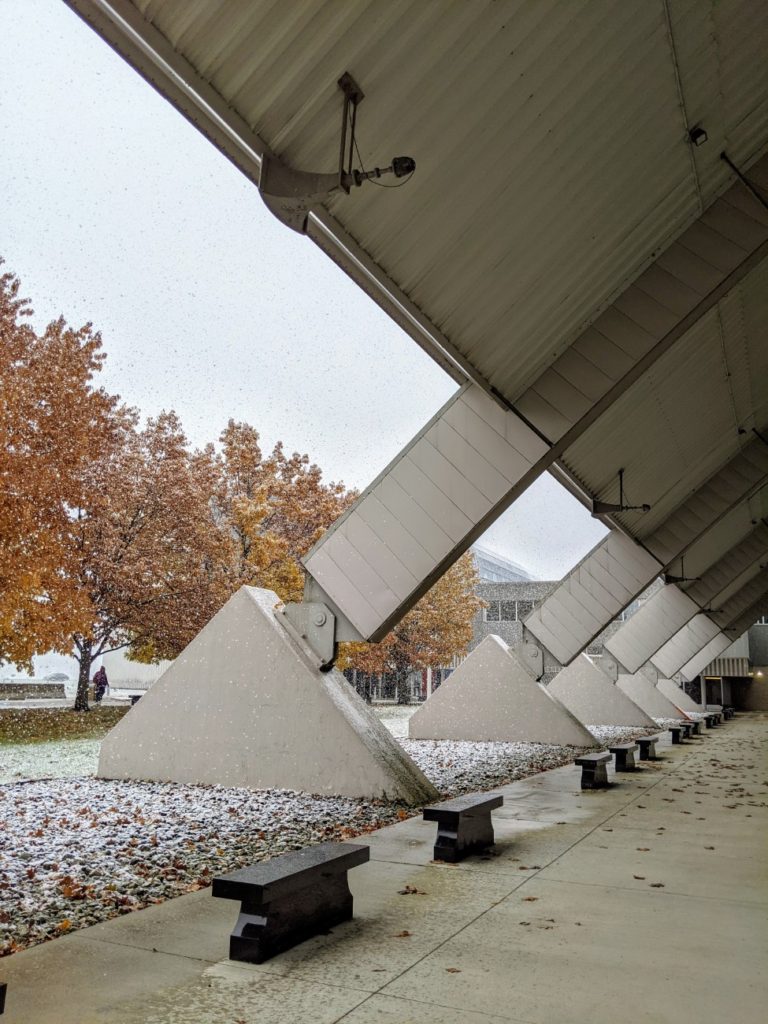
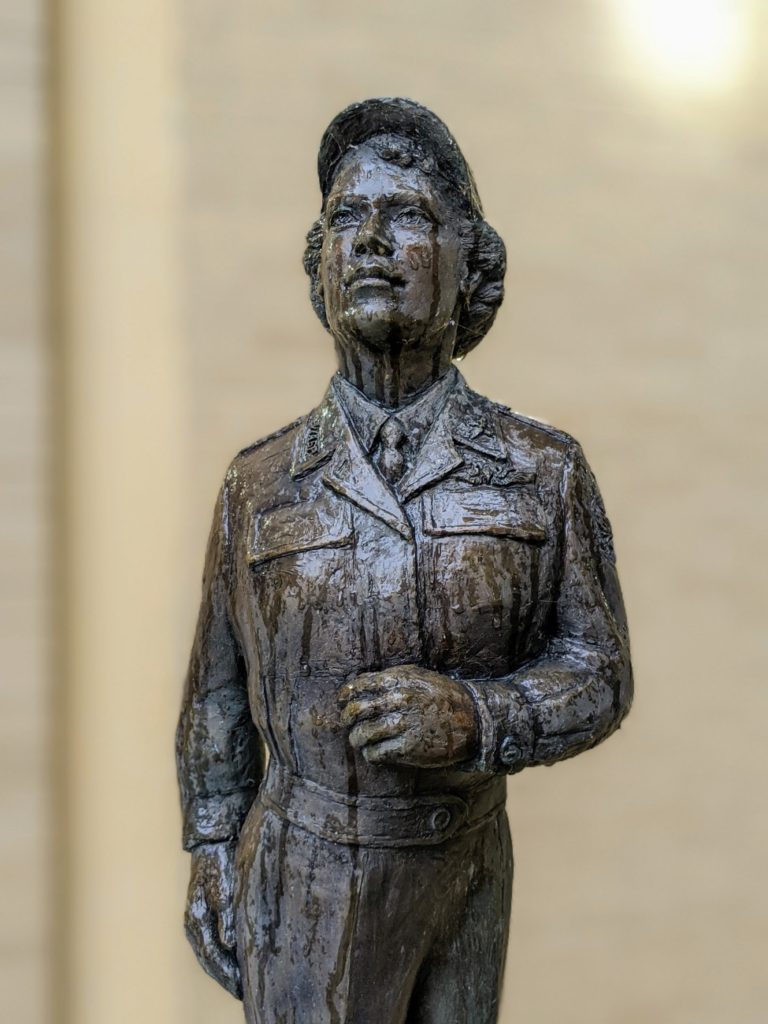
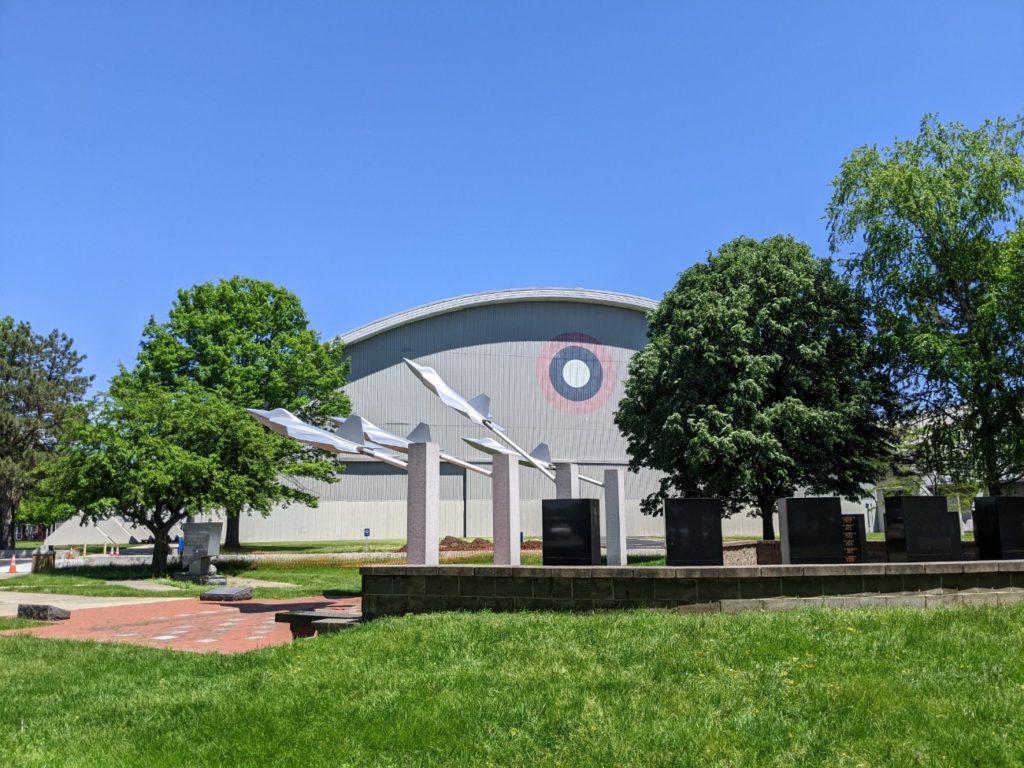
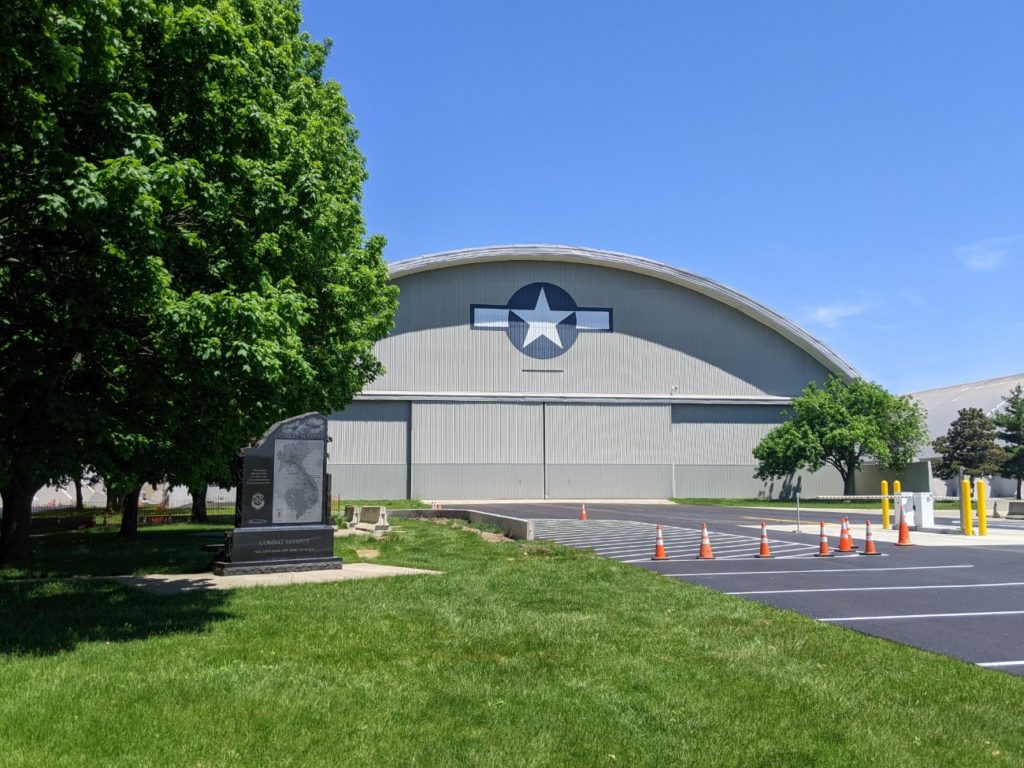
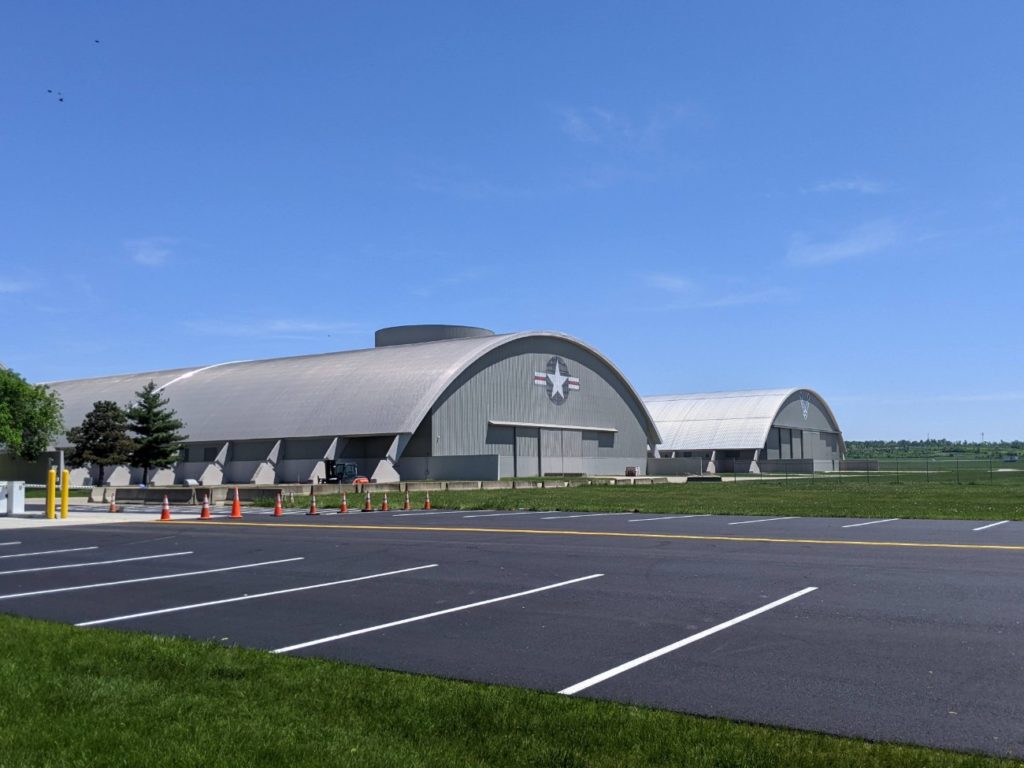
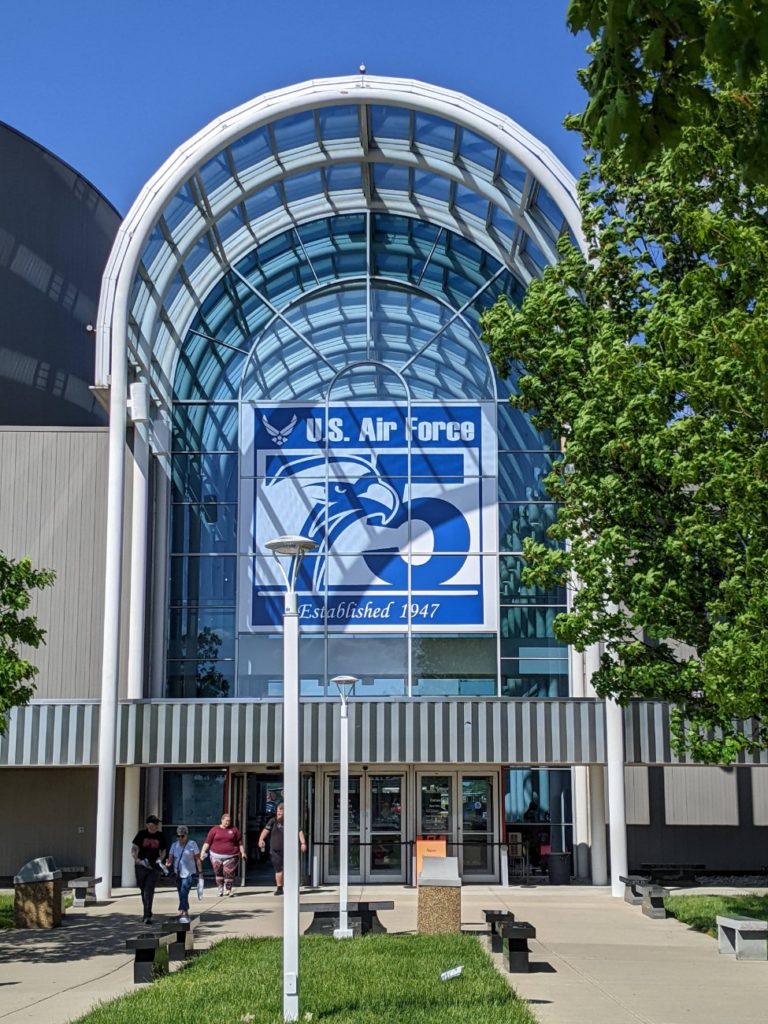
As you enter, you are funneled through a bag check and metal detector and into an entrance hall. While the museum is free, they will try to upsell you at this point on various simulator rides or Imax movies. You can also get a map here (for a $1 donation, I think) and ask any questions you might have. Make sure to ask if there are any special events or aircraft that are open for viewing. Visiting on a military holiday, like Veterans’ Day or Pearl Harbor Day, will increase/insure your chances of seeing some sort of special event or talk.
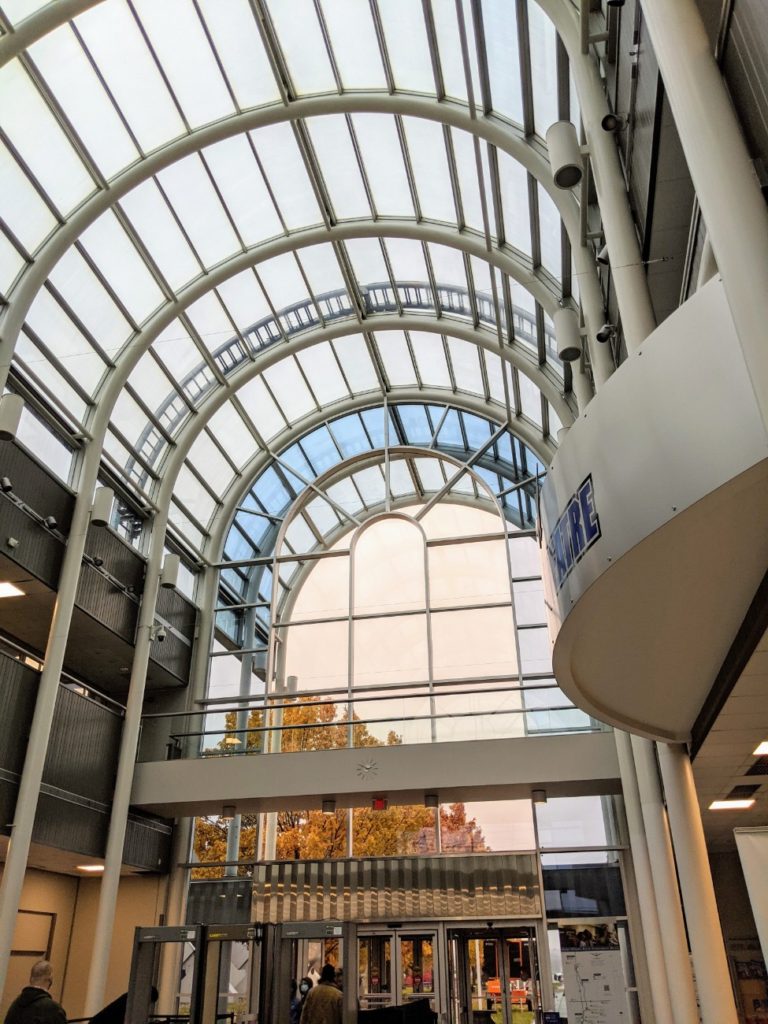
Touring Strategies
The four hangars are set up in chronological order. The Early Years of aviation and a World War II Gallery are housed in the first hangar. Korean War & Southeast Asia Galleries are in the second. The third holds a huge Cold War Gallery. Next is a towering missile silo, then the fourth hangar is a fun Research & Development Gallery on one side and a collection of Presidential planes on the other with some NASA stuff in the middle.
When you enter, the guides tend to suggest starting at the far end, in the most fun fourth hanger, then work your way forward as you get tired out. I prefer to start at the entrance and work my way through in chronological order, with things getting more and more interesting as the day goes on. Just make sure to not wear yourself out looking at every last thing in the first couple of galleries. You can always go back for a closer look.
Early Years Gallery
The first gallery after the entrance hall covers the early years of aviation. While it touches on the Wright Brothers, the emphasis is on military use. So you see a lot of early bi-planes with fabric wings and some early innovations like wings that fold up and more armored versions.
And there aren’t only American planes throughout the museum. There are German, British, Japanese, and more on display too. In this gallery, there’s a German “red baron” plane overhead.
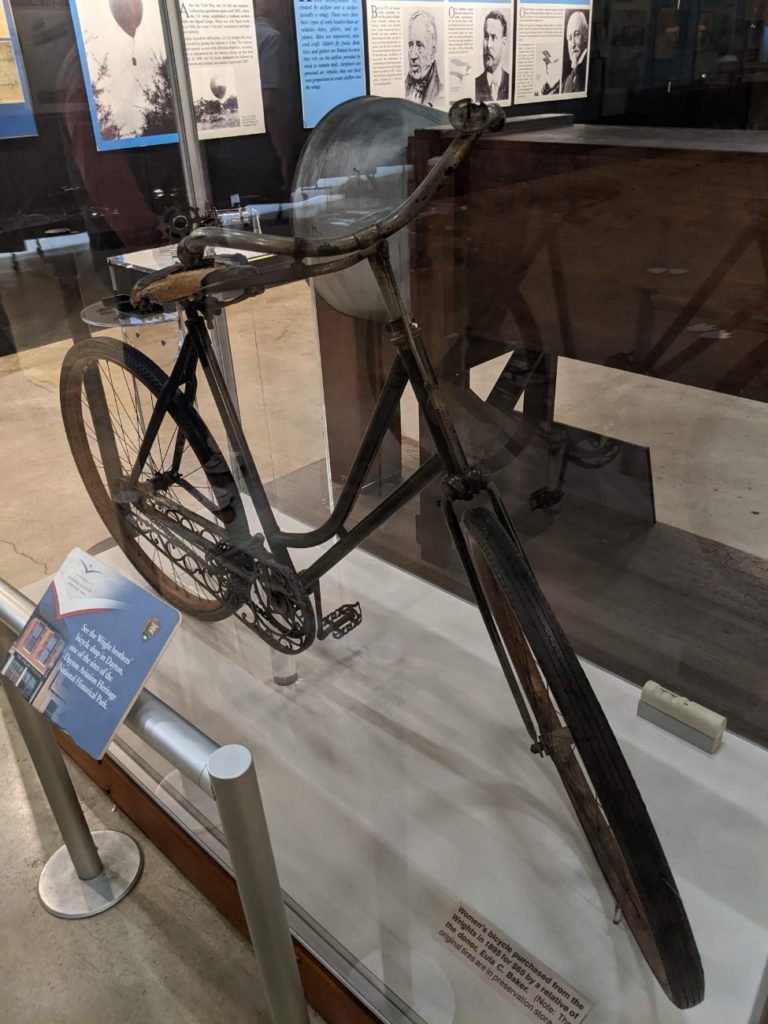
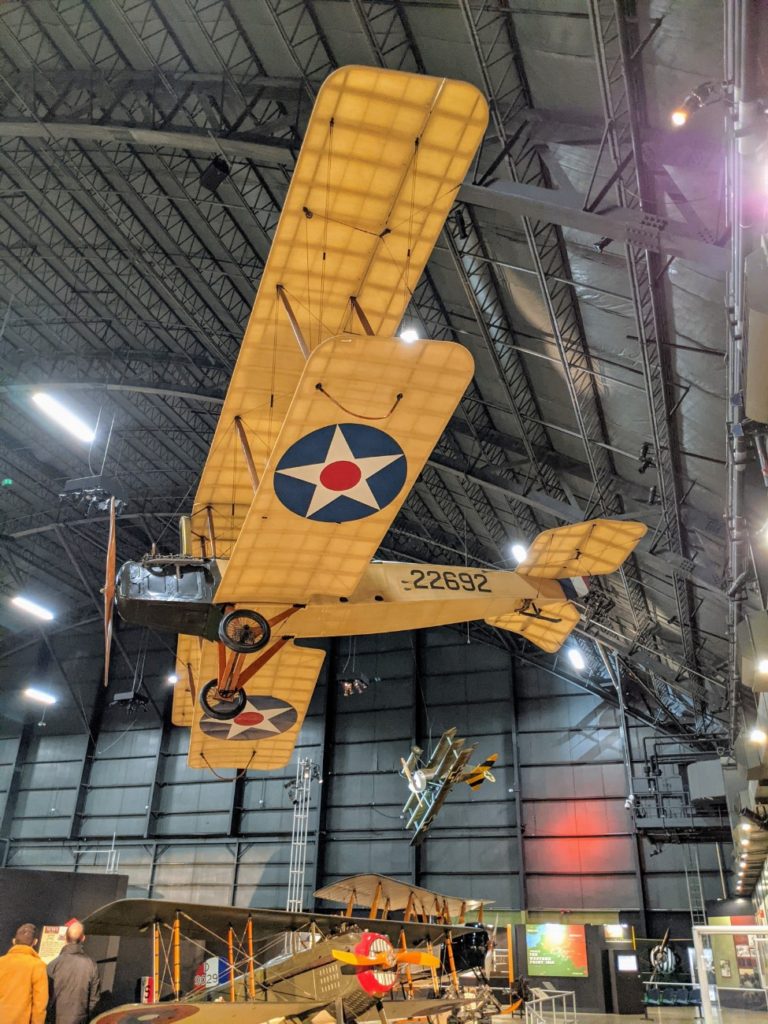
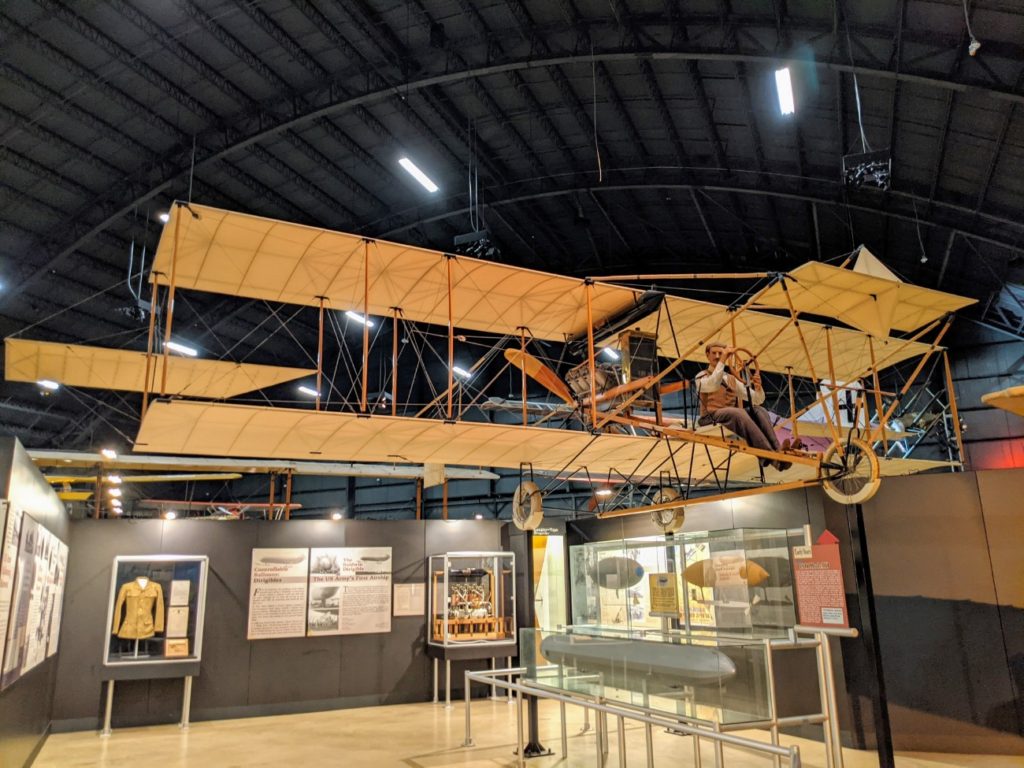
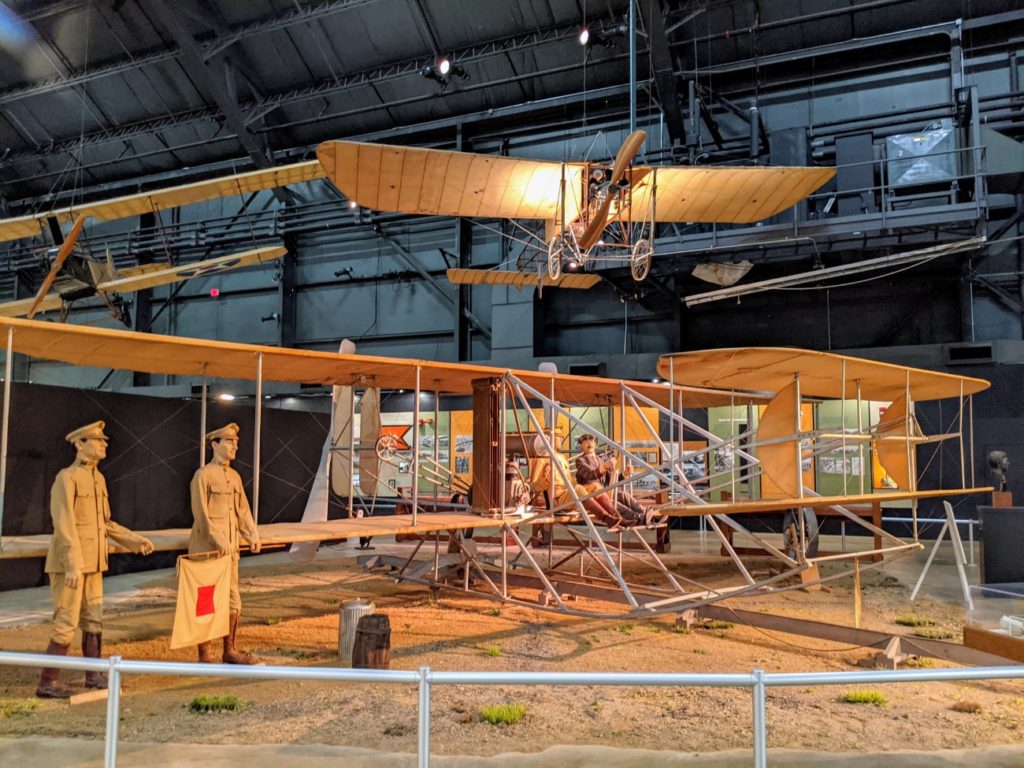
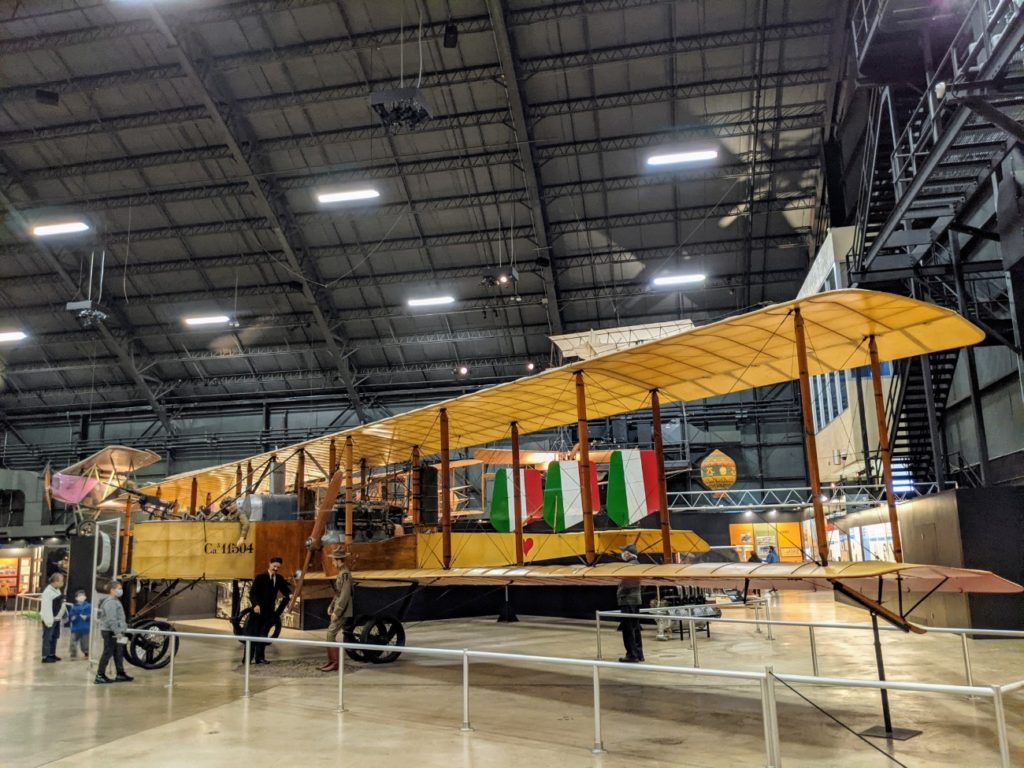
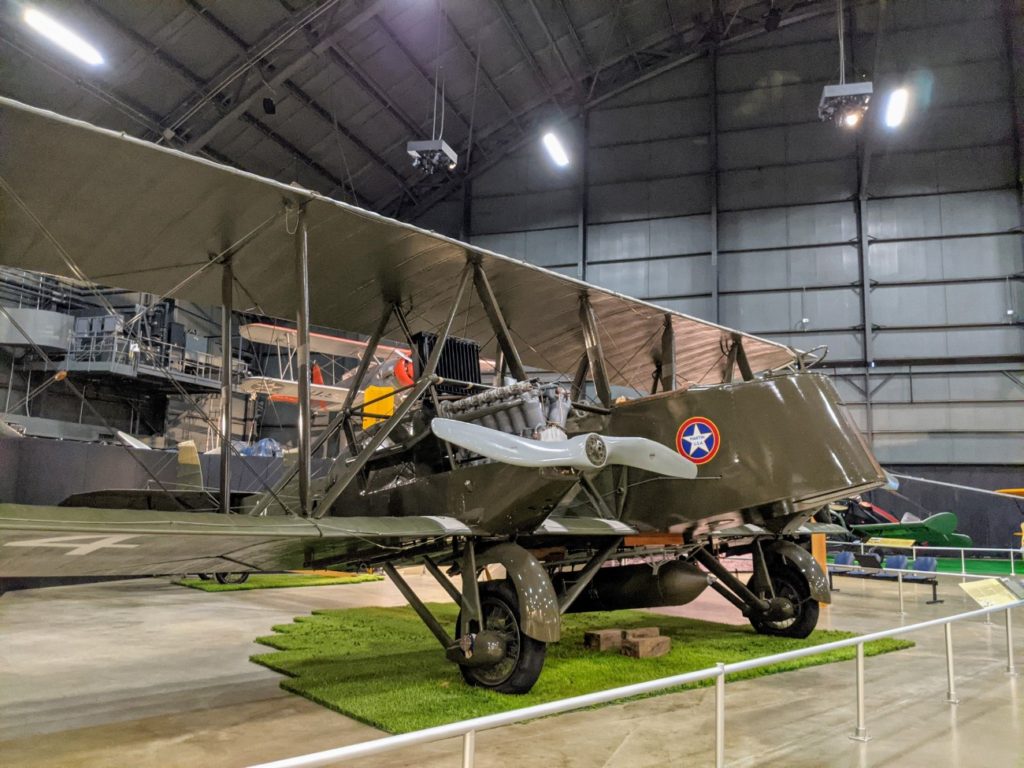
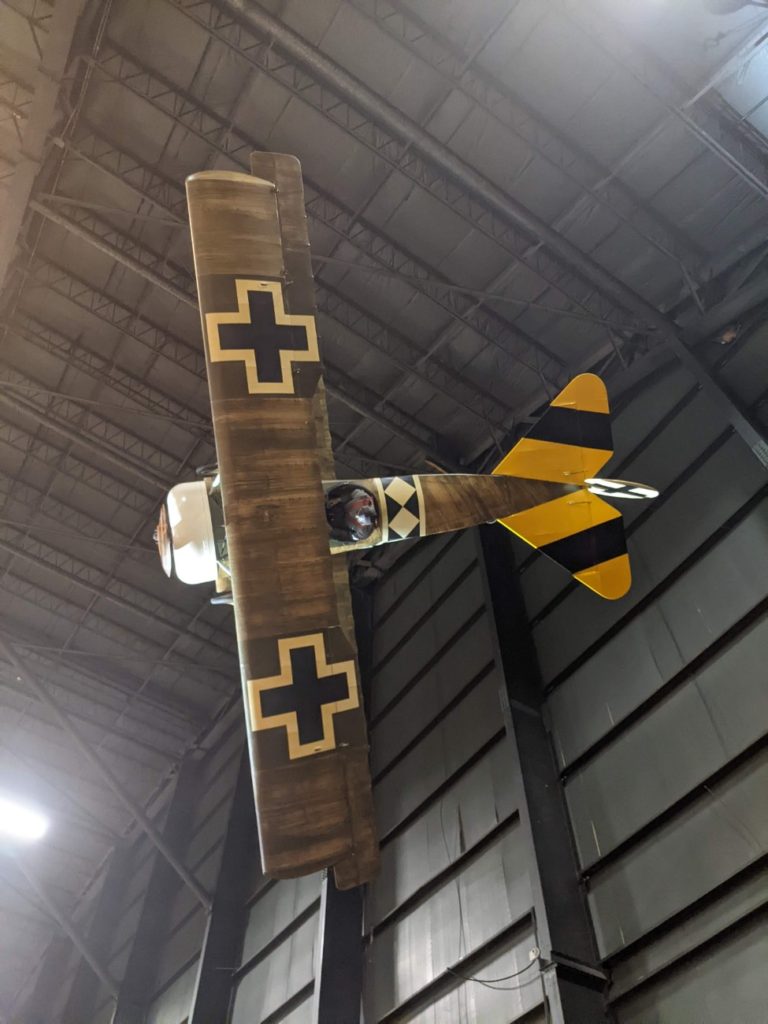
There’s basically a one-way path around this gallery, and as you work your way around, the planes from the ’20s and ’30s get really shiny and colorful. I almost can’t imagine these in use for the military. They look like something more from the movies. Look out for the James Bond-like gyrocopter.
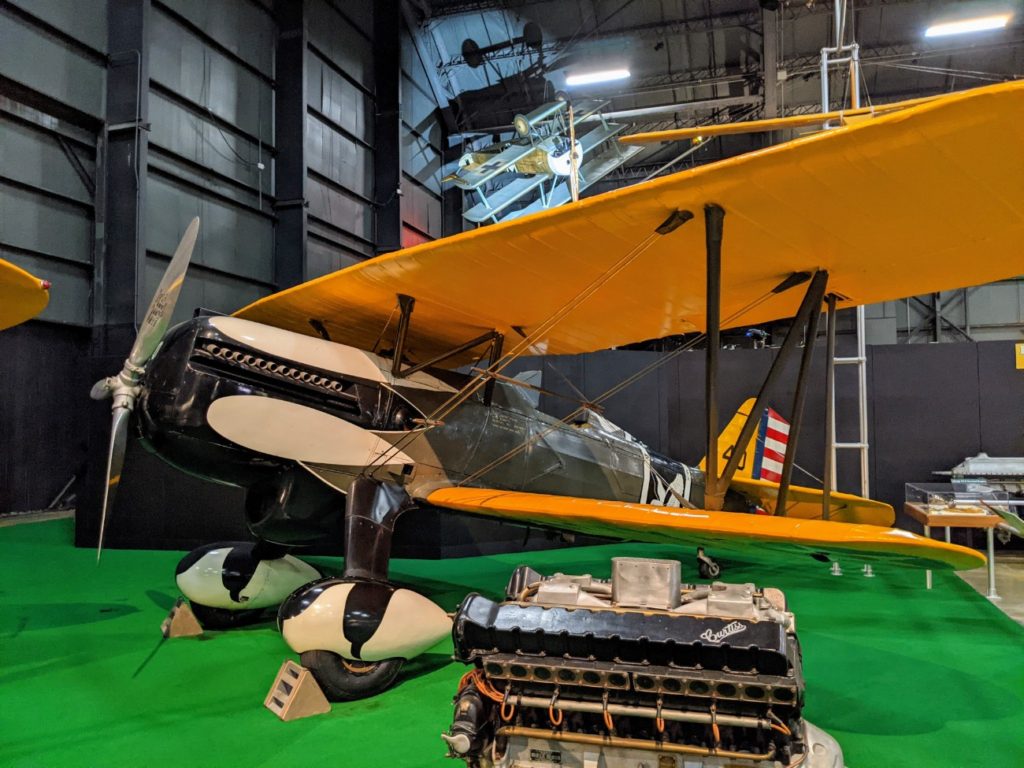
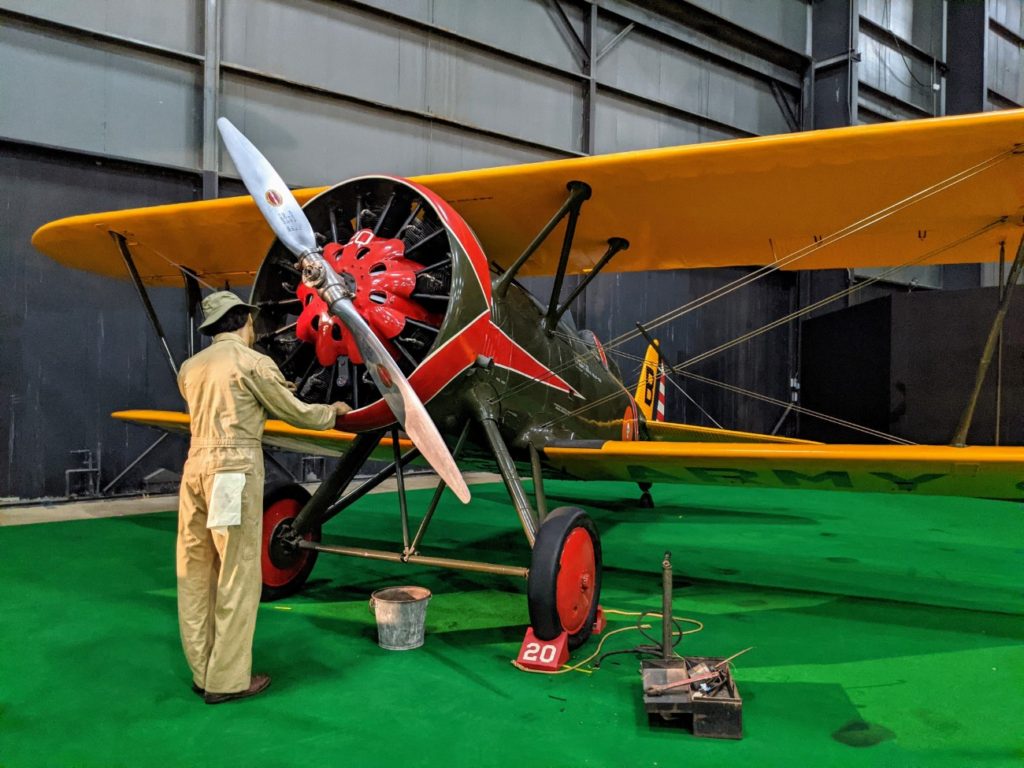
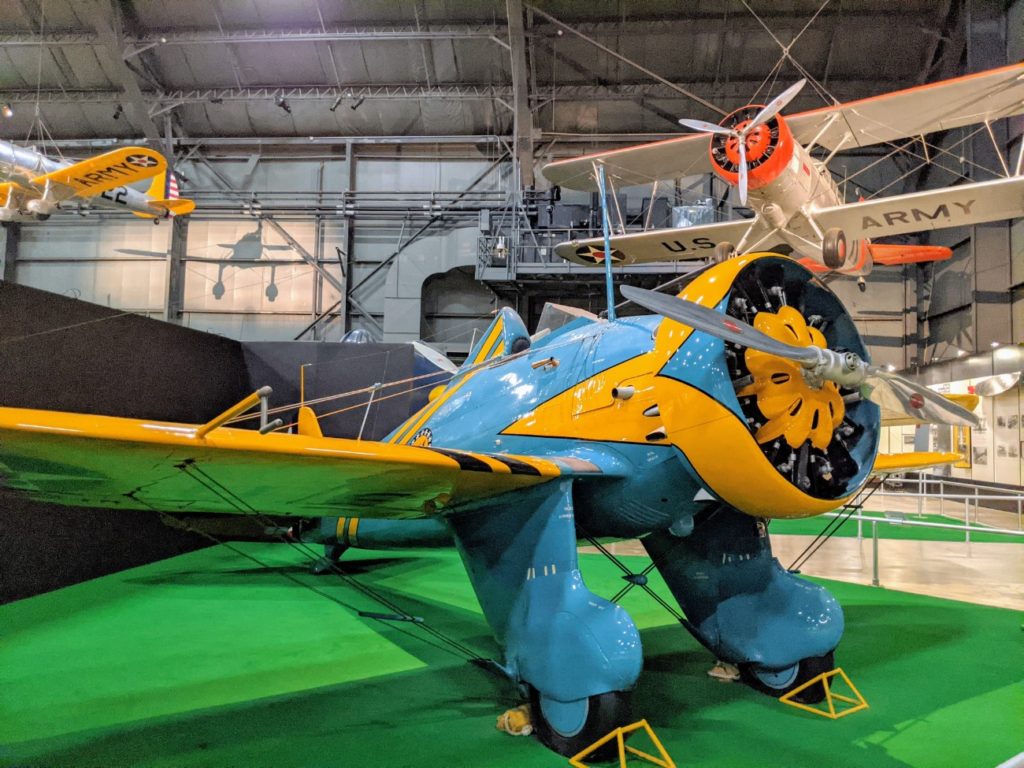
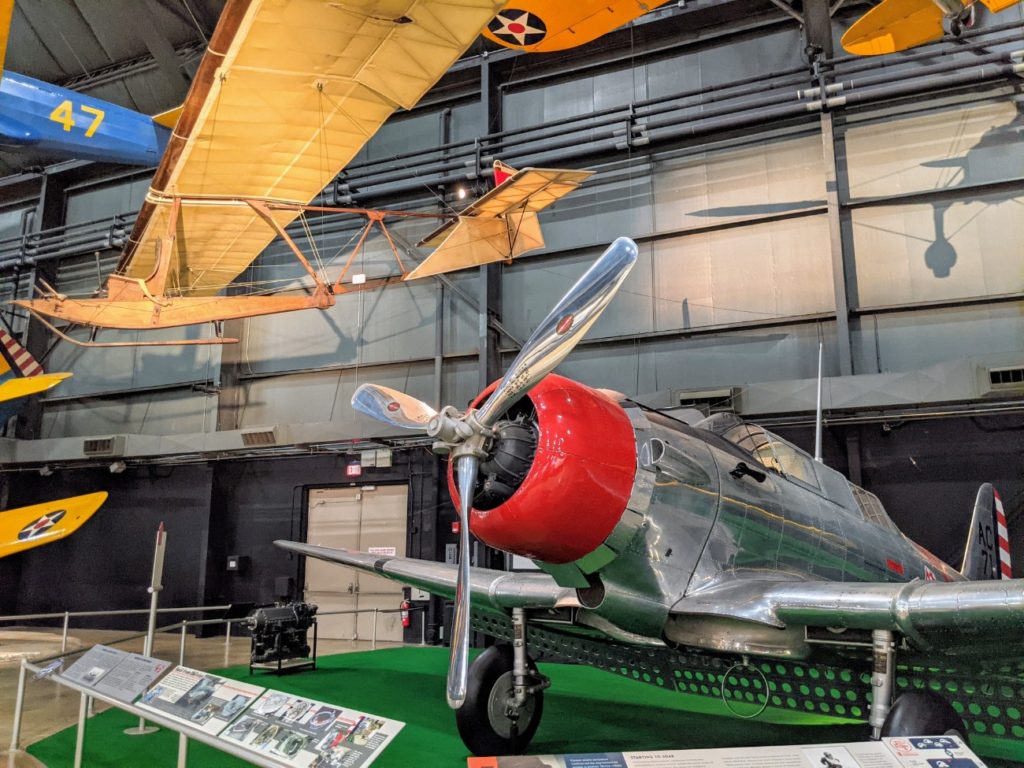
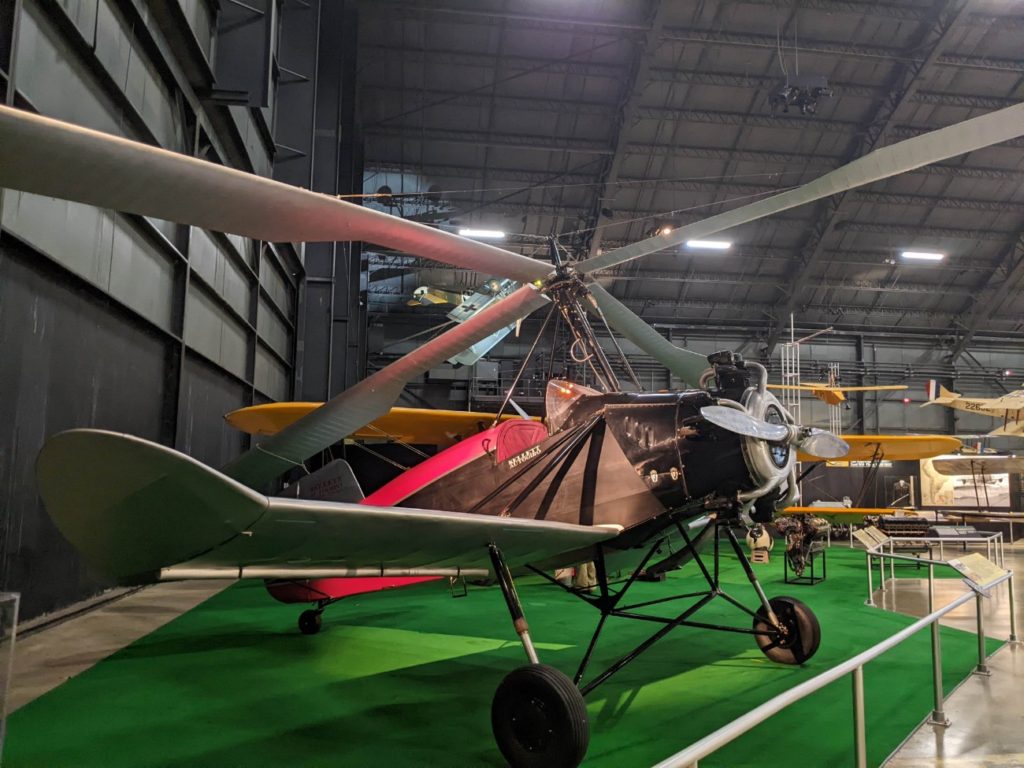
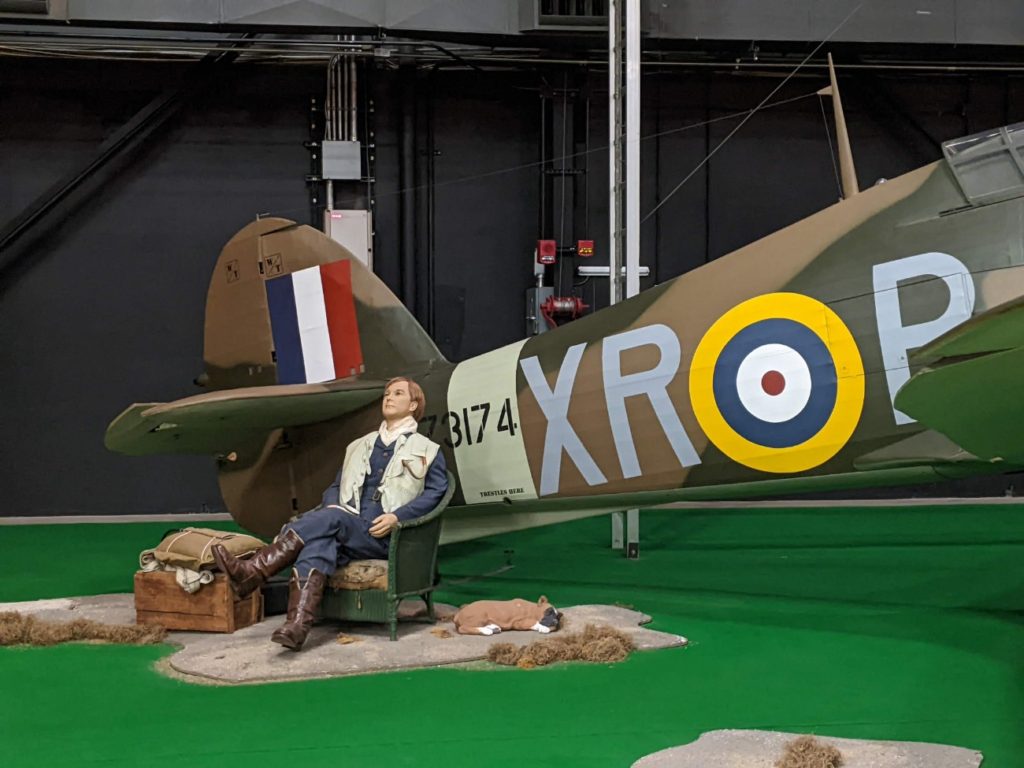
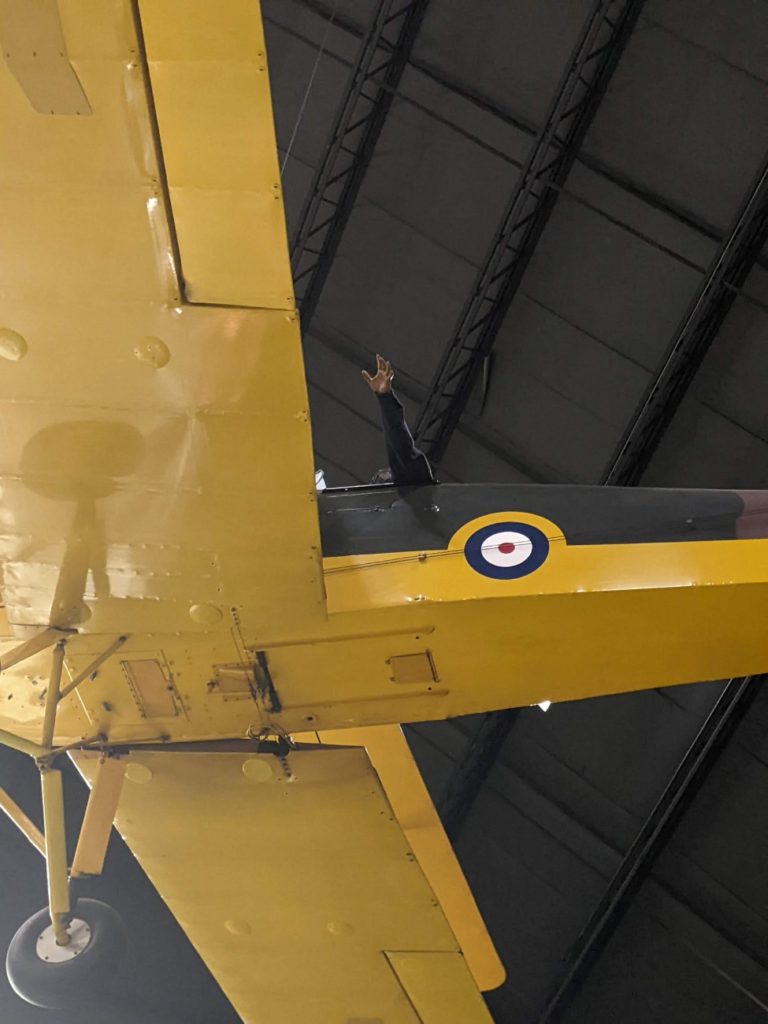
Holocaust Exhibit
Between the Early Years Gallery and the WWII Gallery, there is a hallway memorializing the Holocaust. Between bombed-out walls are photographs and video, a concentration camp uniform, and other artifacts from and about the period.
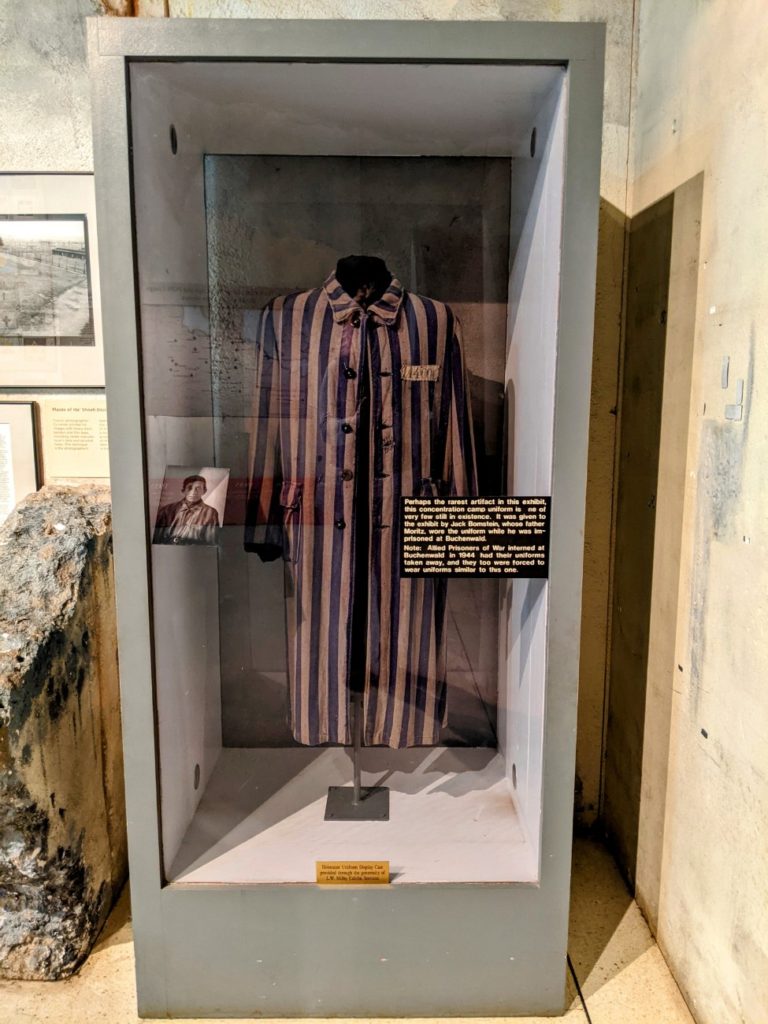
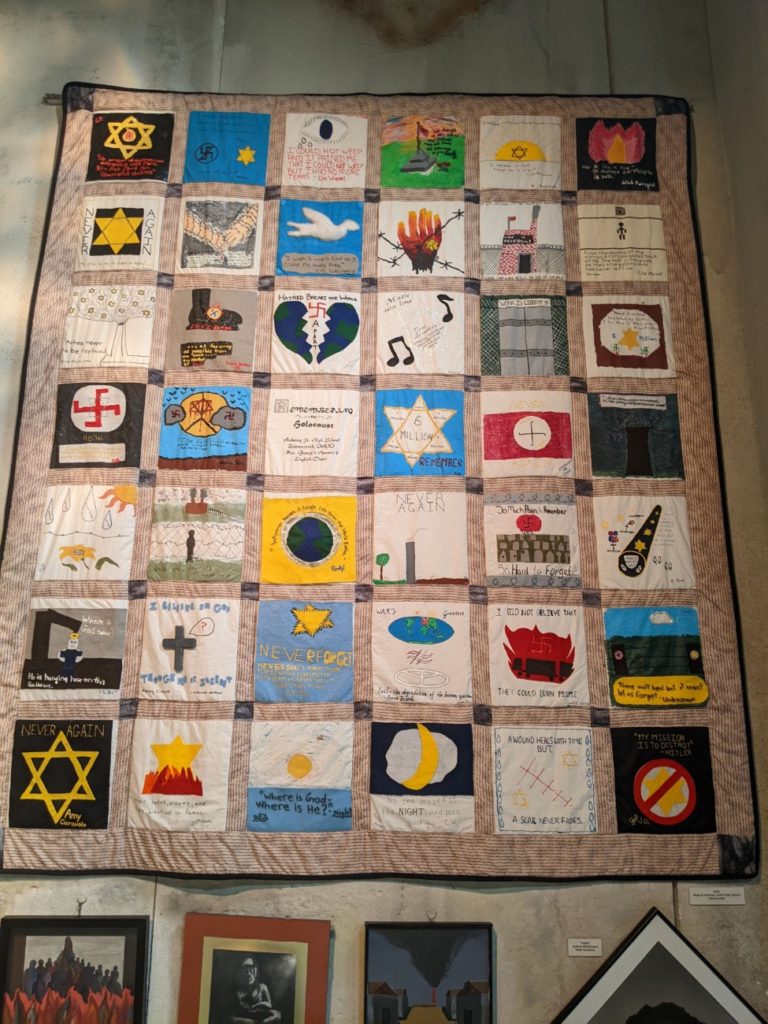
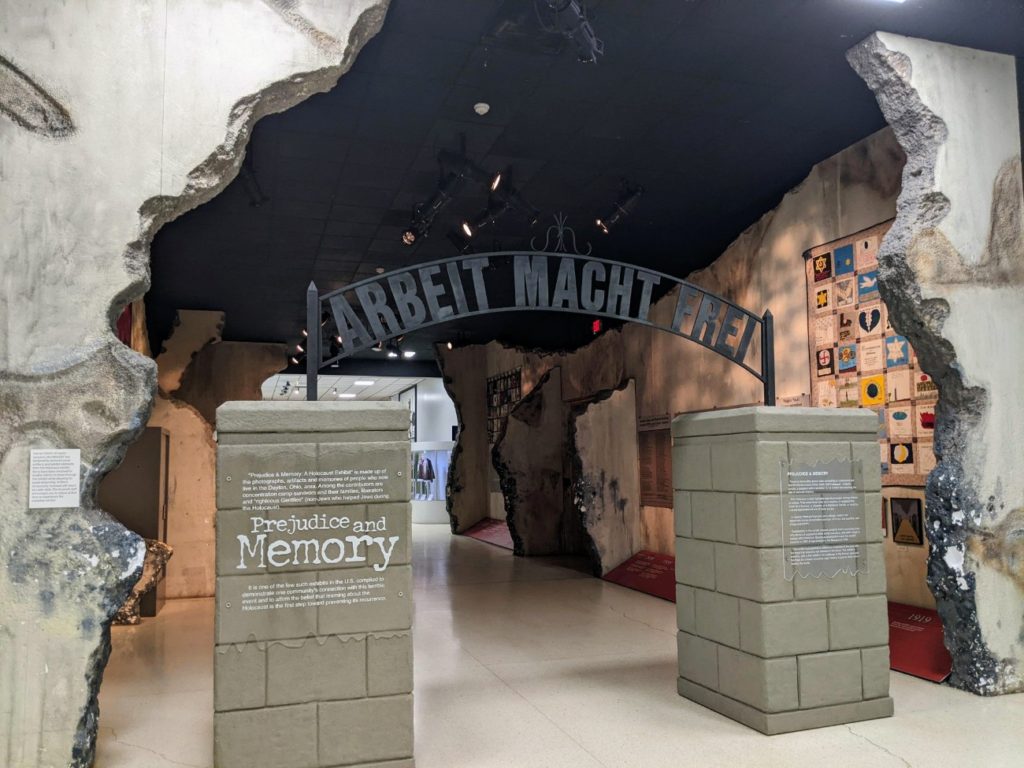
World War II Gallery
The rest of hangar one houses the World War II Gallery. Here, we see the rise of fighter planes and big bombers with fun nose art. They even have the real Memphis Belle!
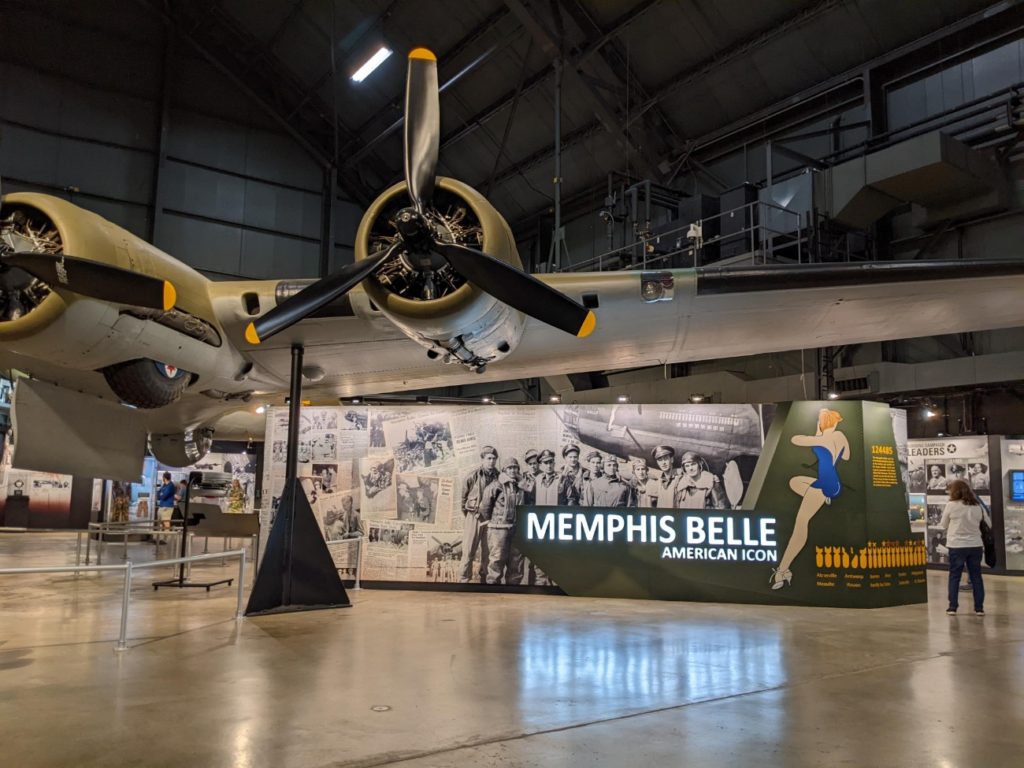
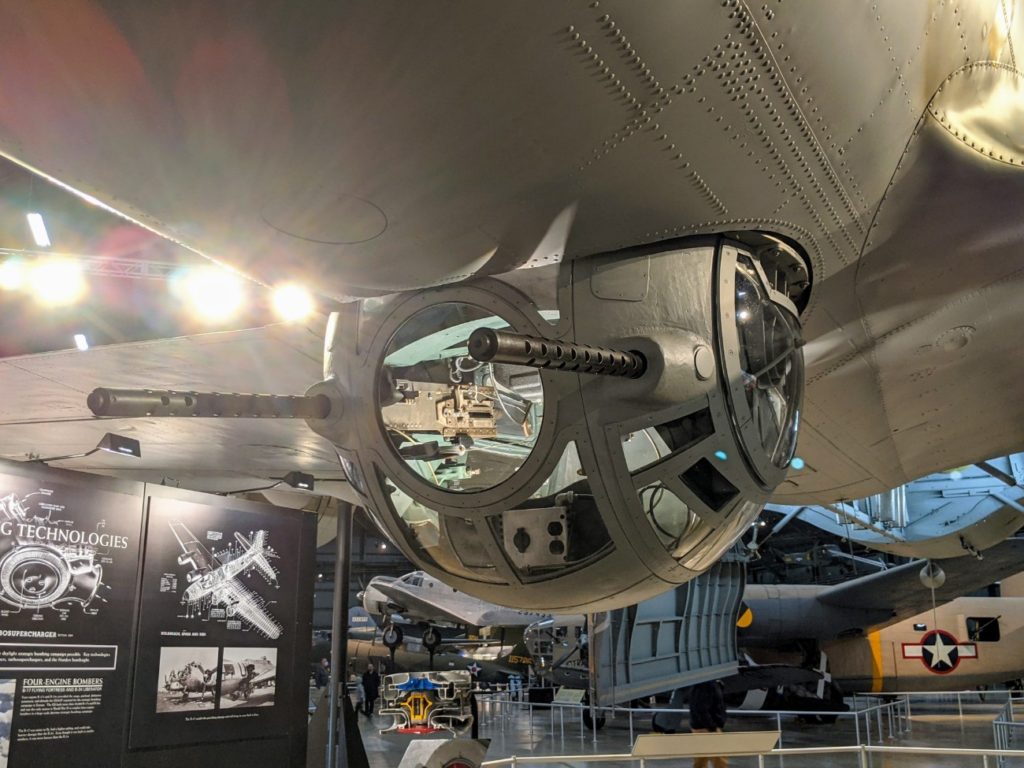
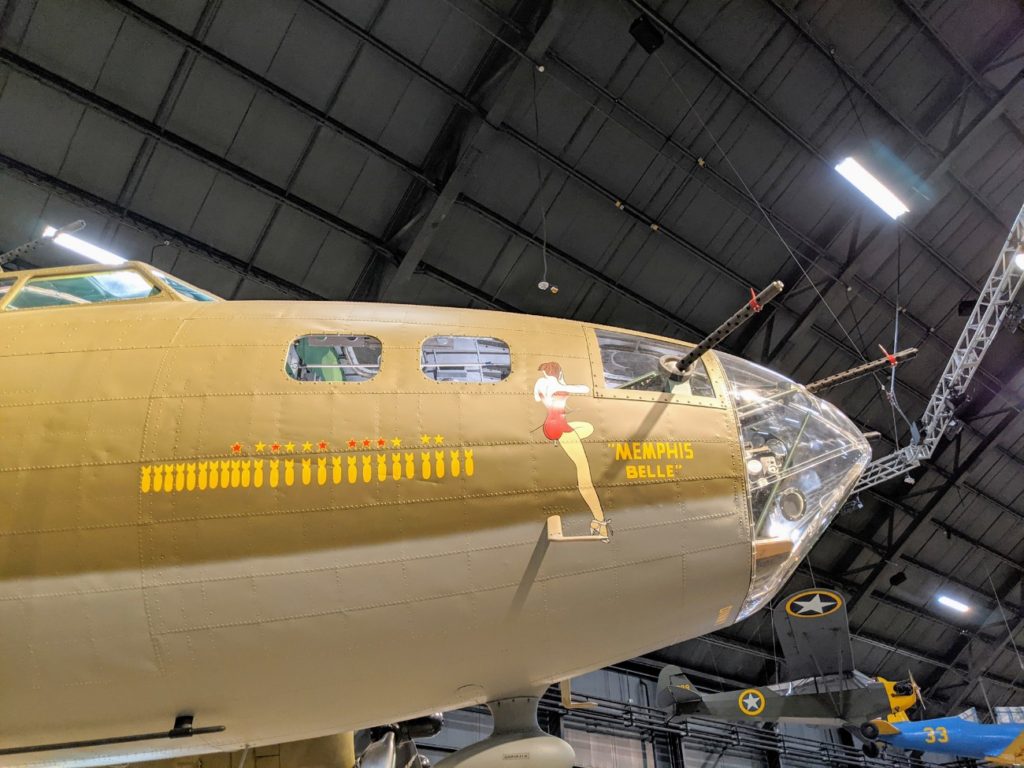
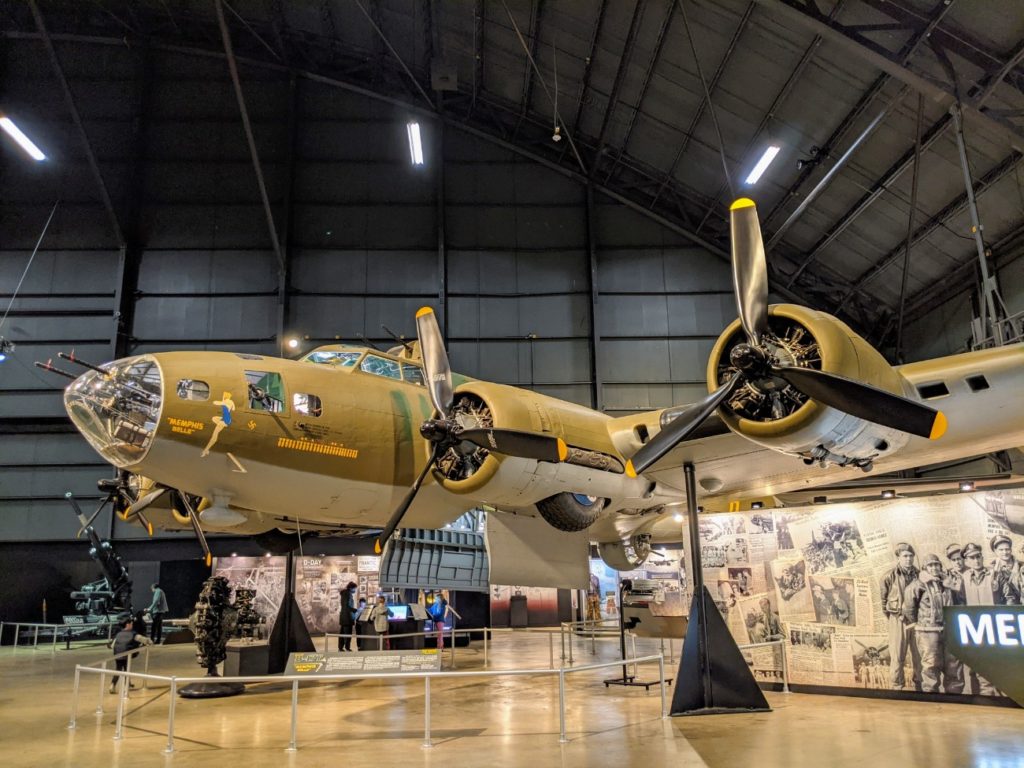
Several scenes are set with mannequins, depicting tropical settings in the Pacific theater, or rescues by train in Europe. One shows a pilot climbing into his plane in his pajamas, too hurried to change into his uniform for an emergency run. In another corner is a display of Walt Disney (it doesn’t look very much like him) and the patches and propaganda the Disney studio produced for the war effort.
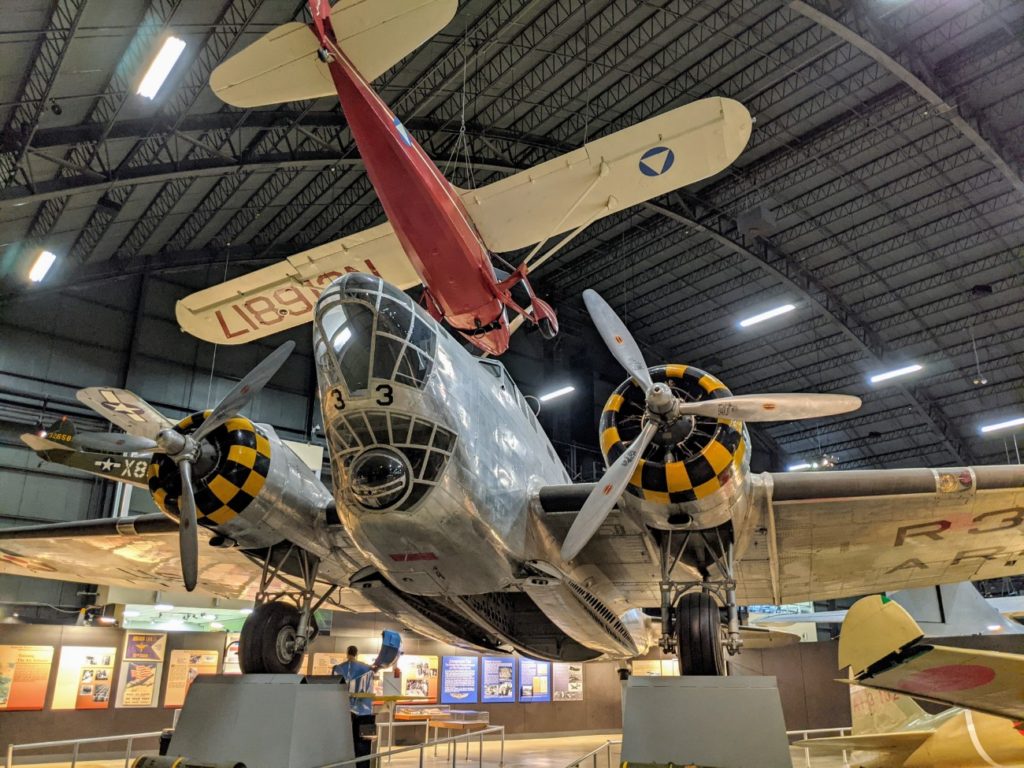

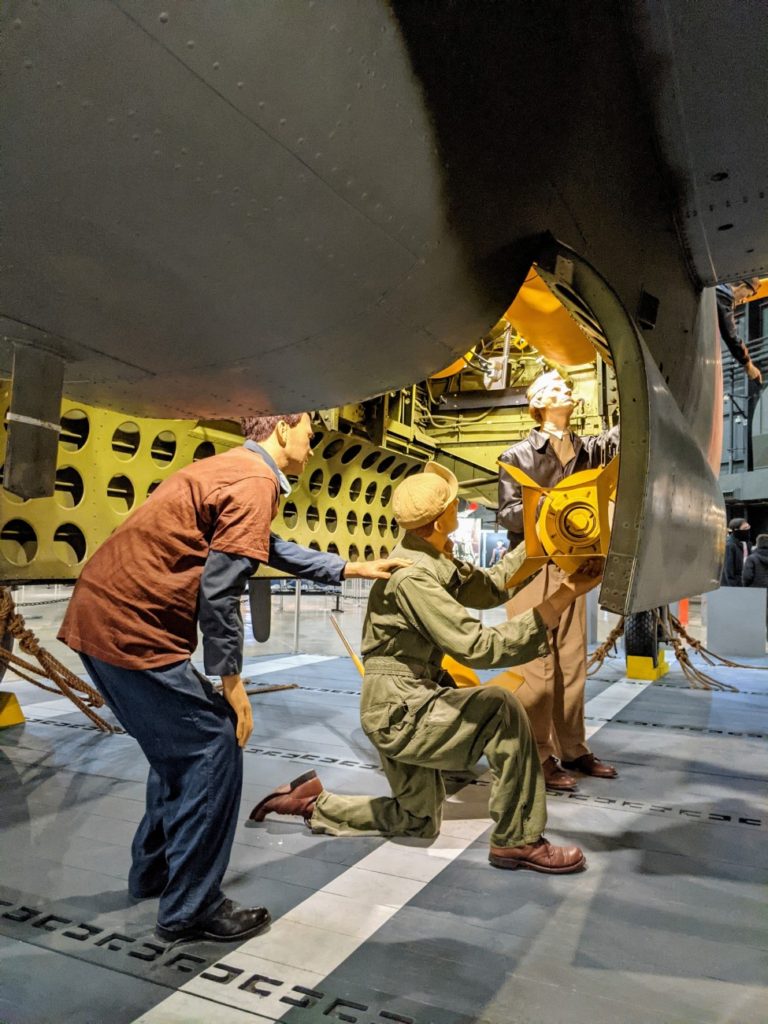
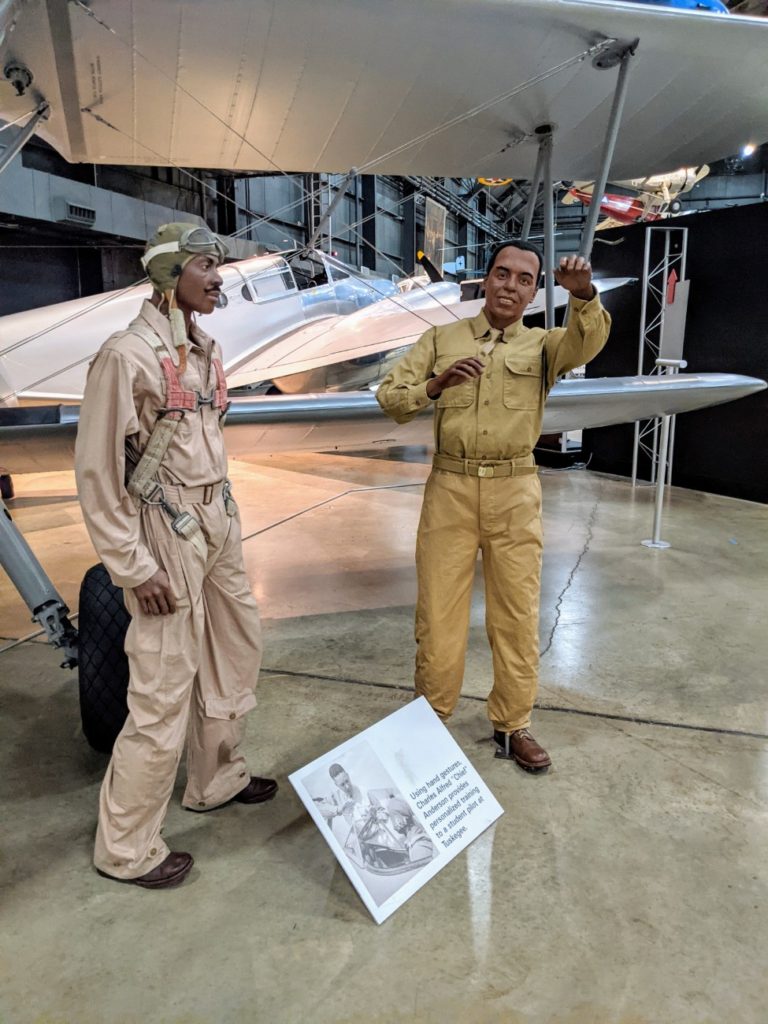
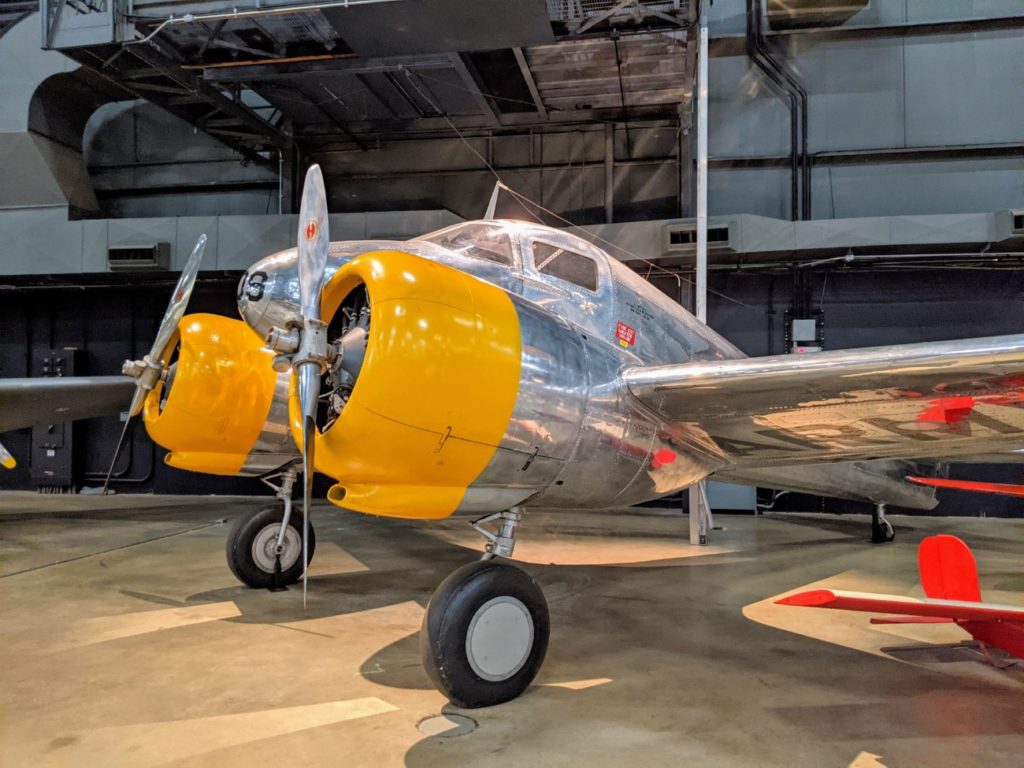
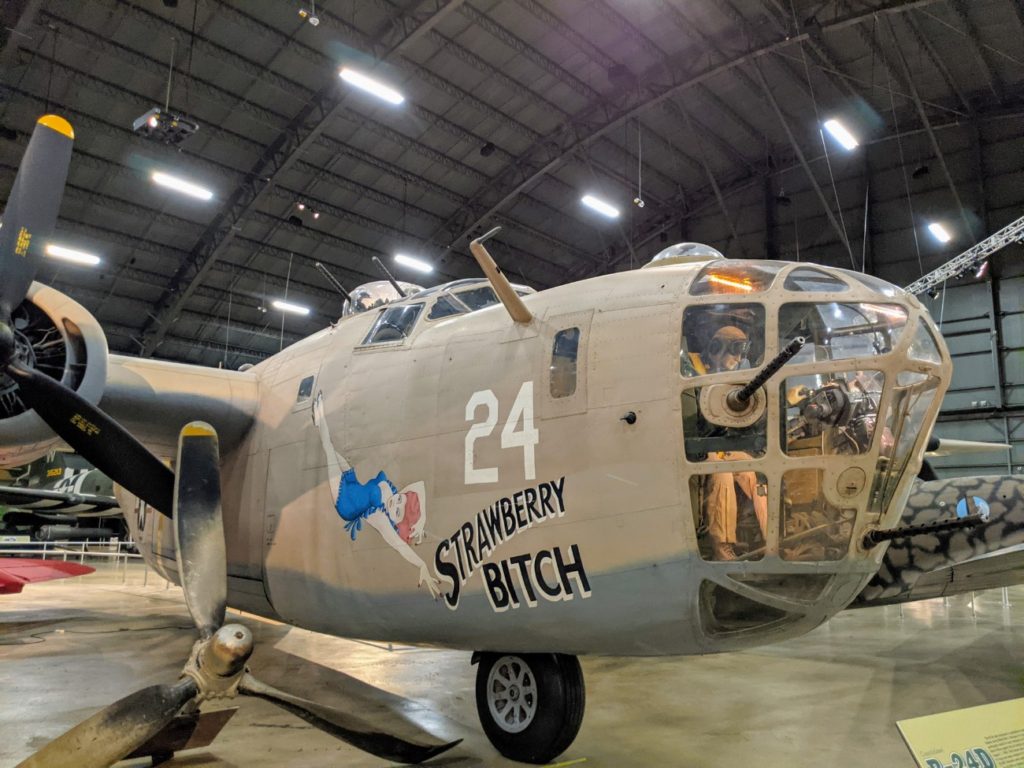
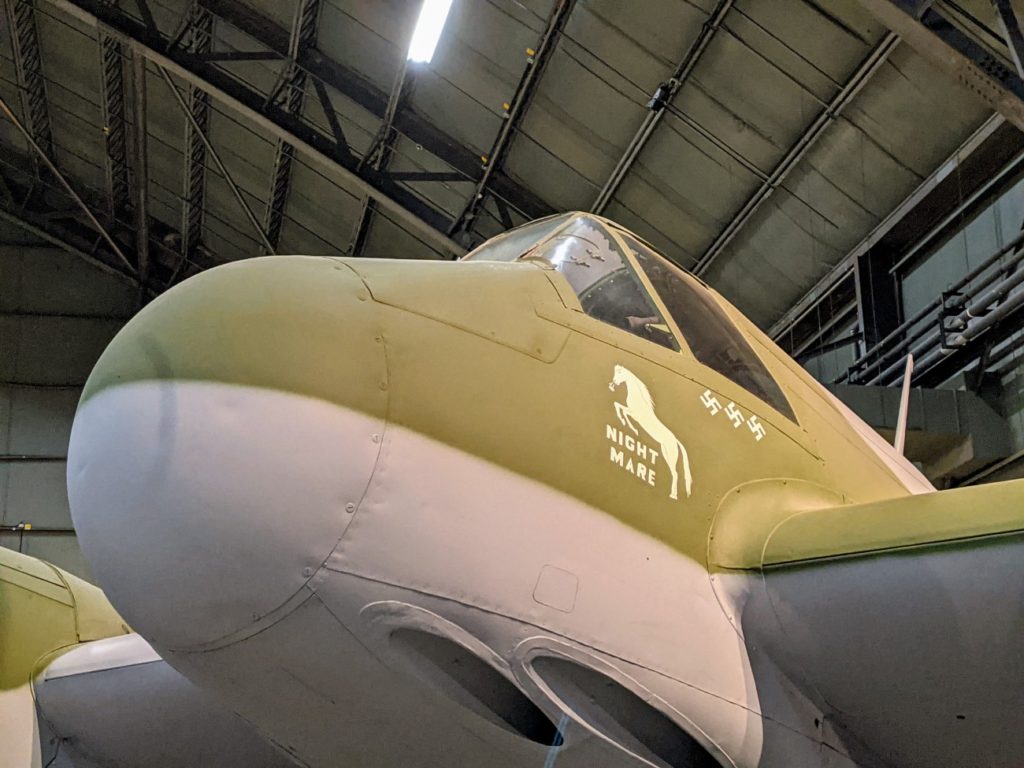
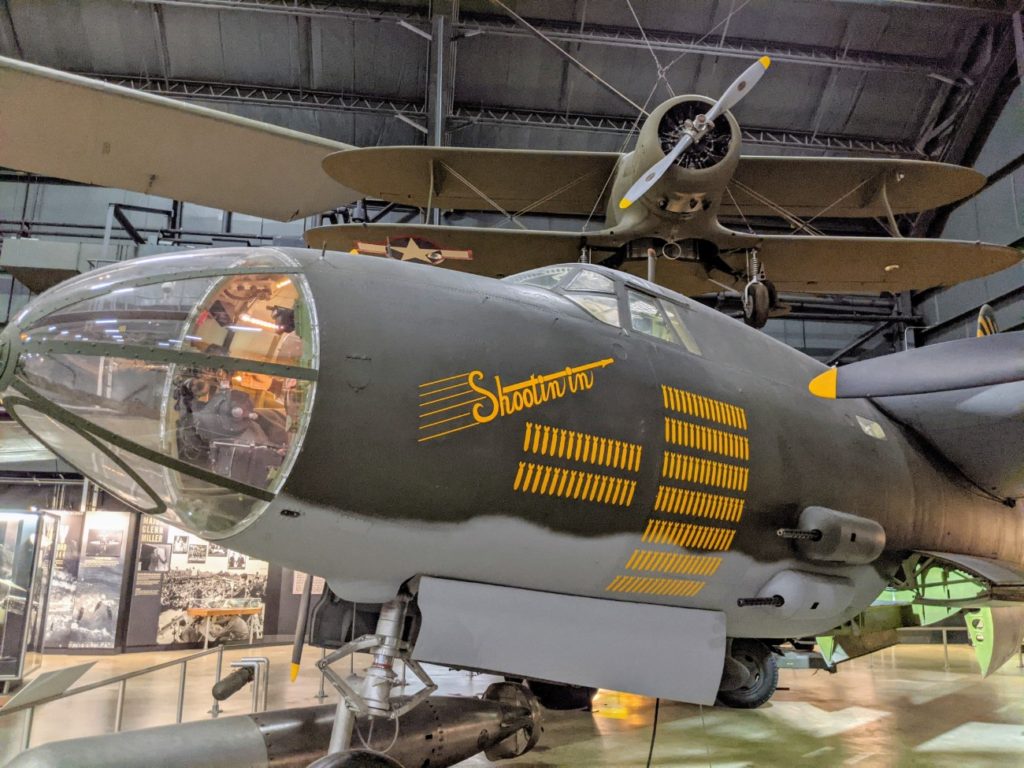
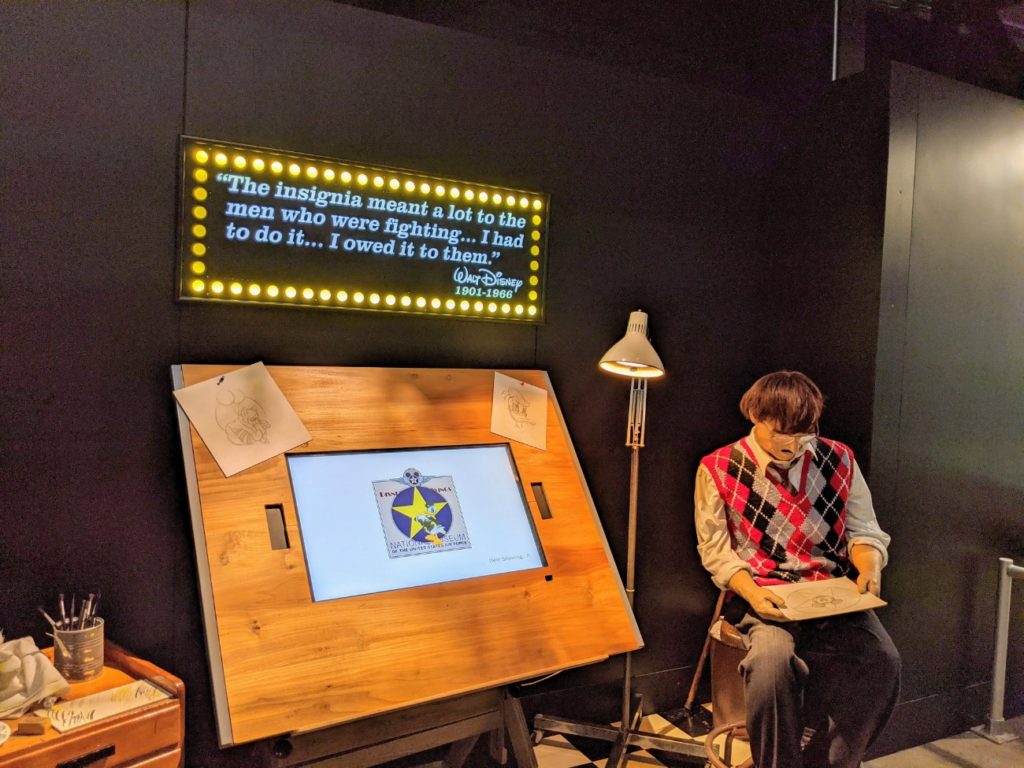
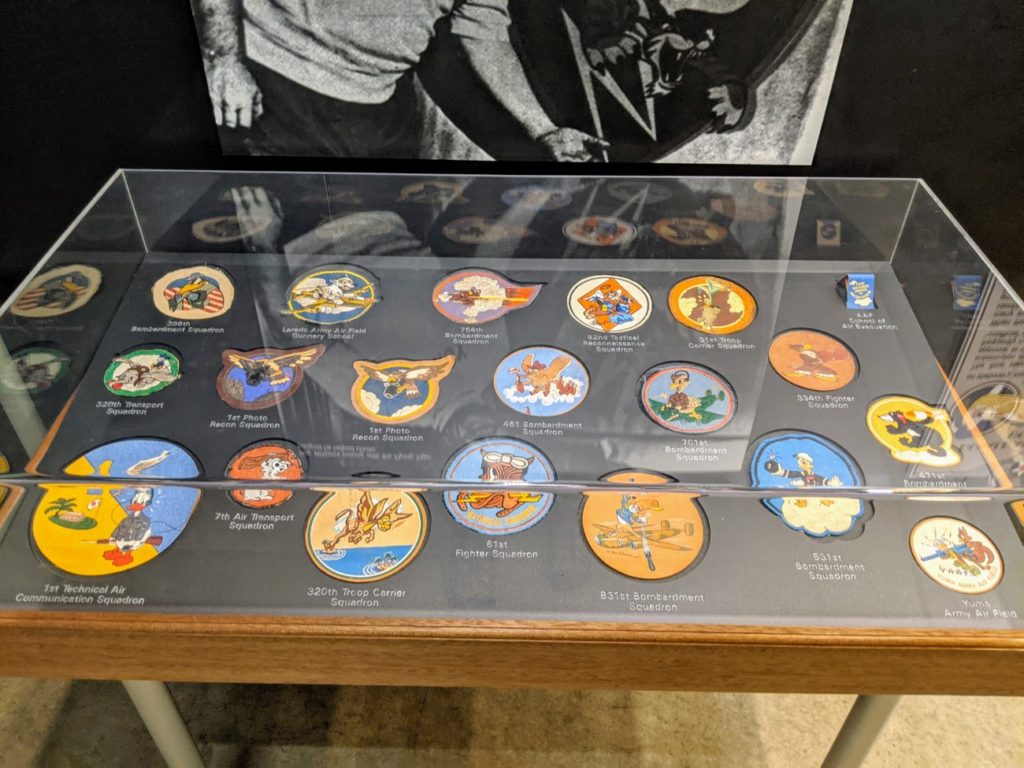
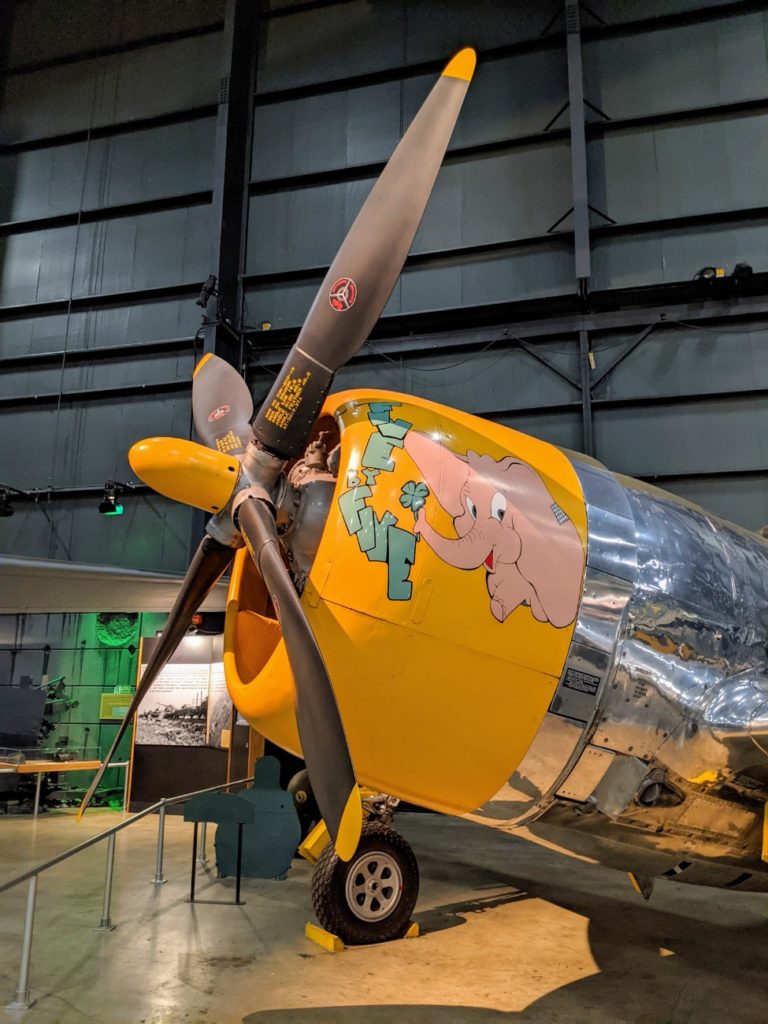
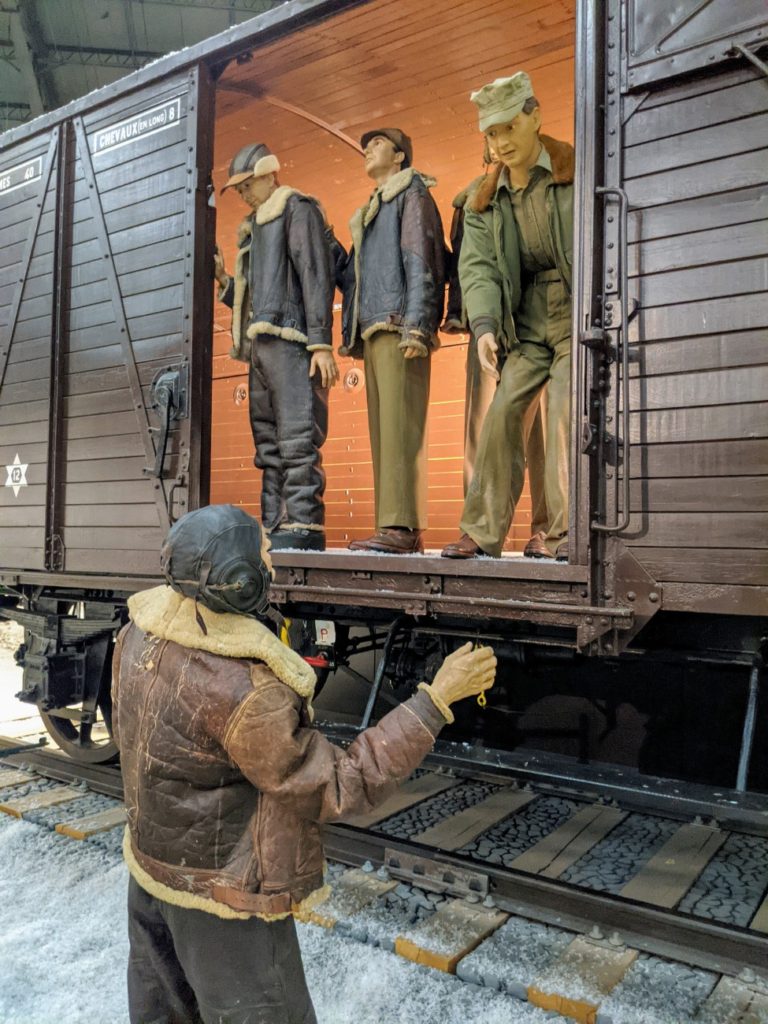
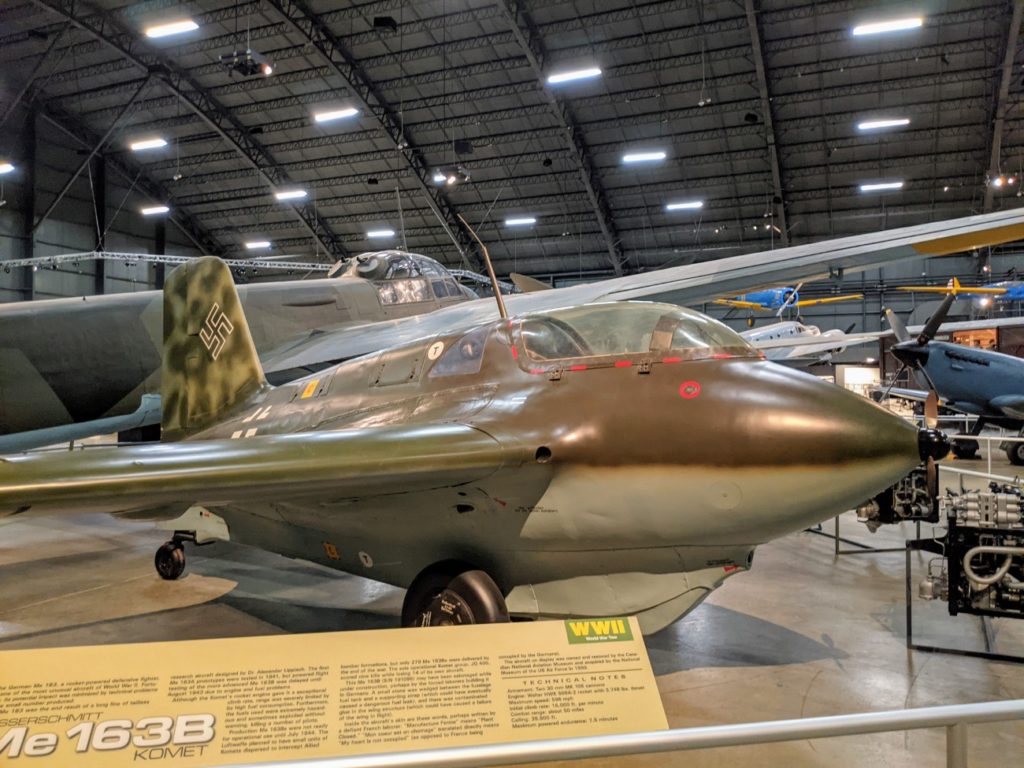
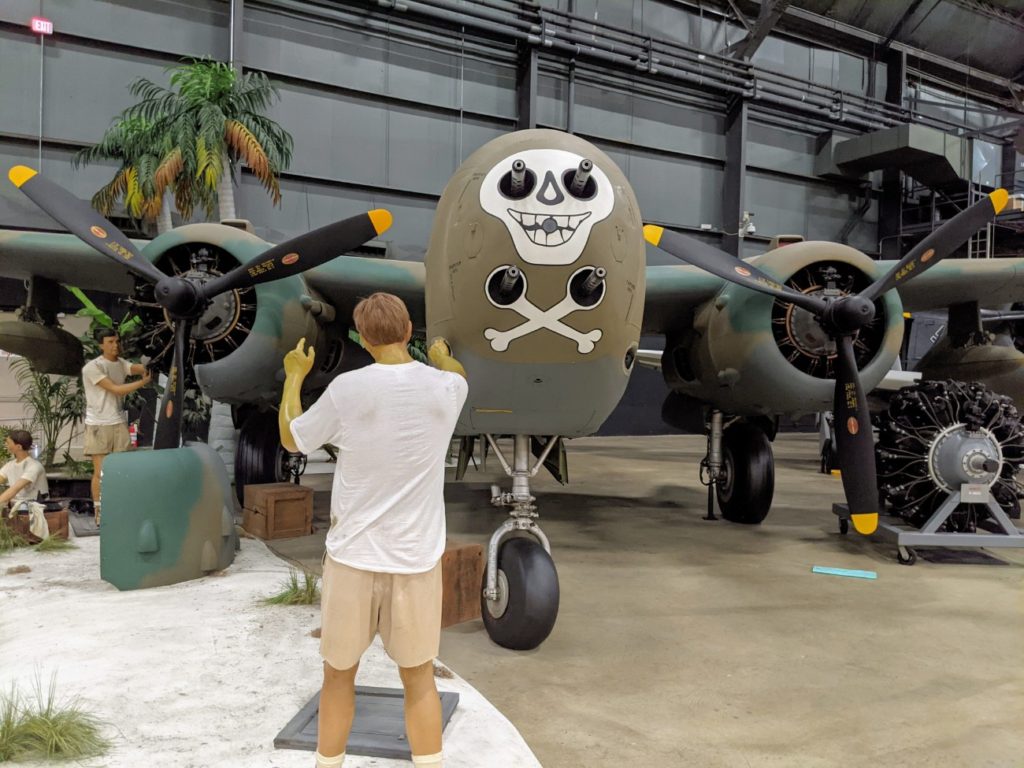
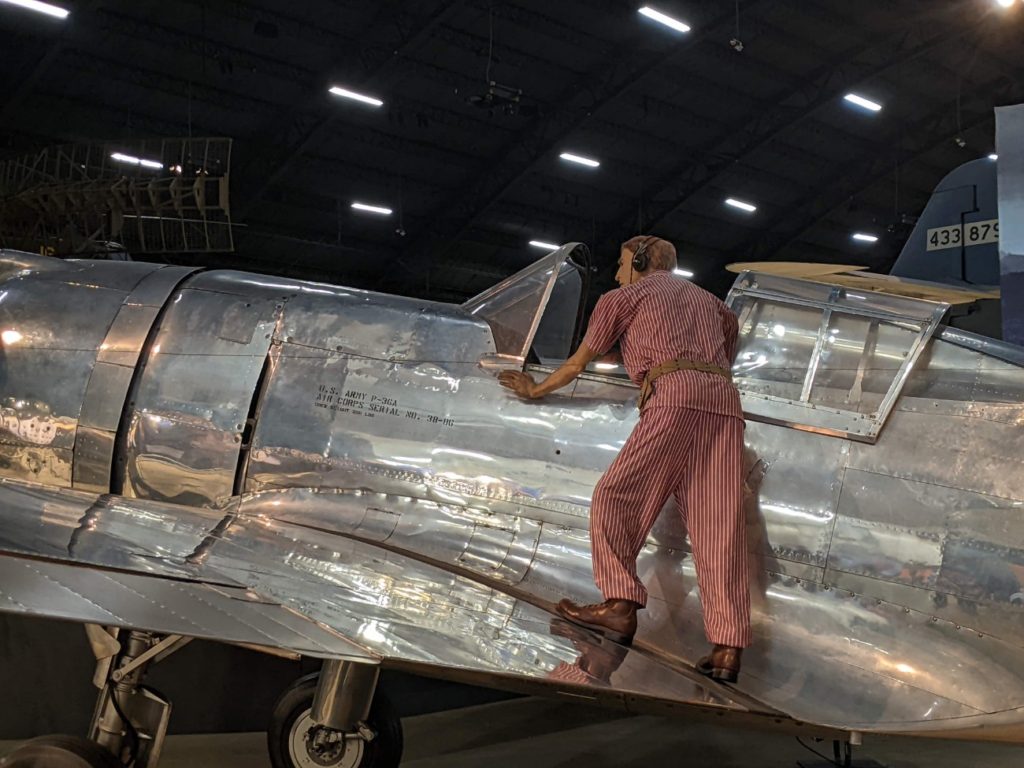
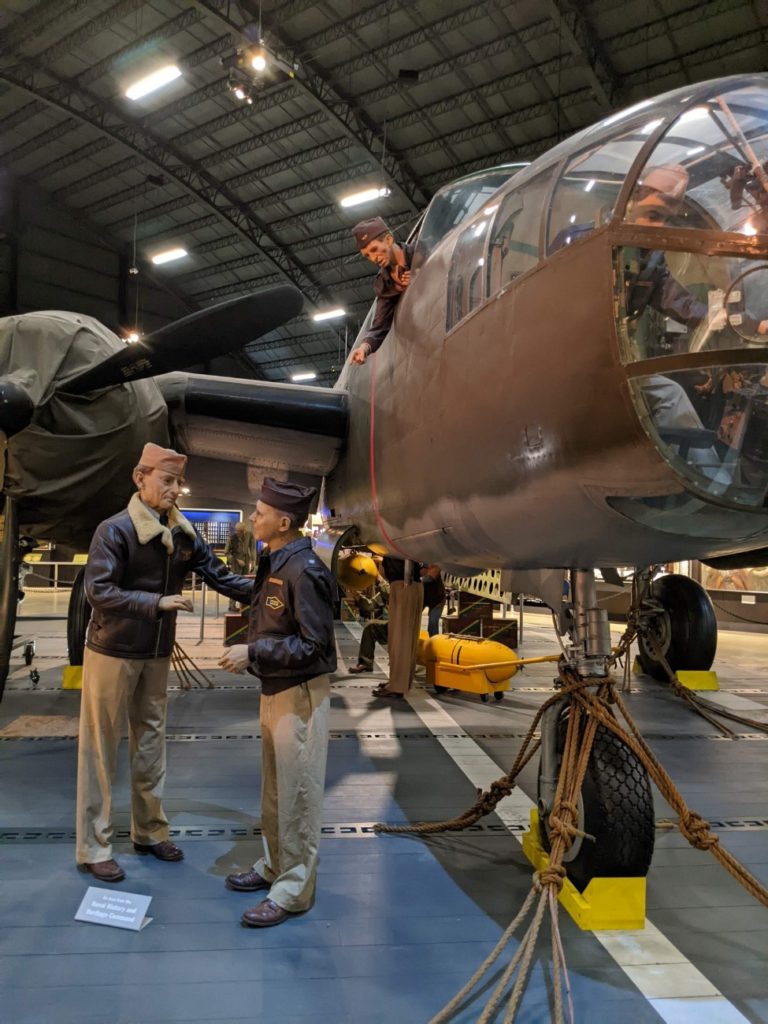
As you get to the exit of this gallery, you see replicas of the Fat Man and Little Boy atomic bombs and the original Bockscar plane that dropped Fat Man over Nagasaki. It’s about here that it starts to sink in that these beautiful machines are ultimately weapons of war and destruction. It can be – and is meant to be – pretty sobering.
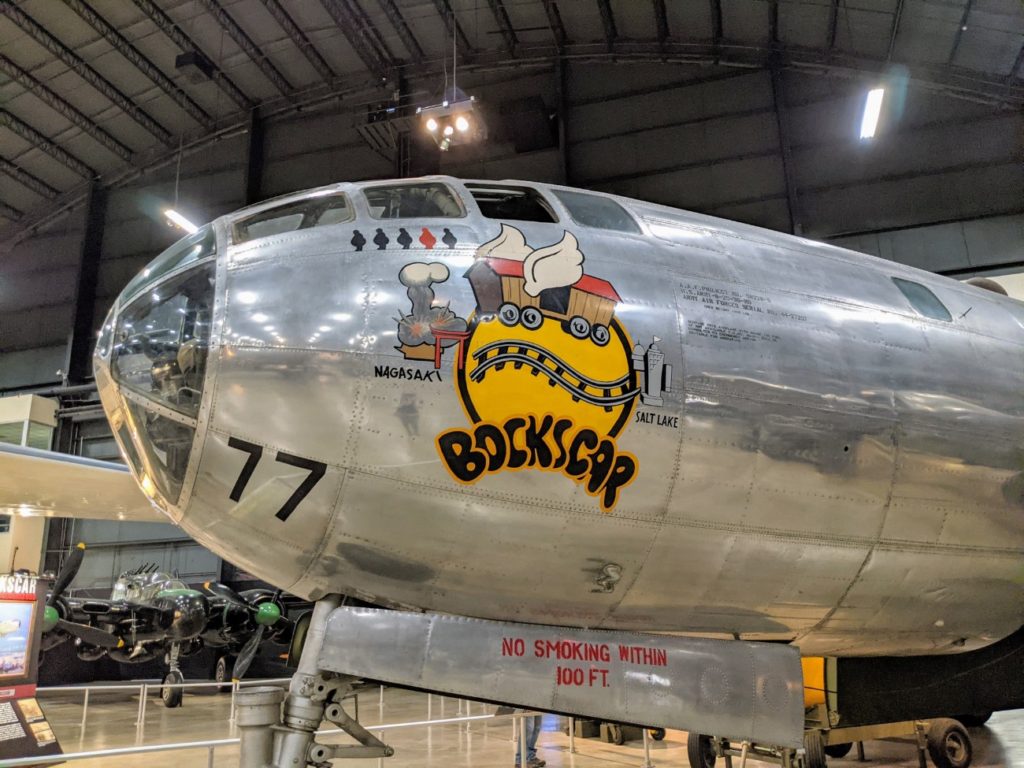
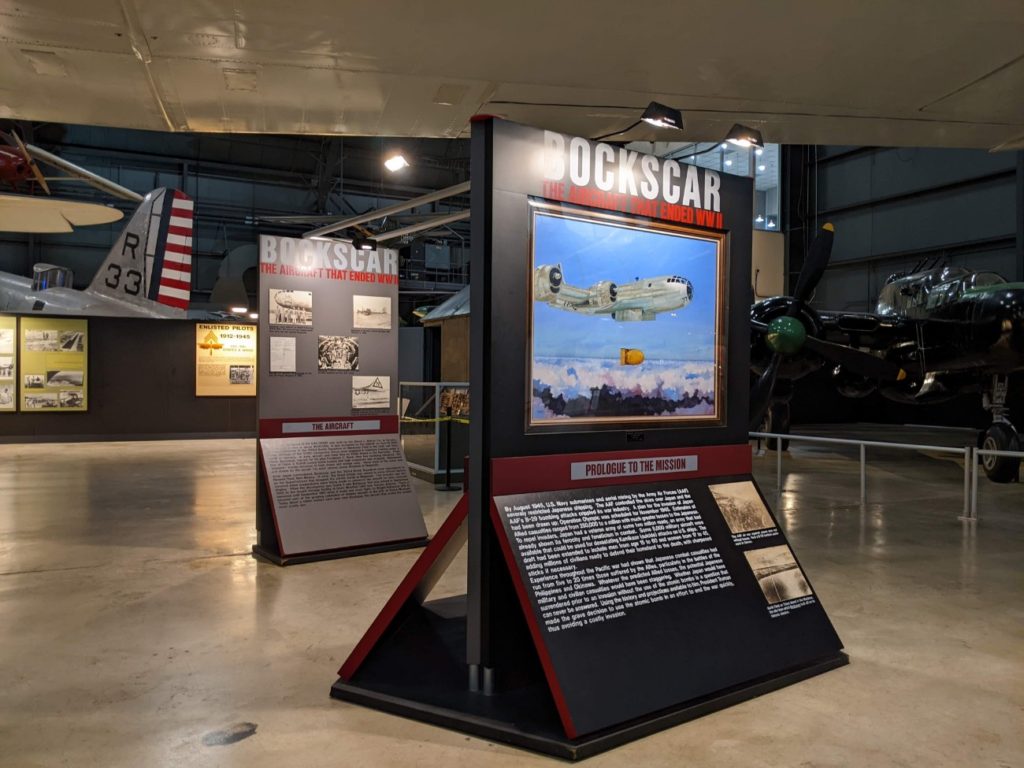
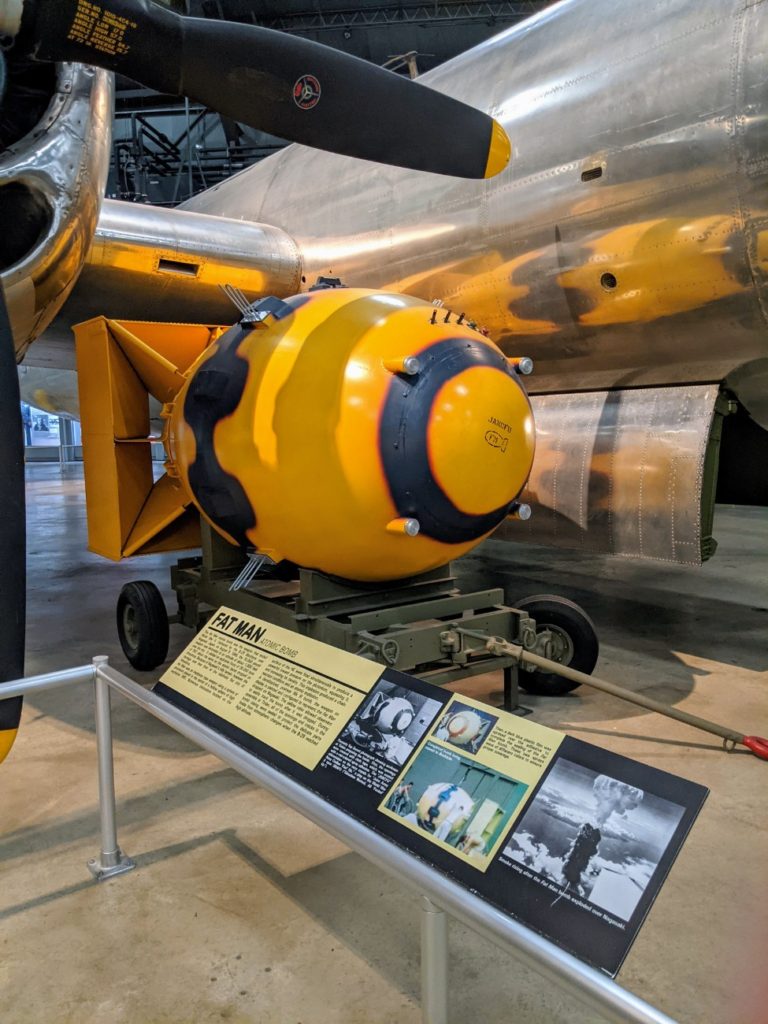
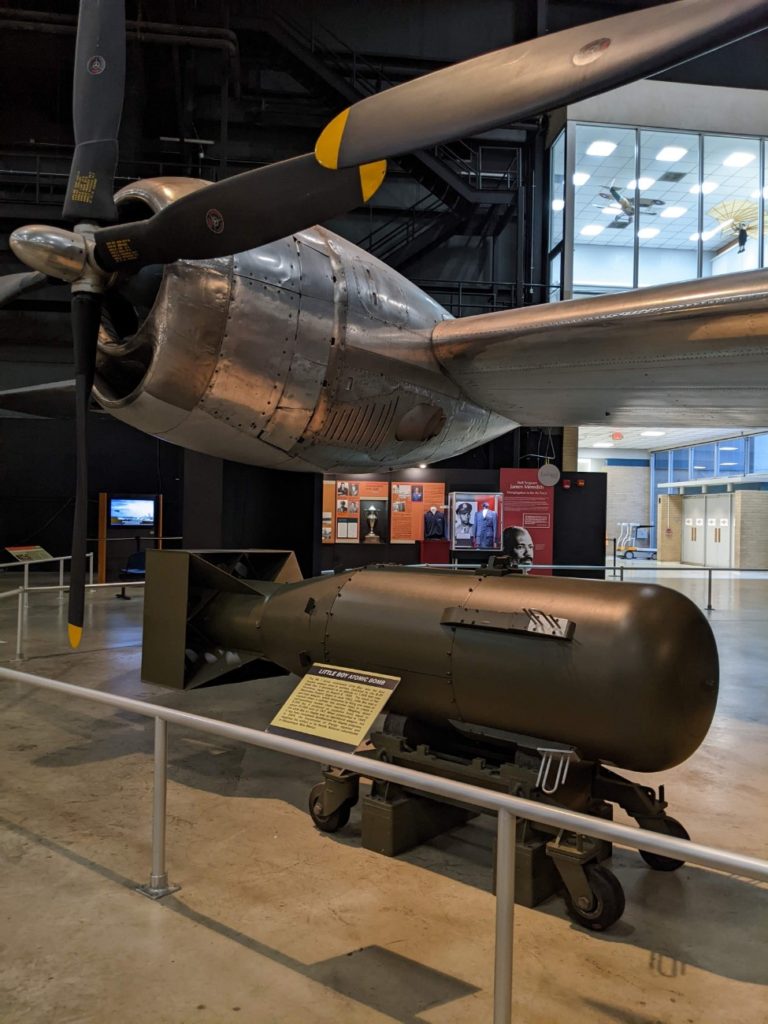
National Aviation Hall of Fame
On your way down a long hall between hangars one and two is a room containing the National Aviation Hall of Fame. Don’t let the boring name fool you – it’s a fun room to check out. Along one wall is a huge aviation timeline and the “hall of fame” part is mostly in the back.
The fun stuff includes a spacesuit you can climb into for a picture, a mock-up of an air control tower, and a funny display on the first jet tests – the “X-Jet” or “flying pulpit.” There’s a help desk here if you have questions or are looking for a particular name on the wall. (They’ll also take your picture in the spacesuit if you want!)
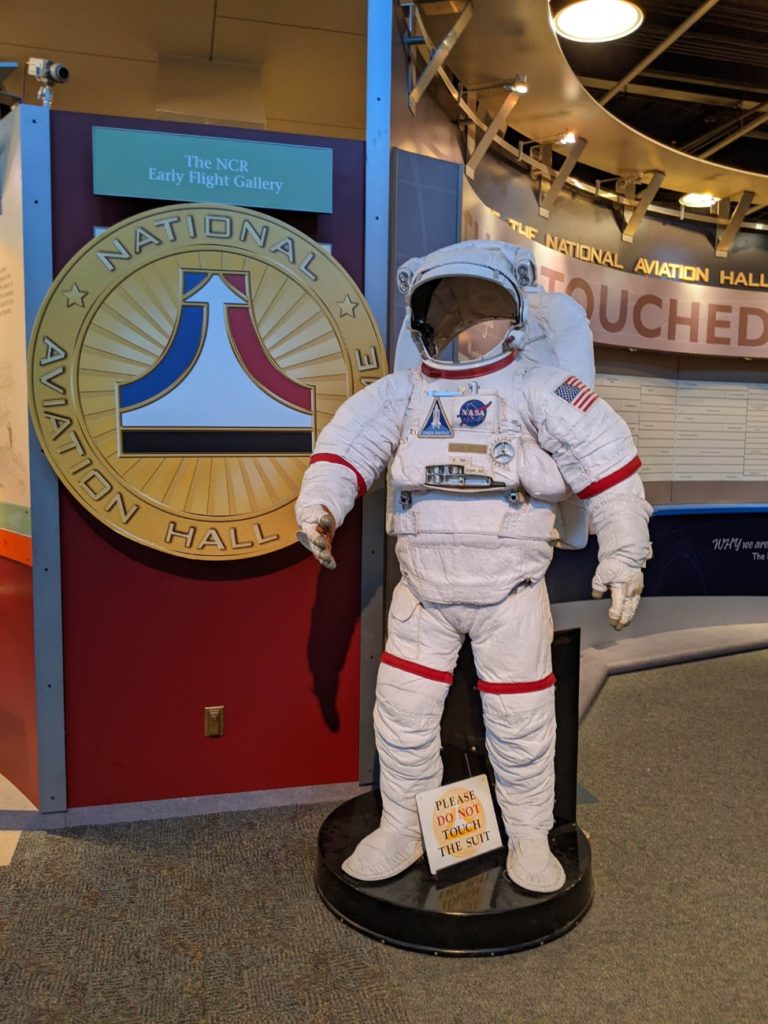
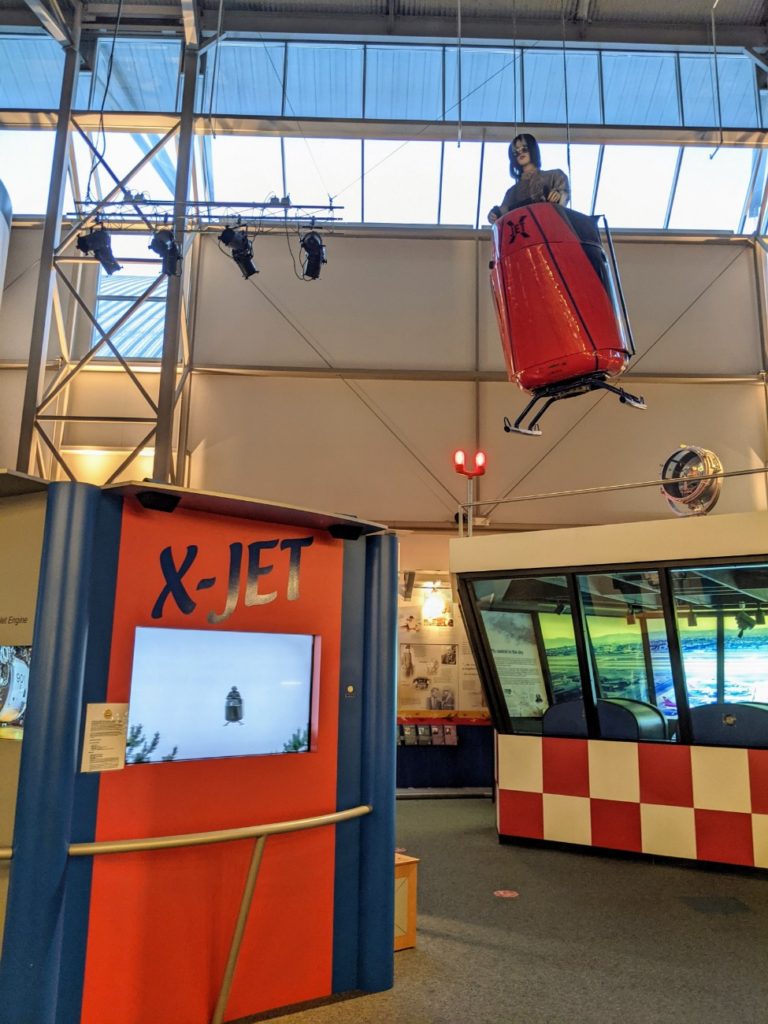
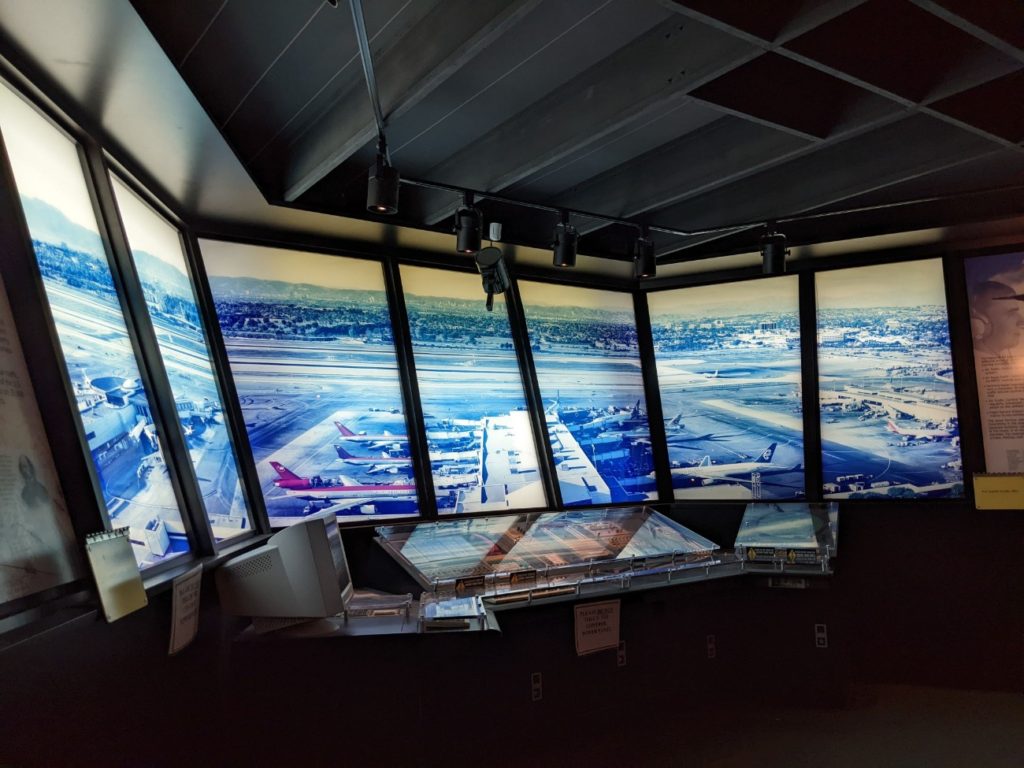
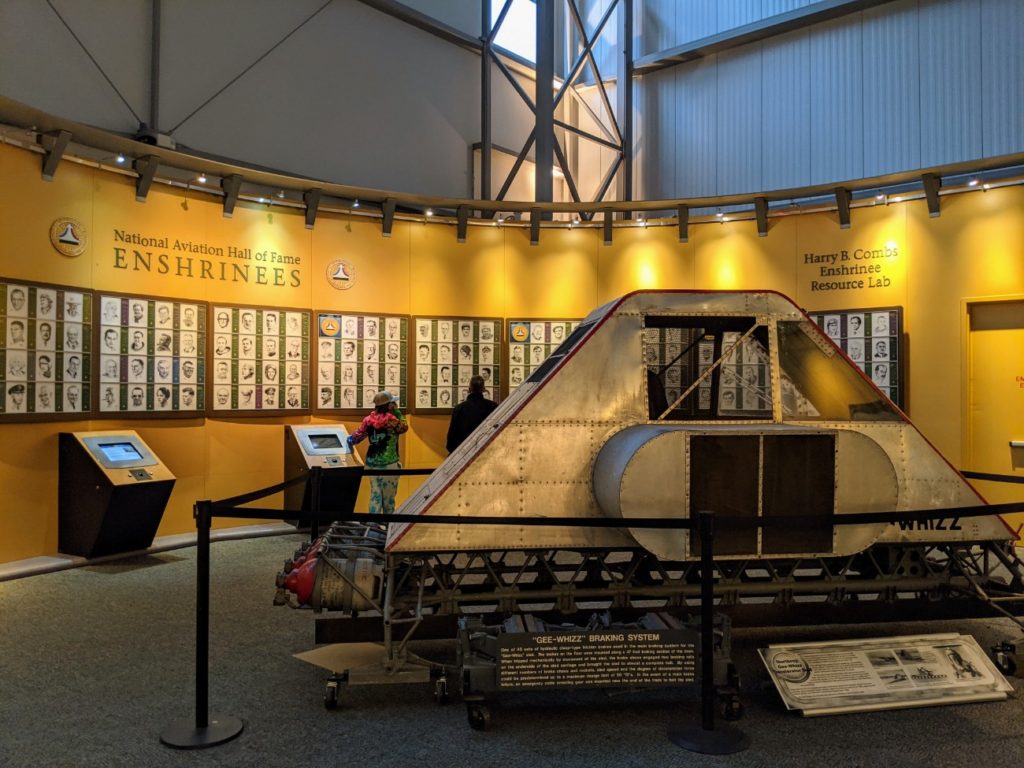
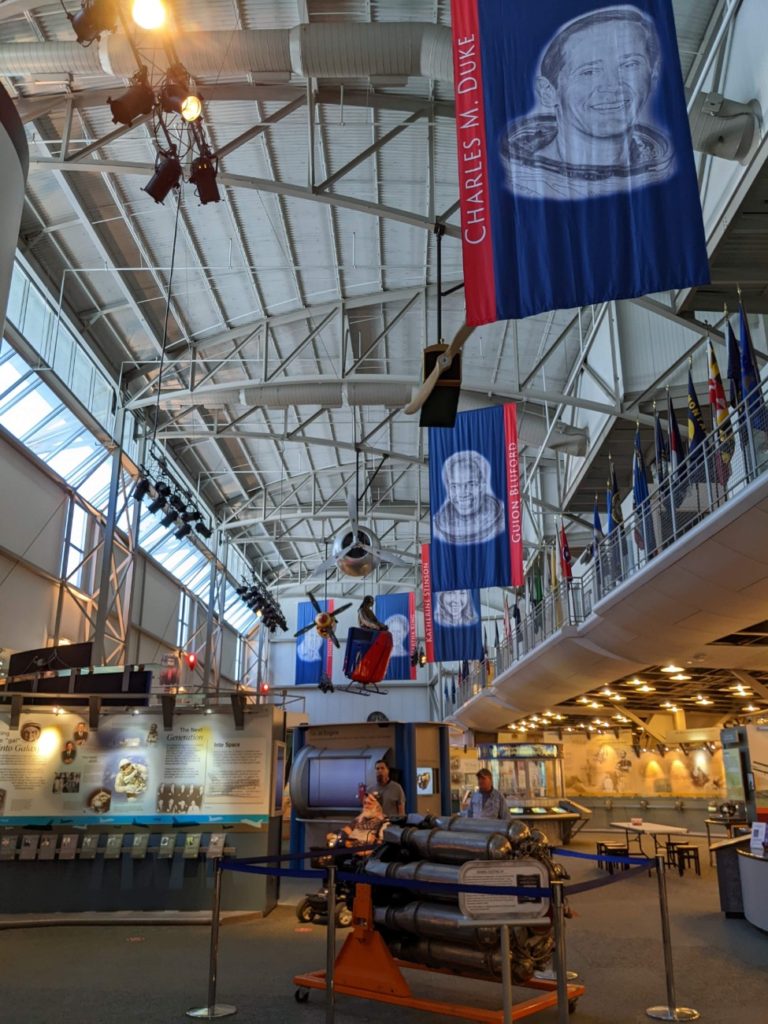
Korean War & Southeast Asian War Galleries
Next, the second hangar contains the Korean War Gallery on one side and the Southeast Asia War Gallery on the other. I combine them under one heading because I’m pretty sure I’ve got all these pictures mixed up and wouldn’t be able to separate them. It’s all so interesting, but it does run together after a while!
The Southeast Asia War refers to the Vietnam war as well as supporting campaigns in Cambodia and Laos. You see touch-and-go helicopter drop-offs, slicker fighter jets, and huge cargo planes. There are also sections celebrating women in the air force in this hangar, and a sobering corner about prisoners of war on one wall. Several displays focus on search & rescue technology. Incongruously, a restored Wright B Flyer hangs above the exit to hangar three.
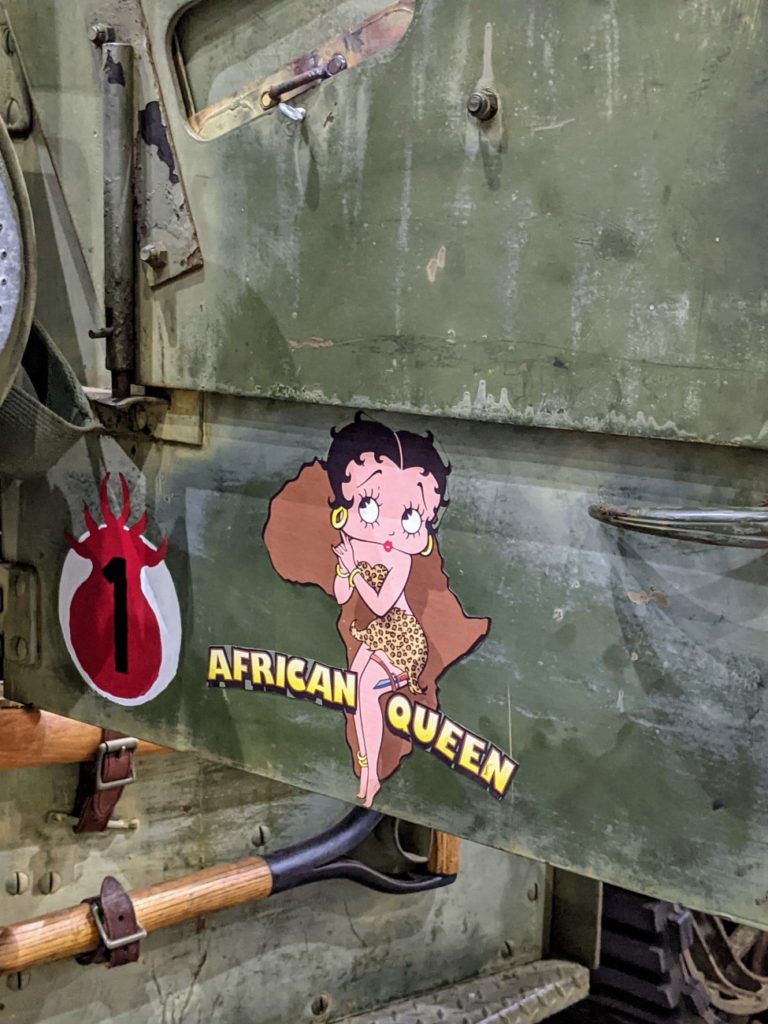
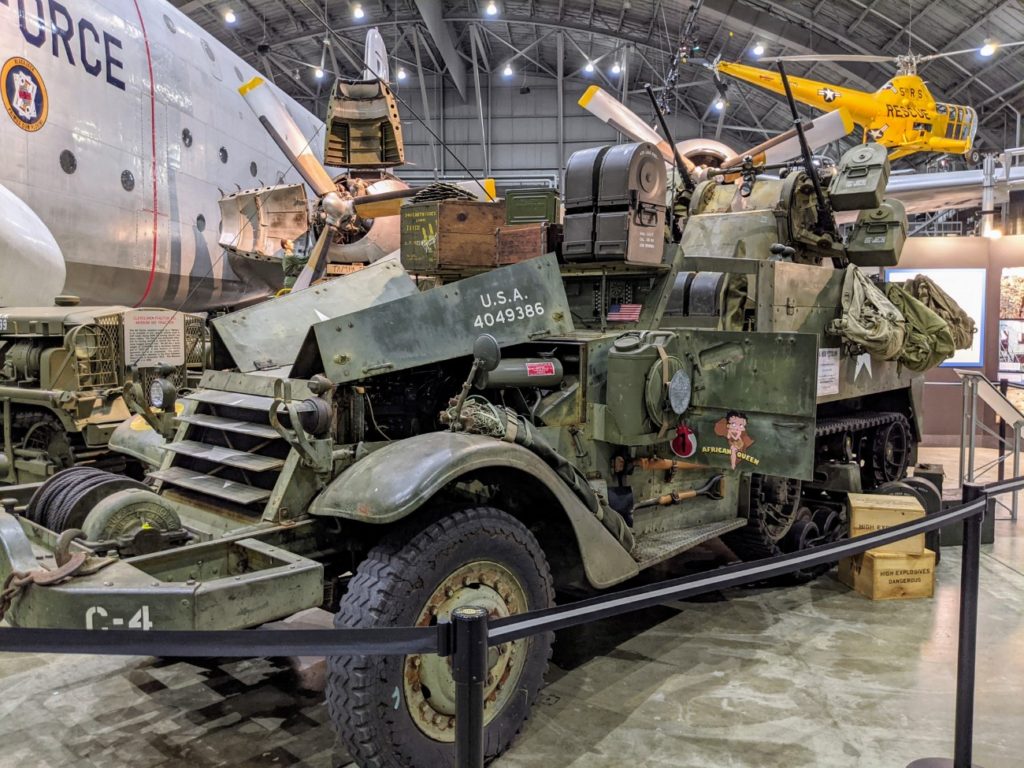
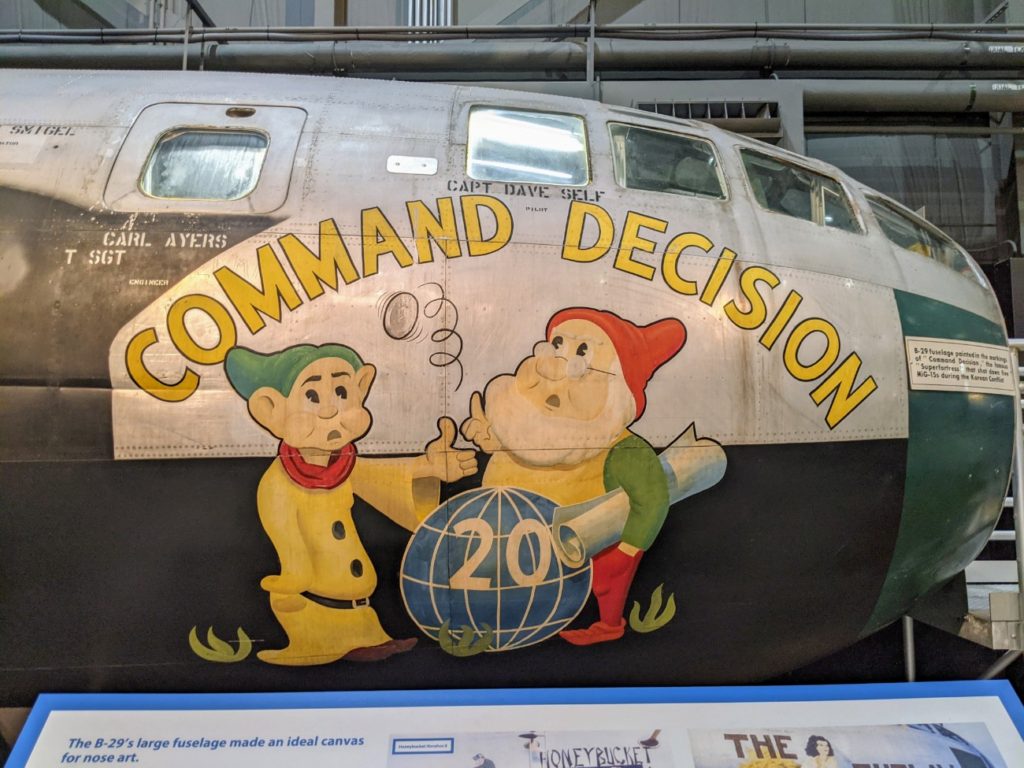
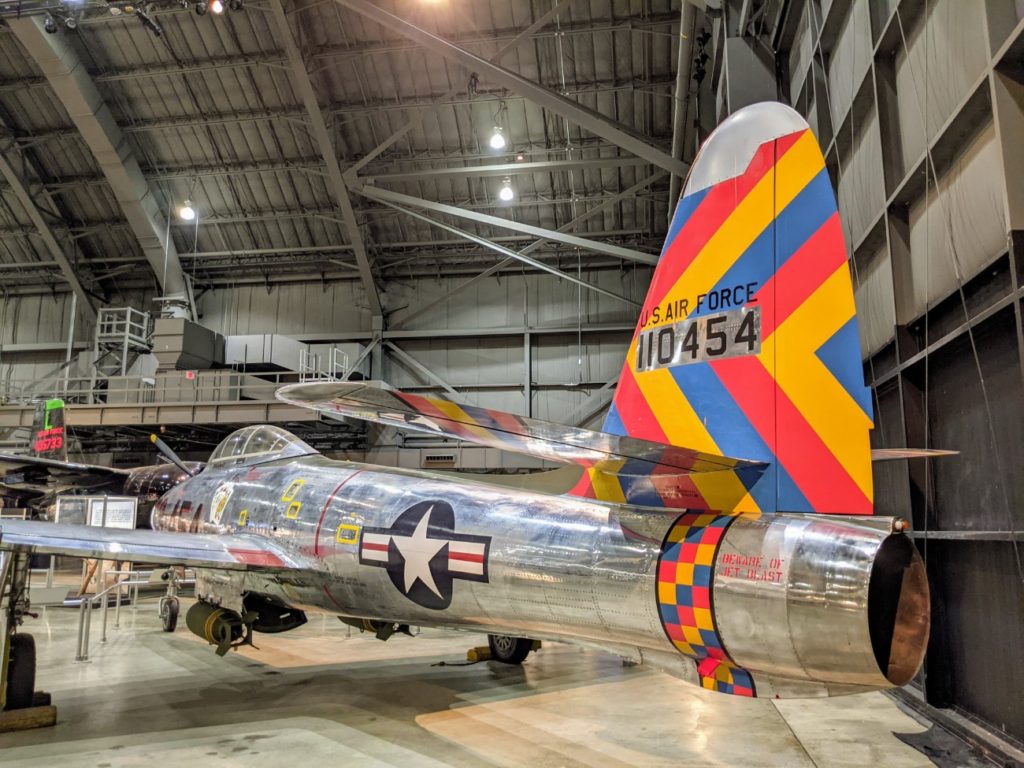
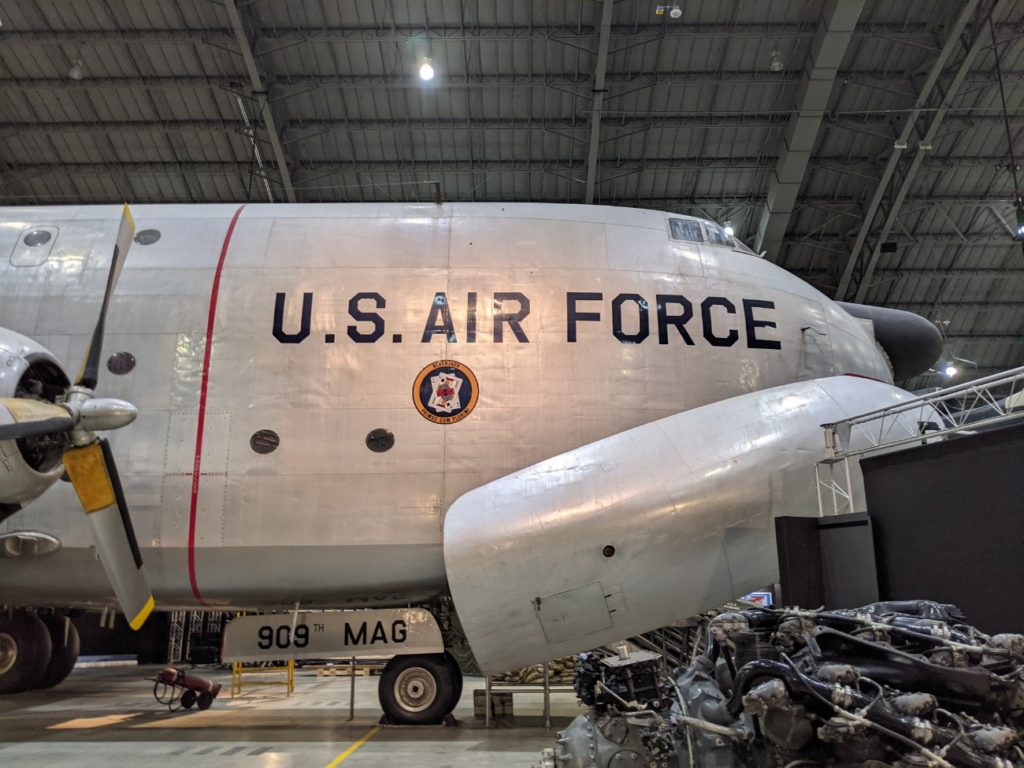
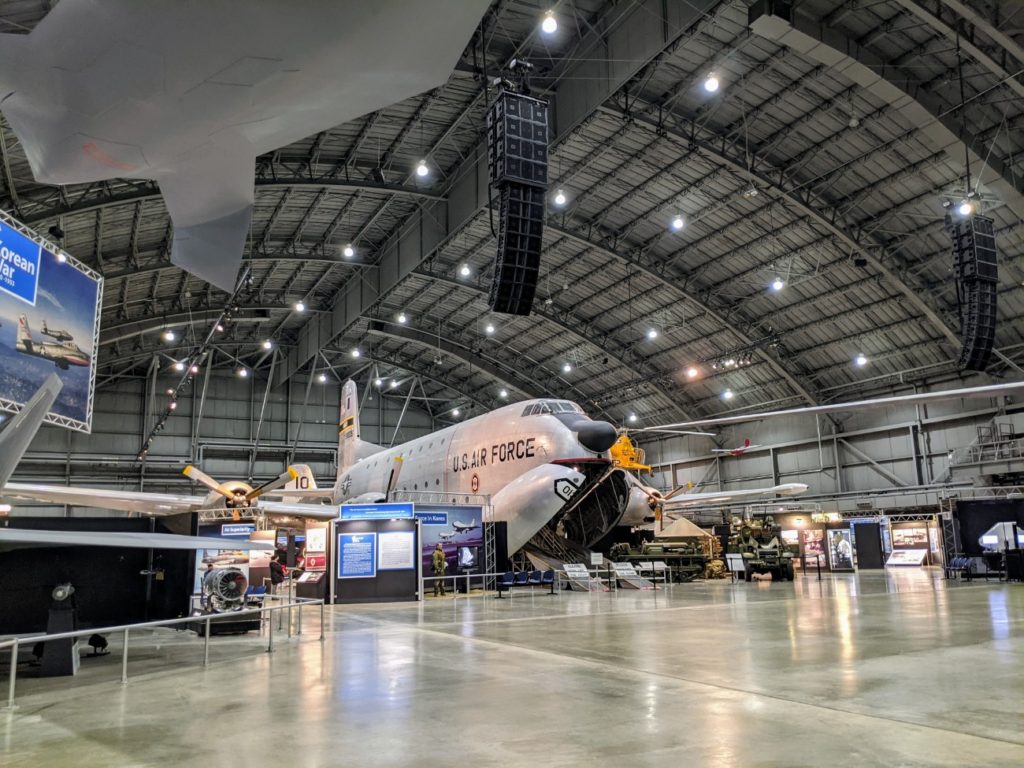
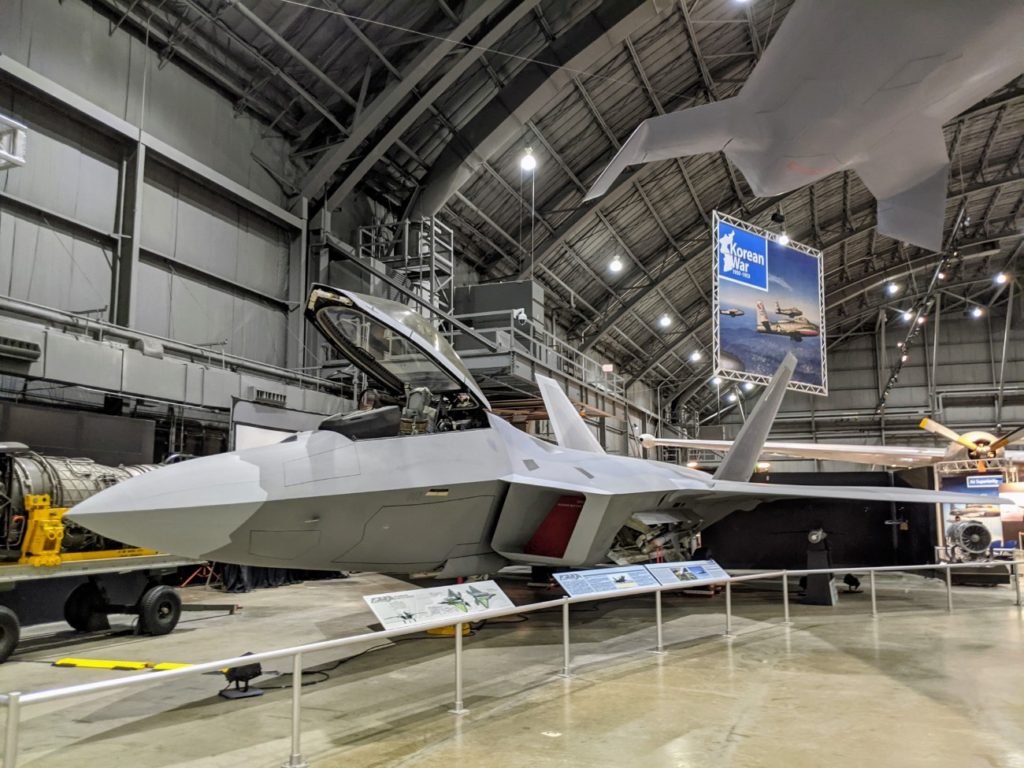
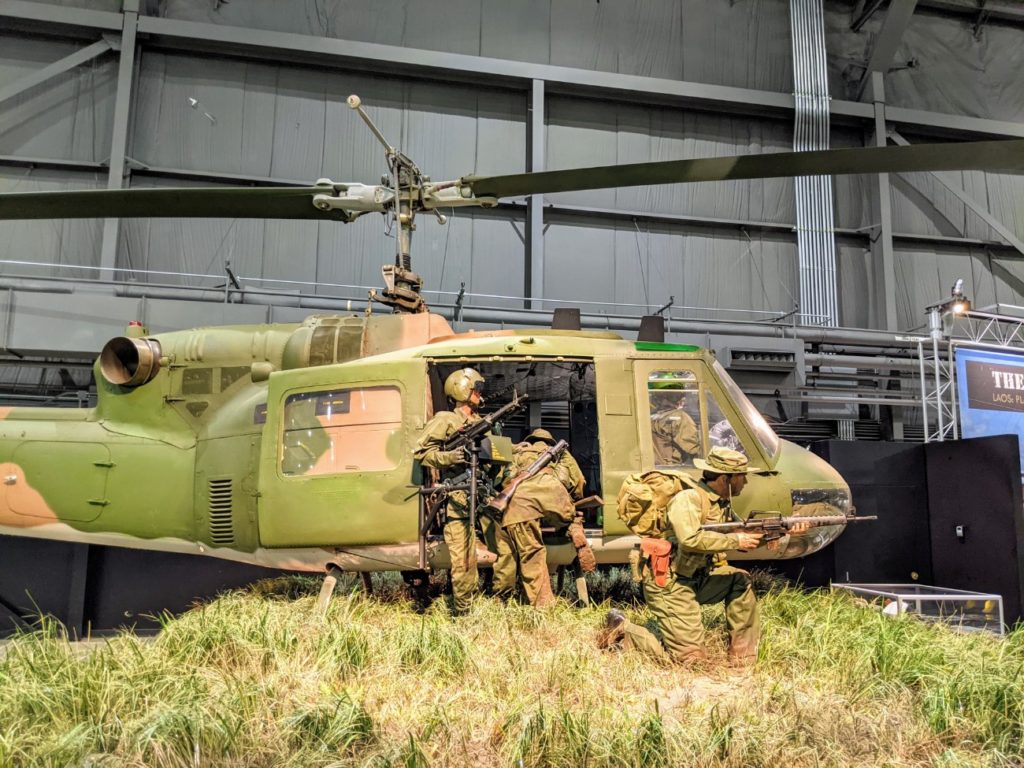
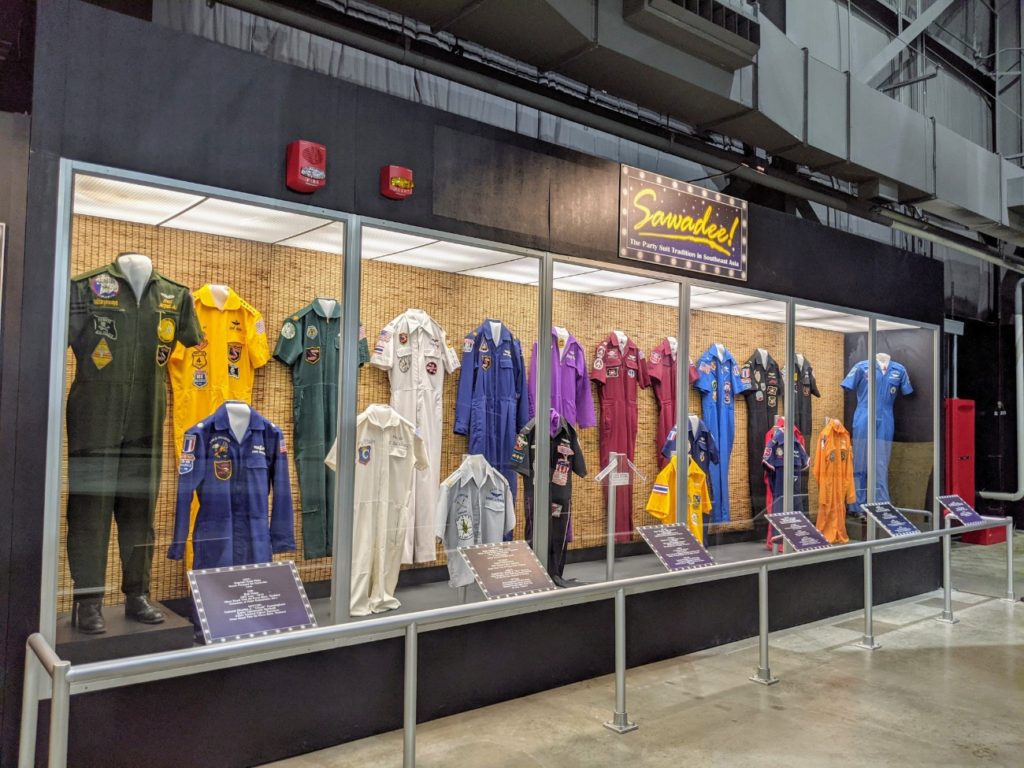
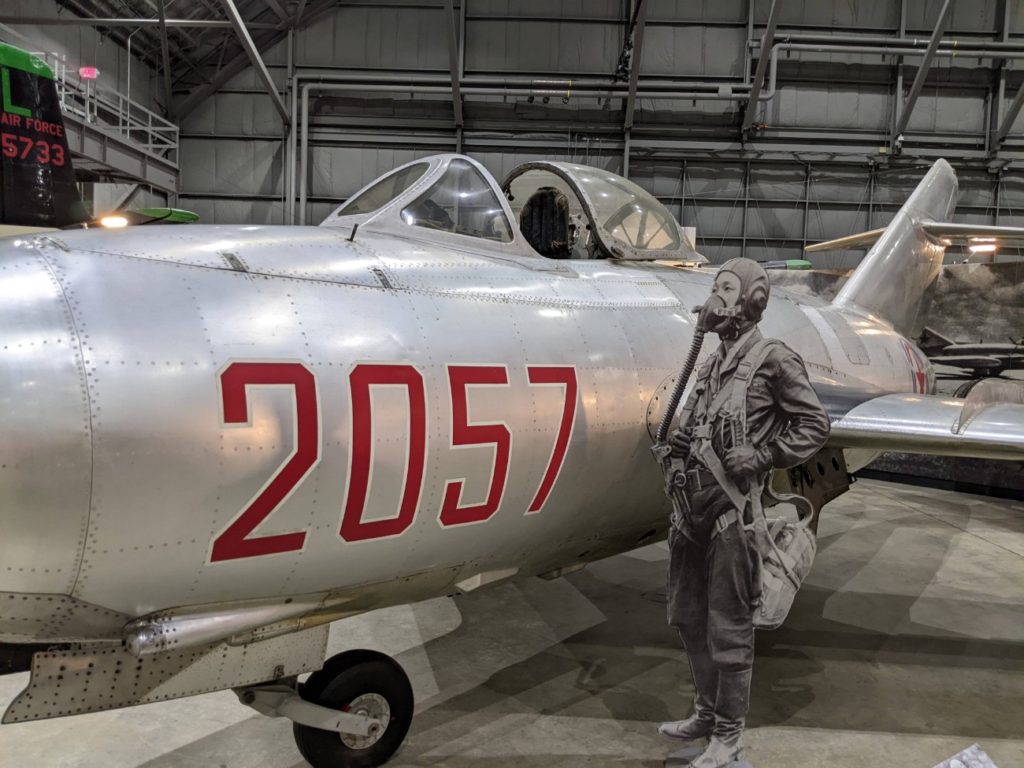
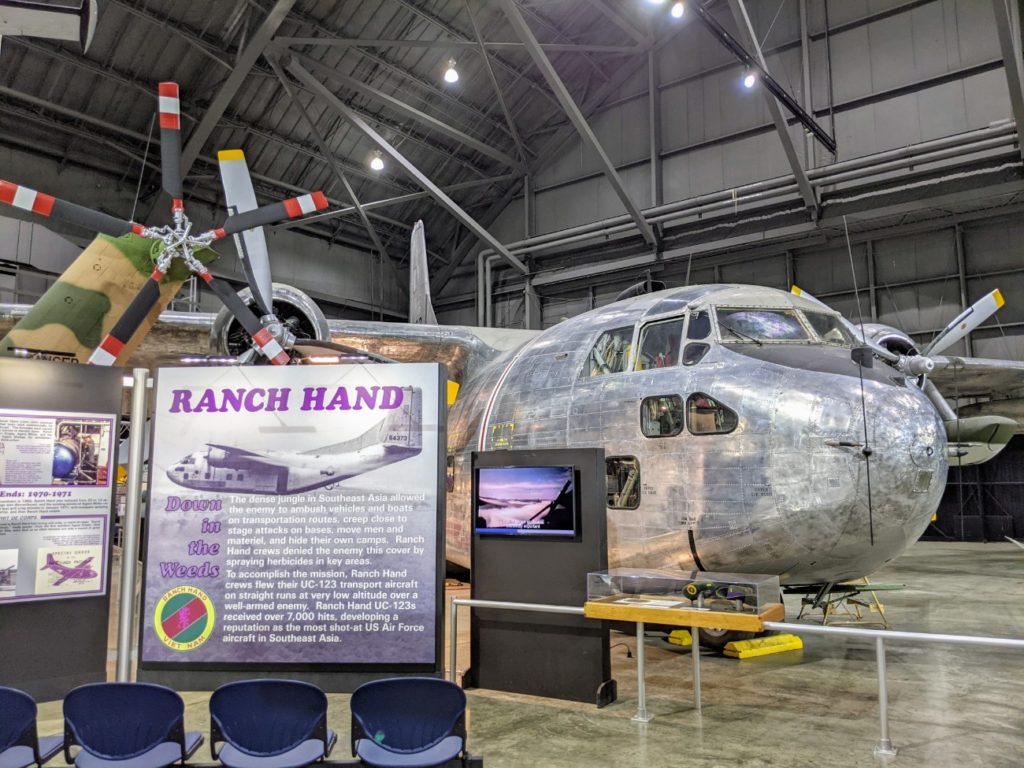
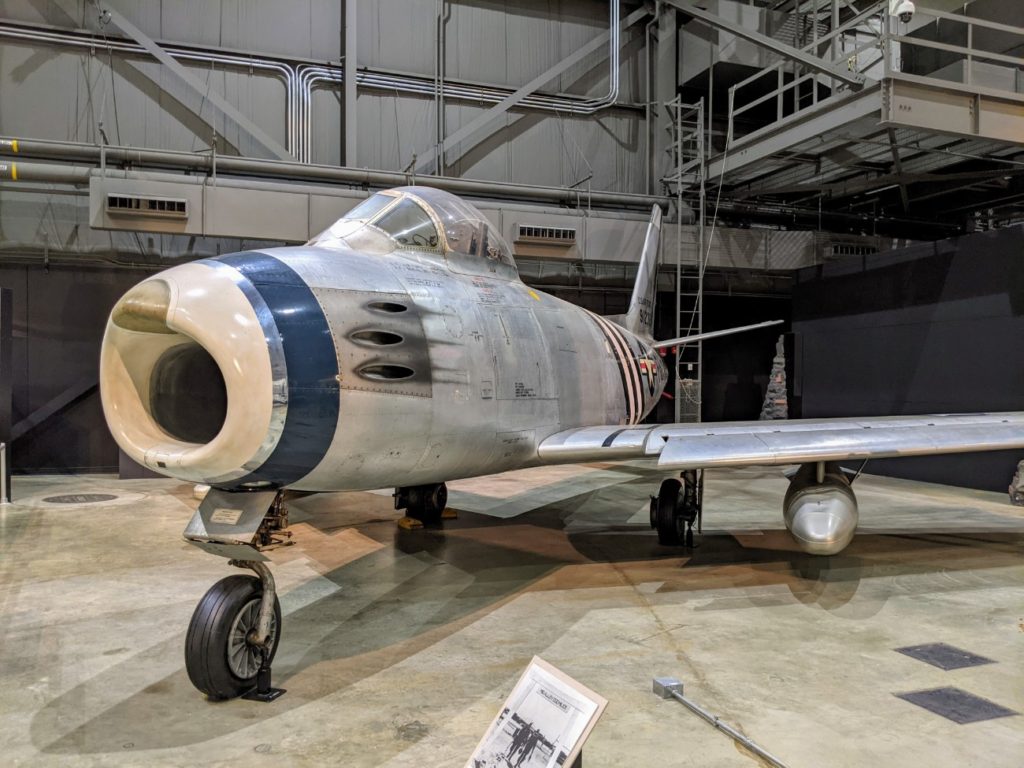
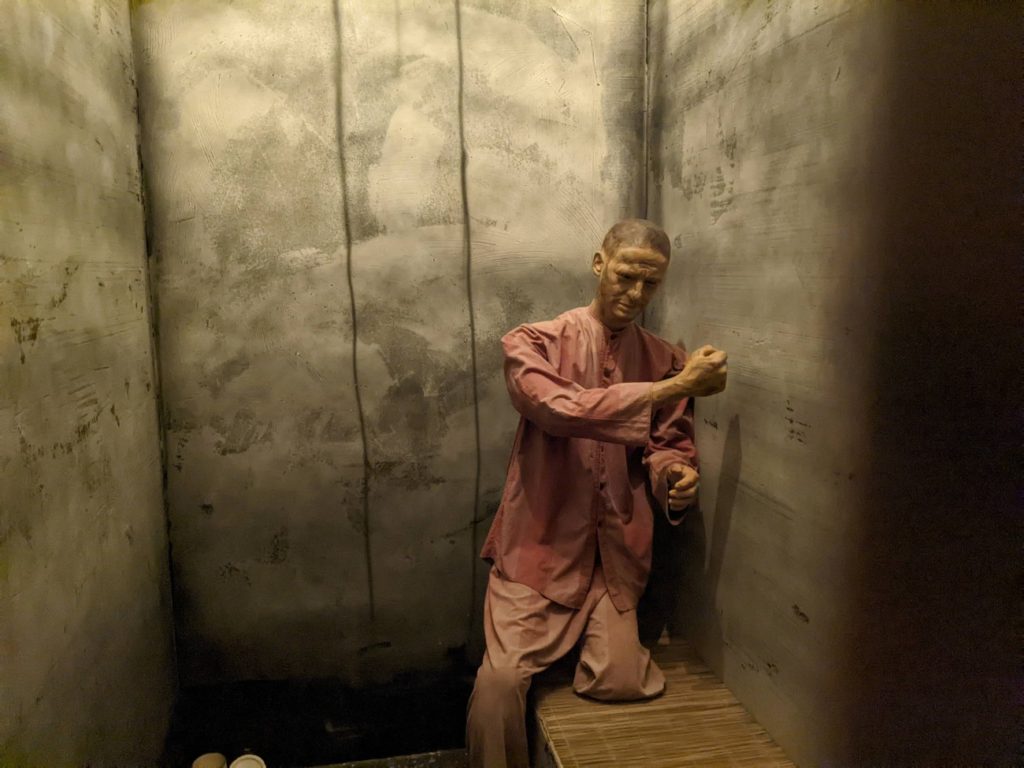
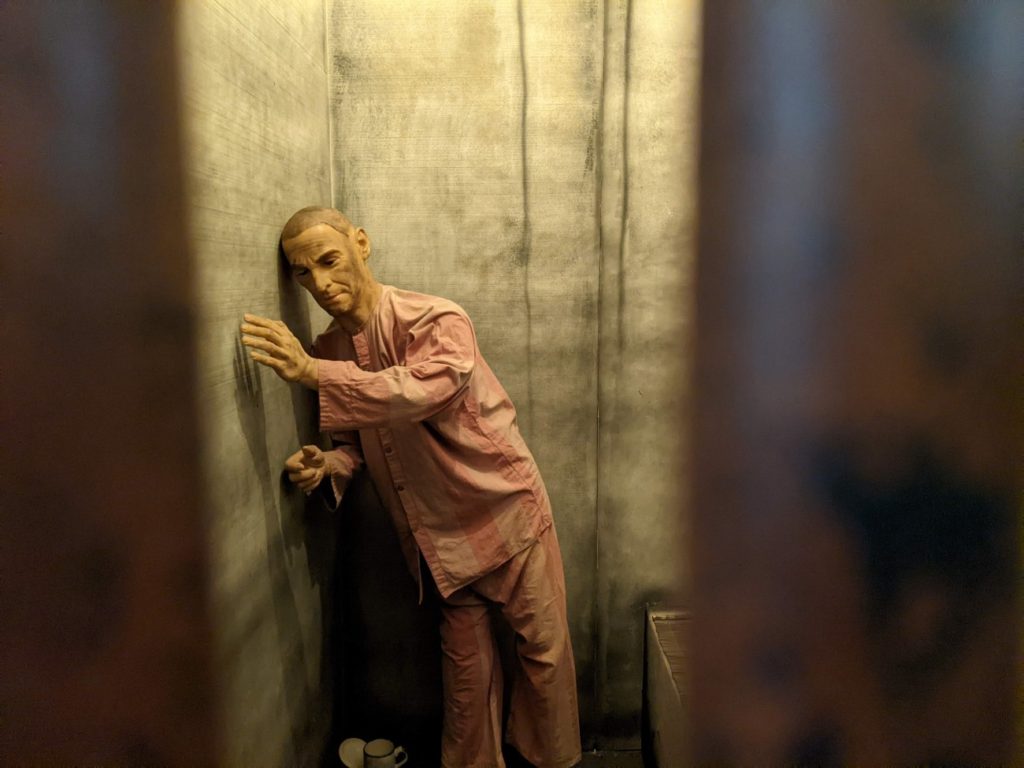
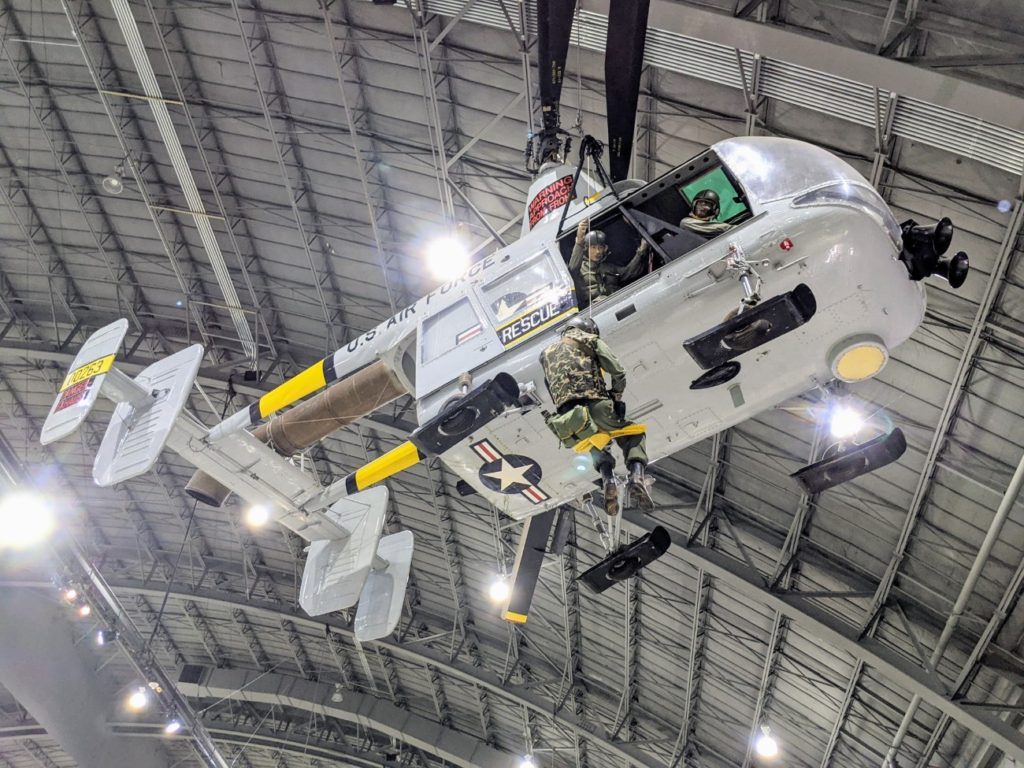
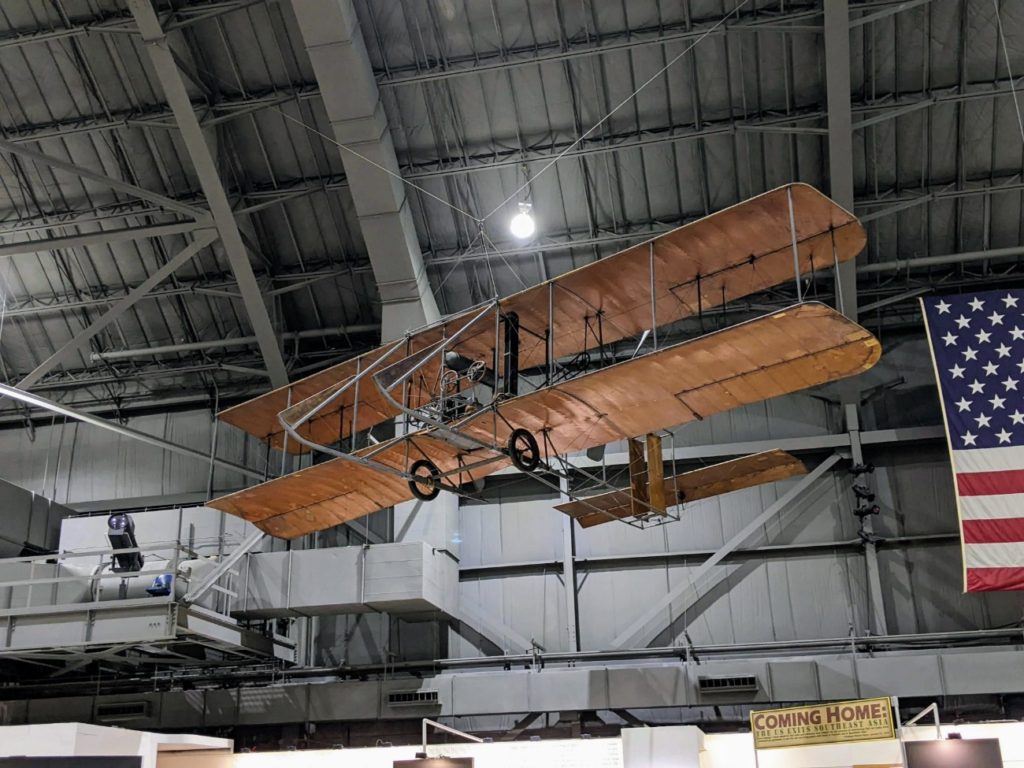
Also in this hangar are all the extra-fee simulators. You can pay $10 per person and try one of three simulator rides. There’s a four-person virtual reality bench, a motion simulator ride that holds 12 people – like a very small Star Tours – and several two-person fighter jet simulators. Those look fun. I saw them running for a school group and it looks like they rotate completely upside down! You can purchase rides at a desk here or in the entrance hall when you first come in.
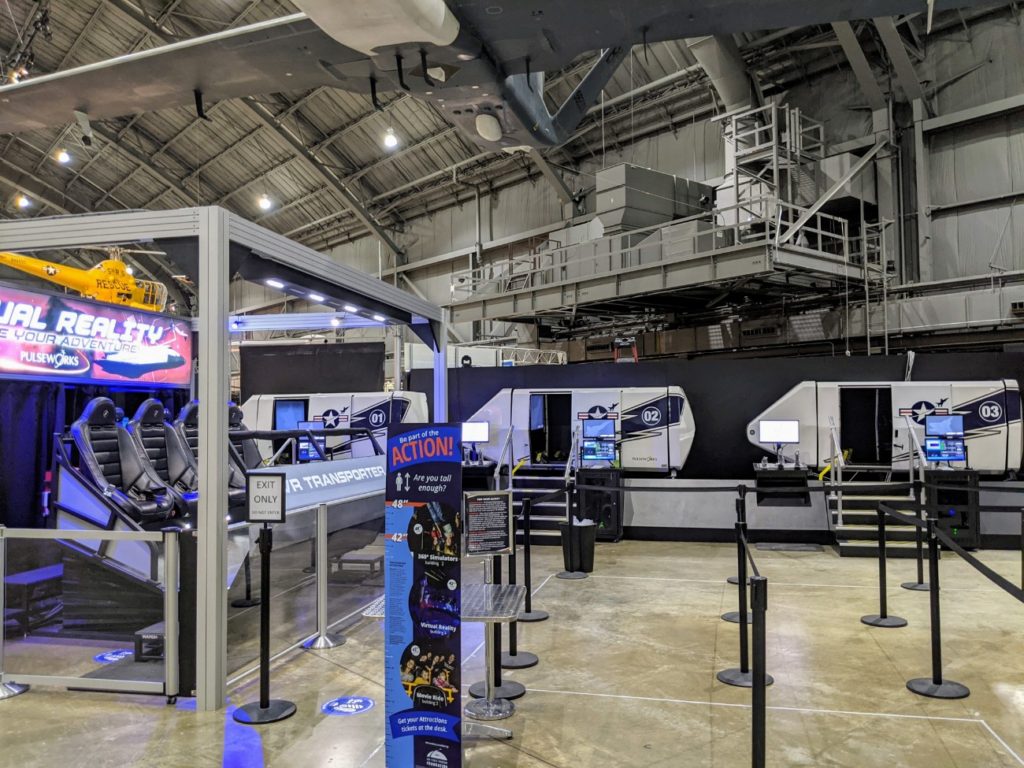
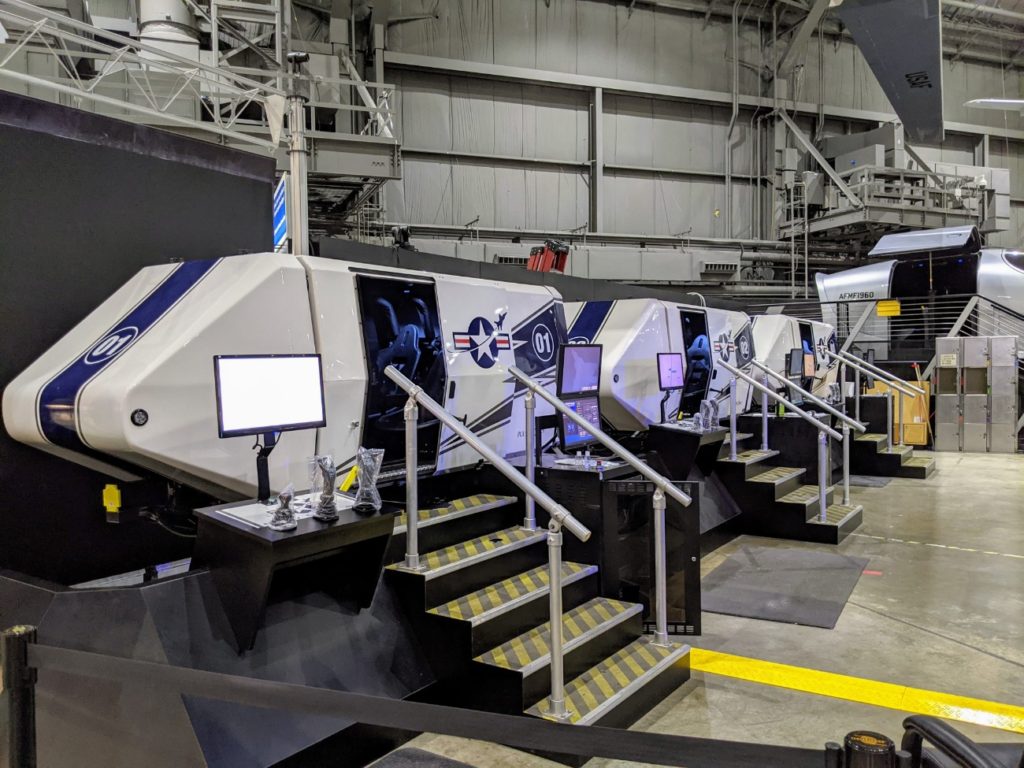
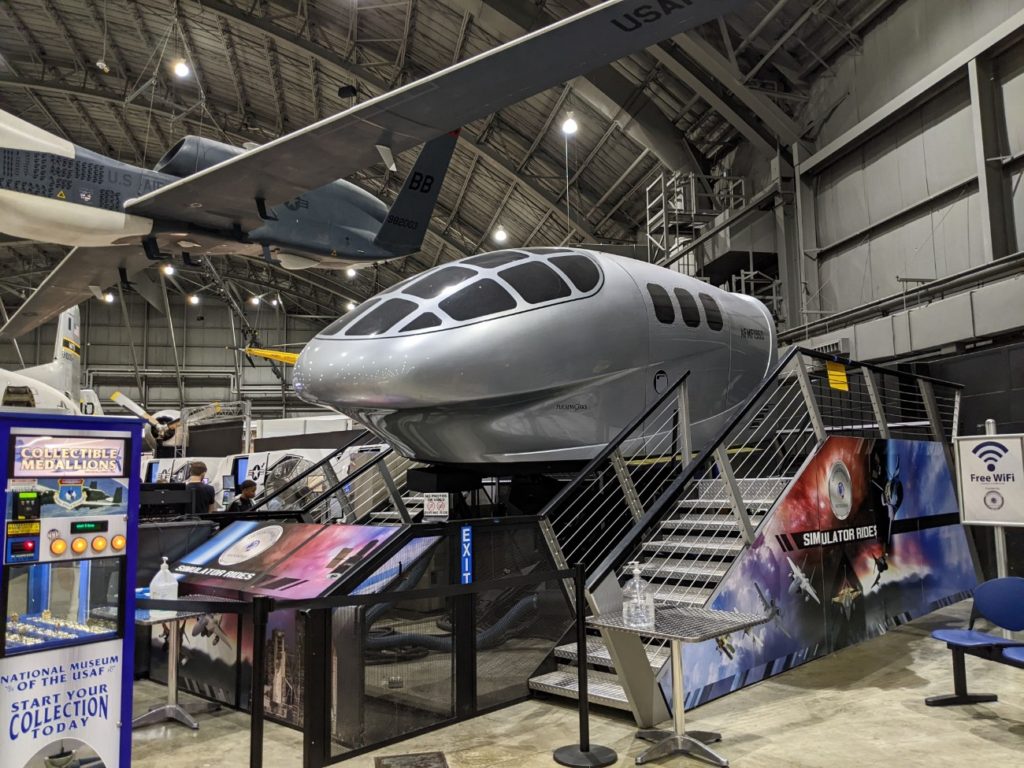
Berlin Airlift Hallway
Between hangars two and three is a hallway display about a humanitarian crisis in Berlin between 1948-1949. Soviet forces had blockaded the Allied areas of Berlin so a massive effort was engaged to airlift supplies.
There are a lot of fun stories in here if you take the guided tour. Make sure to count the rats around the entrance sign. There are something like 10-12 hidden in the rubble and they are frequently moved around. I only saw 3-4 so they are well hidden! The opposite wall holds a huge display of model airplanes.
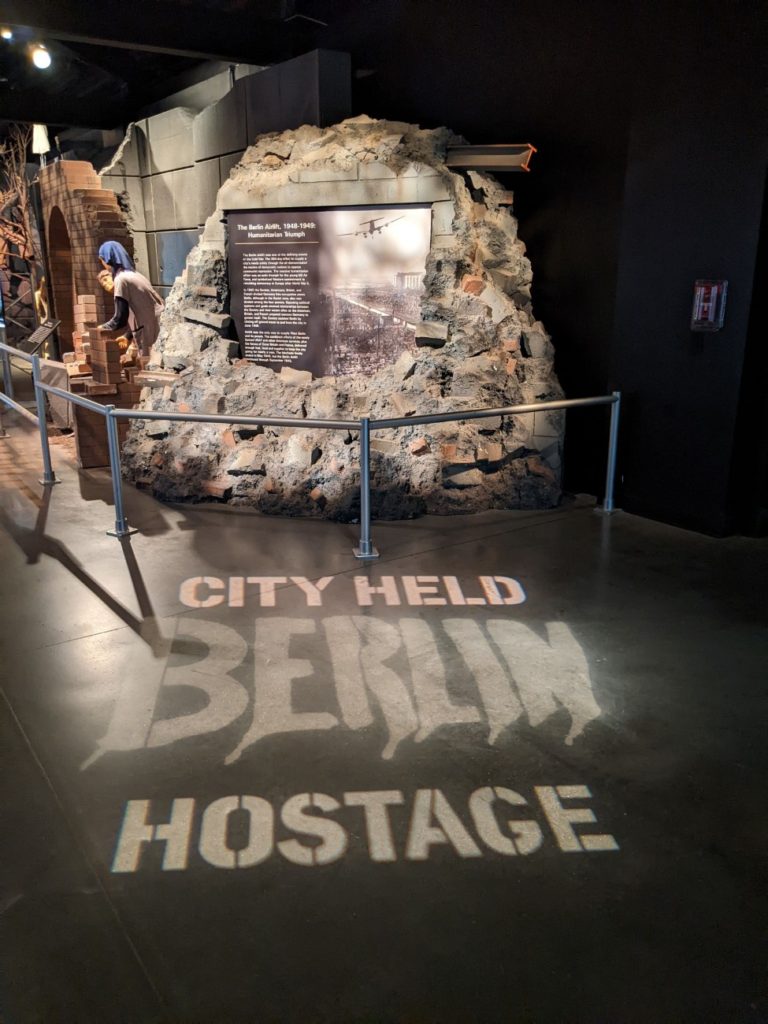
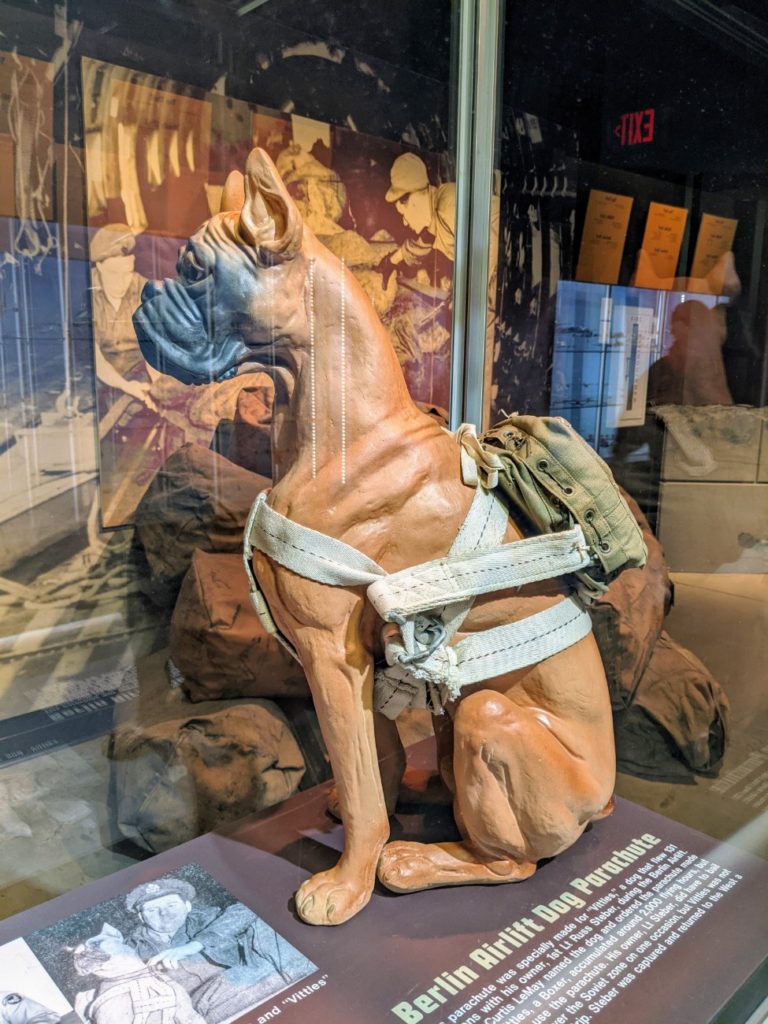
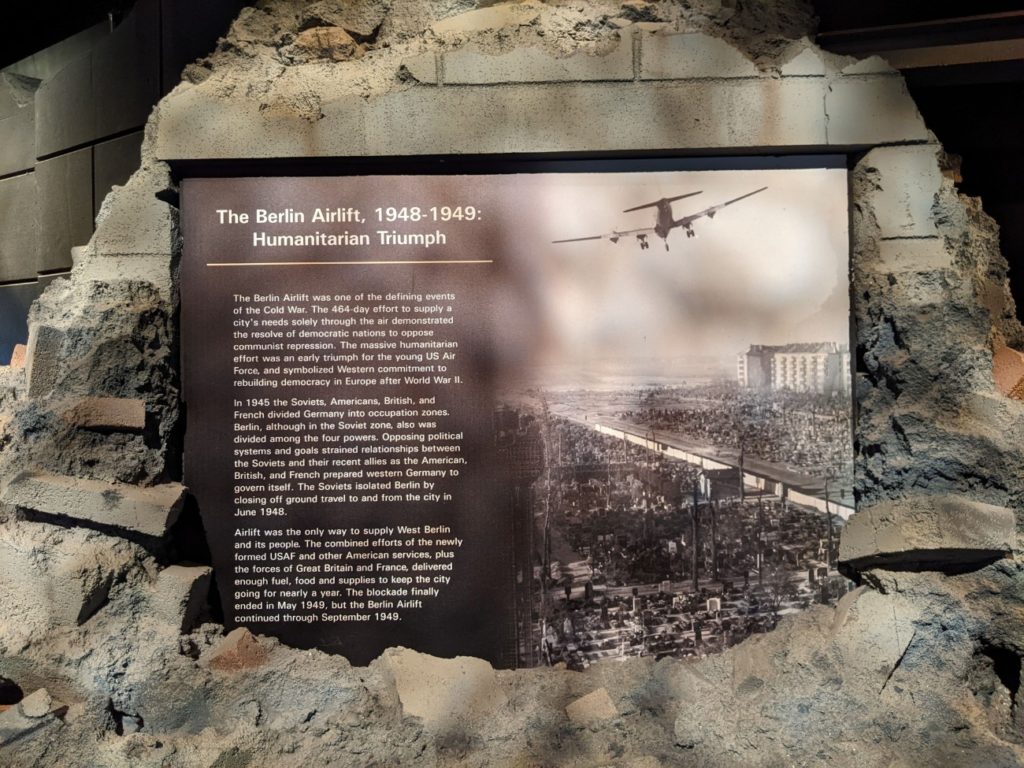
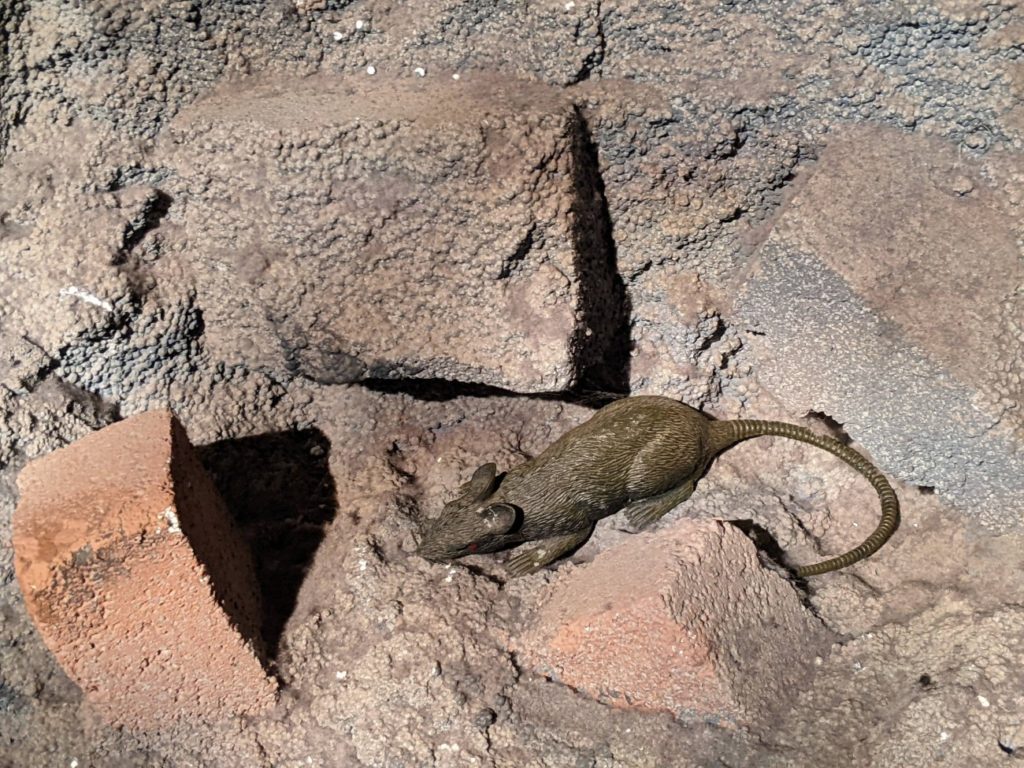

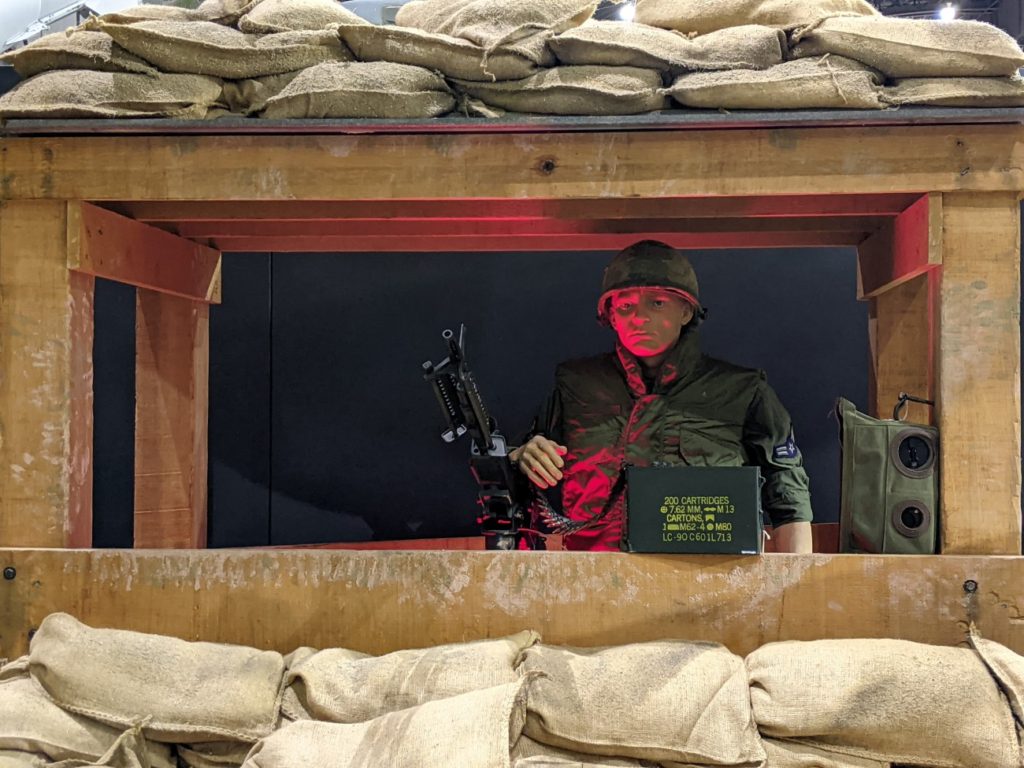
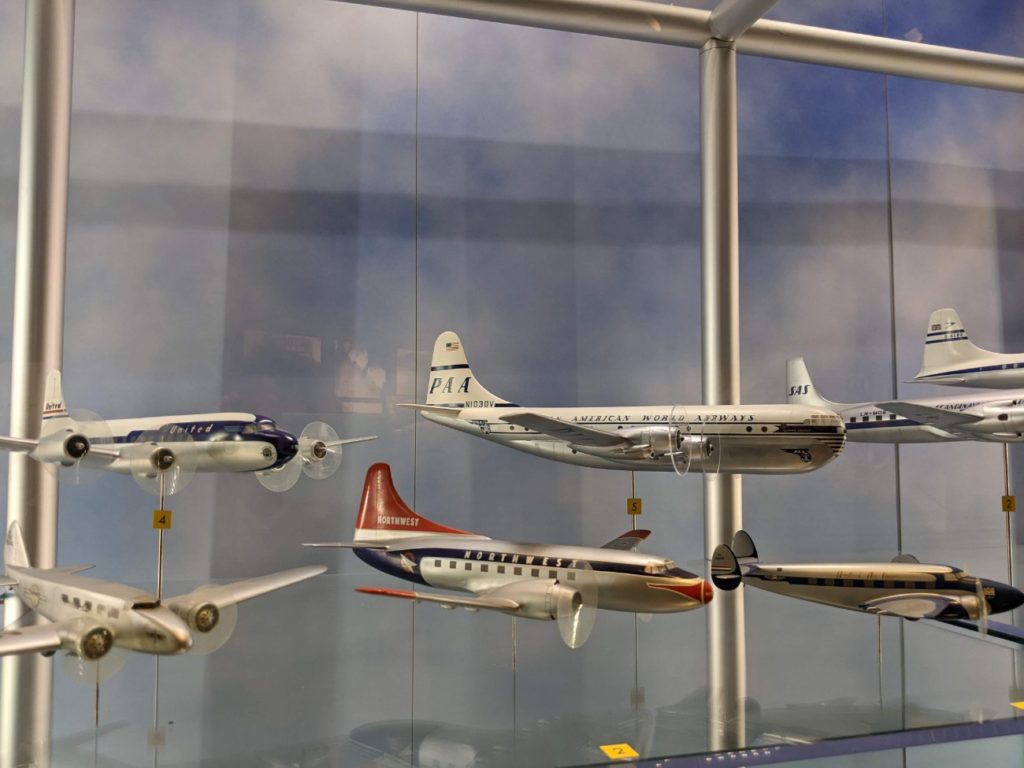
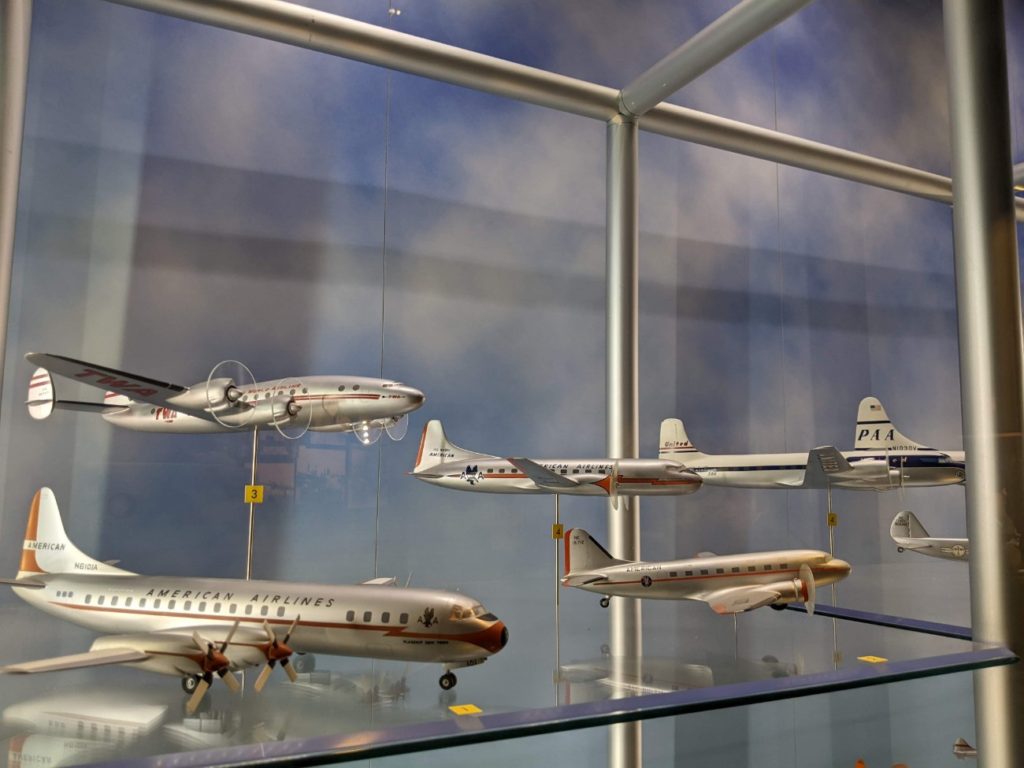
Cold War Gallery
Next in hangar three is the huge Cold War Gallery. This hangar features lots of stealth aircraft, like the huge B-2 bomber and the smaller Nighthawk. There’s a corner about the constant threat of nuclear war between the formerly Allied forces and the Soviet Union. As well as machines from Desert Sheild and Storm. Along one wall is preserved impressive door or nose art from those wars.
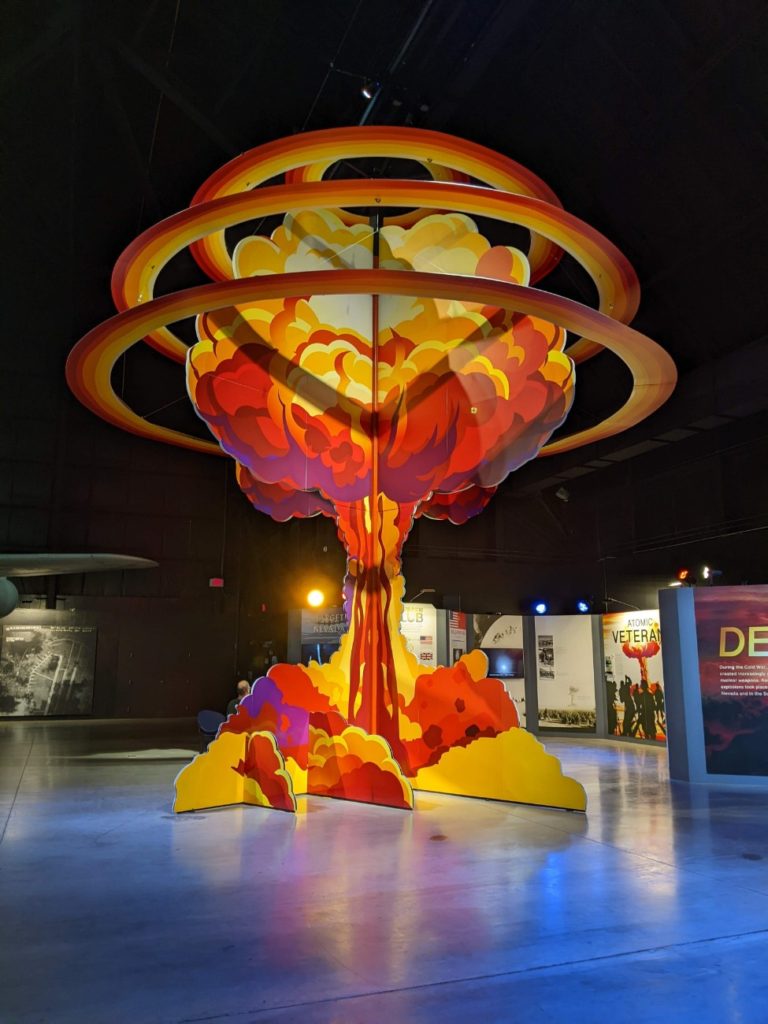
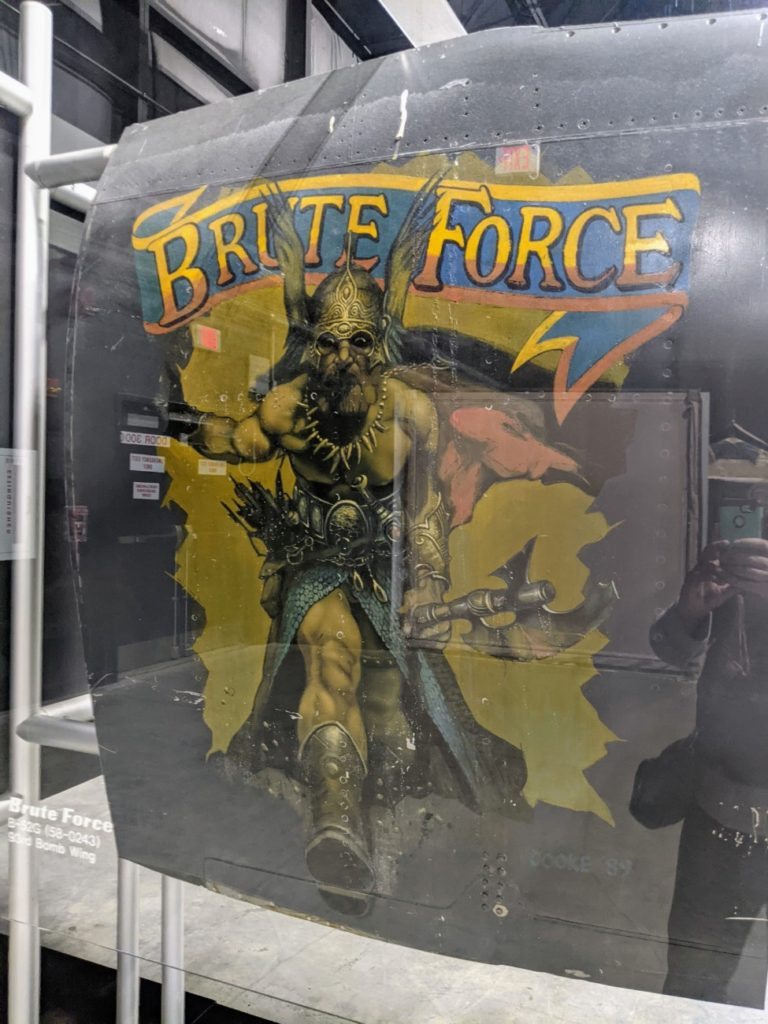
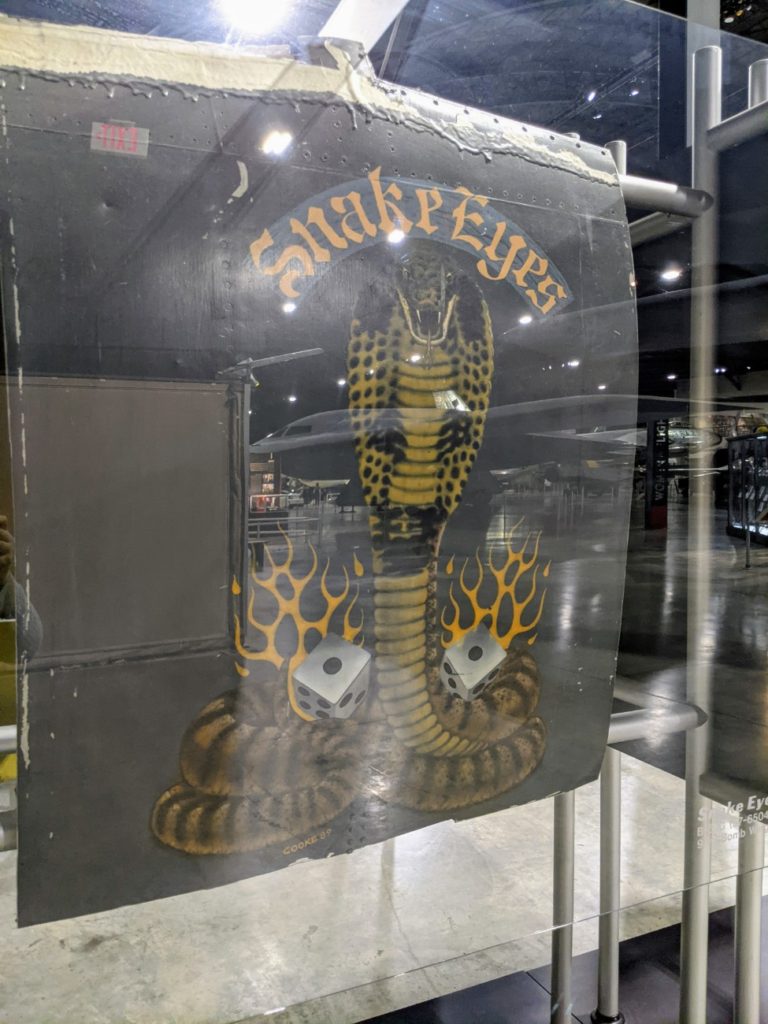
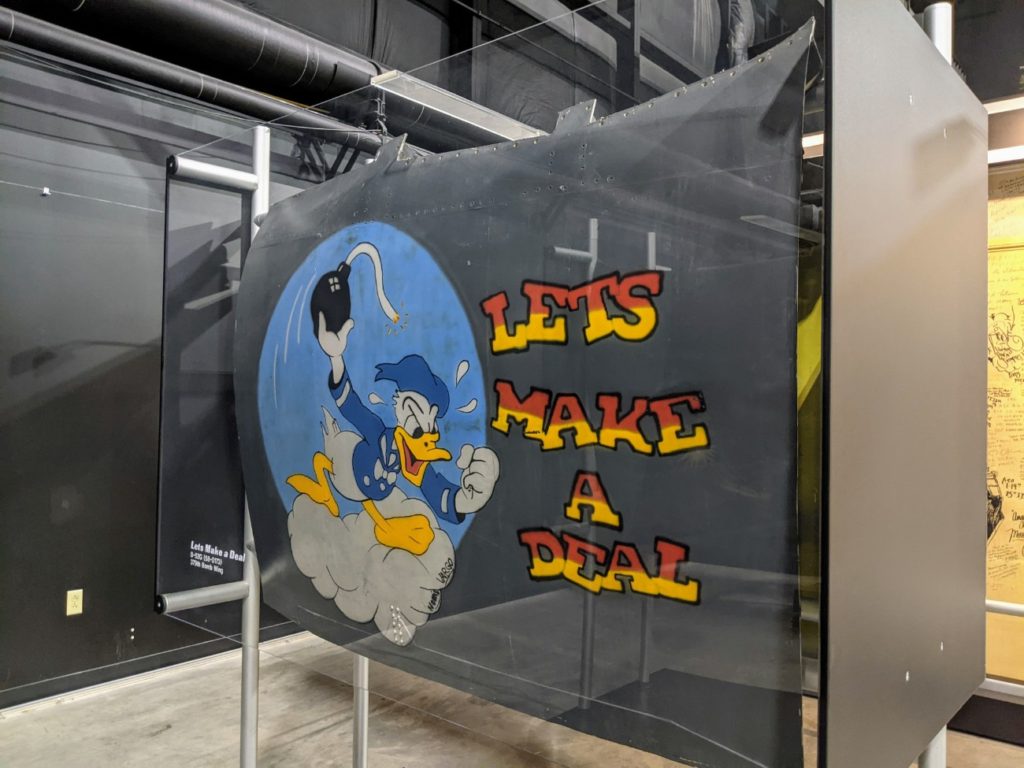
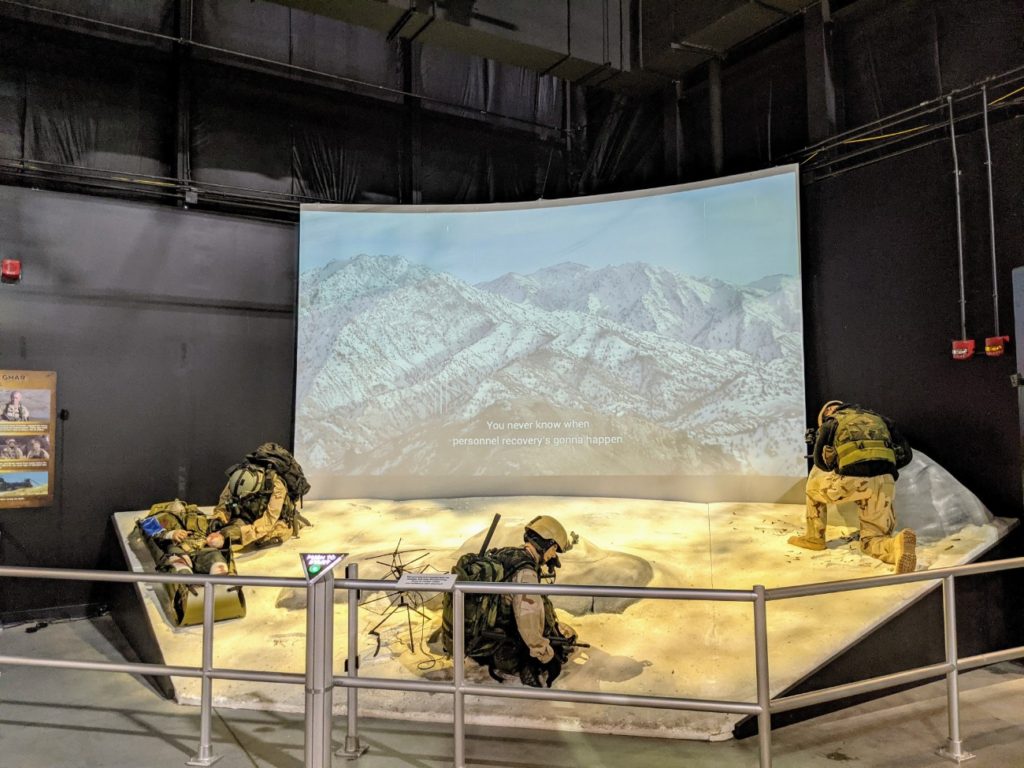
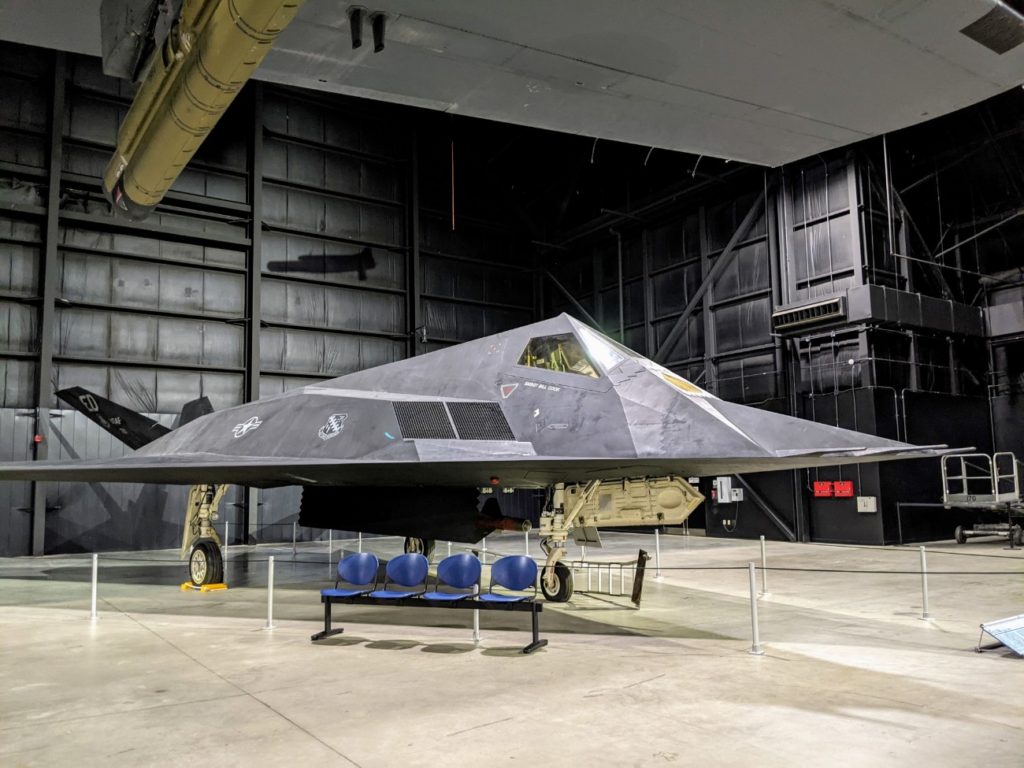
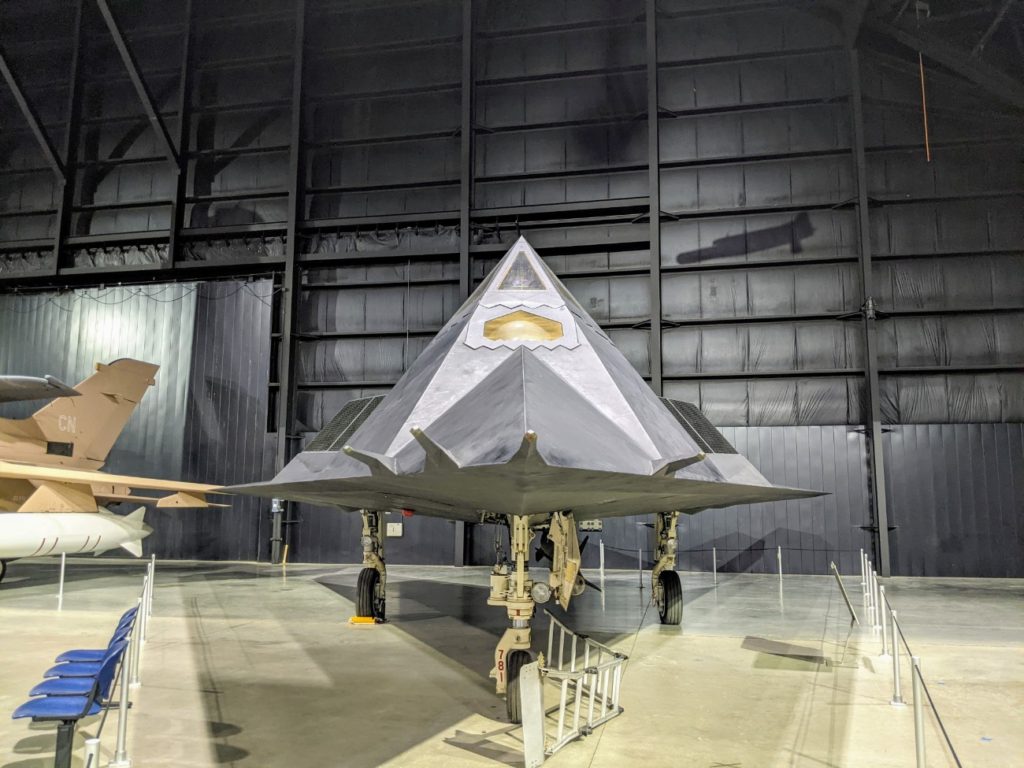
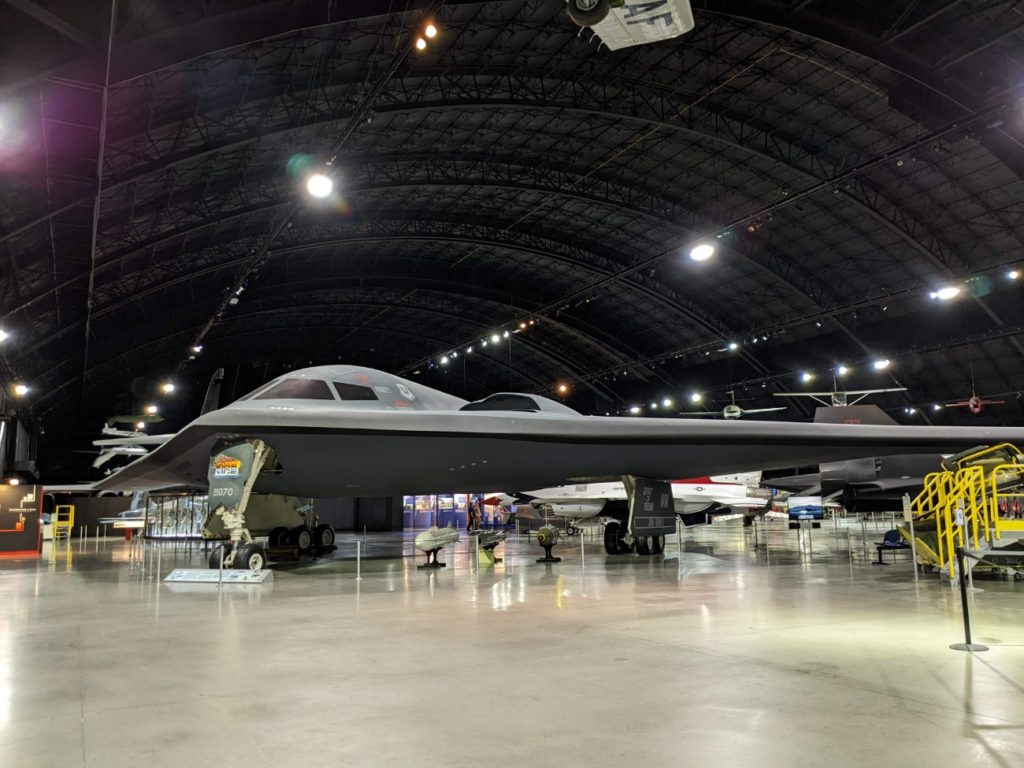
There are more displays concerning women in the Air Force, and you see more drones and other uncrewed aircraft, especially hanging from the ceiling. Two impressive supercars sit near the B-2 bomber, a modified Dodge Challenger and Ford Mustang. They were created more to see what the Air Force could do with a car, more than for actual use. It sounds like they were used mostly for recruiting purposes. But they’re pretty fun to look at and you can sit inside.

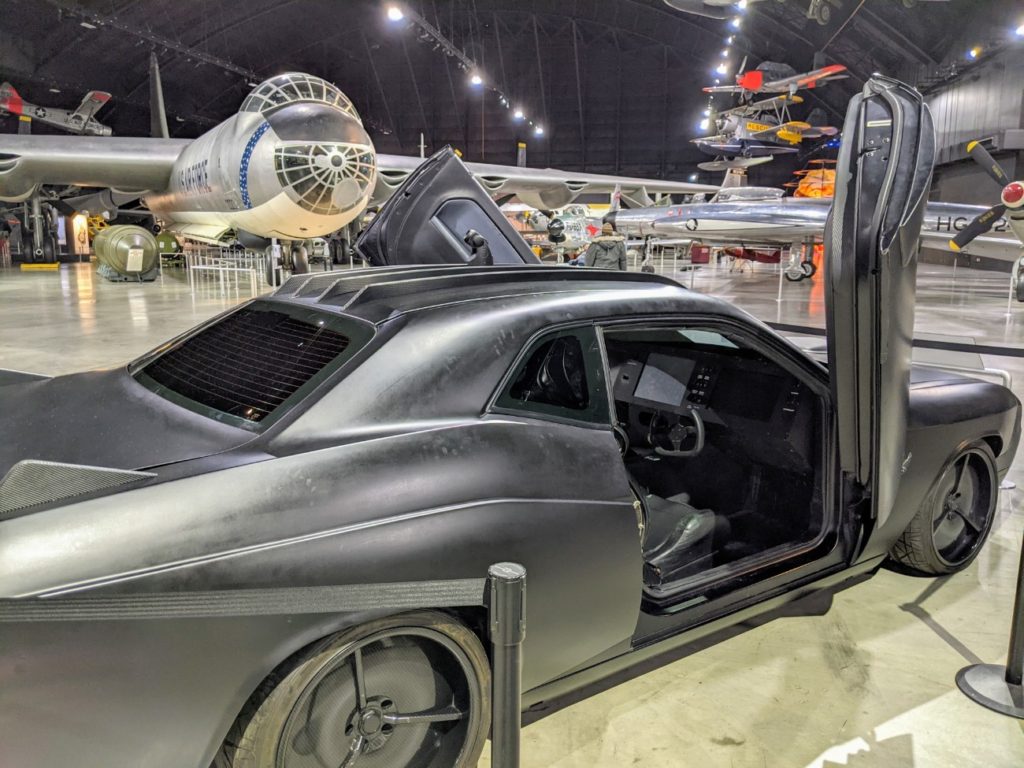
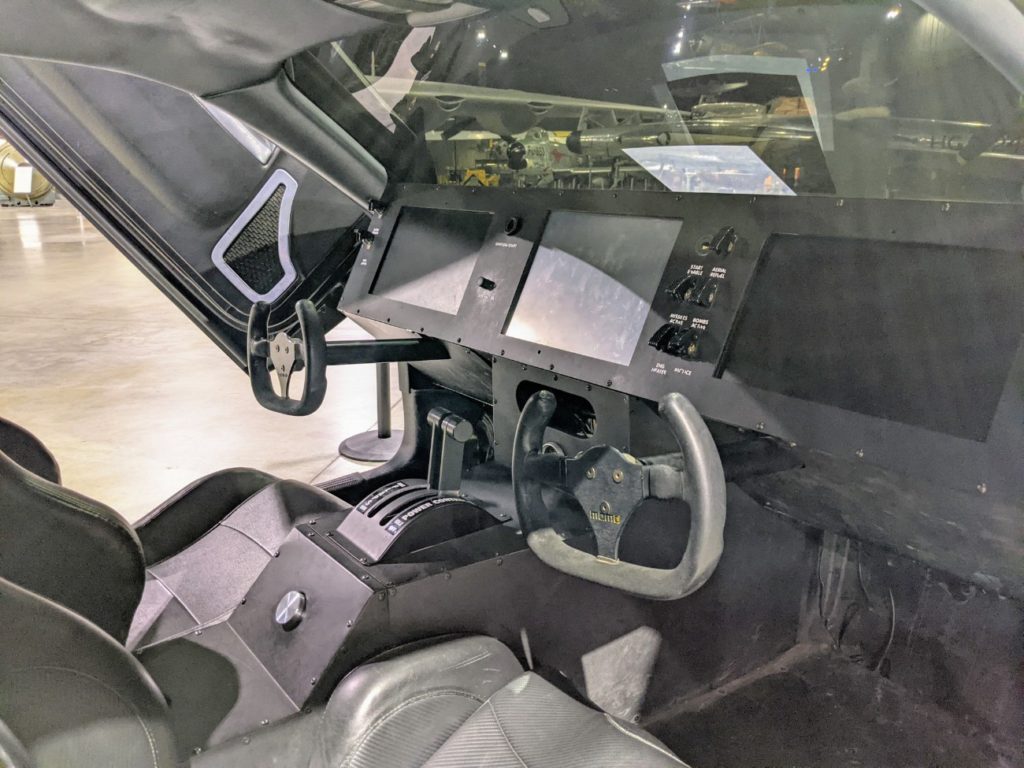
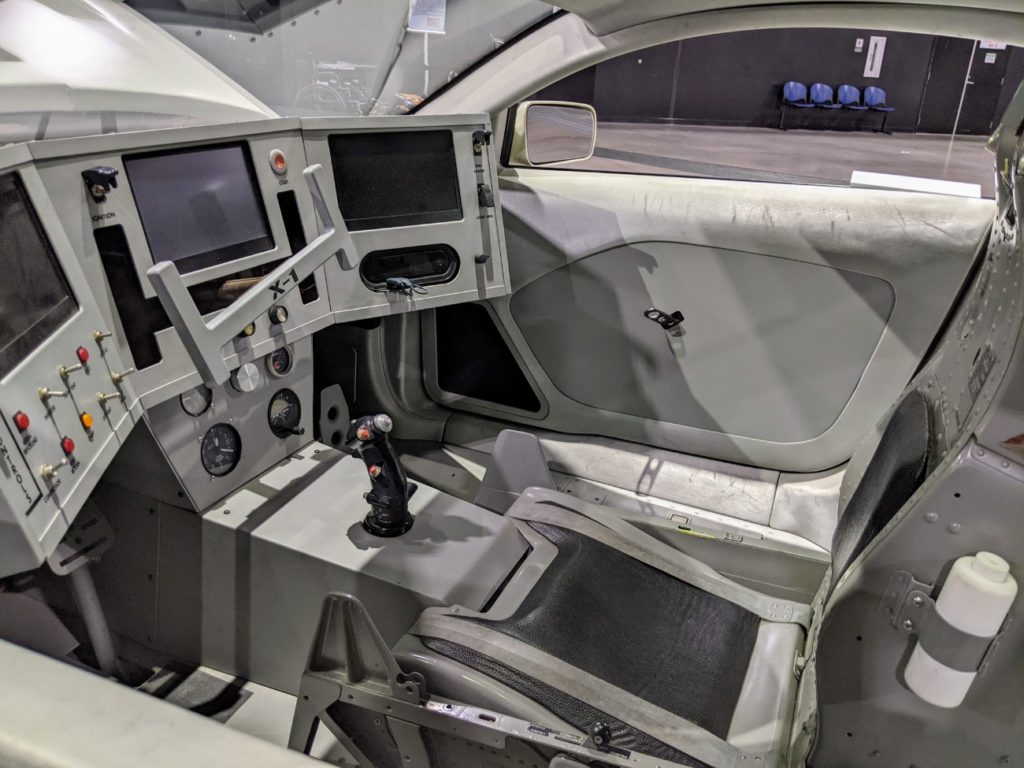
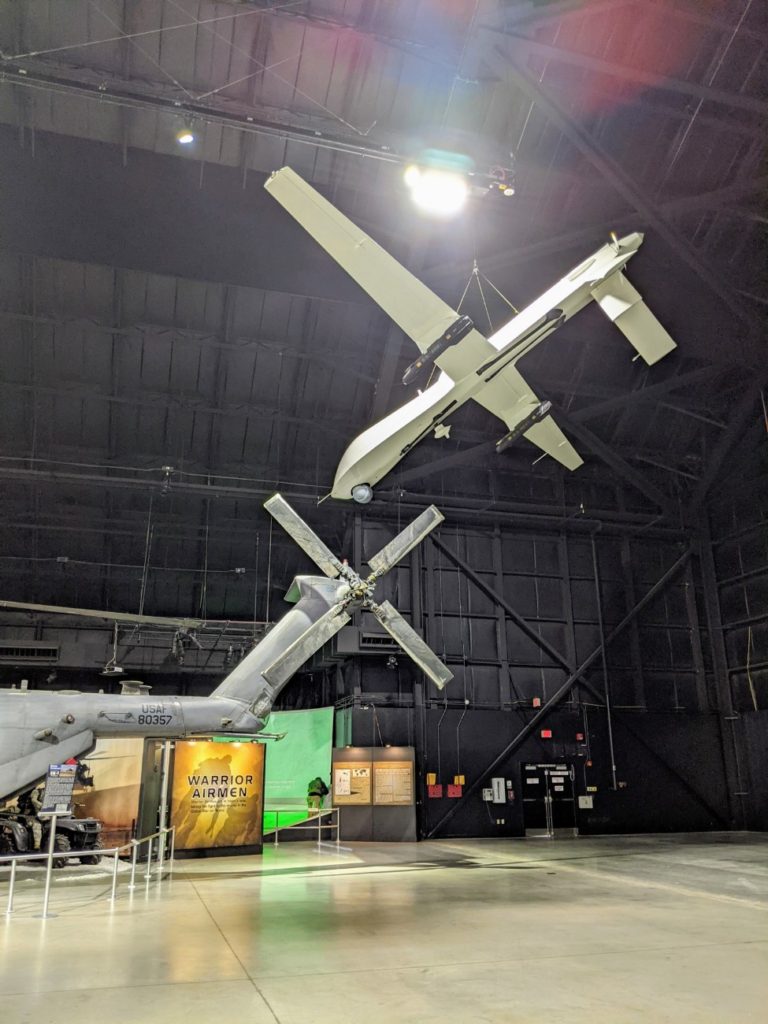
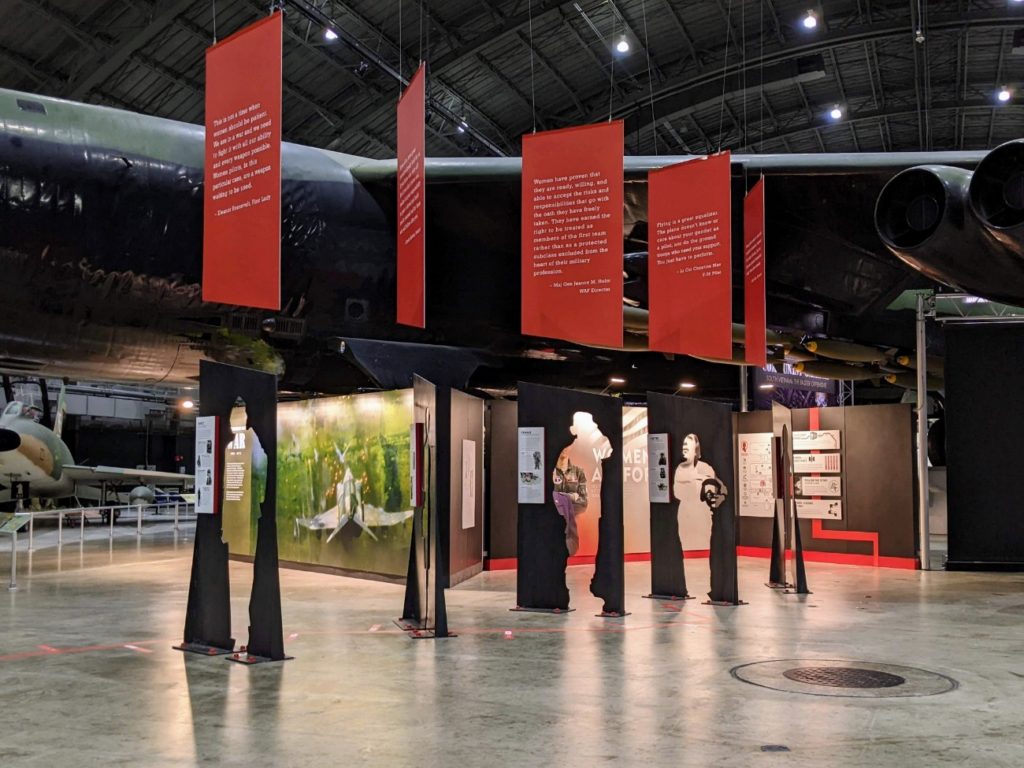
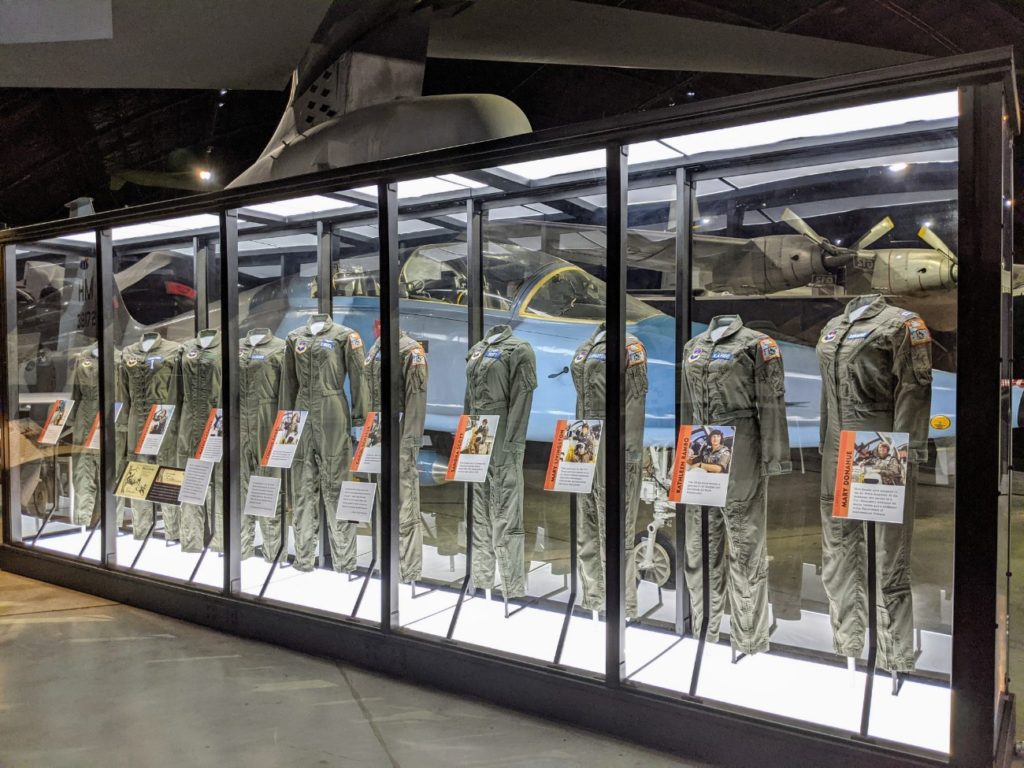
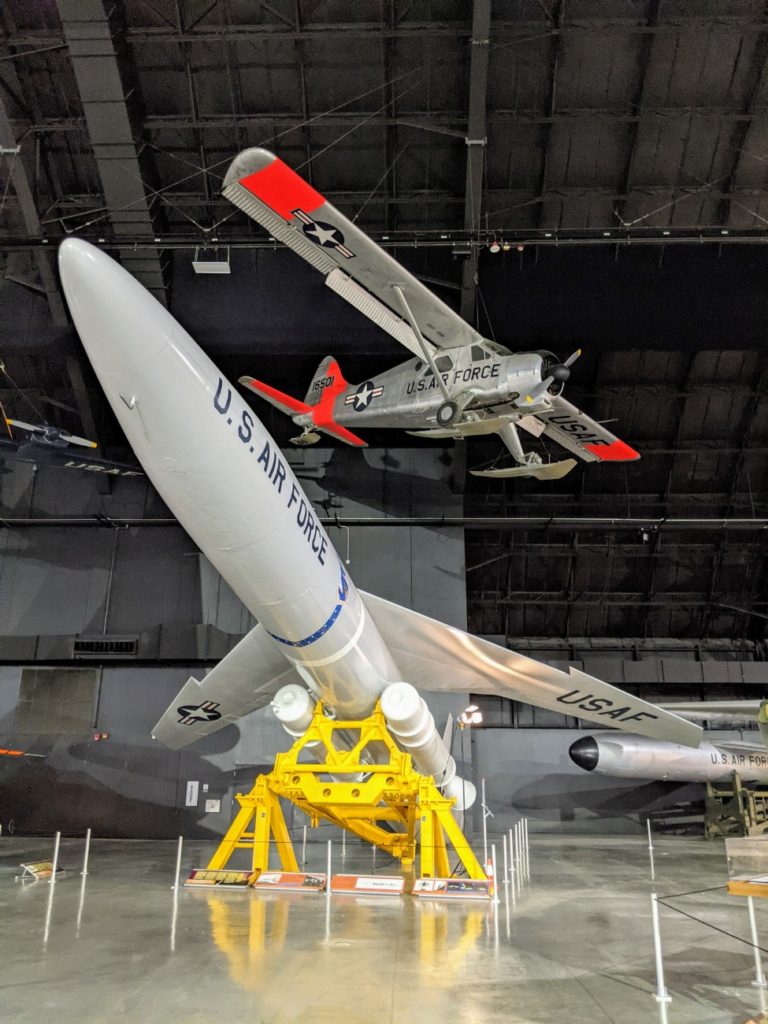
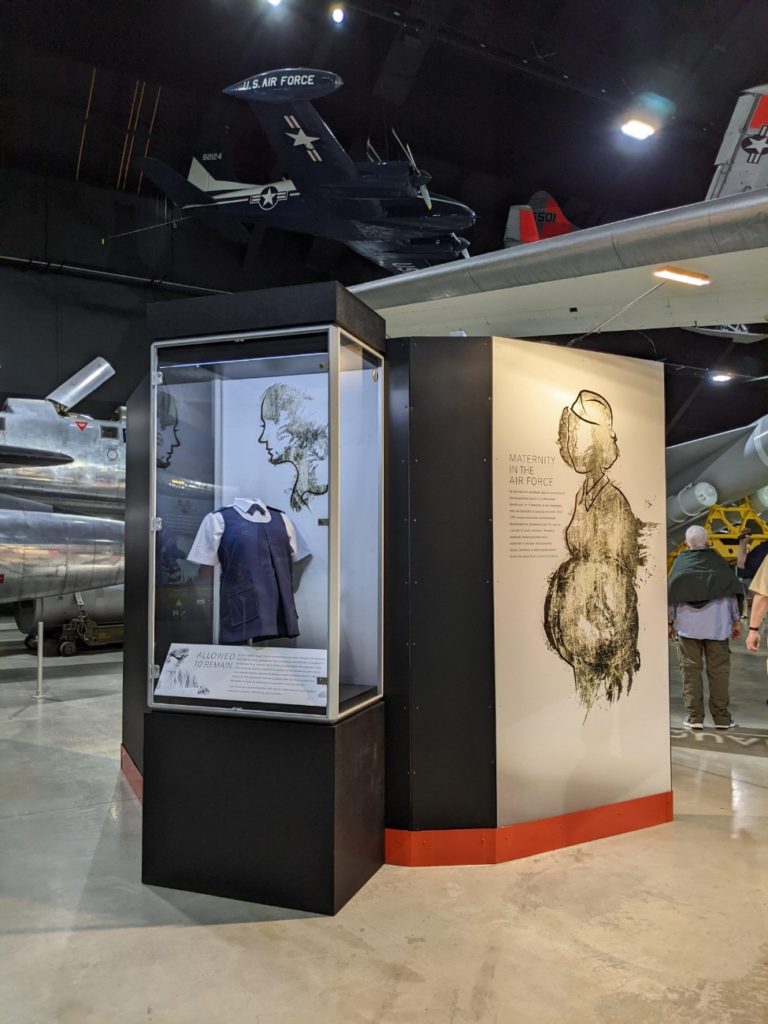
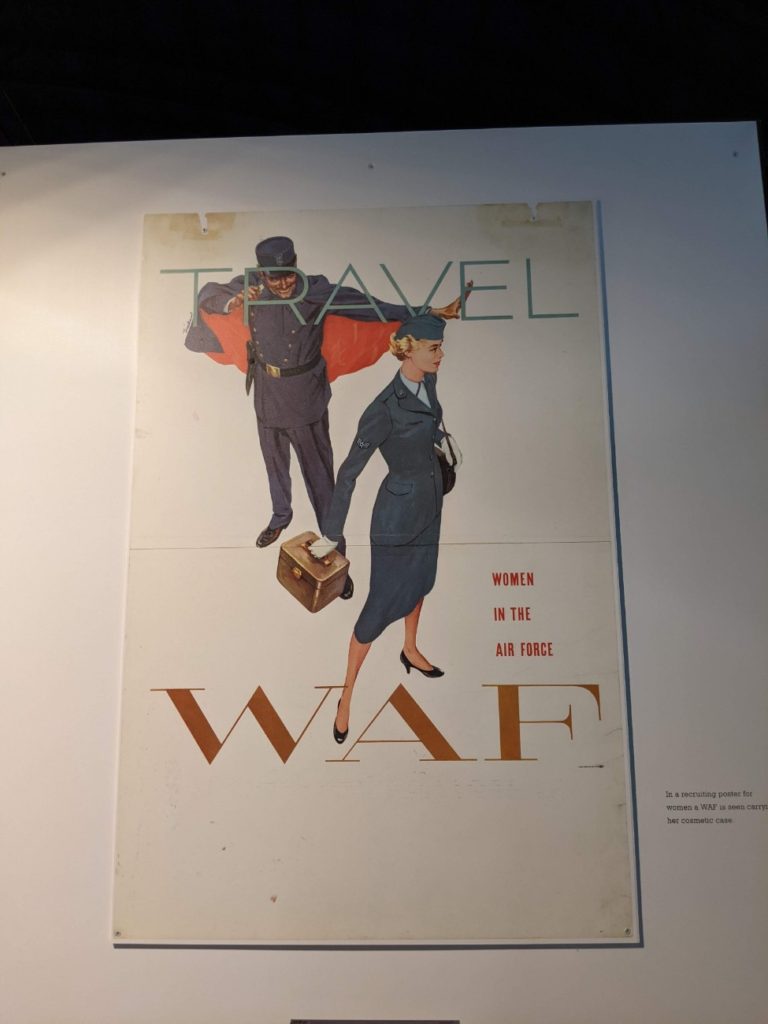
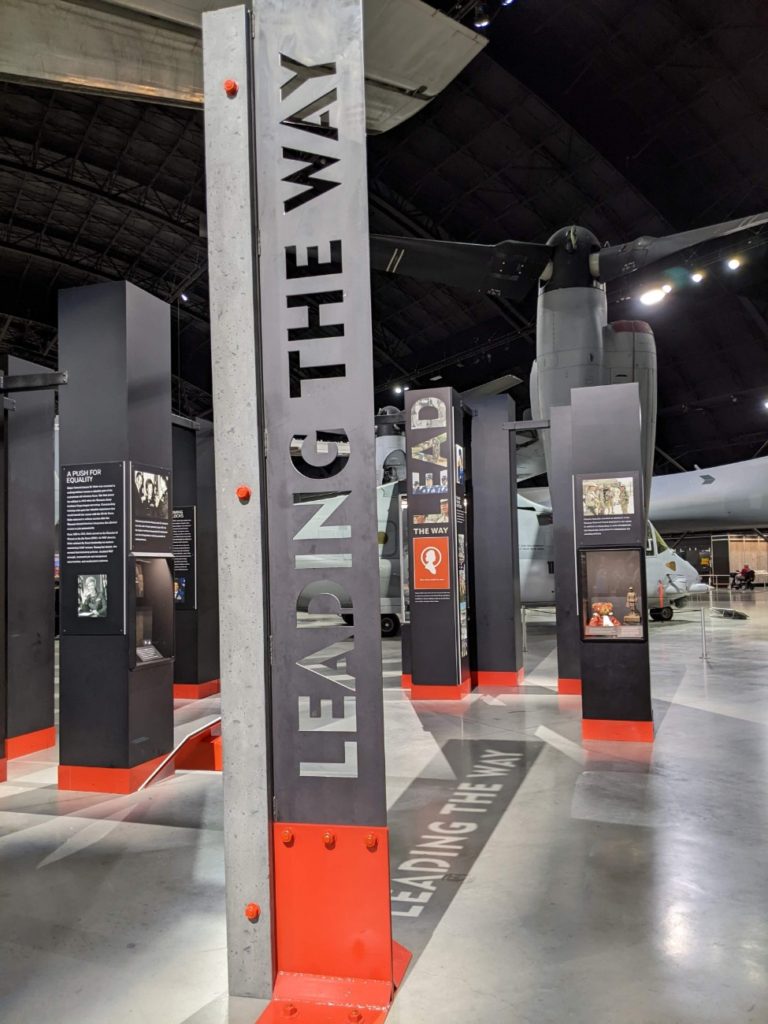
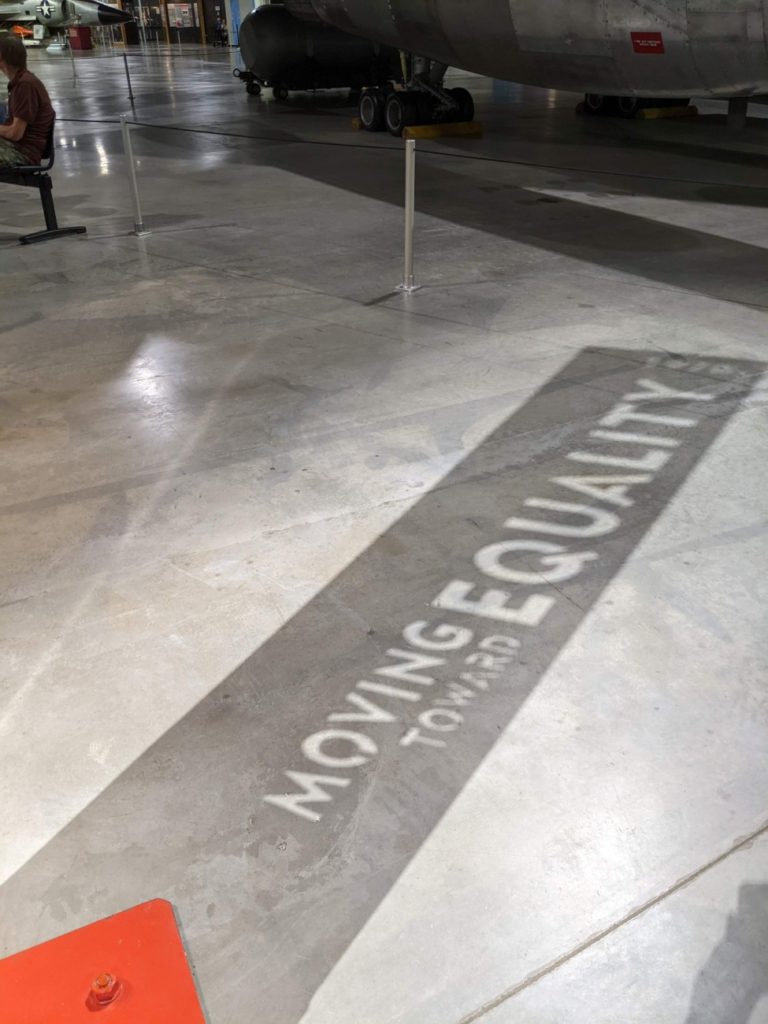
The fastest plane in the world is in this gallery. The Lockheed SR-71 Blackbird holds the fastest speed for a manned jet aircraft. On my tour of this hangar, the guide handed out photos of it for free, if you wanted one. There’s also a fun story about an F-106 Delta Dart jet that went into a flat spin on a training flight. When the pilot ejected, the plane recovered on its own and landed softly in a field.
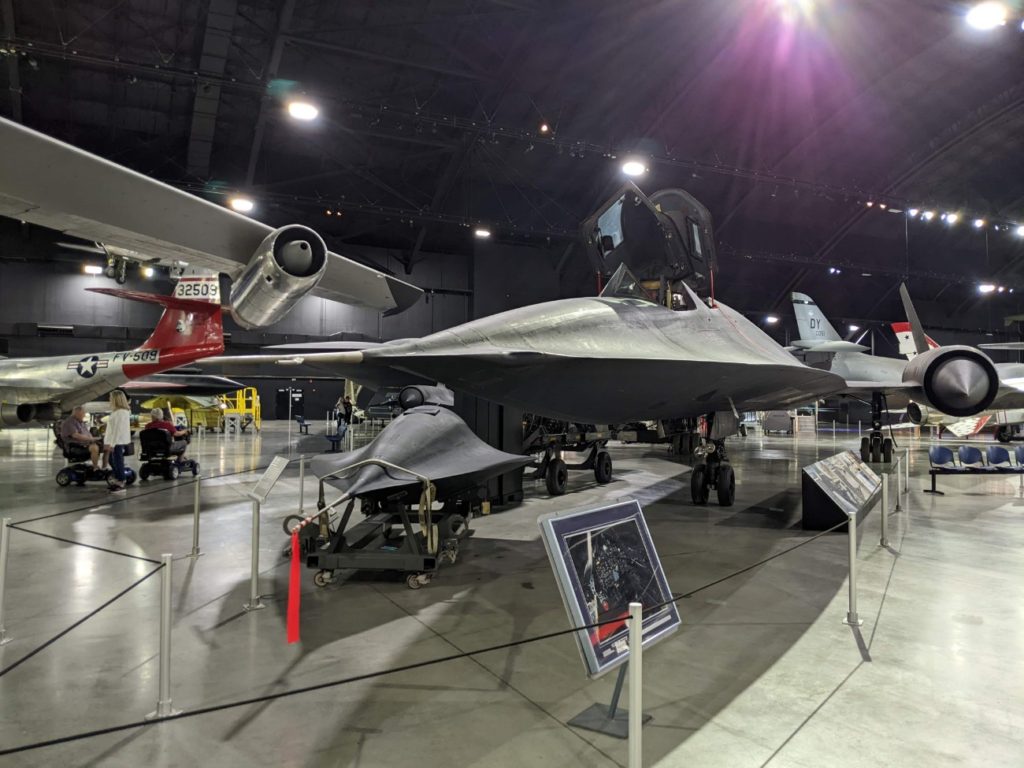
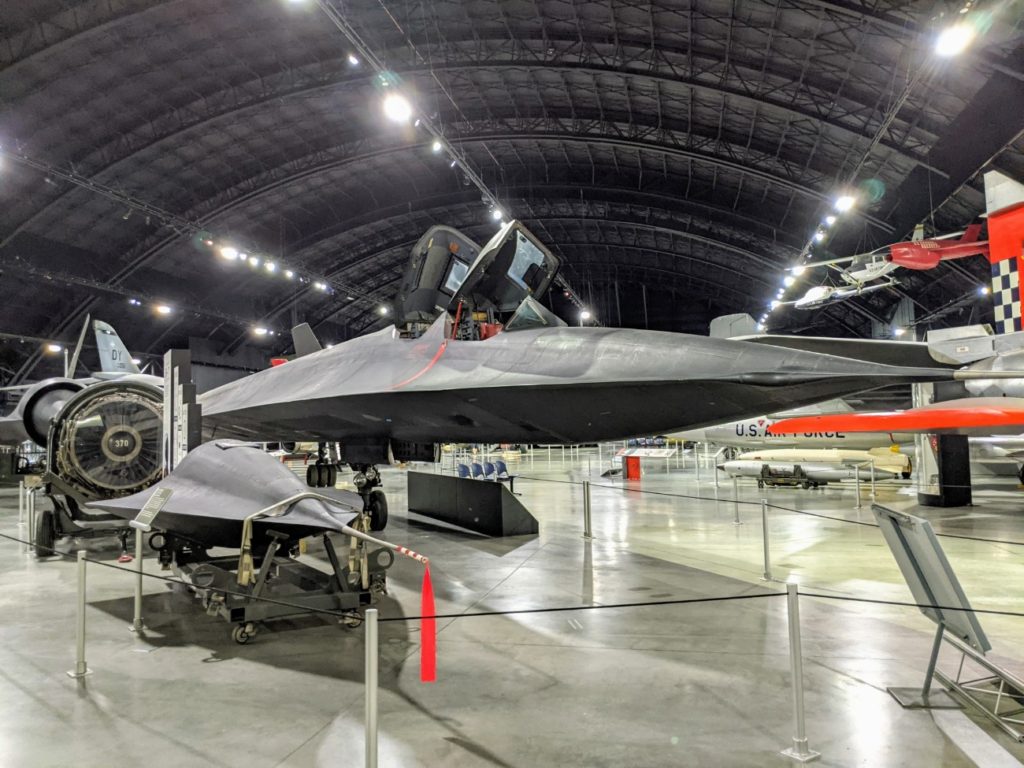
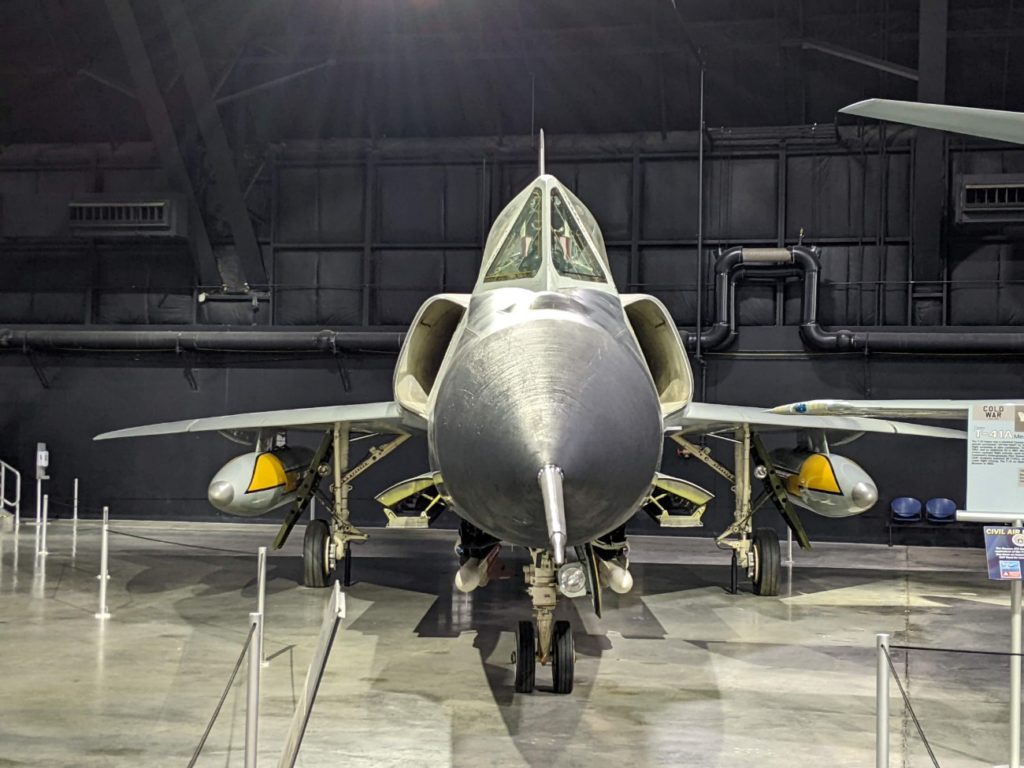
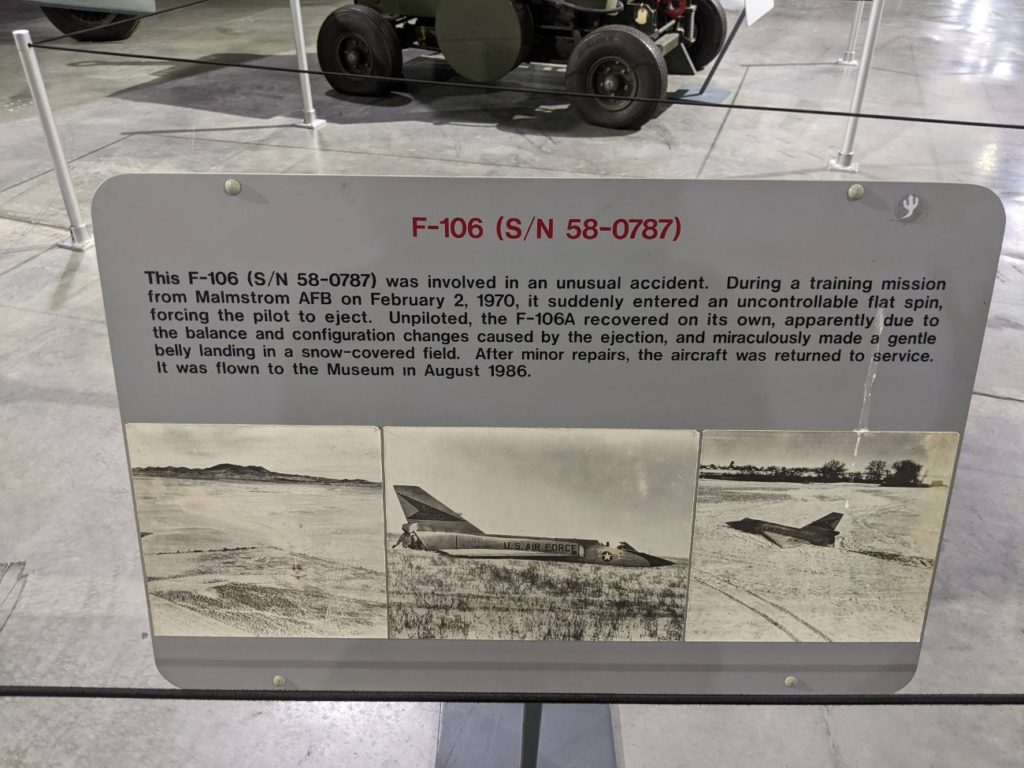
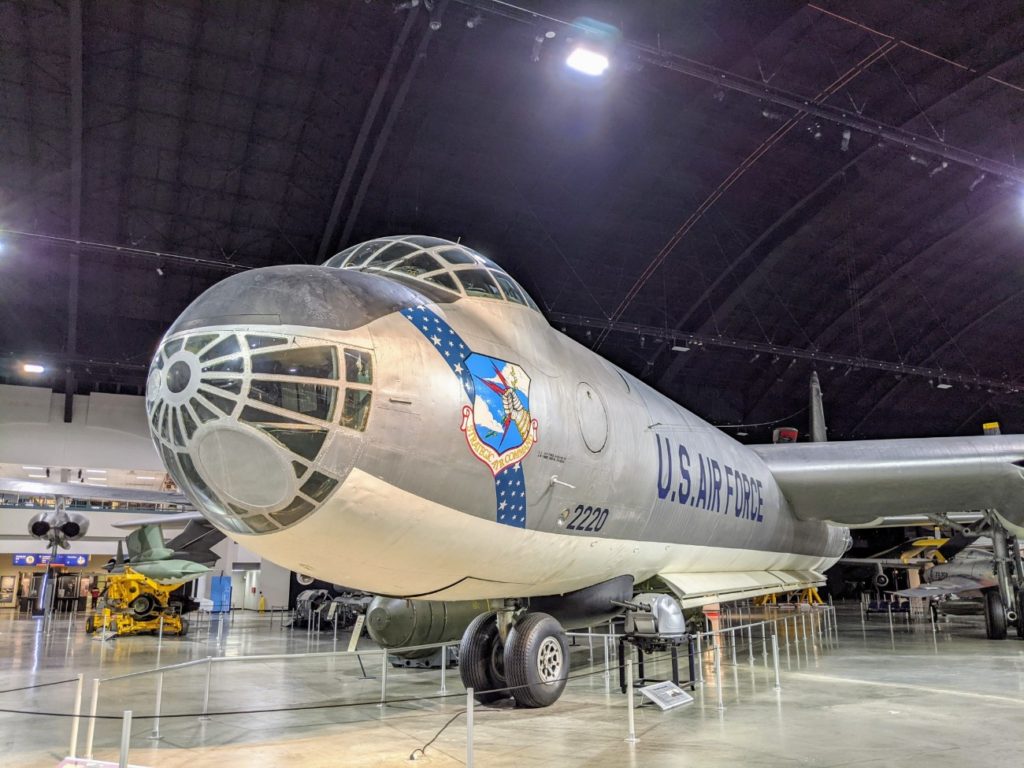
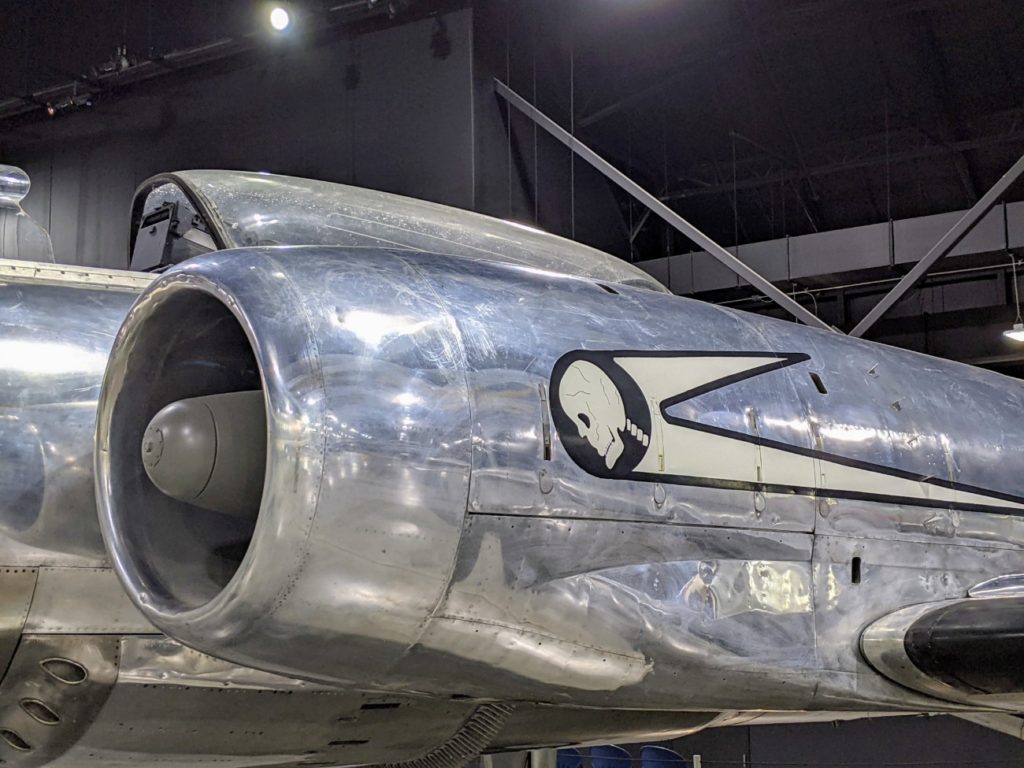
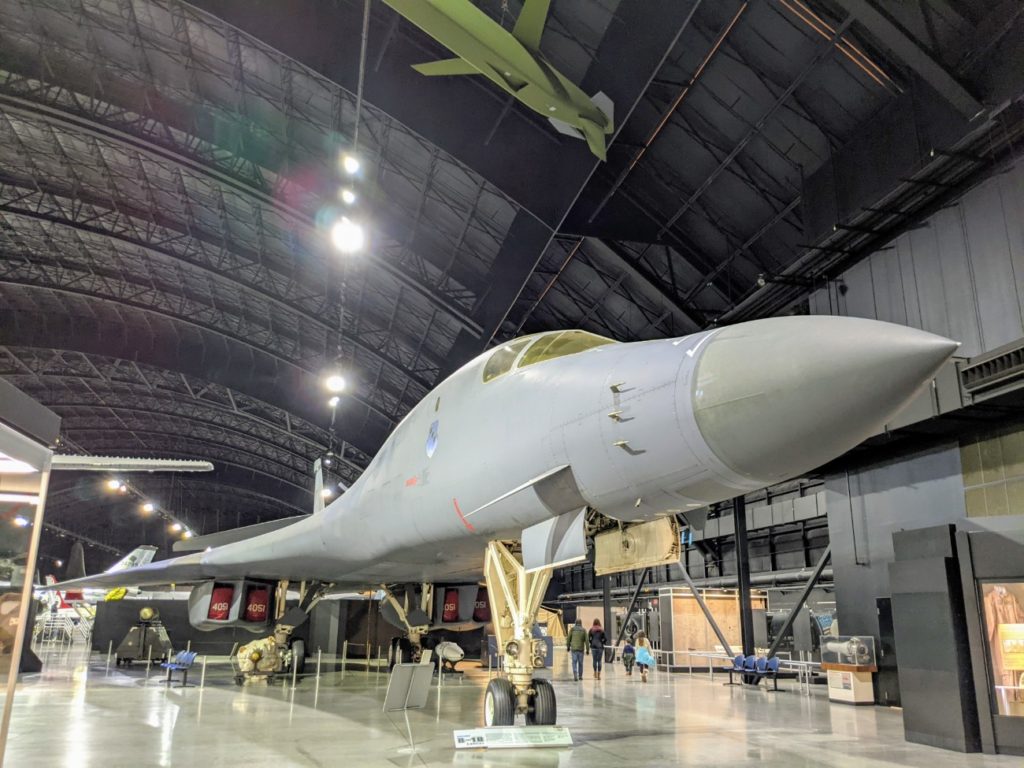
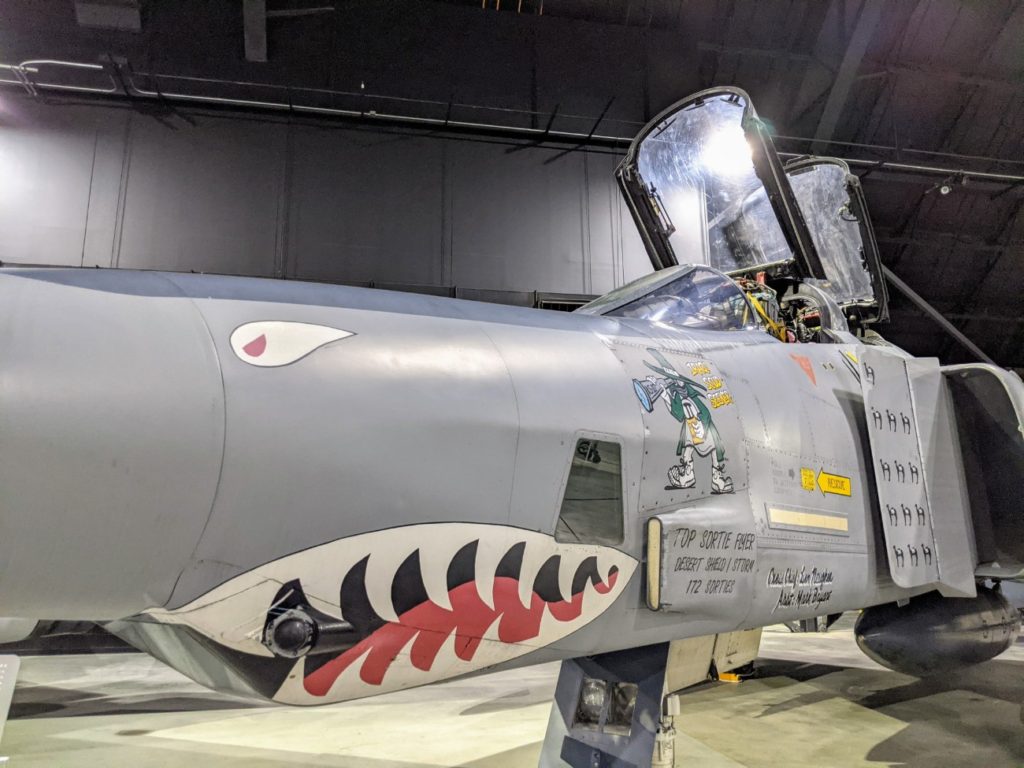
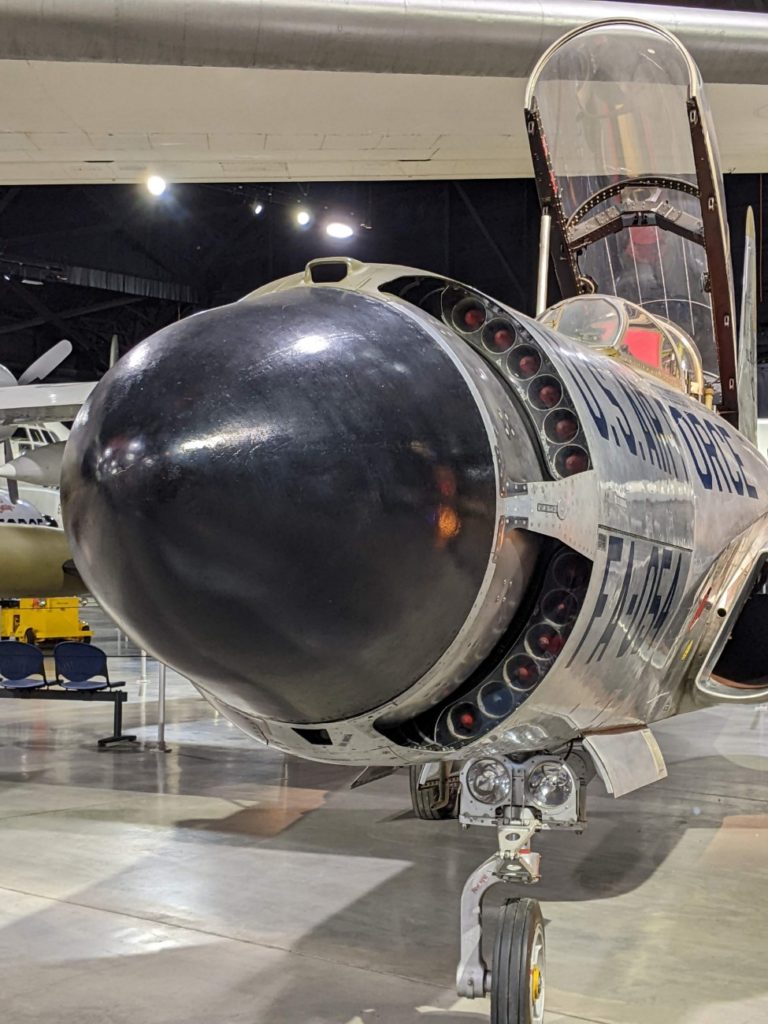
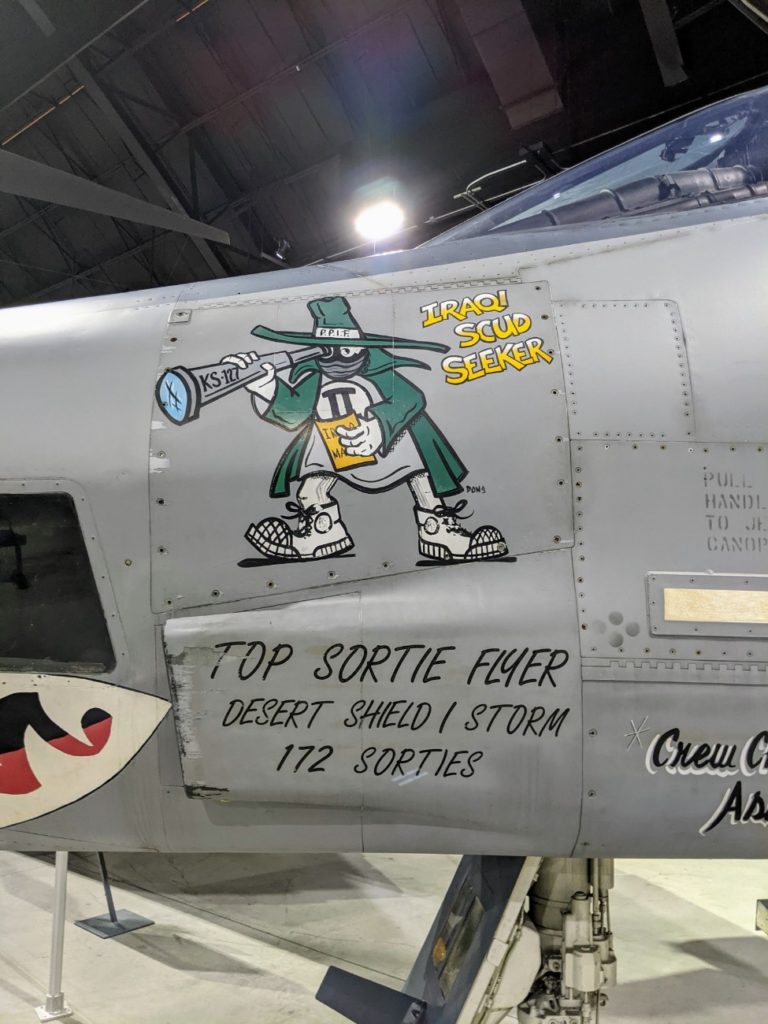
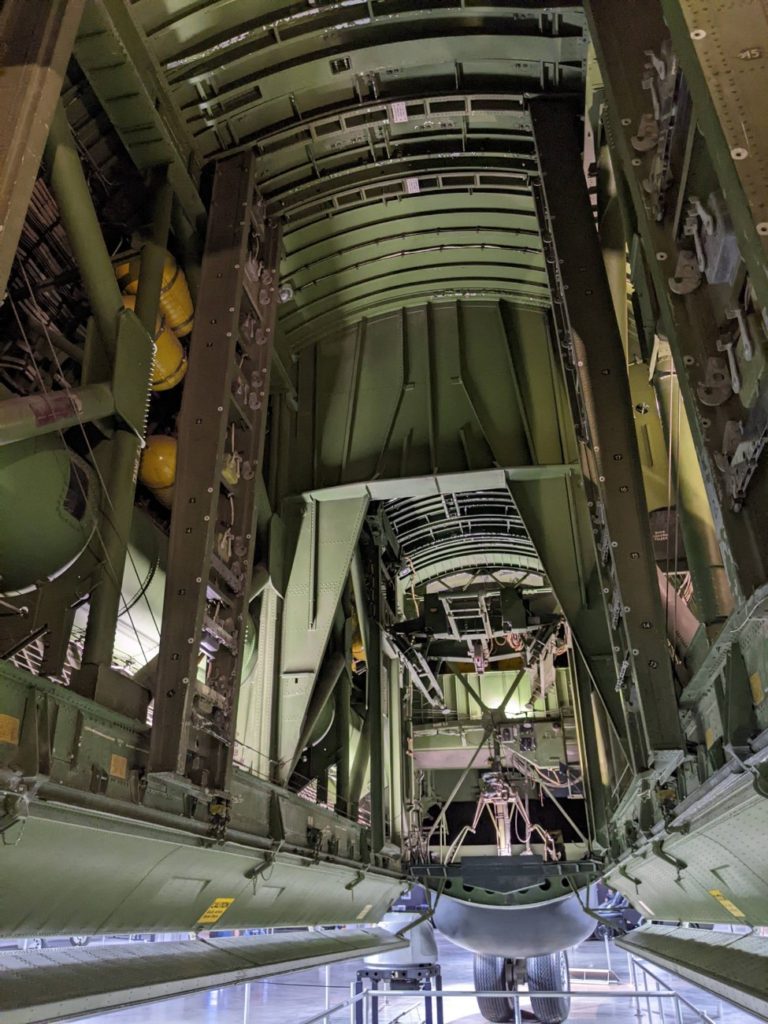
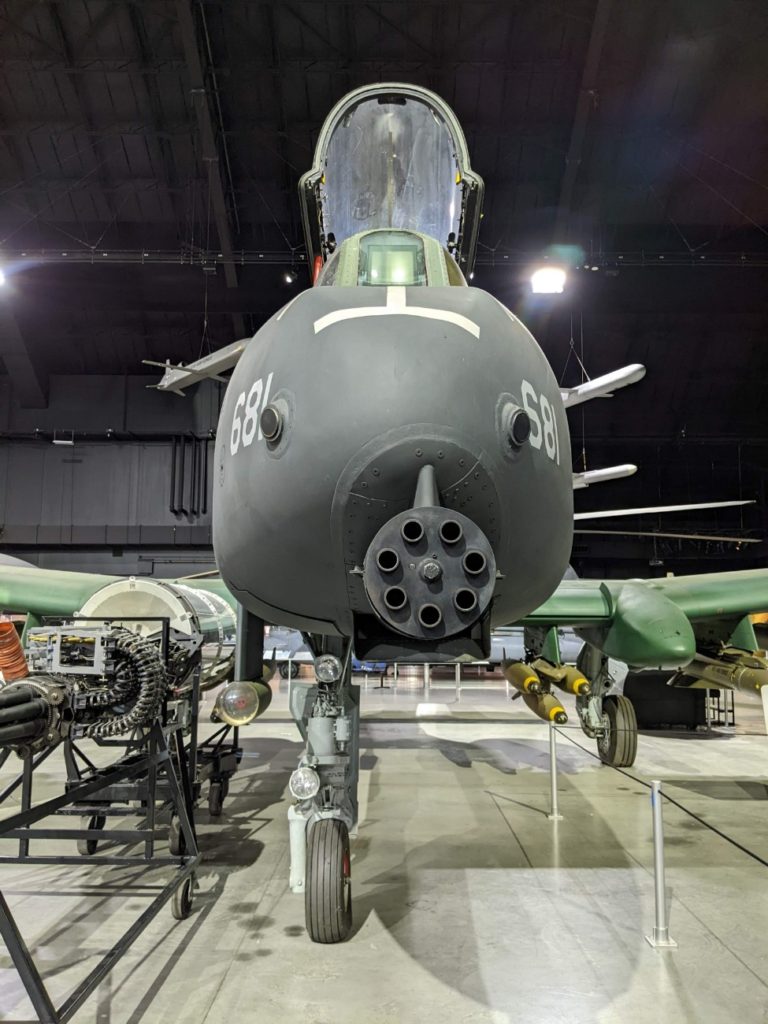
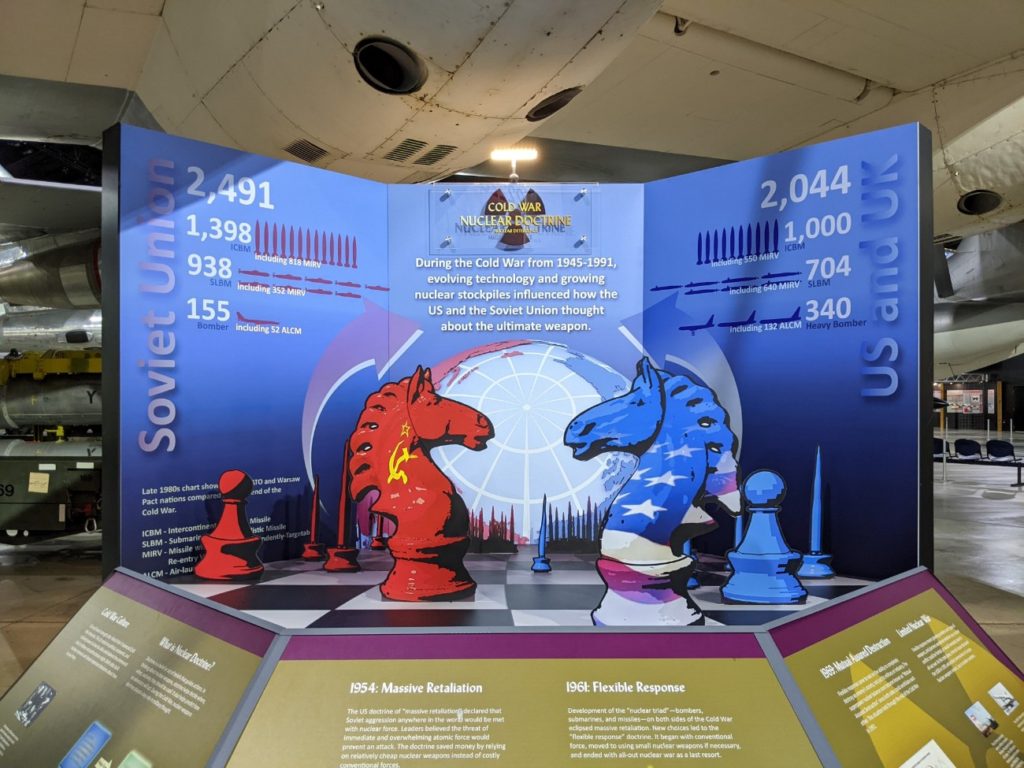
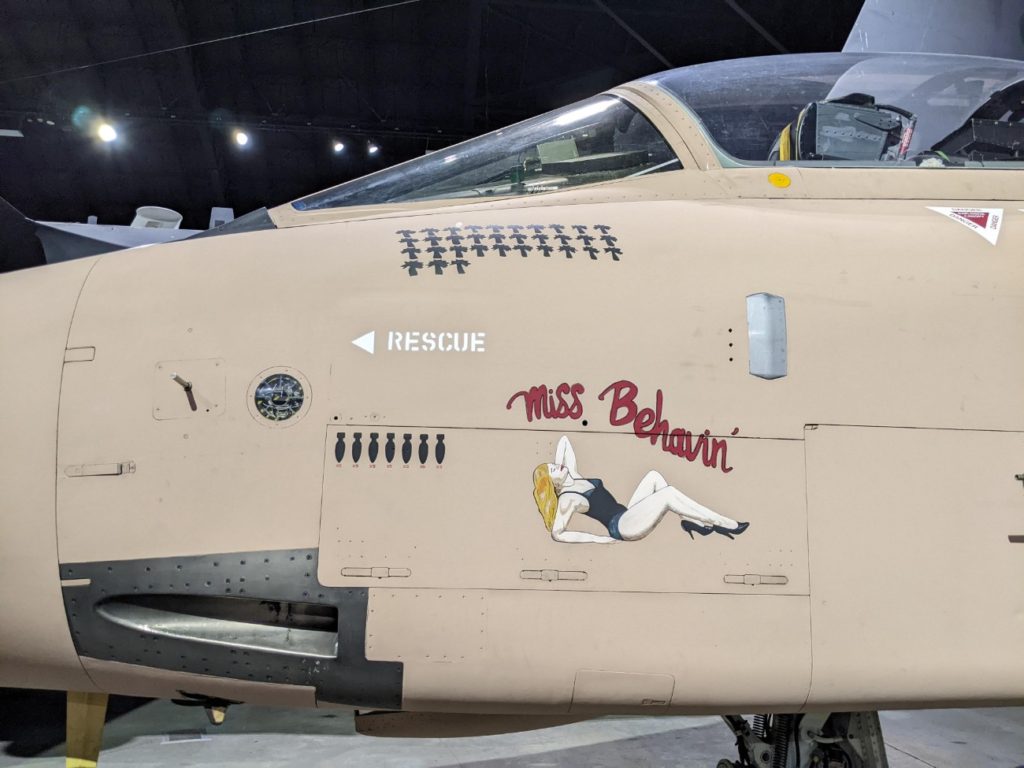

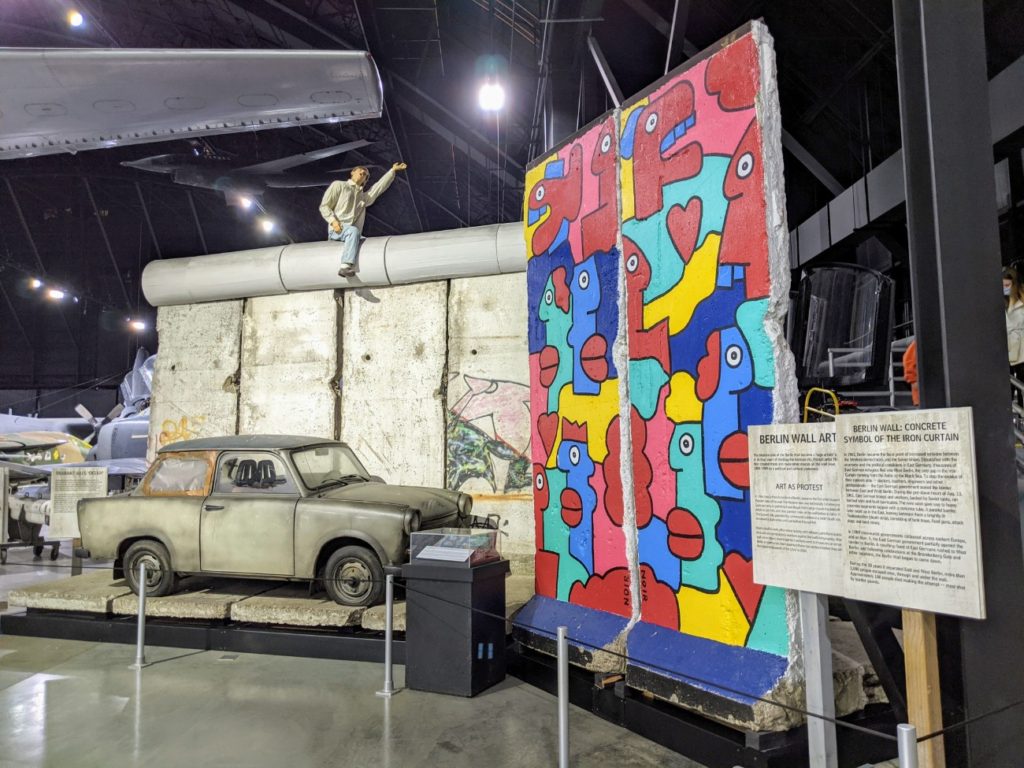
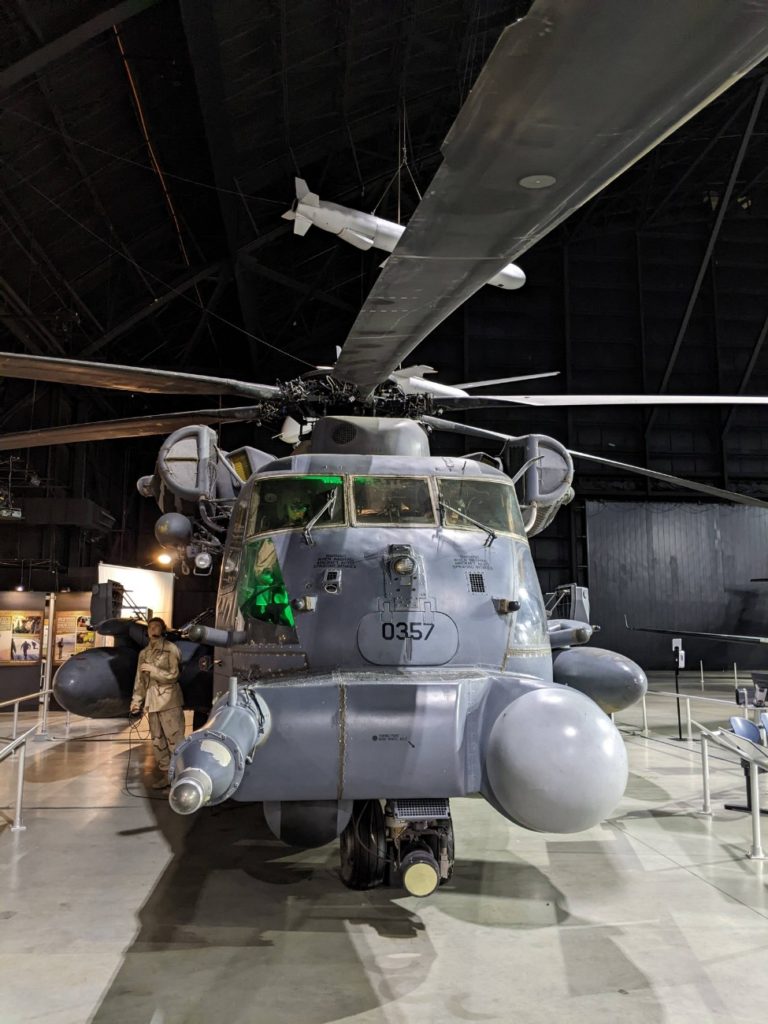
Missile Gallery
Between hangars three and four is a tall, round room with rockets, including the Titan I and II missiles. There’s also a model of Sputnik and some displays of what it’s like in space, like the food management and prep wall.
You can walk around the base of the missiles or take stairs or an elevator to an upper gallery view.
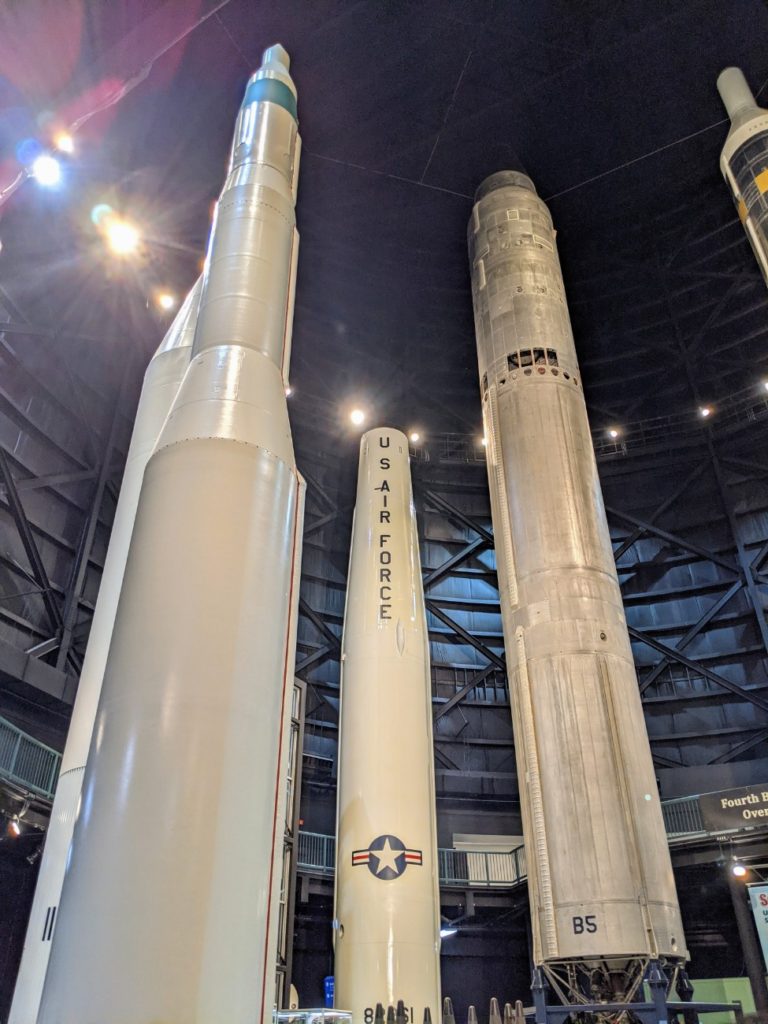
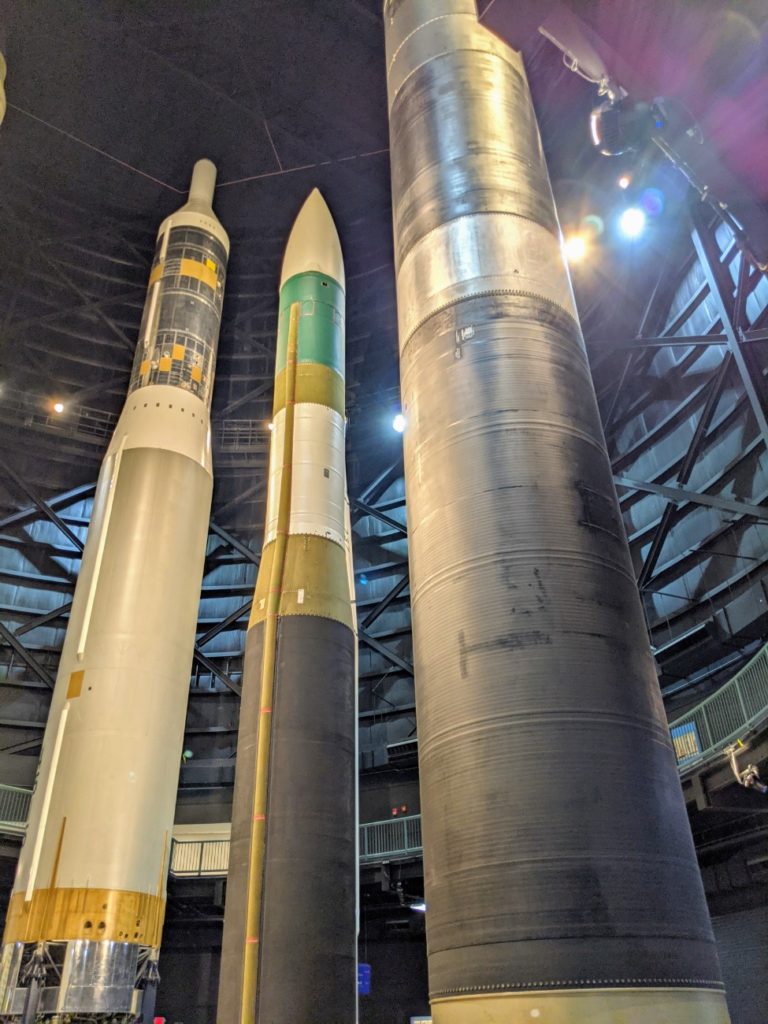
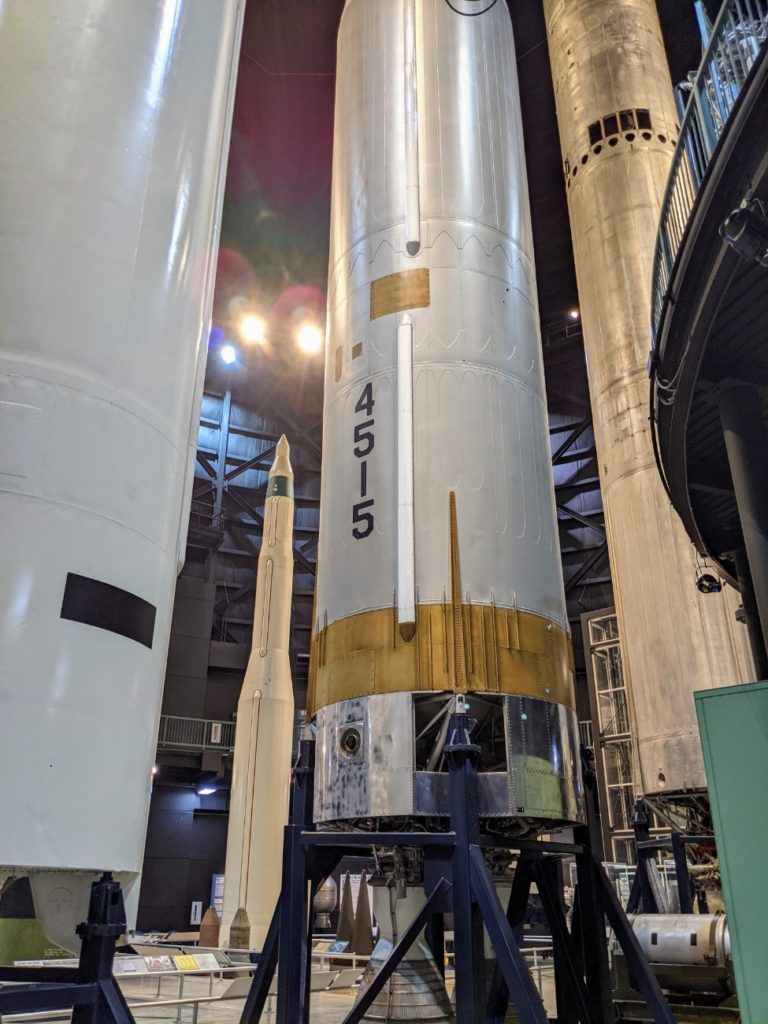
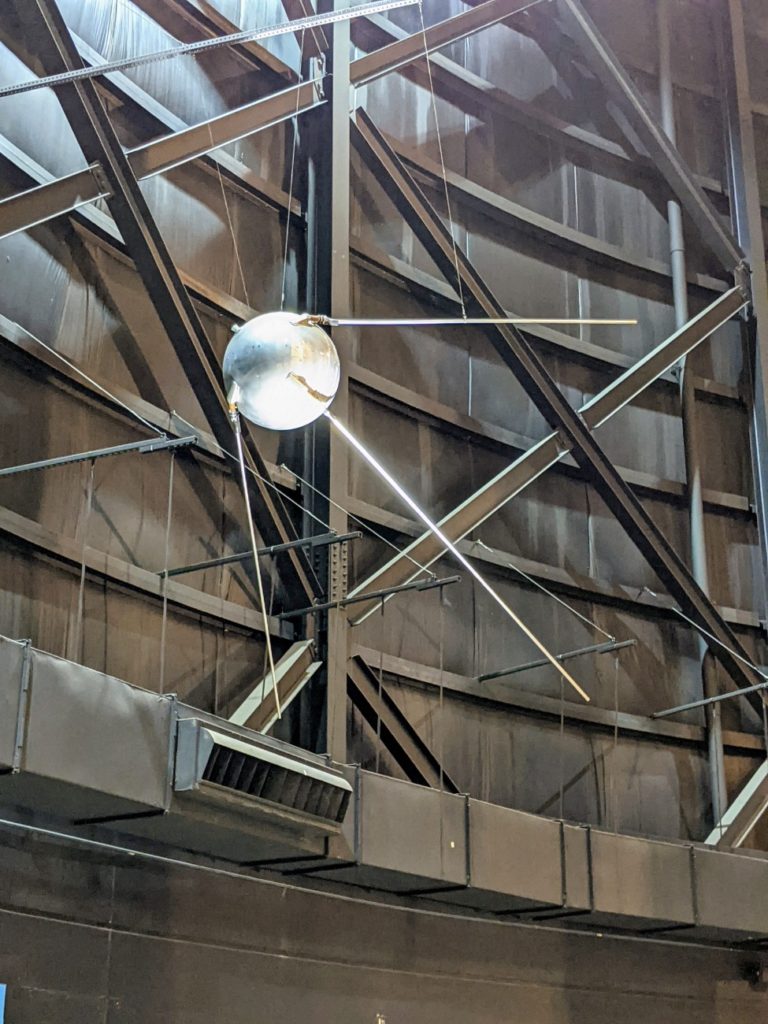
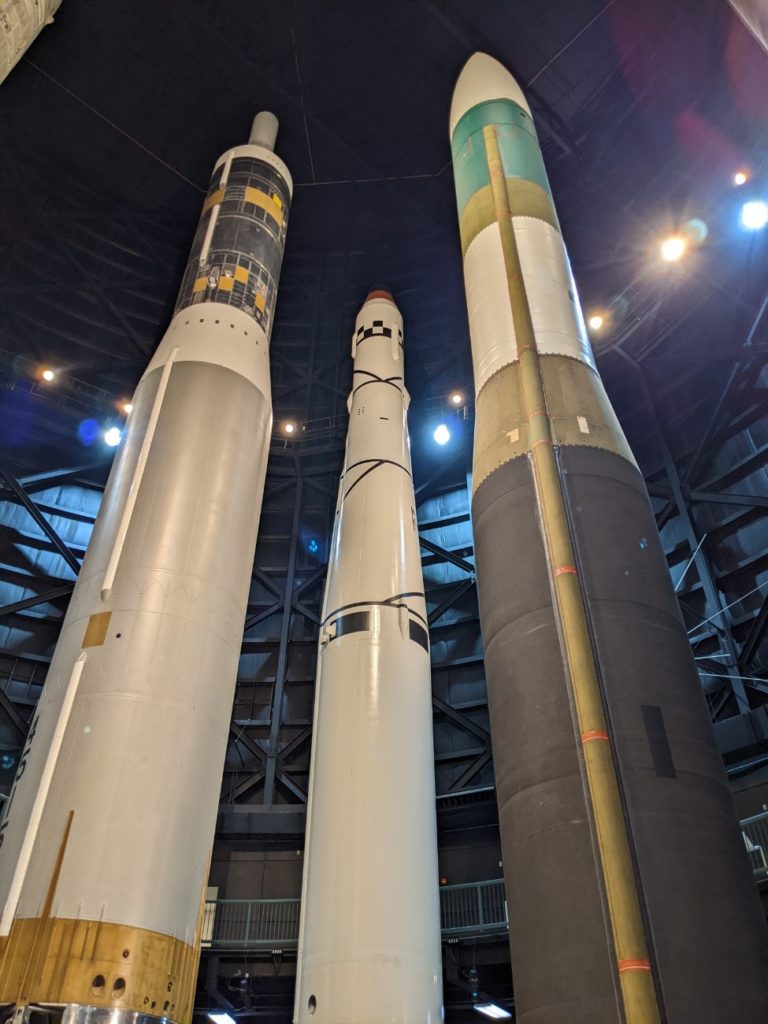

Research & Development Gallery
Finally, in the last hangar, you come to a huge mock-up of a space shuttle that used to be used for training purposes. You can see how big the bay is, and the cockpit (and the shuttle toilet.) Other space capsules and training units are found over here. And there are some fun “try to land the space shuttle” flight simulators.
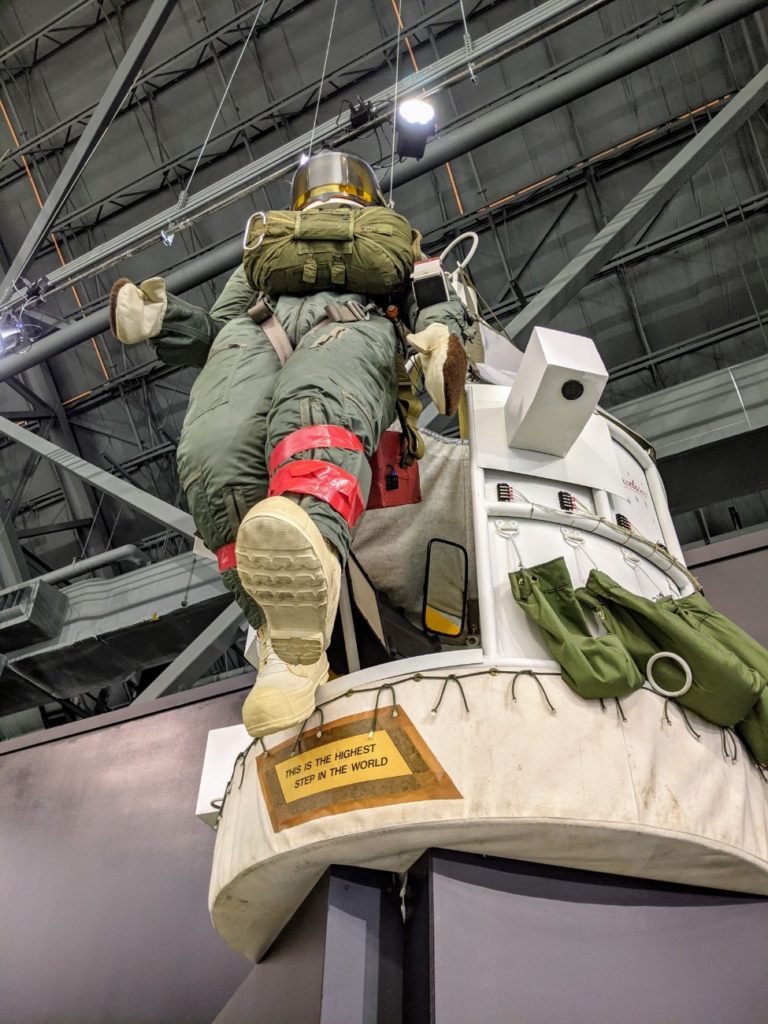
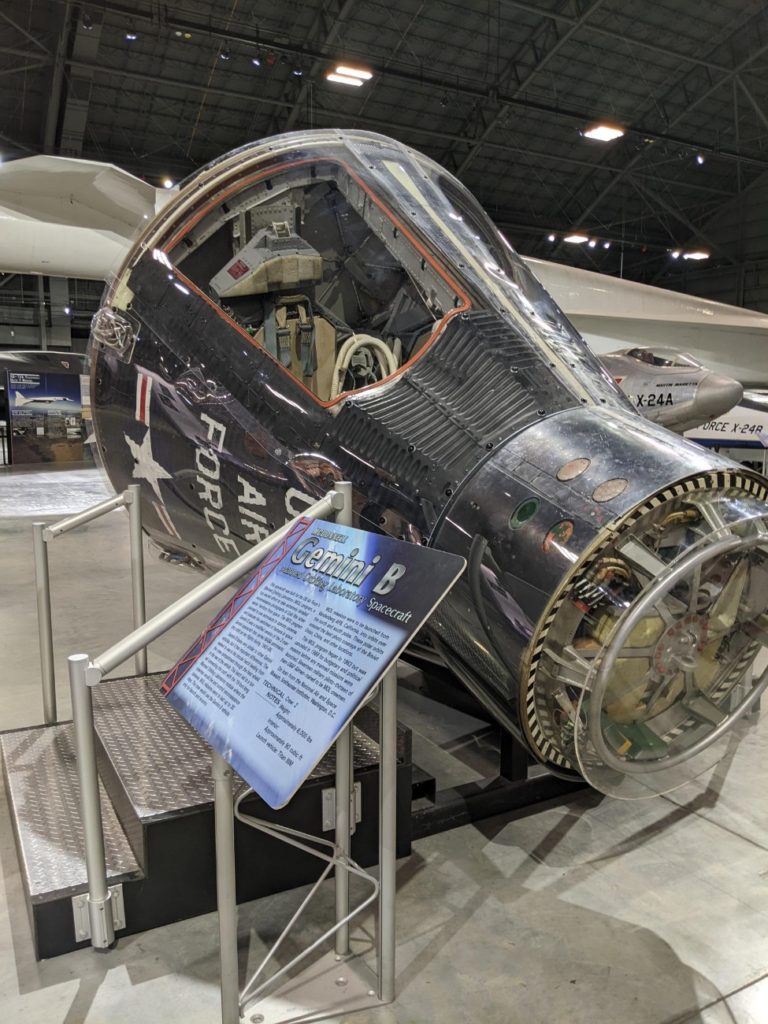
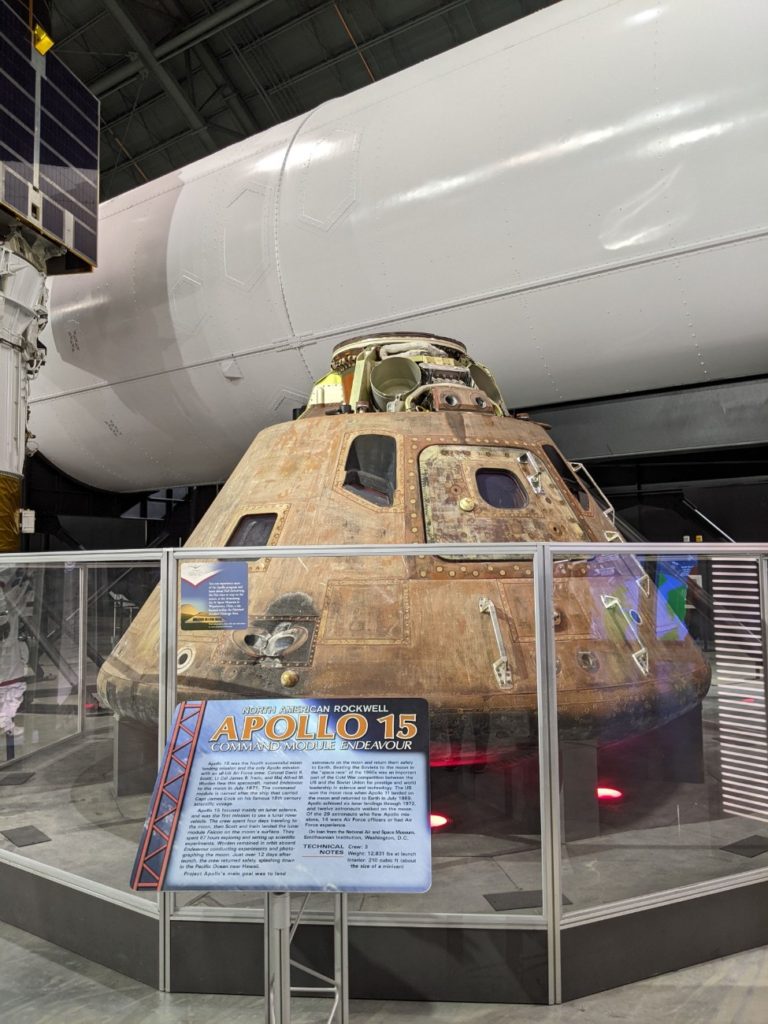
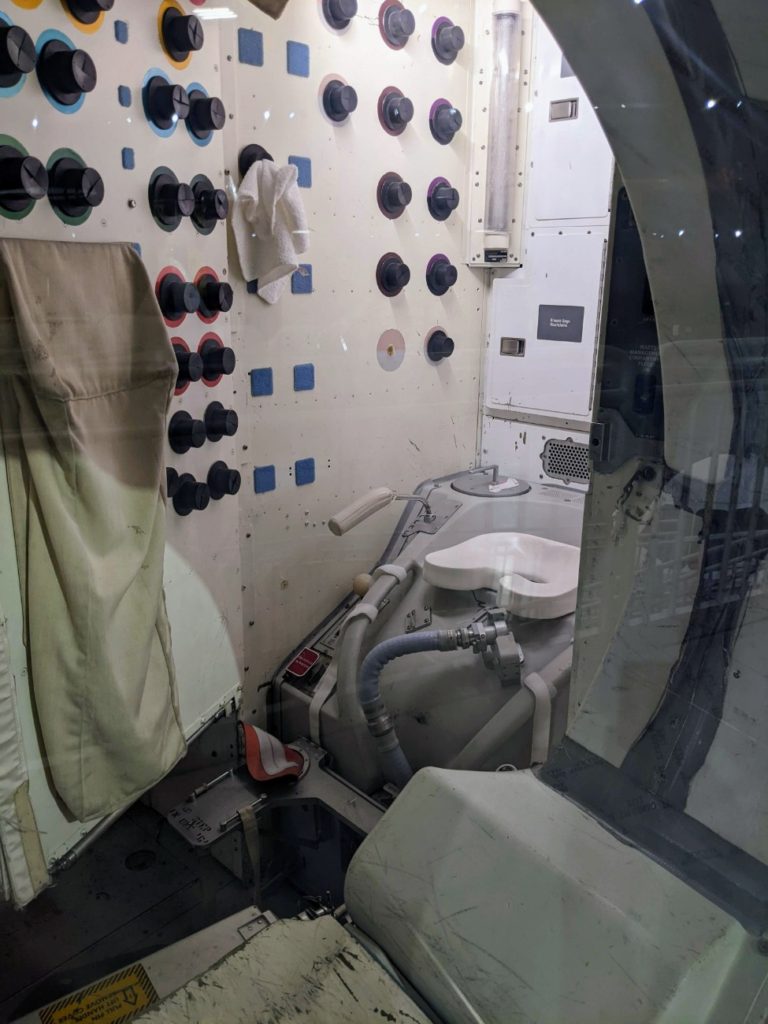
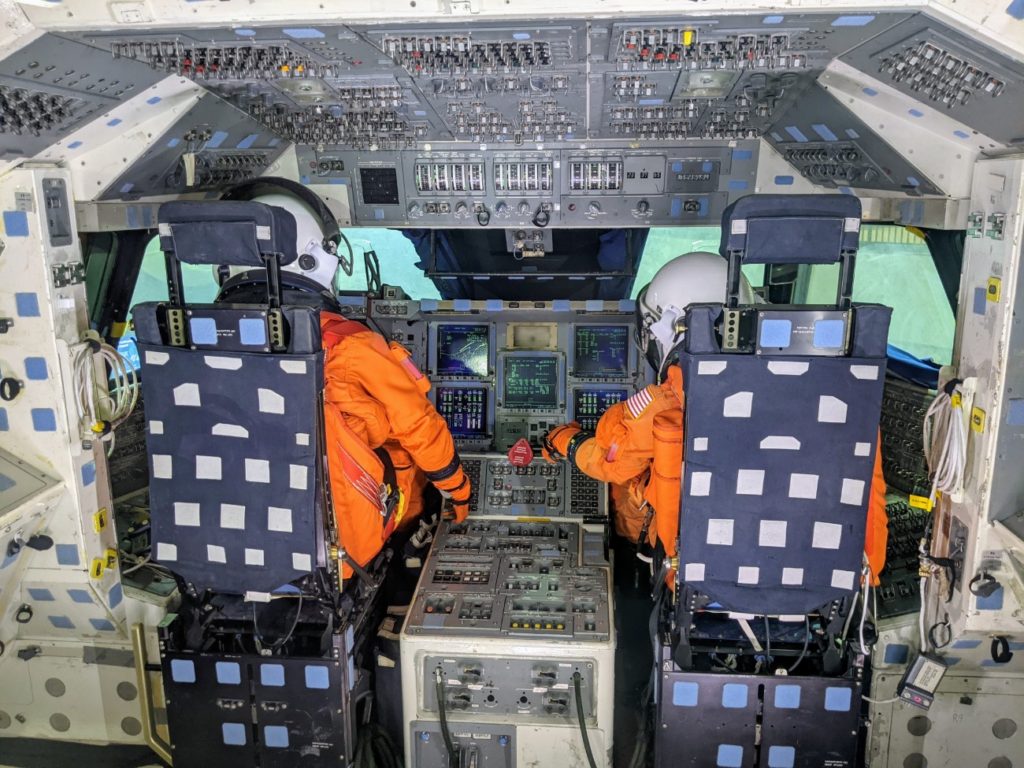
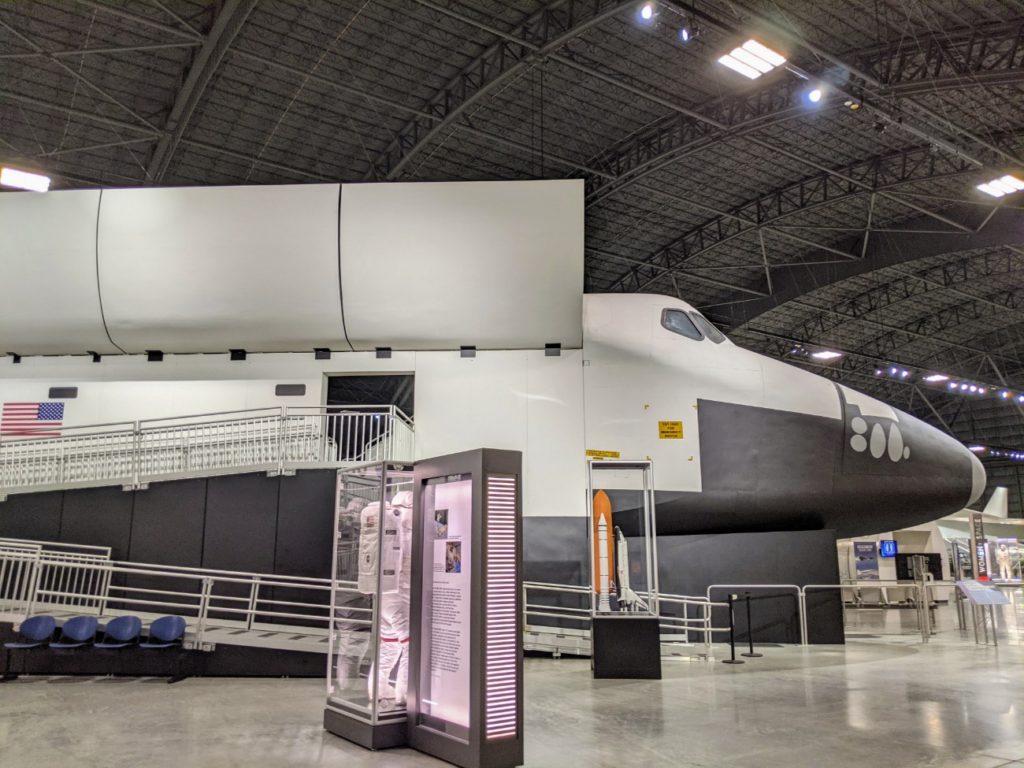
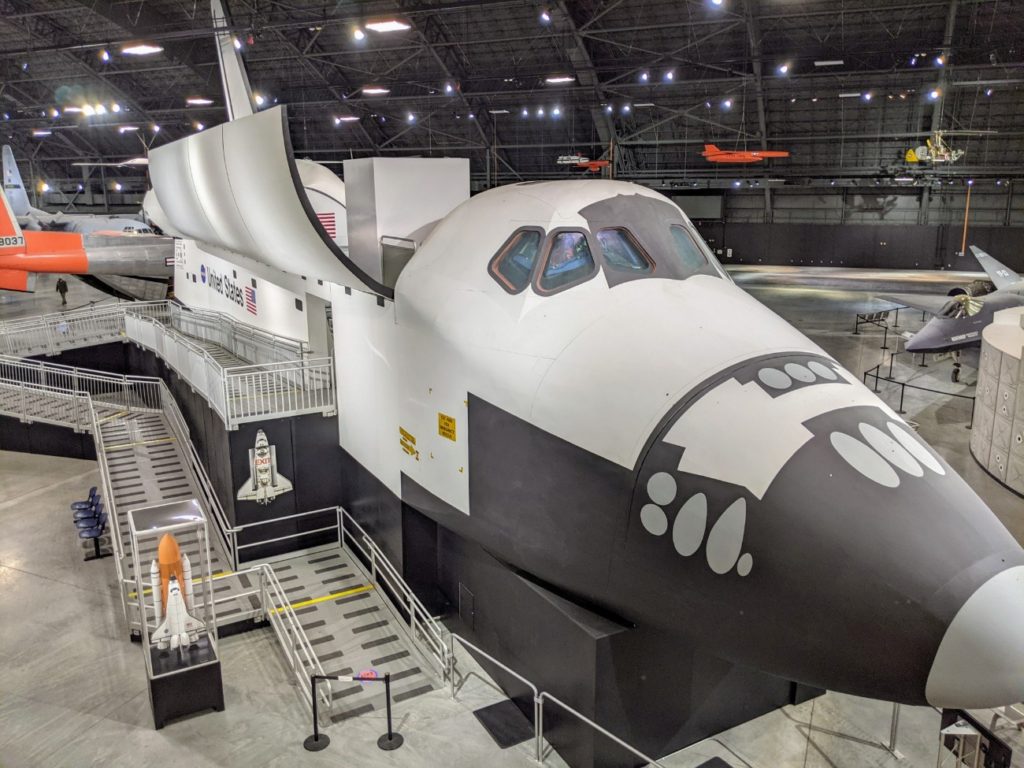
The rest of the right side of this hangar is filled with experimental aircraft from over the years. From short little midget planes to Thunderbird prototypes, there’s a lot here that’s fun. My favorite is the flying-saucer like Avrocar built in 1950s Canada.
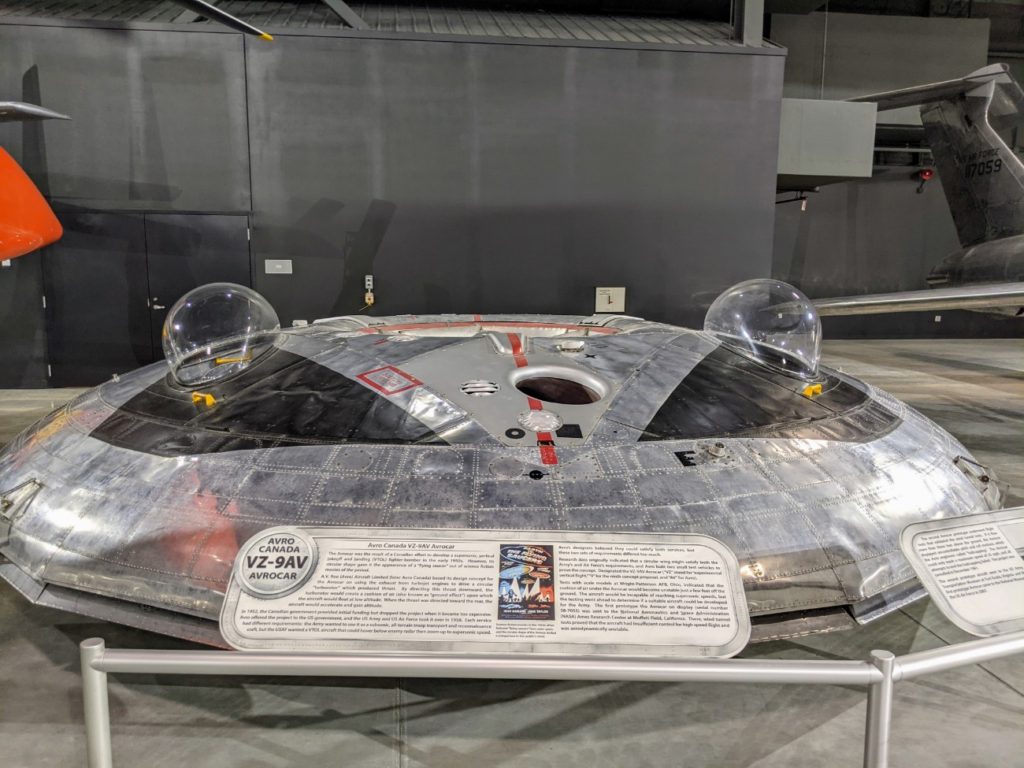
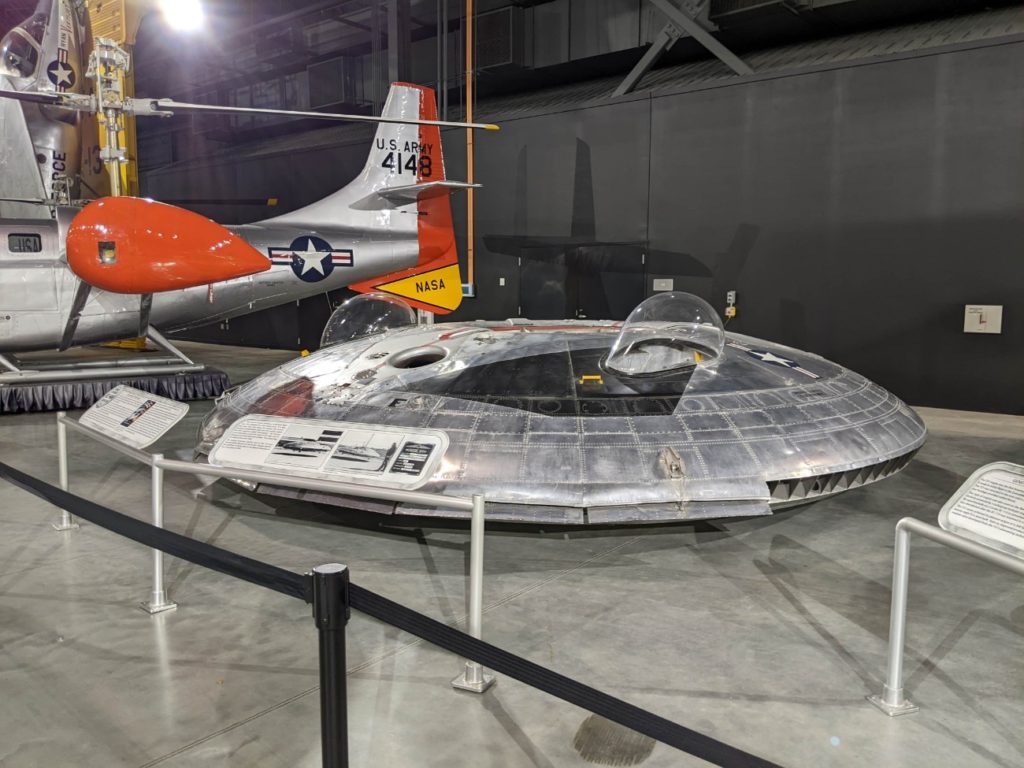
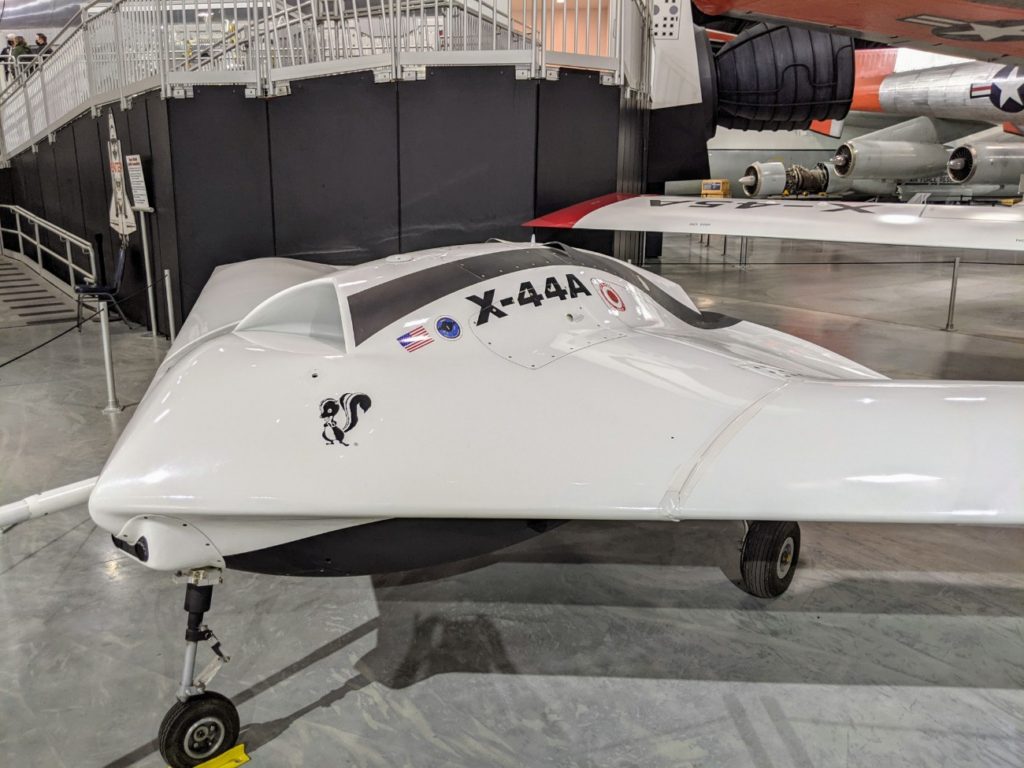
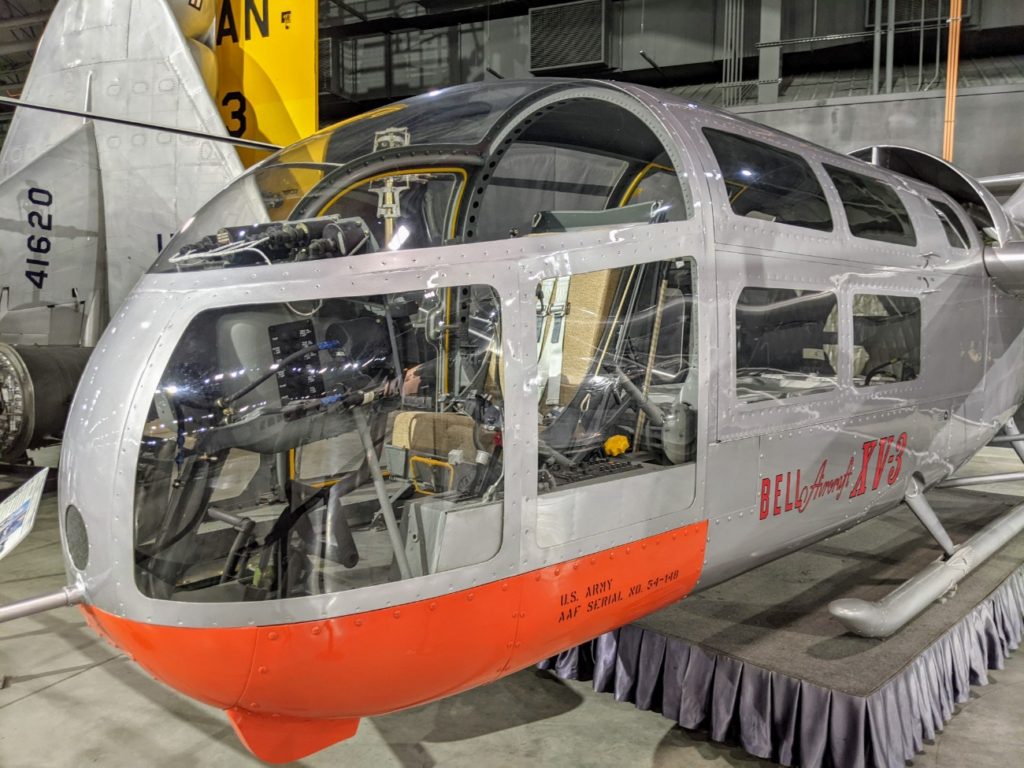
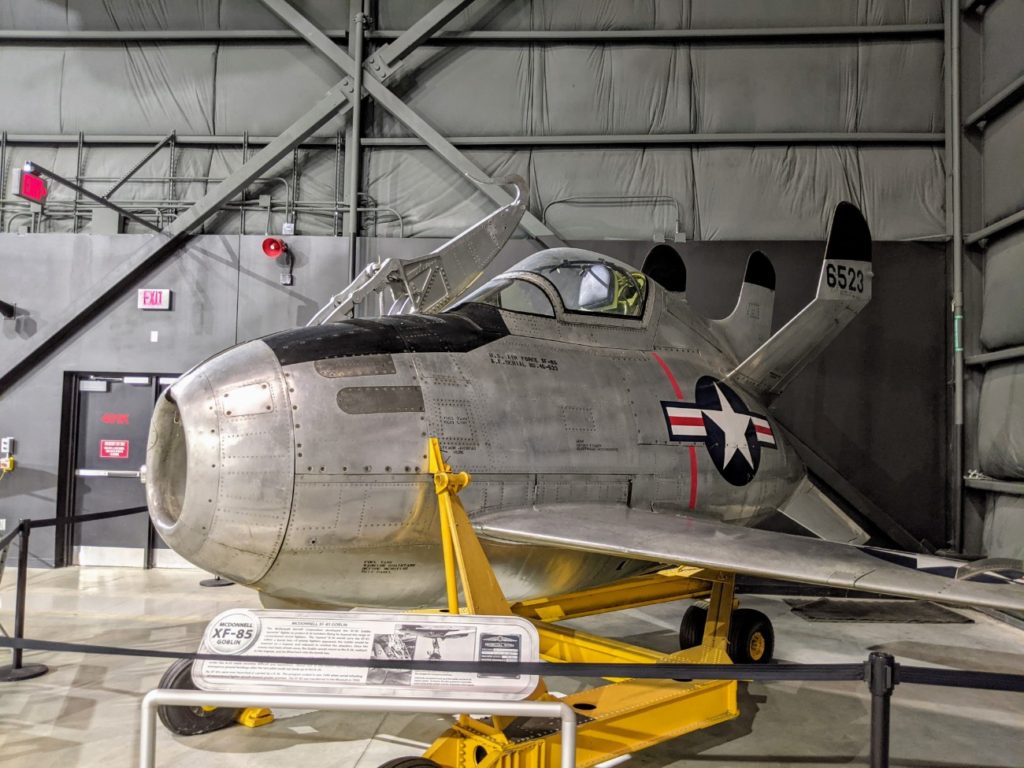
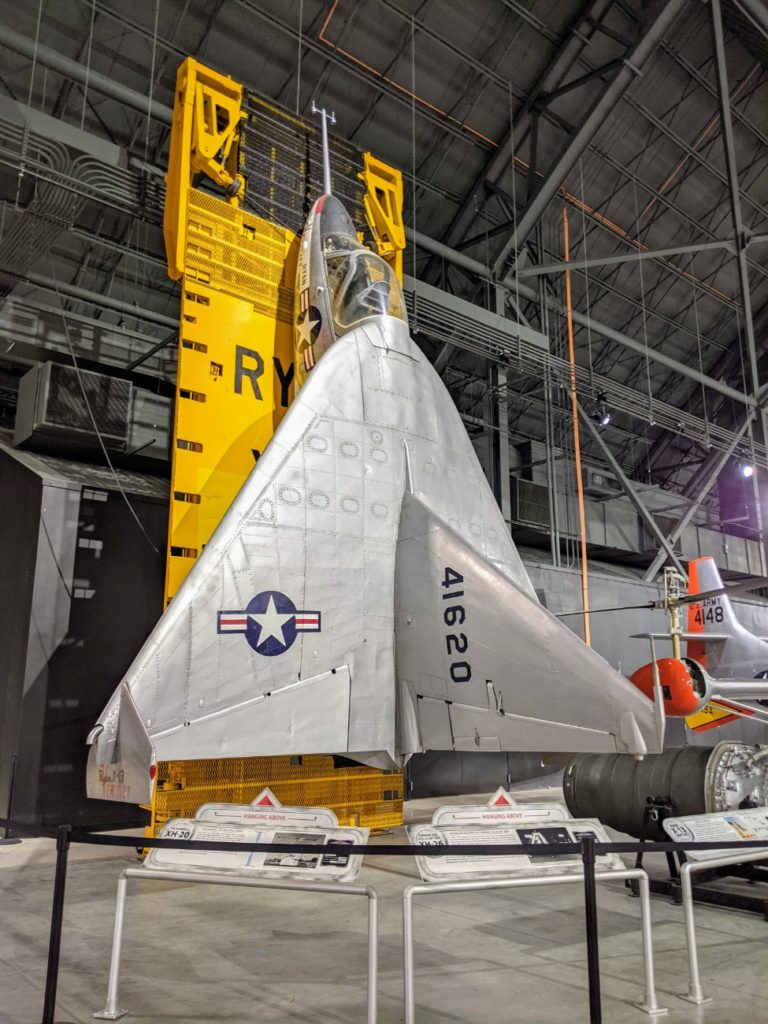
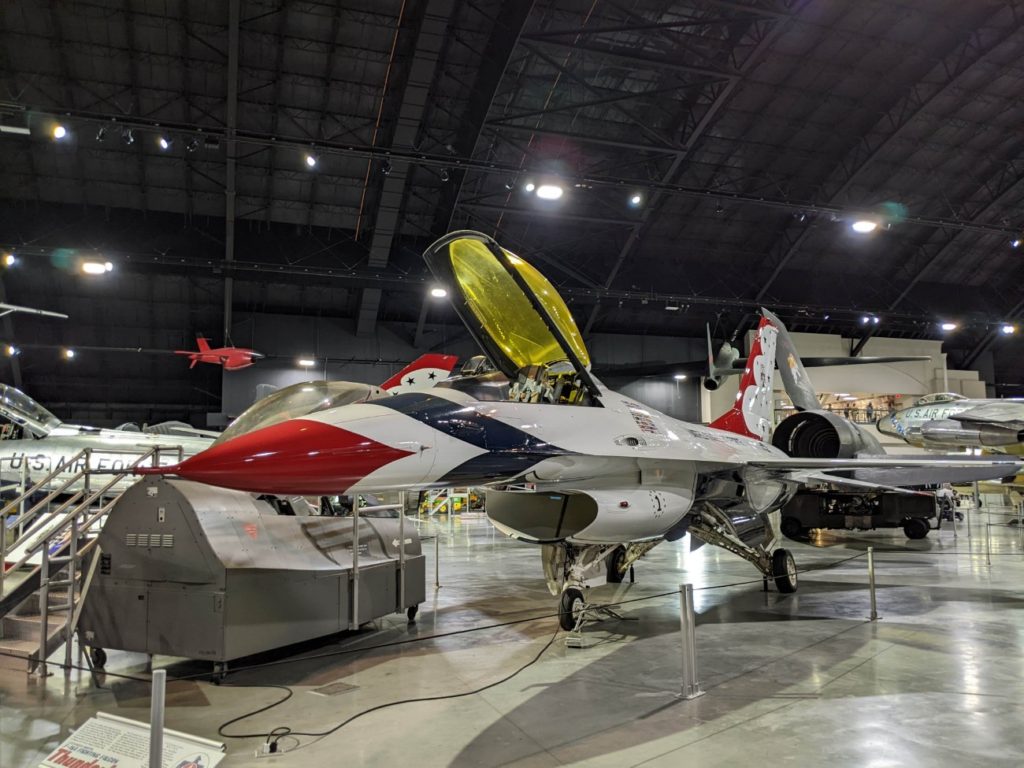
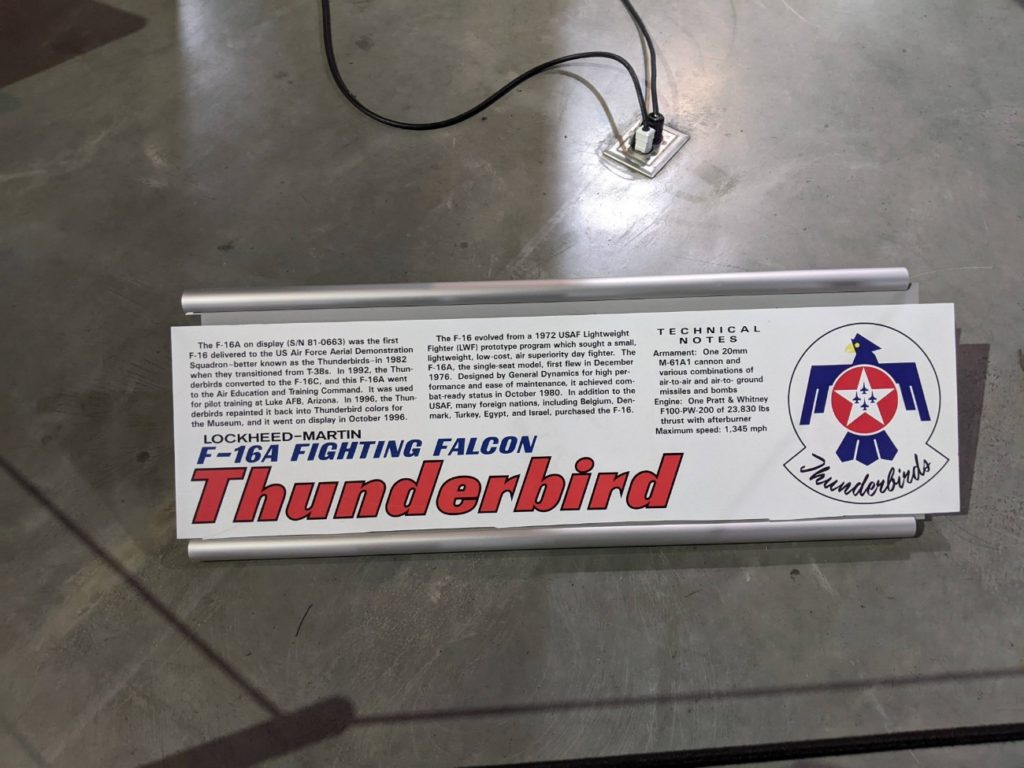
Also in this hangar is the Hanoi Taxi, a C-141 jet cargo plane used to pilot POWs out of Vietnam and the Philippines, as well as three more decades of service afterward. On my guided tour of this hangar, our guide was the last captain of this plane!
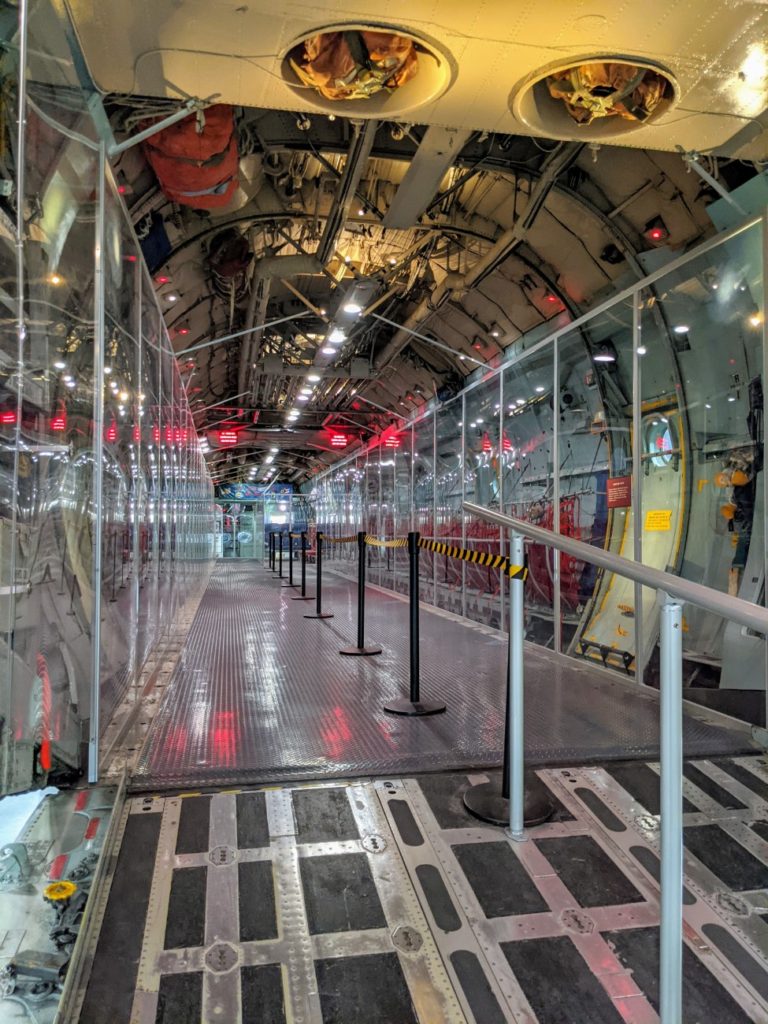
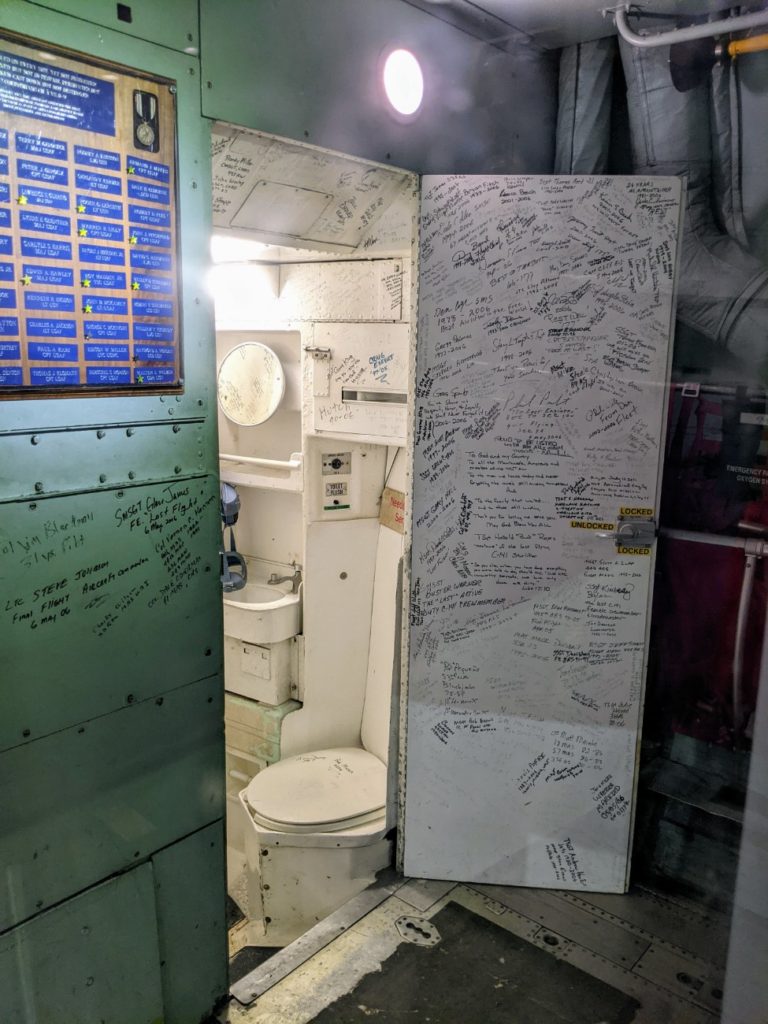
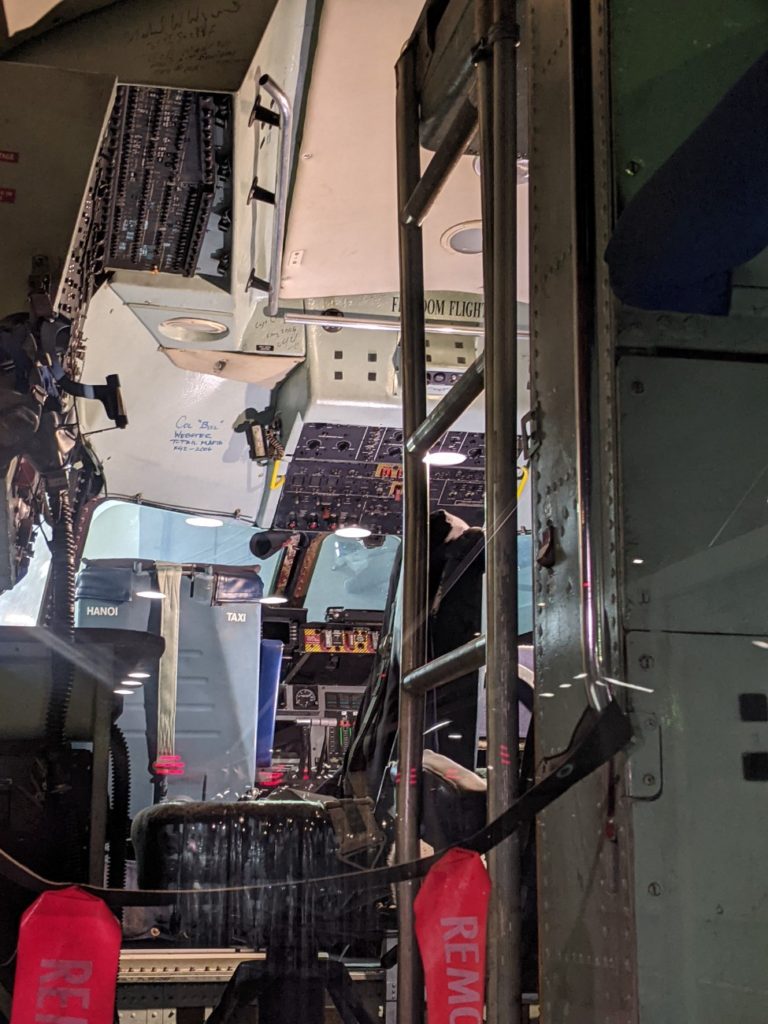
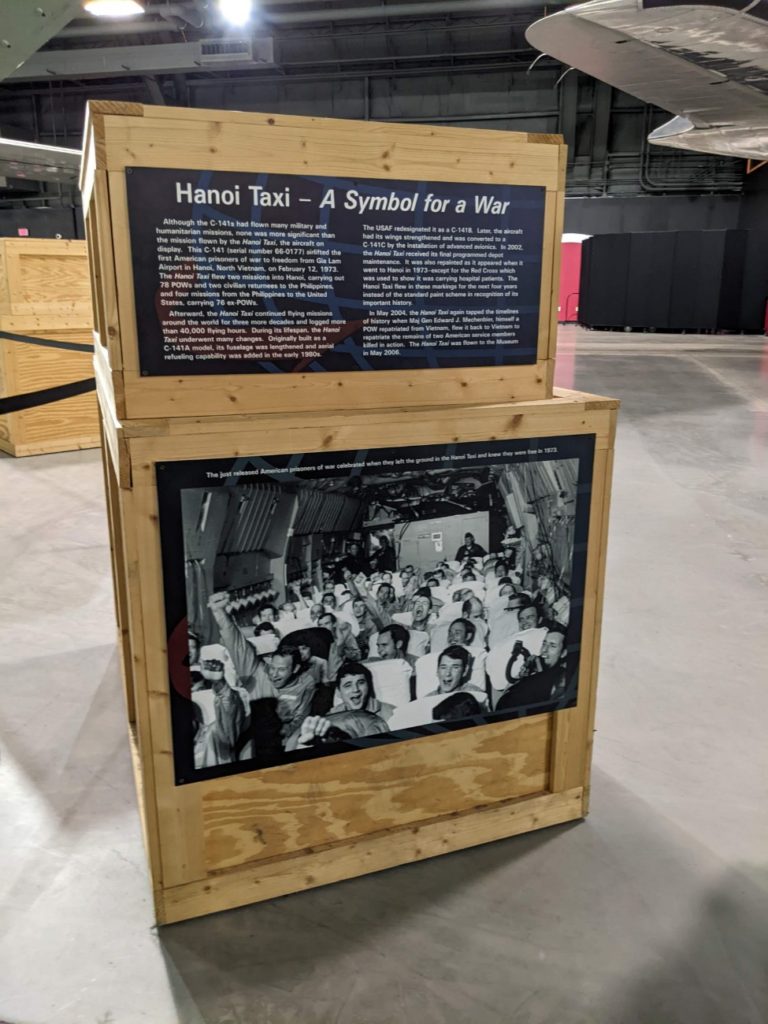
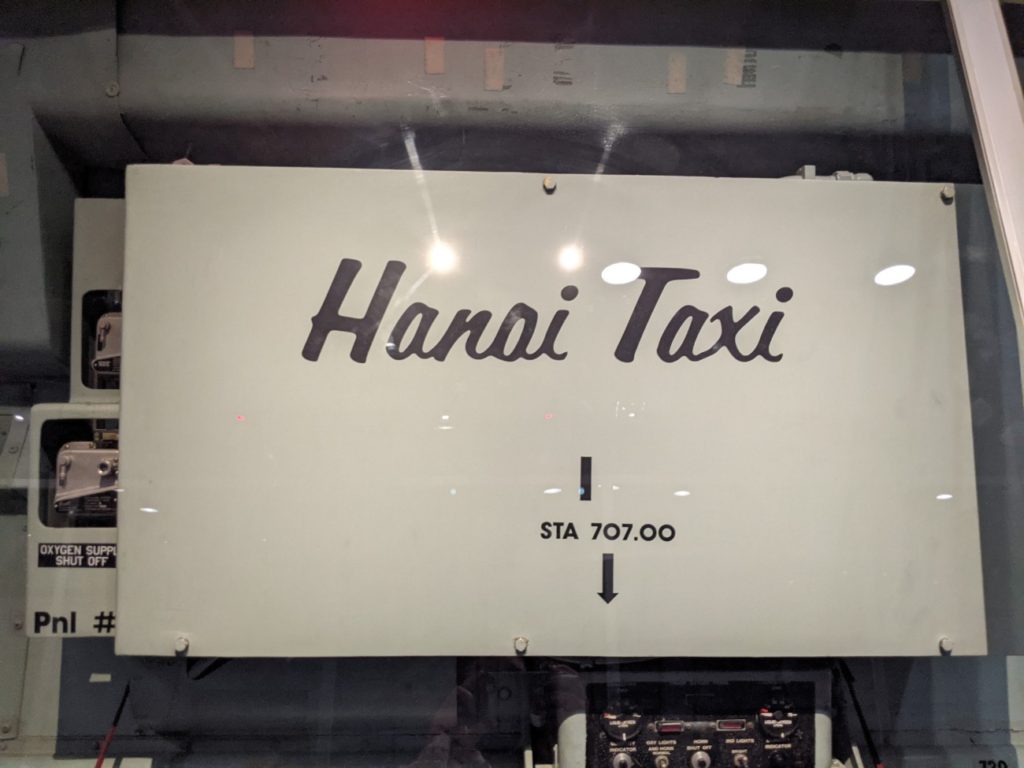
Presidential Gallery
On the other side of hangar four are the presidential planes, large and small. The big ones are Dwight D. Eisenhower’s and the plane that brought back the body of John F. Kennedy. You can also see the discreet elevator they used to get Franklin D. Roosevelt up into his plane without the press seeing him out of his wheelchair and a small plane one of the first ladies reportedly used for her shopping trips.
Almost all of these you can walk through and it’s so interesting! There are large kitchens and bathrooms, office-like areas for the press and support staff with copy & fax machines and telephones. Then always in the back, the large office suite for the president with a huge desk and usually a map on the wall. They are set up so that as you exit one, you’re near the entrance to another. They can be a tight squeeze since there are plexiglass barriers so you can’t touch anything.
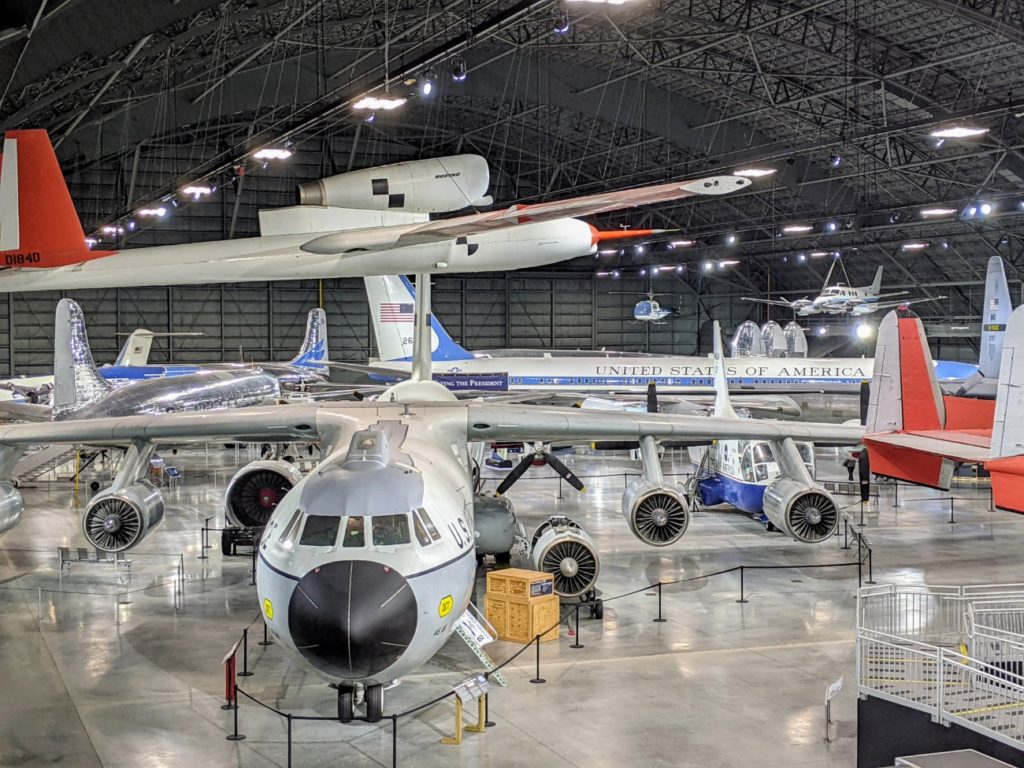
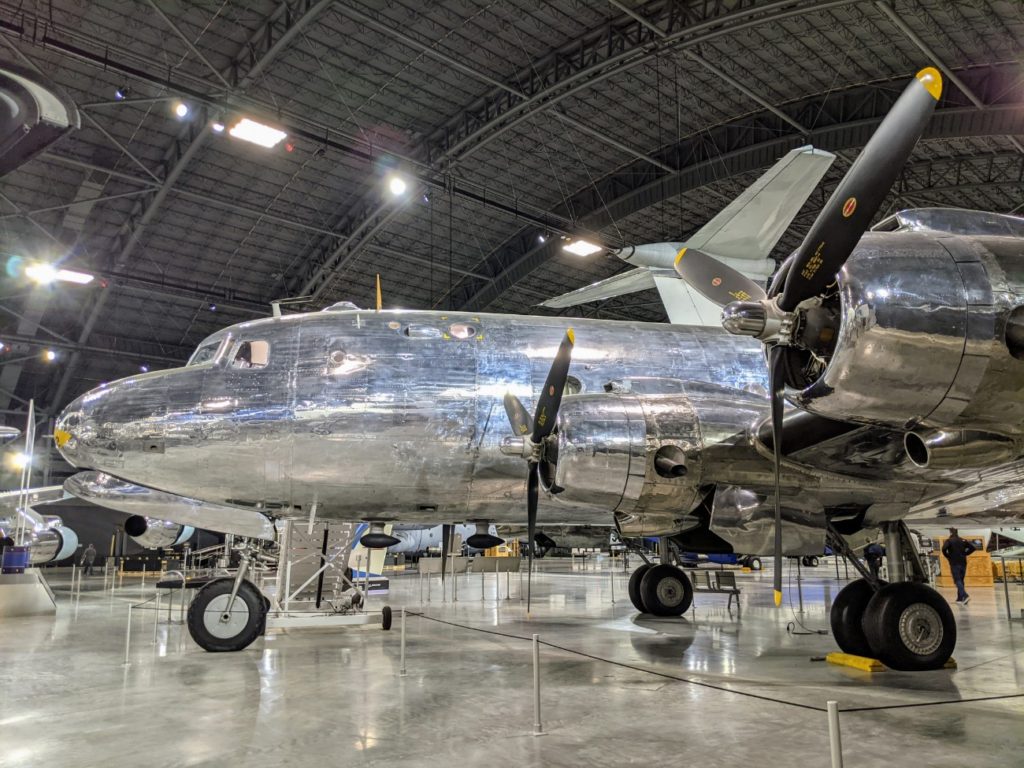
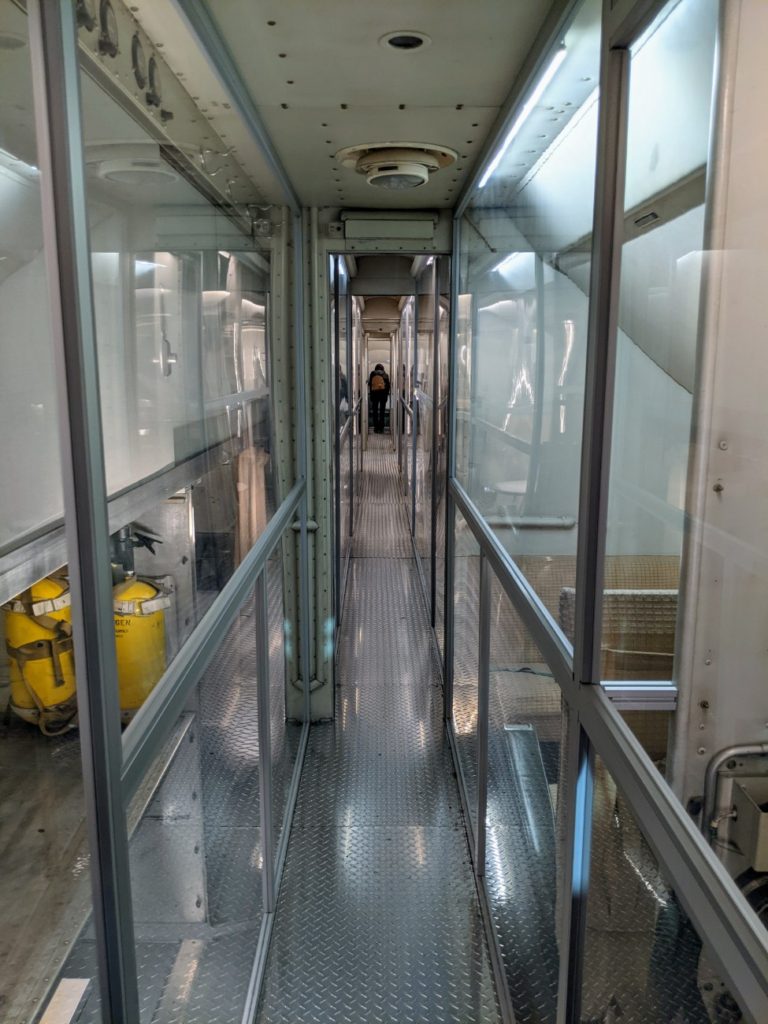
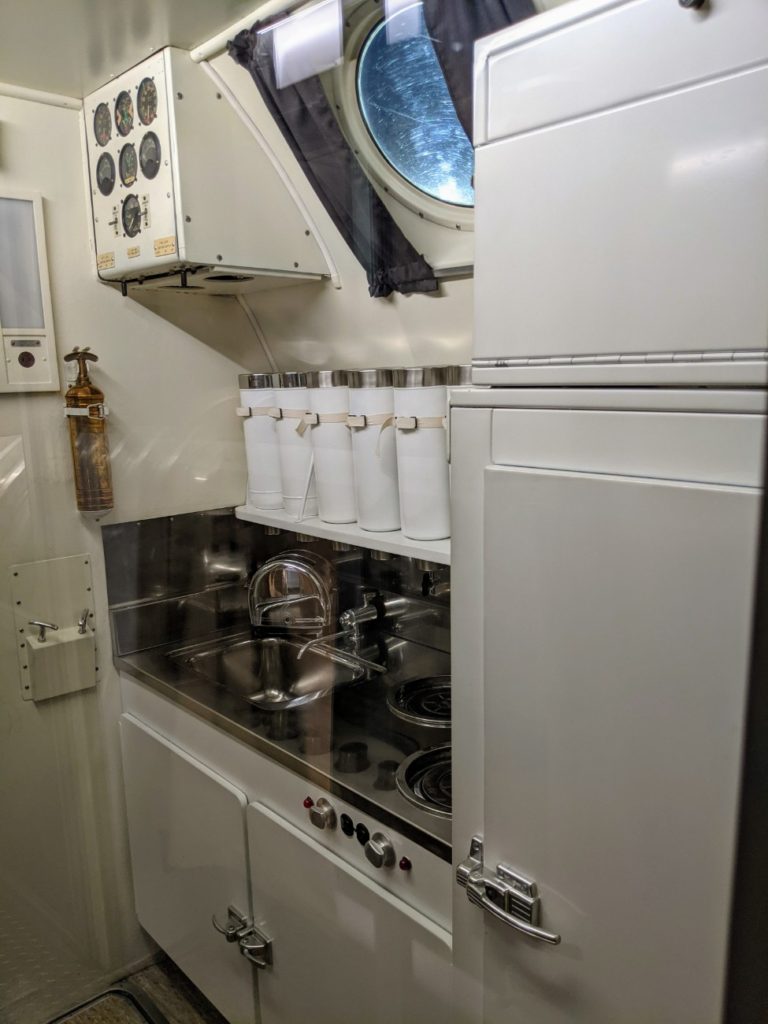
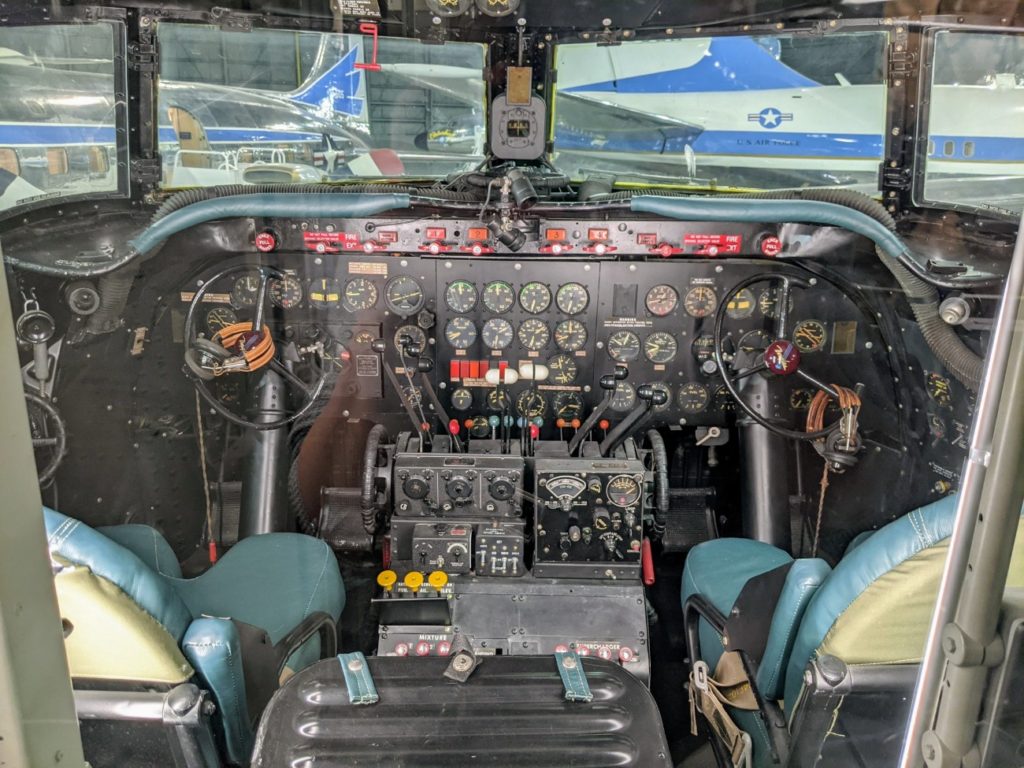
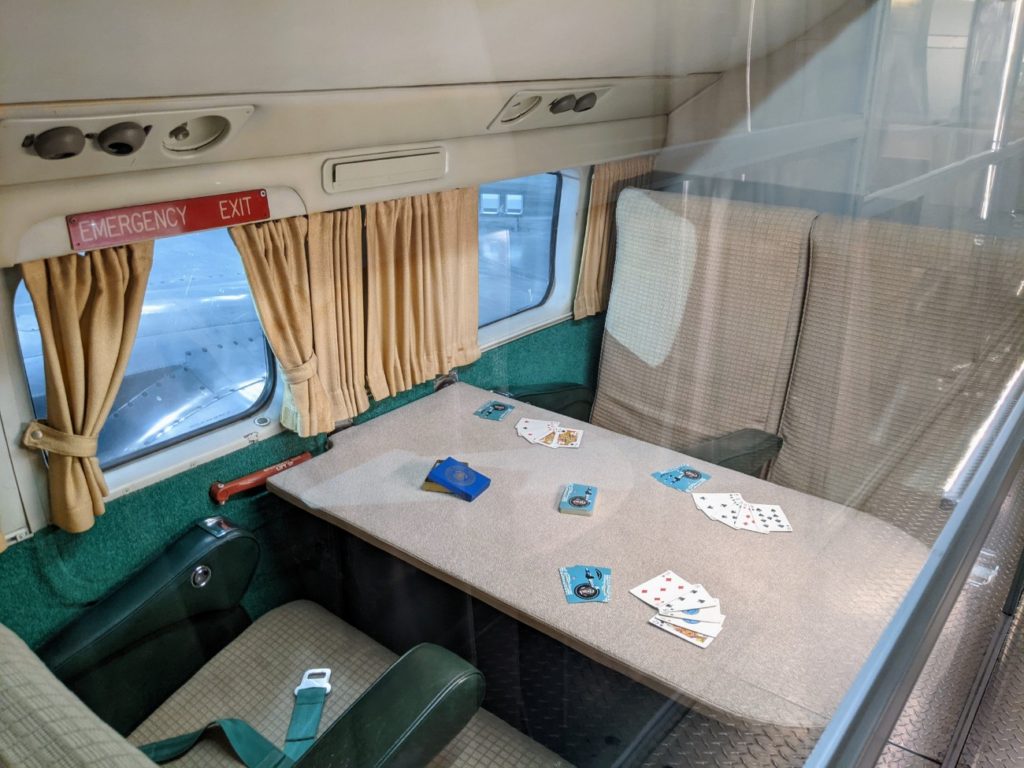
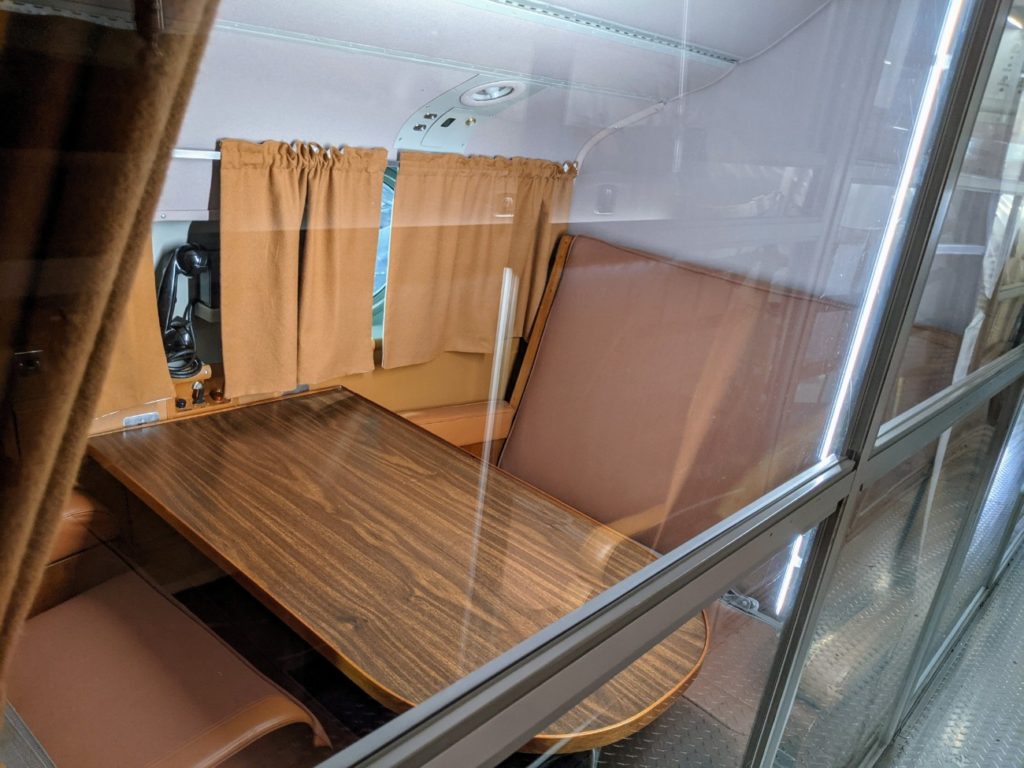
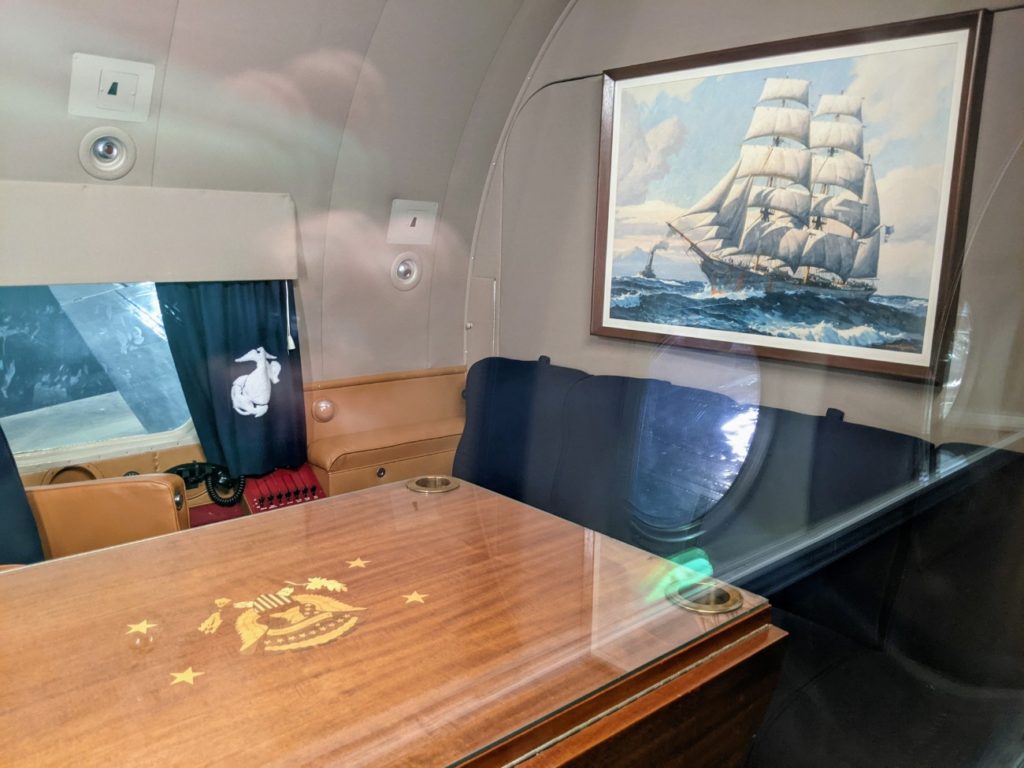
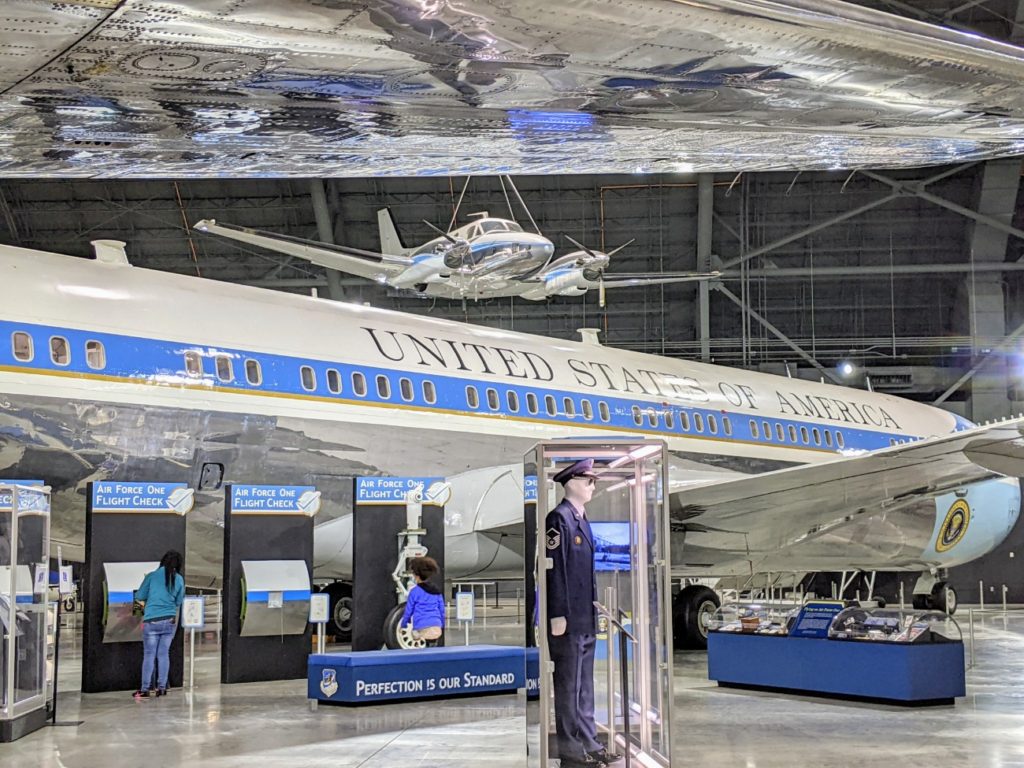
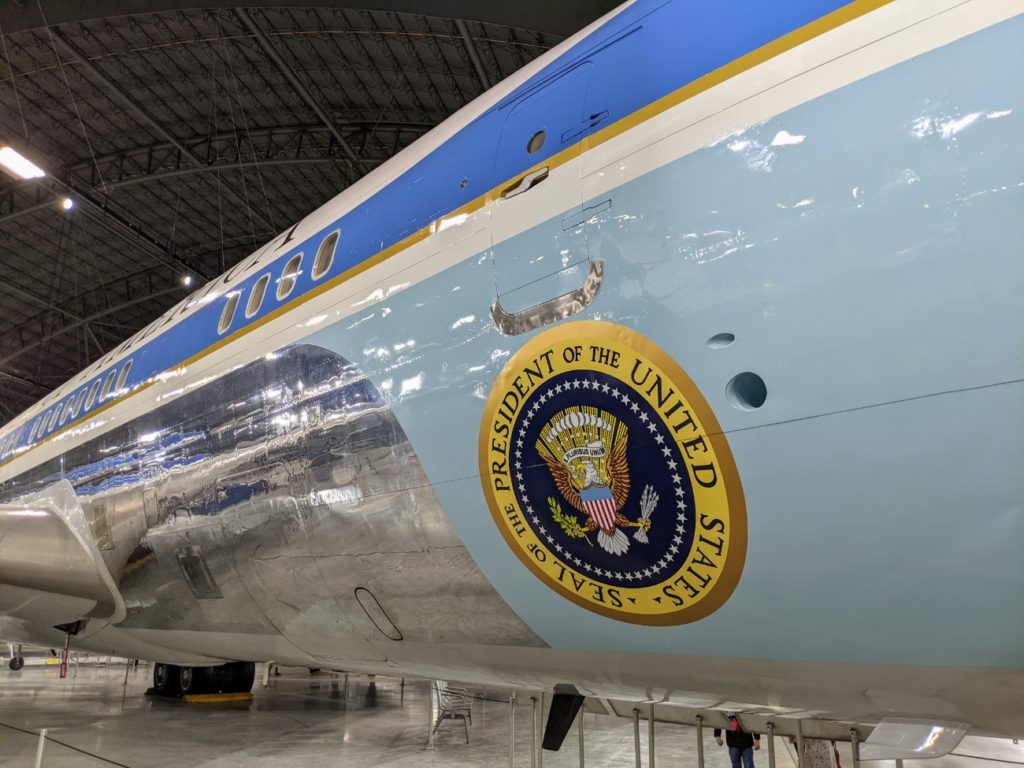
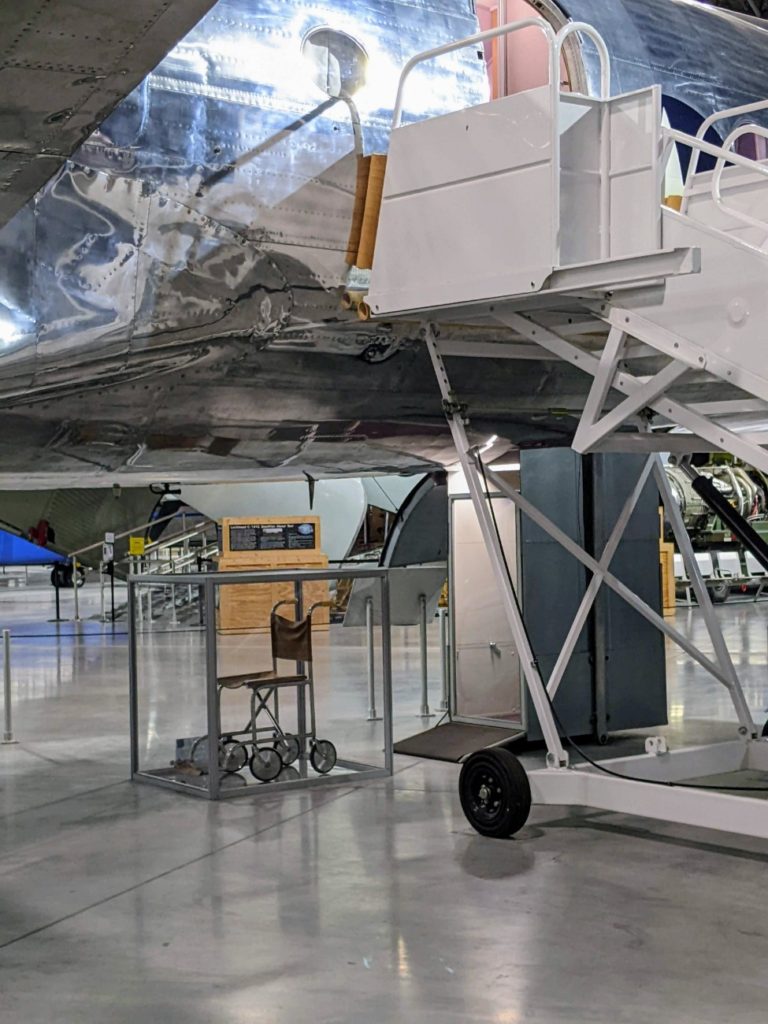

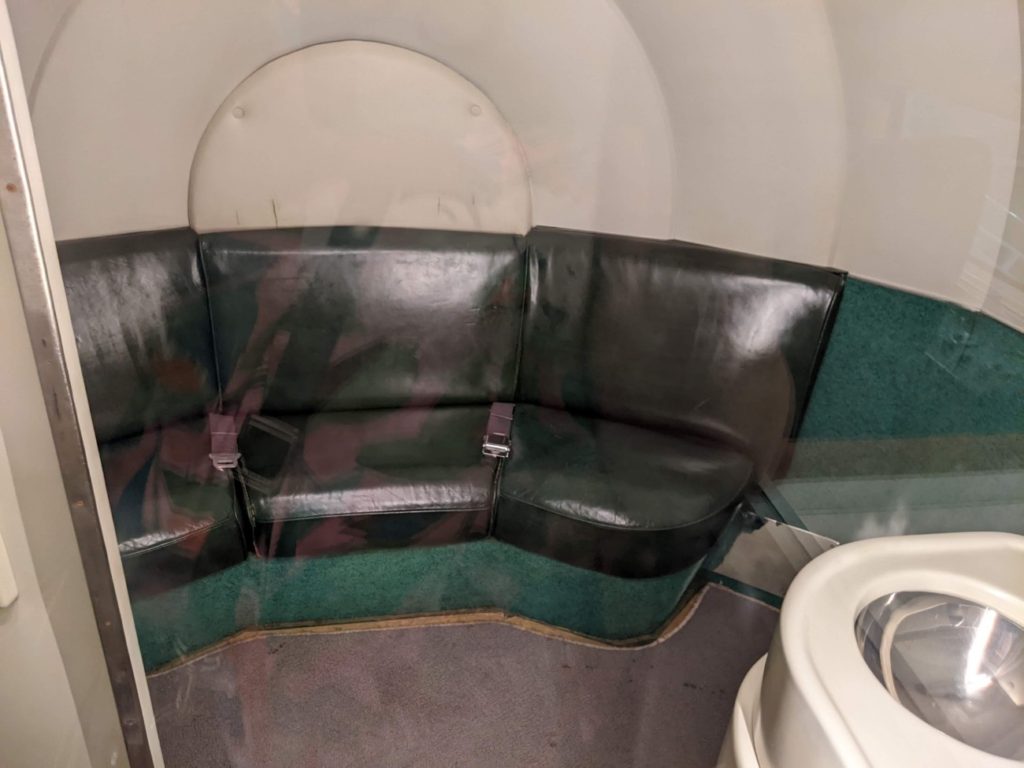
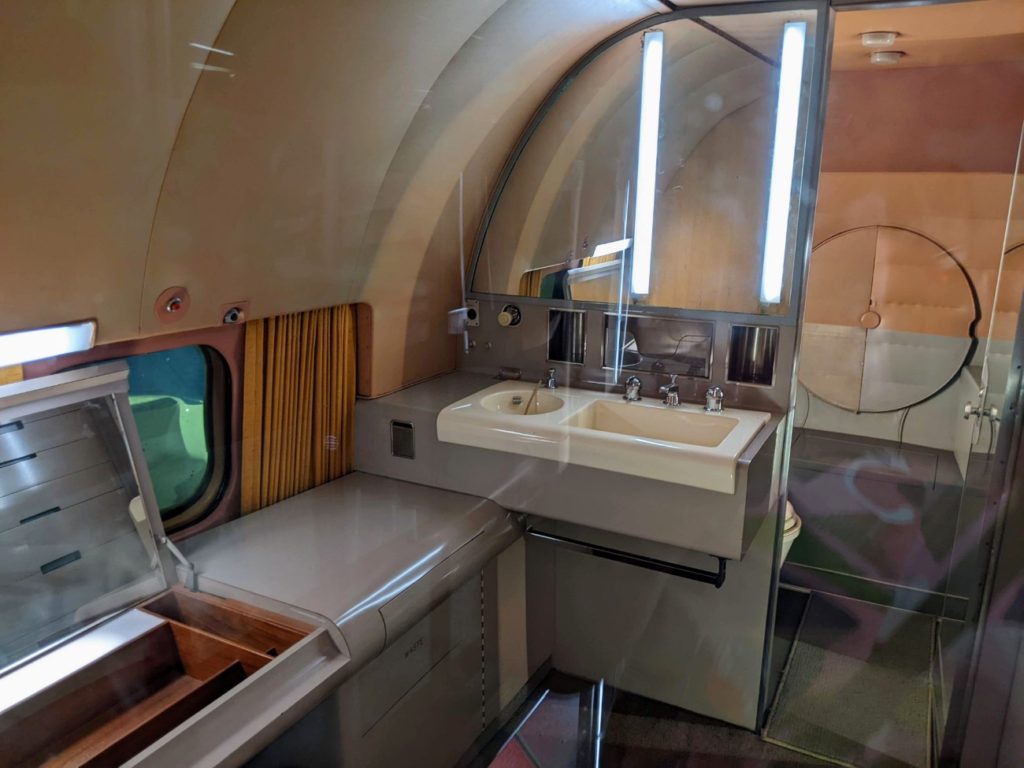
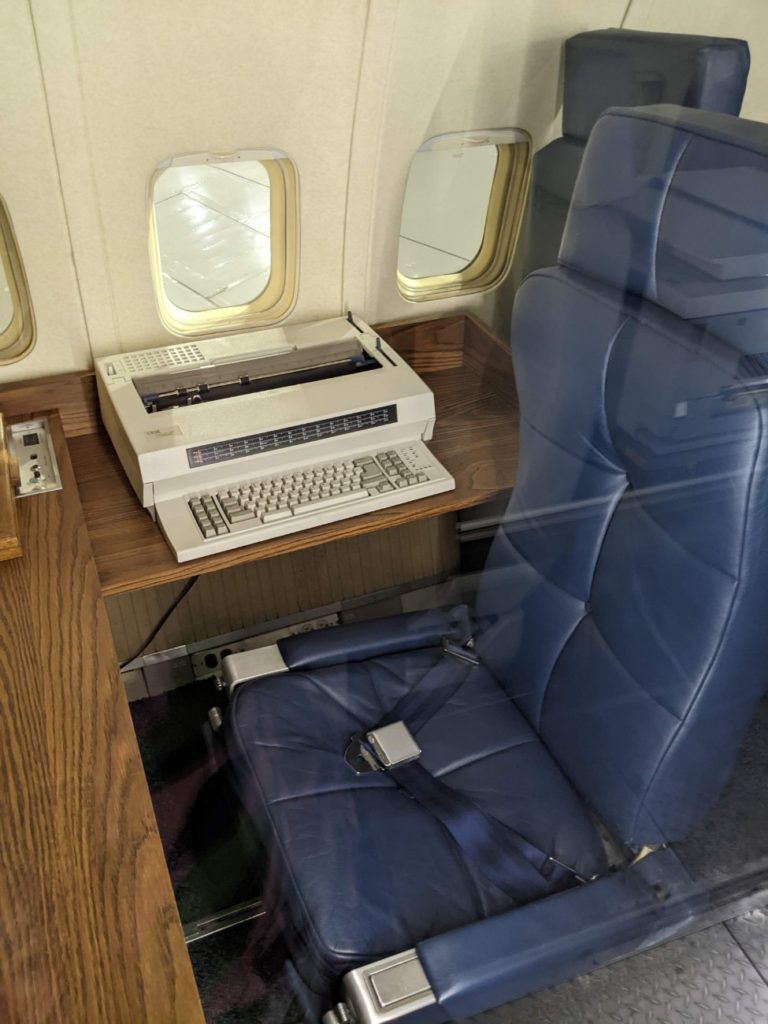
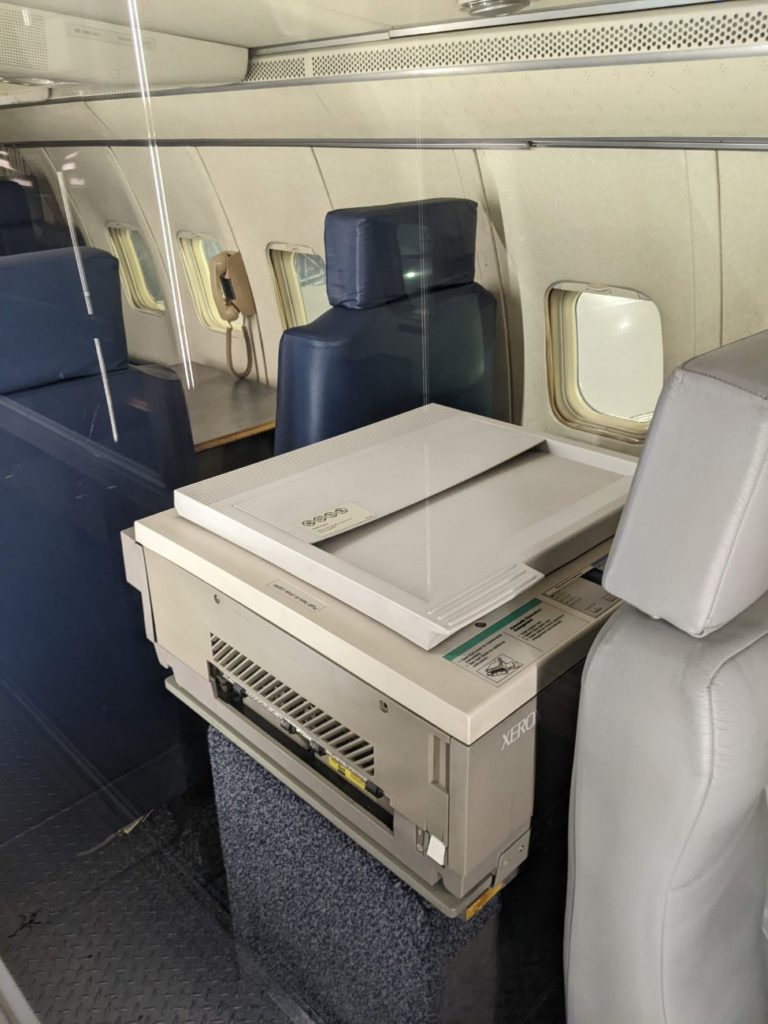
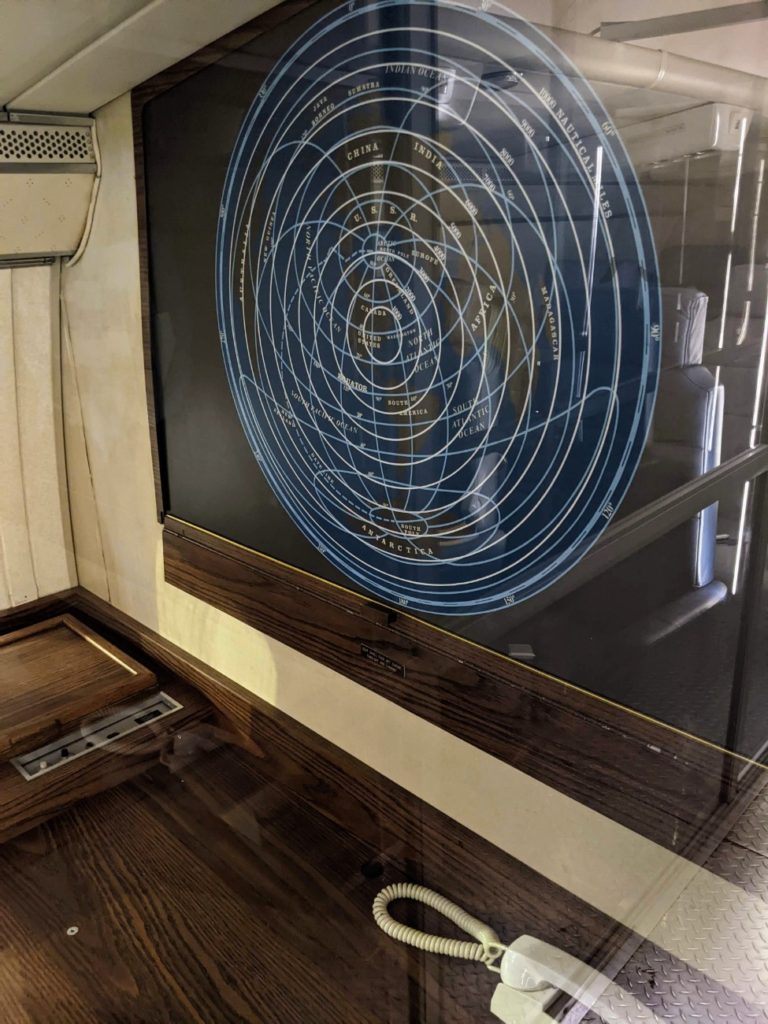
If there are any temporary exhibits, they are found in the back of hangar four. I think there’s a Lego exhibit on right now.
Tours
There are free tours of every hangar if you want a guided tour. Each tour is about 75 minutes long. So if you want to take all the tours back-to-back, you’ll have about 15 minutes between each tour and 45 minutes for lunch. To manage it, you’d have to do hangar 1 at 10 am, hangar 2 at 11:30, lunch at about 12:45, hangar 3 at 1:30, and hangar 4 at 3:00. I’ve done this and it is very tiring.
I really enjoyed the tours and they seemed to get better as you go along. I especially enjoyed the one in the last hangar. But it’s a very long day to do them all at once. I think it might be better to choose just one or two tours for the day in the areas you are most interested in.
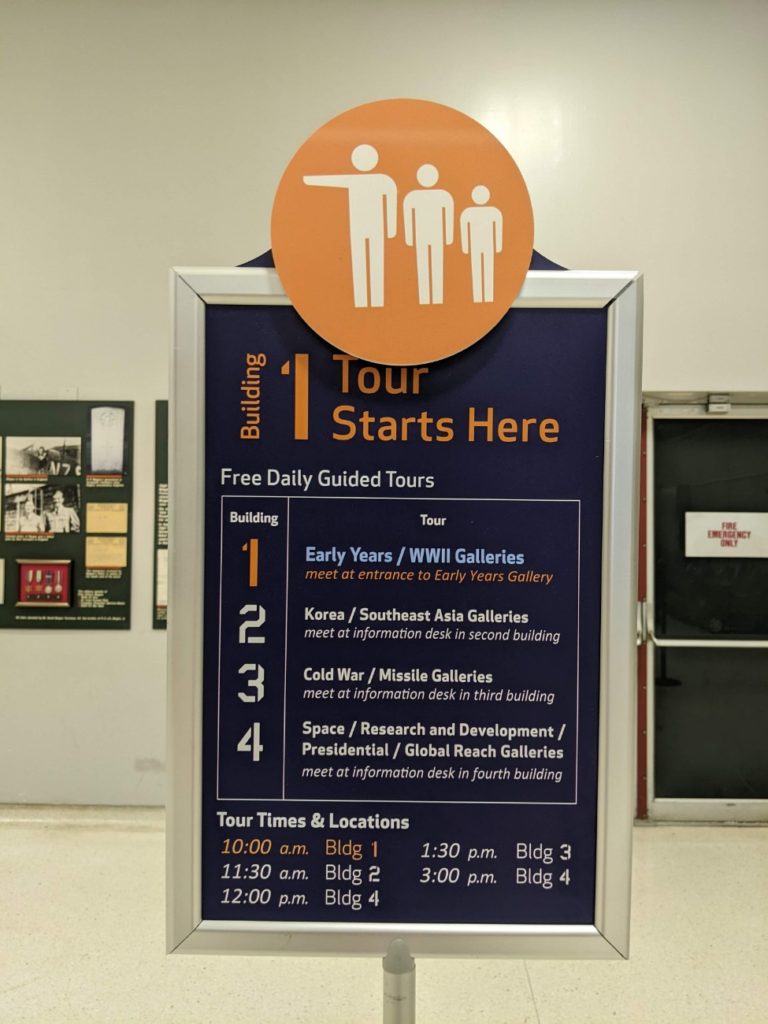

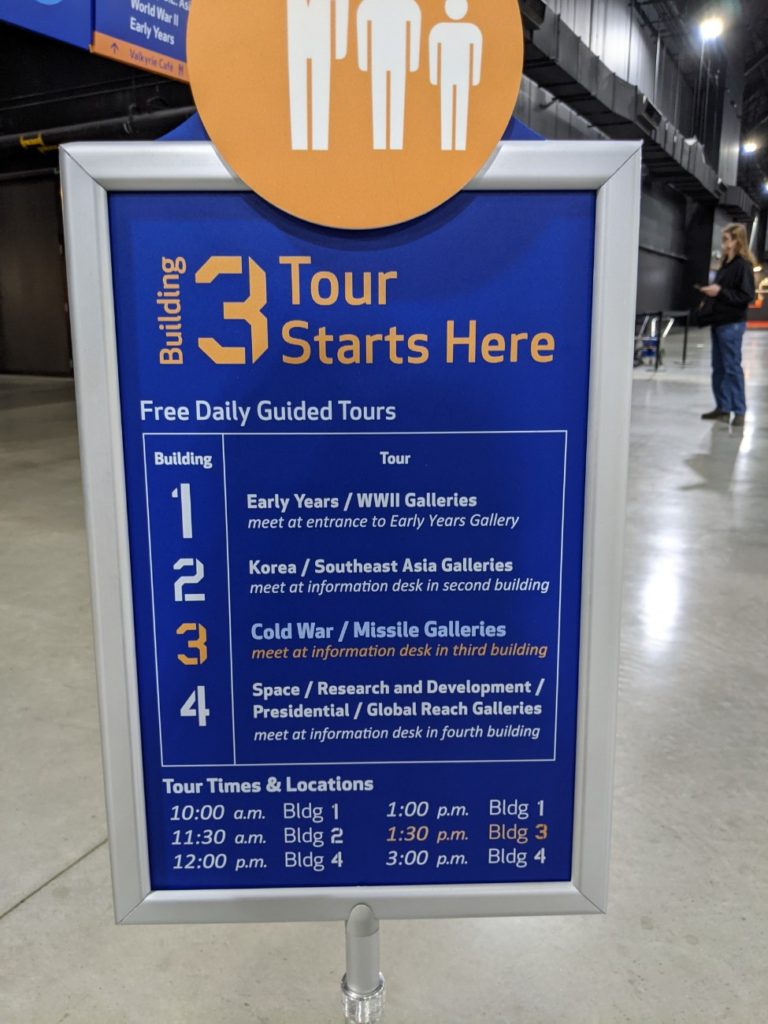
one of my tour guides – the one who captained the Hanoi Taxi
The first time I visited the National Air Force Museum, I feel like I saw more of it in a shorter time on my own. But I also really enjoyed the stories from the tour guides when I came back to take the tours and learn more. So both ways are a good way to see the collection.
Food
The National Air Force Museum knows it’s a big place, so they offer two spots to eat without leaving. The bigger cafe is near the gift shop on the second floor. There are stairs by the entrance hall. There’s an array of foods in a grab-and-go area. Coolers hold wraps and salads, while heat lamps keep pre-made cheeseburgers and fries warm. I think there may have been pizza available as well, and I know there were nachos – of the sort that you grab a bag of tortilla chips and dip some plastic cheese out of a hot pot. None of it is newsworthy, but it’s not terrible. Especially if you only have 45 minutes between tours.
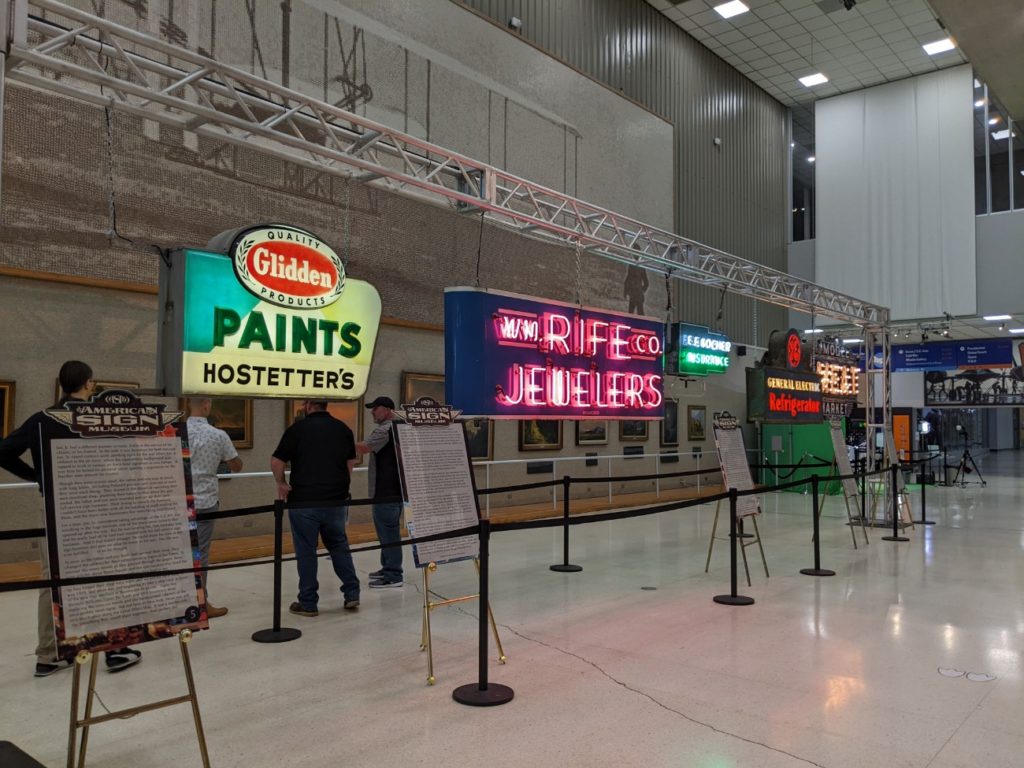
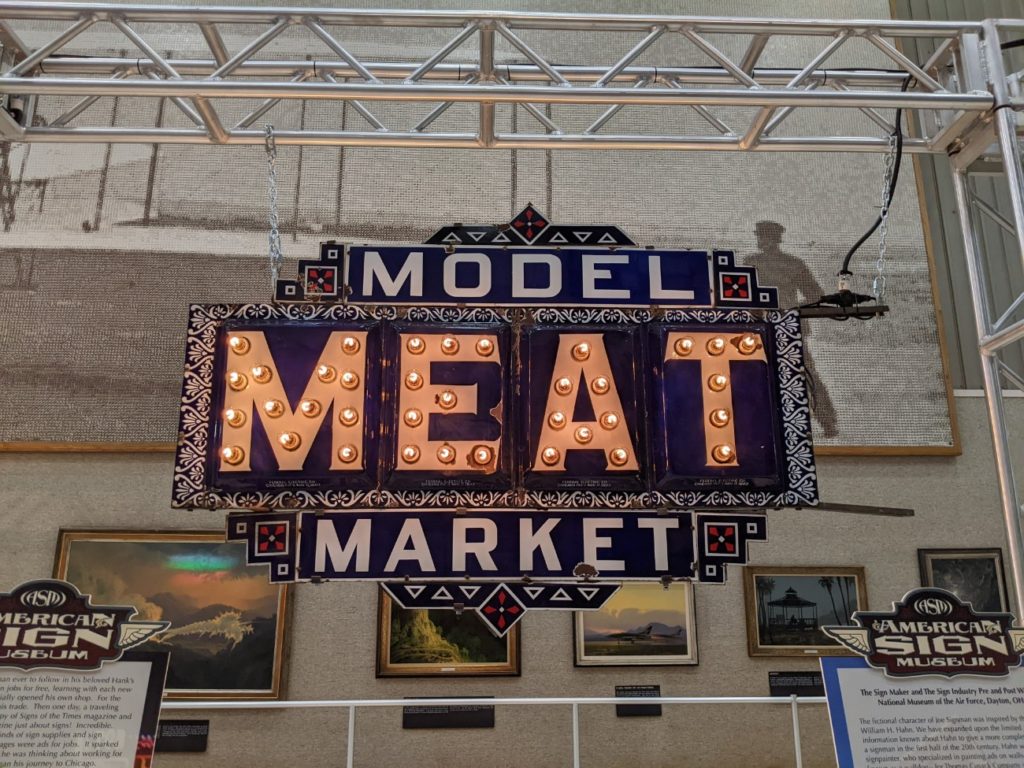
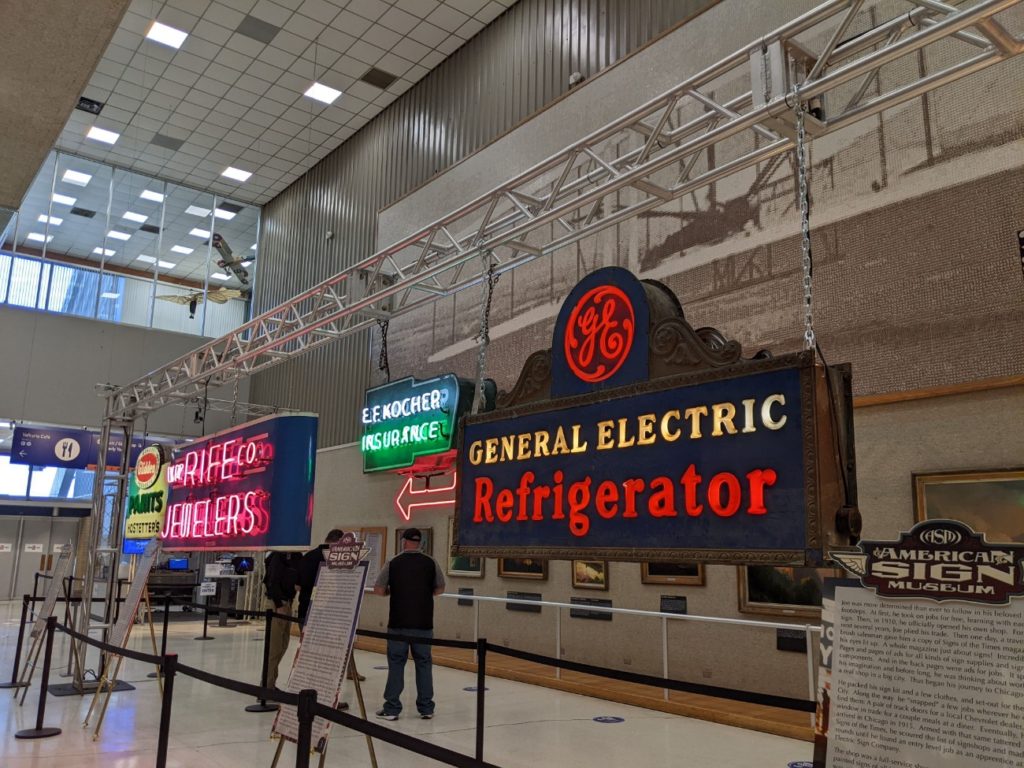
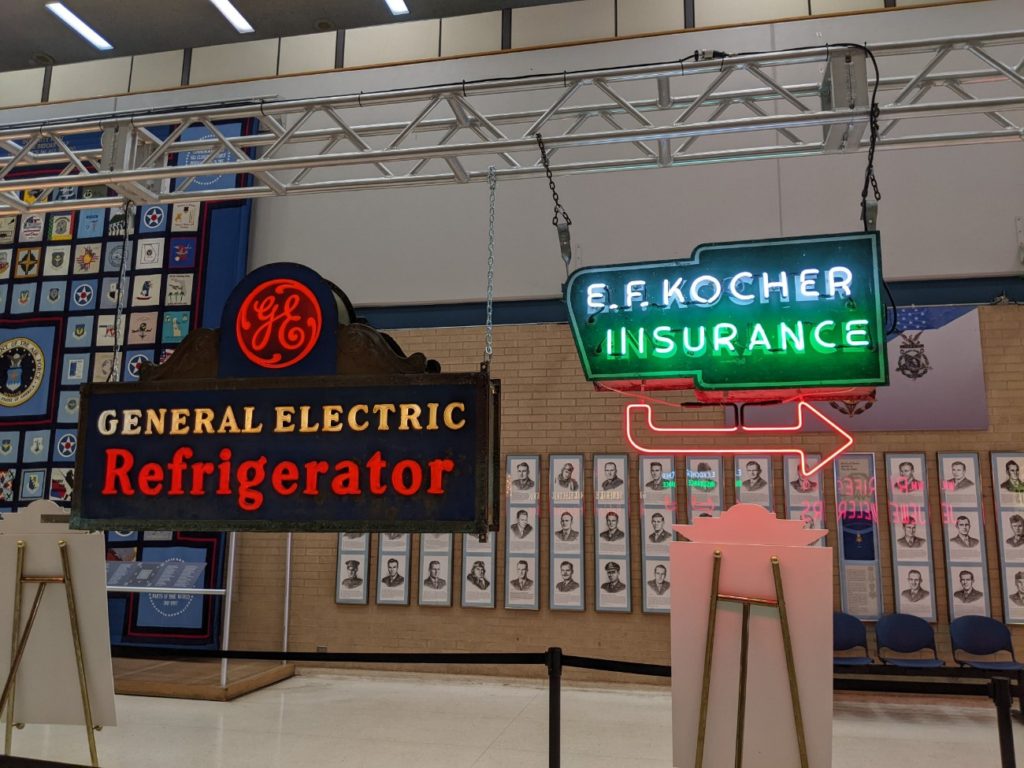
A smaller cafe is above the Missile Gallery with a nice view into the space/presidential hangar. I didn’t see anyone up there when I checked but it looked like a smaller selection of the same foods as the main cafe.
You could also bring your own food – there is a park outside with picnic tables under a pavilion. You would just have to go through the bag check/metal detector again to re-enter.
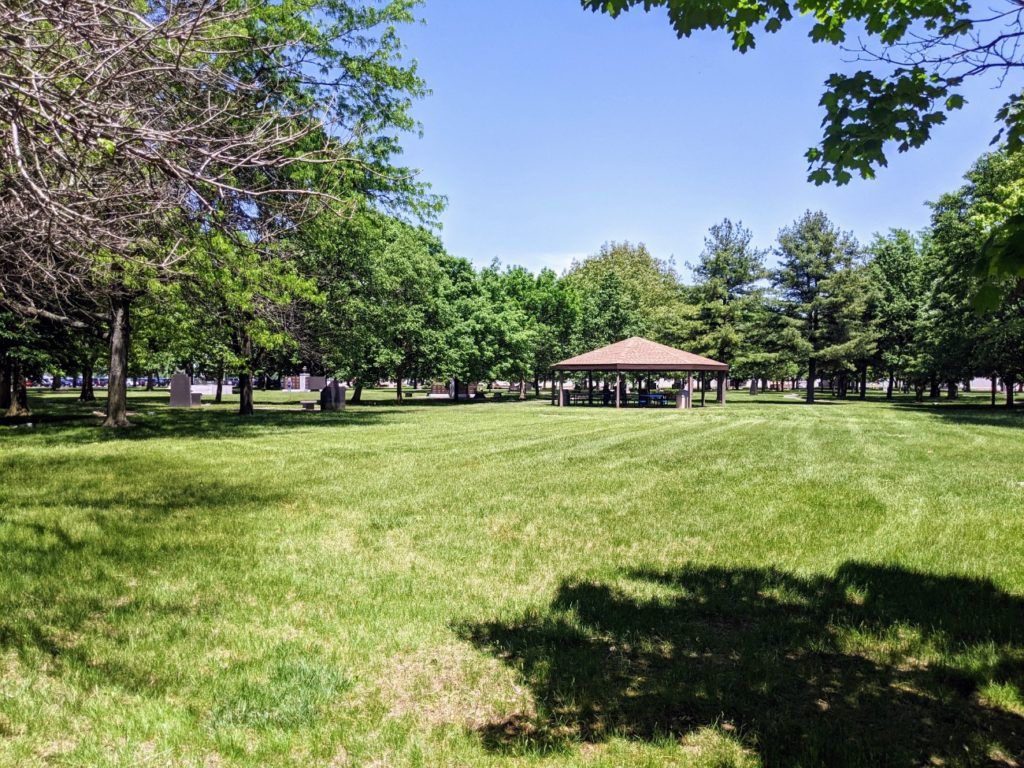
Gift Shop
The way the museum is set up, you exit through a large gift shop. It can get mobbed at the end of the day, so you might want to browse when you stop for lunch instead. There is some fun stuff in here, from model airplanes to puzzles and nice metal signs. There are also lots of toys and stuff for kids.
They were remodeling half of the shop during my second visit in May, so all the clothing items were out in a glass atrium next to the entrance of the theater. There are loads of t-shirts and sweatshirts featuring planes or Ohio-centric motifs, and even little flight suits for kids.
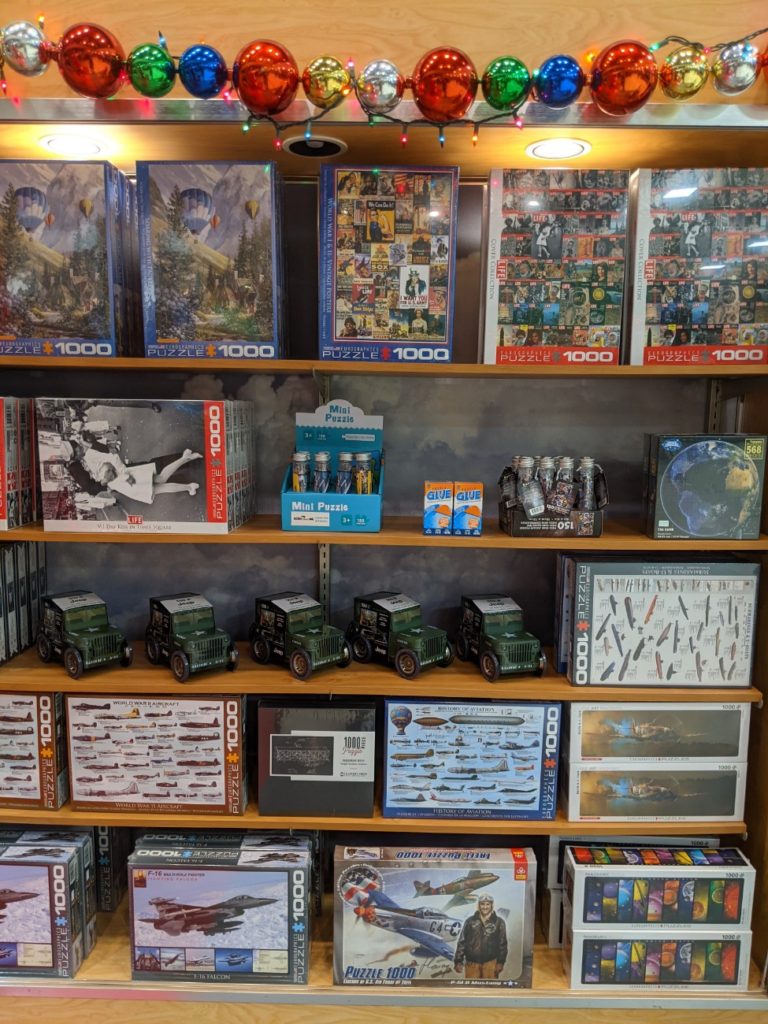
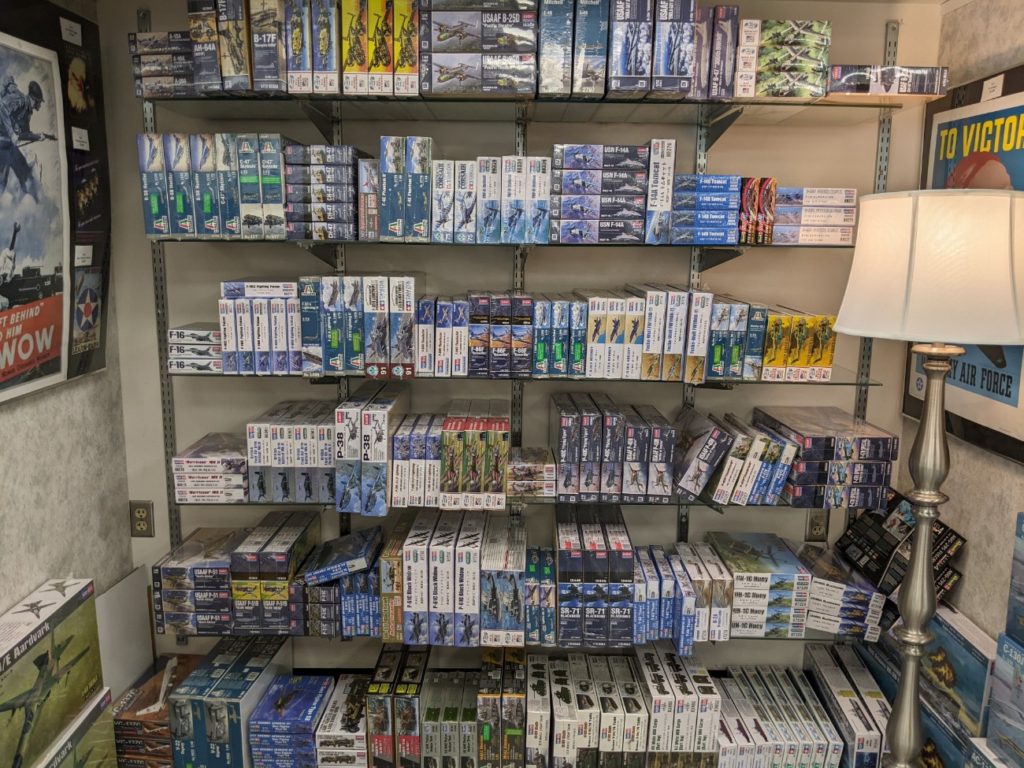


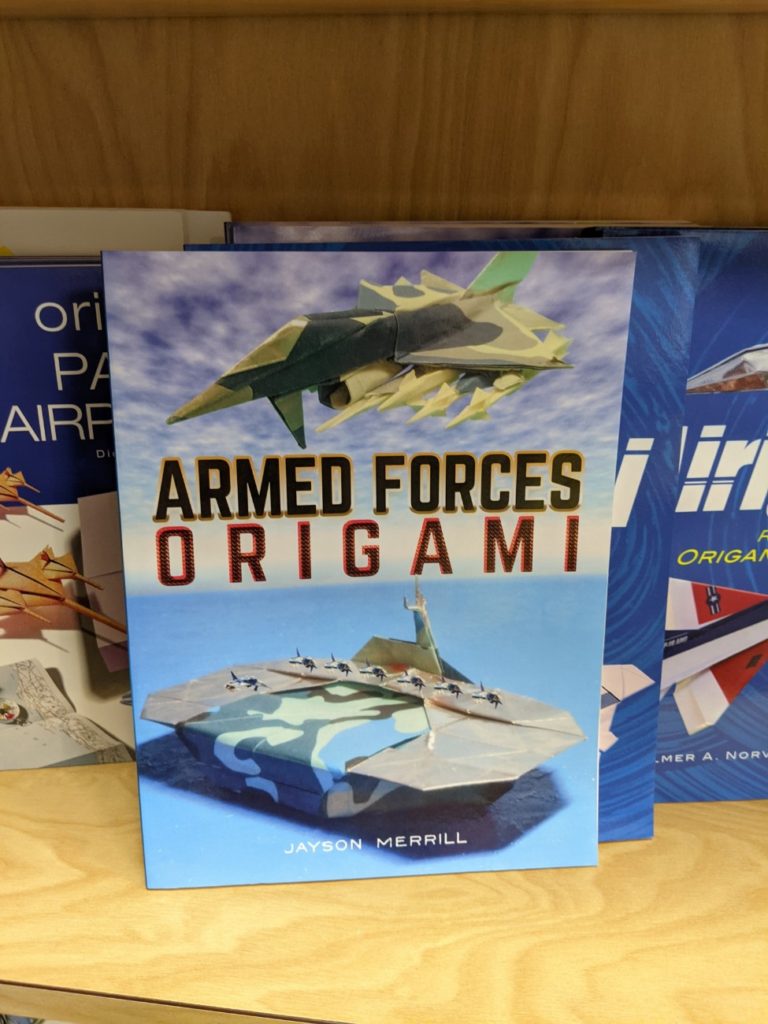
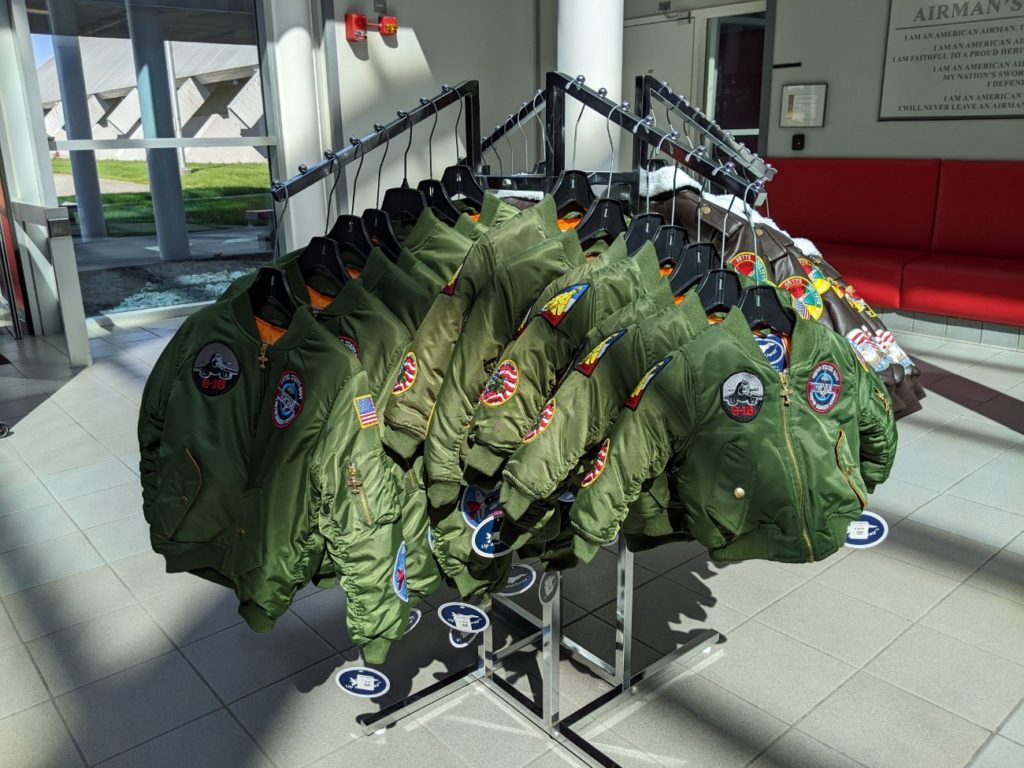

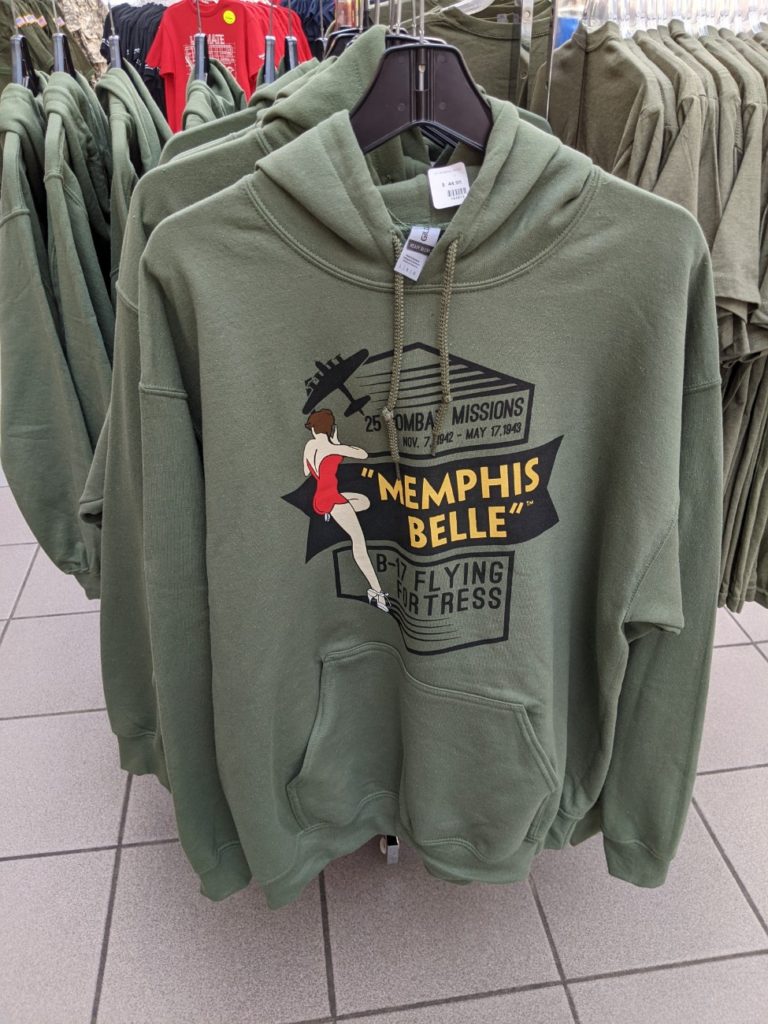
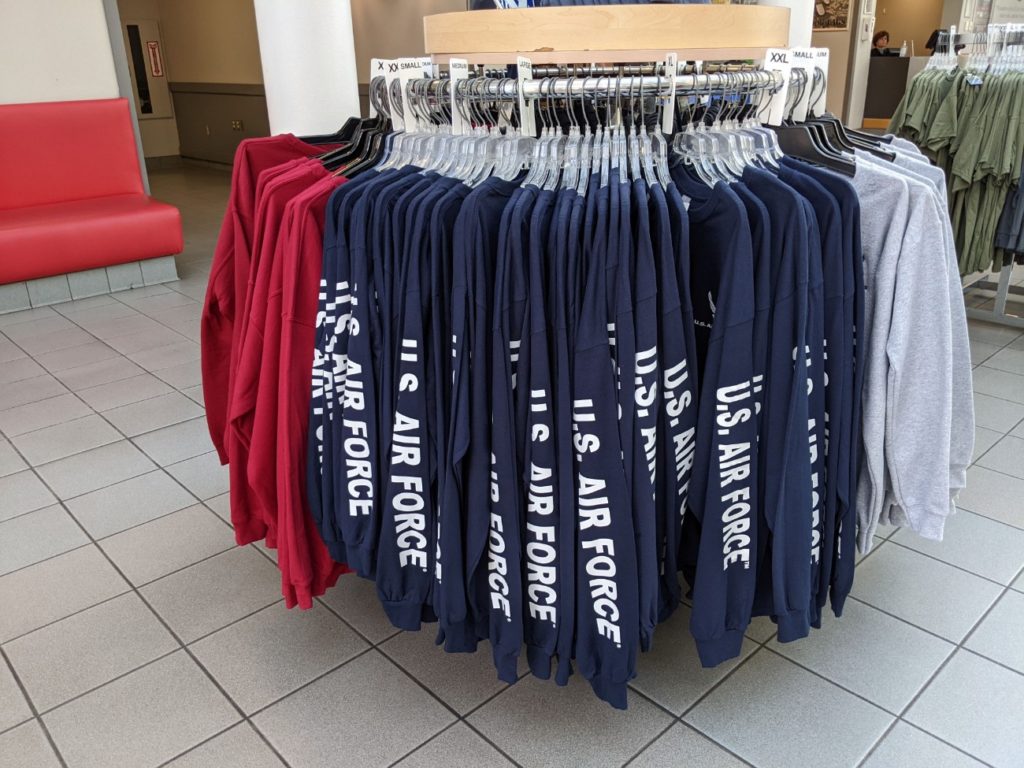

IMAX 3D Theater
You can see up to four different 3D movies in the museum’s Imax theater. I decided to be a completist and saw them all! Each movie is $10 each, but if you watch them all in one day, you can see all four for $30.
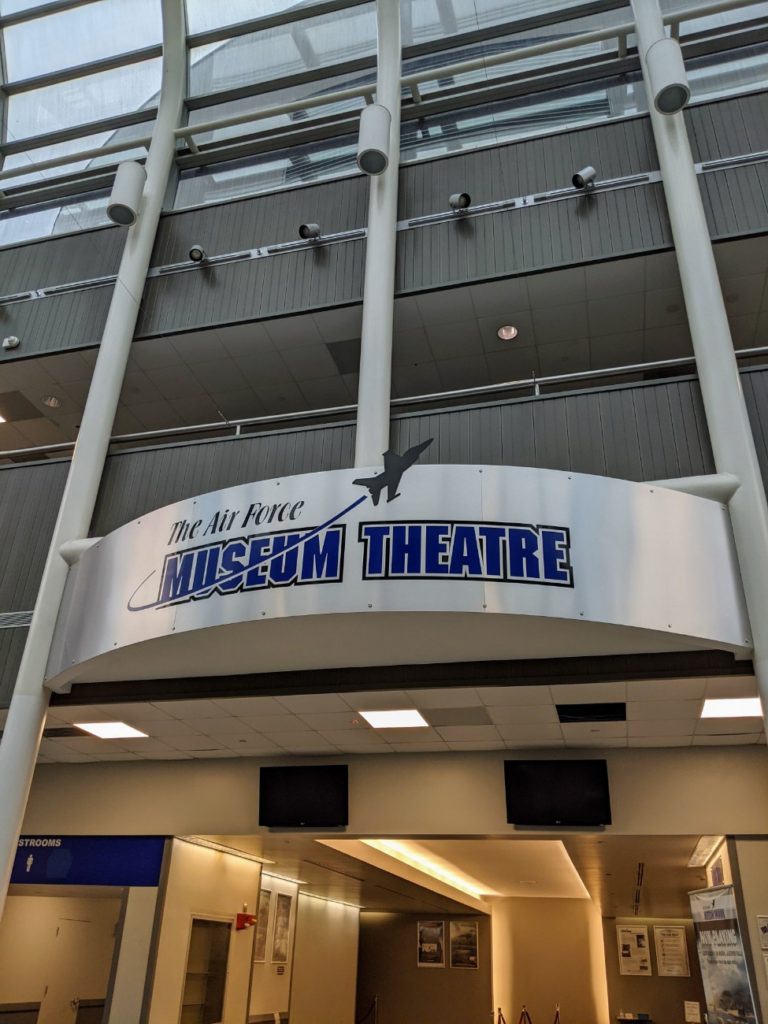
Fighter Pilot Operation Red Flag was my favorite. It is the most connected to the theme of the museum and features awesome swoopy flight sequences on the Imax screen. In it, fighter pilots are put to the test in a huge international training exercise over the desert of Nevada.
D-Day Normandy 1944 is a moving and artful epic narrated by Tom Brokaw. It’s clearly presented and has some cool sand-art animation effects to move the story along. The orchestral music is really fantastic on the Imax sound system.
Rescue 3D Disaster Response follows several first responders through training and rescue efforts in Haiti after the 2010 earthquake. It features a large cast: a female Air Force pilot, a Canadian naval captain, a volunteer fireman, and a helicopter pilot. It has a lot of action and is museum-relevant, but is kinda confusing with so many storylines.
Astronauts: Oceans to Orbit is a shorter film about astronauts who train in an undersea base before heading to space. I liked it, but it felt stressful to me in the beginning.
All four of these were playing during my trip in May. During my visit last November, instead of the Disaster Response one it was a super stressful short film on Space Junk (as if we need anything else to worry about!) Today, I only see Operation Red Flag and D-Day movies on the schedule. So it may vary during your visit.
Simulators
Besides the movies, they’ll want to try to upsell you on the simulators. There are three kinds and can all be found in the Korea Gallery.
The Virtual Reality Simulator puts you in a WWII Sherman Tank during the Battle of the Bulge. It’s a four-person bench, and it sounds like you collaborate to win the battle.
The Movie Simulator is geared towards families with smaller kids and can seat up to 12 at a time. You choose from one of 5 movies and the whole simulator moves in conjunction with the action on the screen. Options include aviation history, flying with the Red Baron, or racing with Space Cops.
The Interactive Flight Simulator takes two passengers at a time, a pilot and a gunner, and you control the action with joystick controls. These simulators can rotate a full 360 degrees so you can put your flight skills to the test!
Tickets for the simulators are $10 each and the flight simulators require two riders, or at least two tickets – so if you want to ride alone, it’s $20.
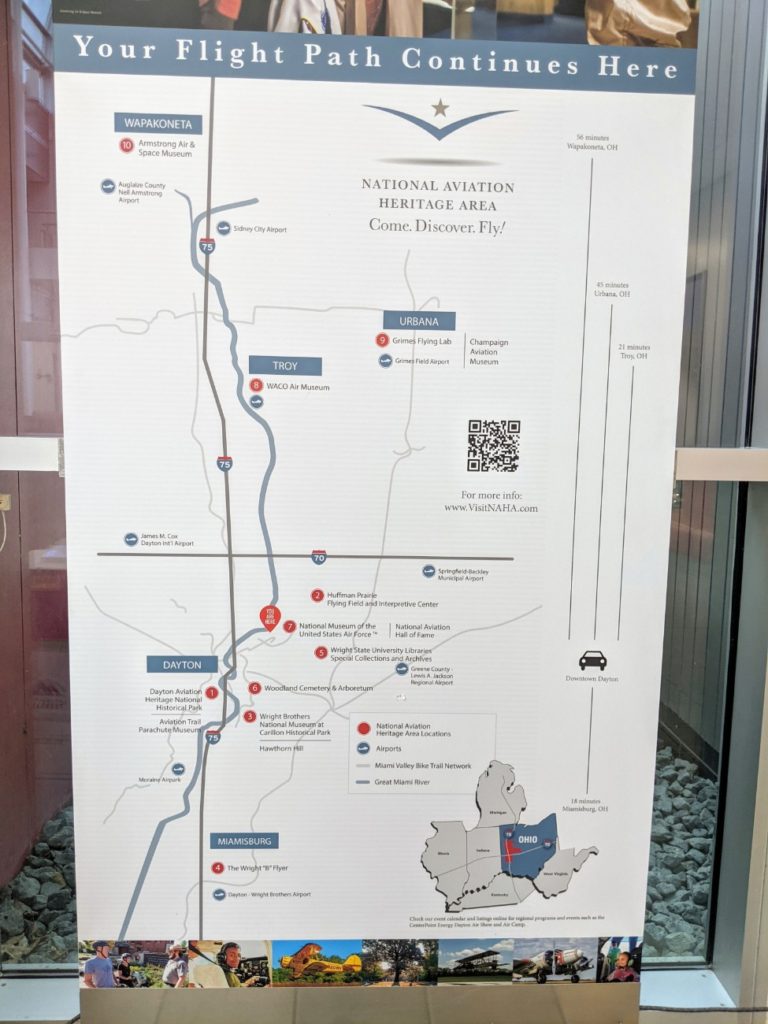
Hours & Amenities
The National Air Force Museum is open seven days a week from 9 am to 5 pm. The only days they close are Thanksgiving Day, Christmas Day, and New Year’s Day.
Again, admission is completely free, parking is completely free, and tours are completely free. But movies and simulators cost $10 a pop and they might ask you to donate a dollar for a map. Every hangar has a help desk if you have any questions about anything.
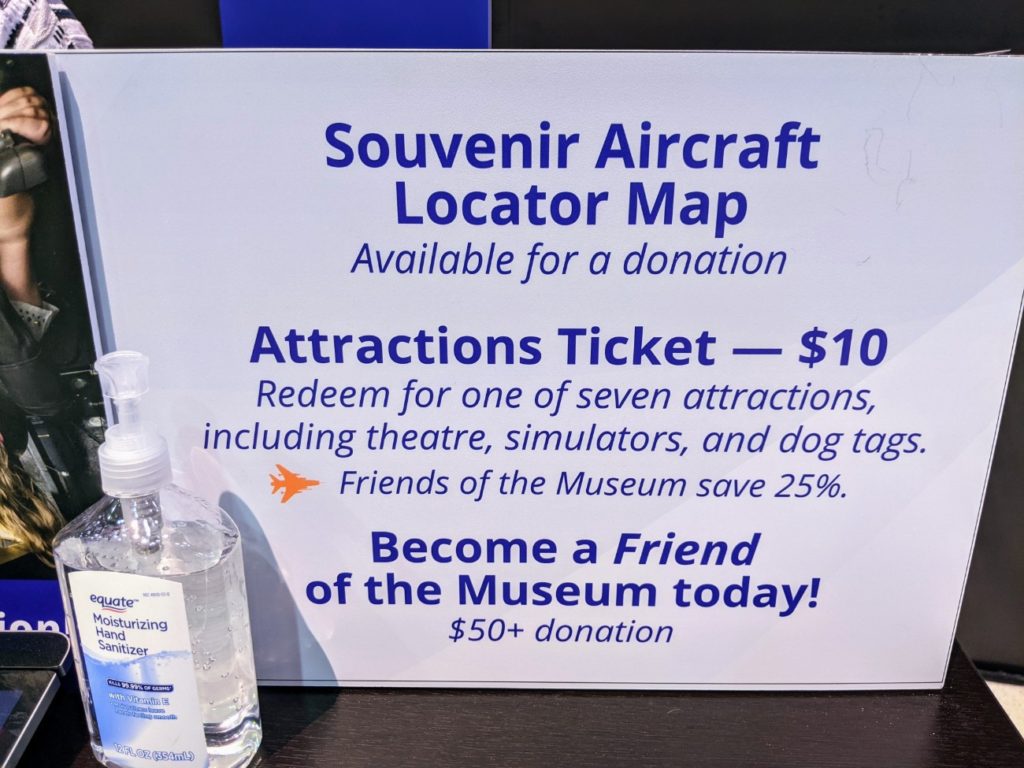
There are restrooms in every hangar and in the atrium next to the theater. Everything is wheelchair accessible and mostly on one level except for the food. The upper areas near the Missile Gallery and the cafe are both accessible by elevators.
There is a coat check and lockers if you want to put some stuff down. Coat check is self-serve, though I still found it chilly in the hangars during the winter months, so I kept my hat on. If you want to be more secure, the lockers look to be the kind that you drop quarters in and take the key with you. I didn’t stop to notice how much they are.
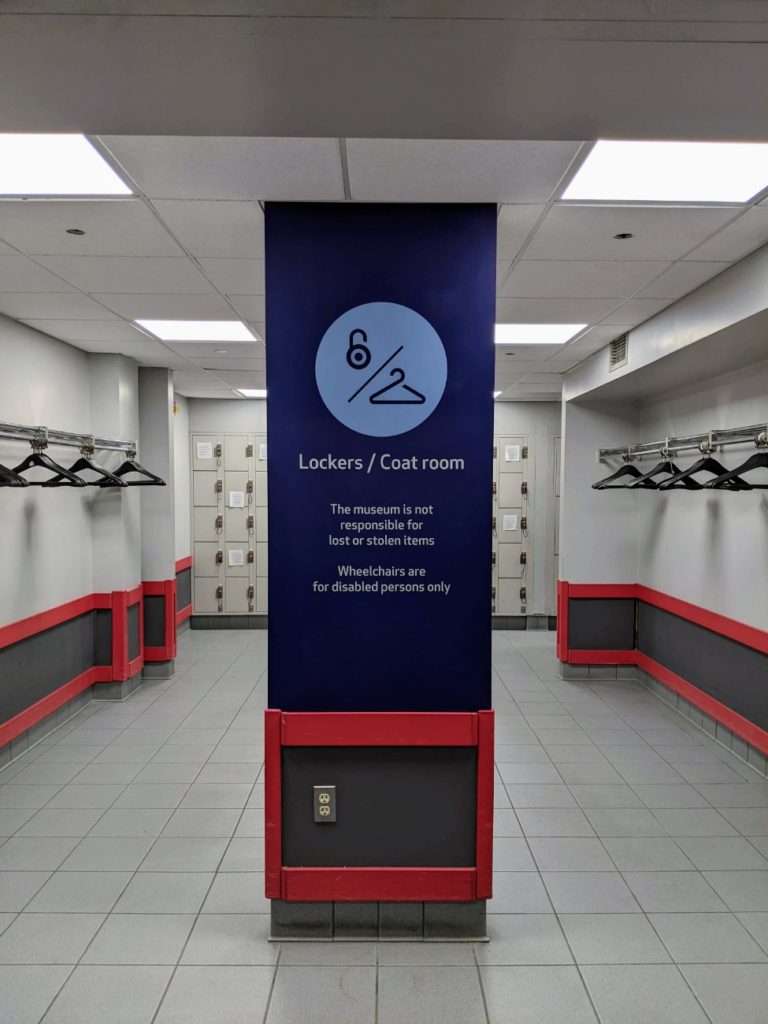
Memorial Park
There’s a grassy park next to the parking lot with paths and trees. A big picnic pavilion is towards the back but the rest of it contains memorials to different squadrons, people, and associations. It’s nice to walk around and see the monuments if you have time.
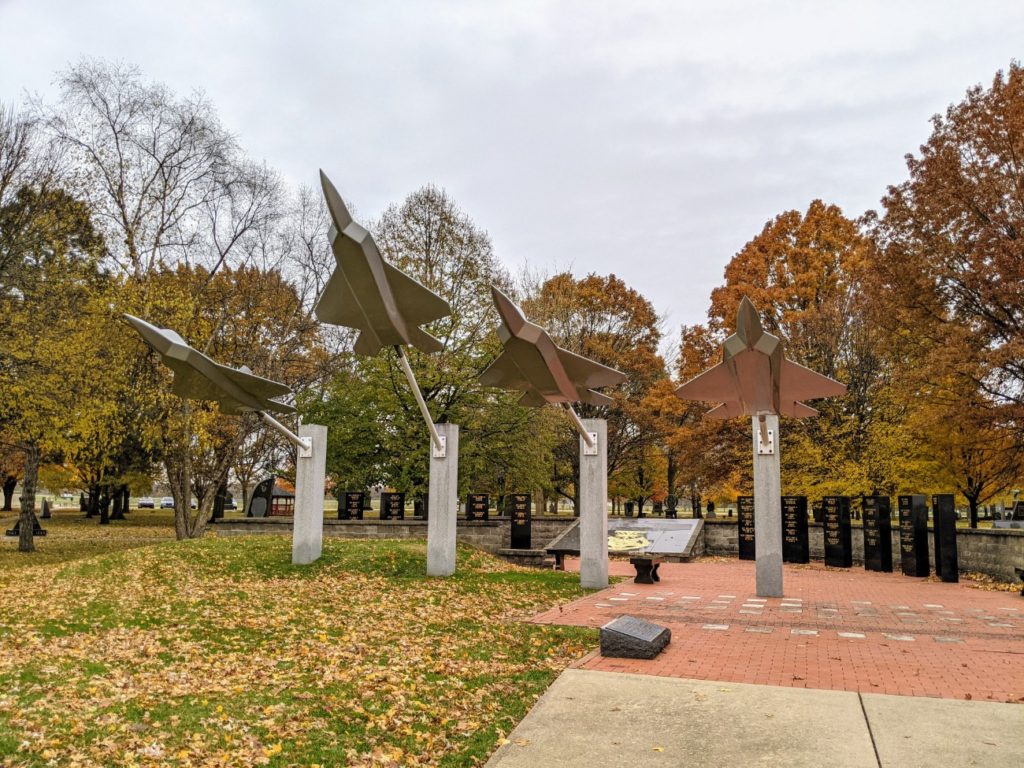
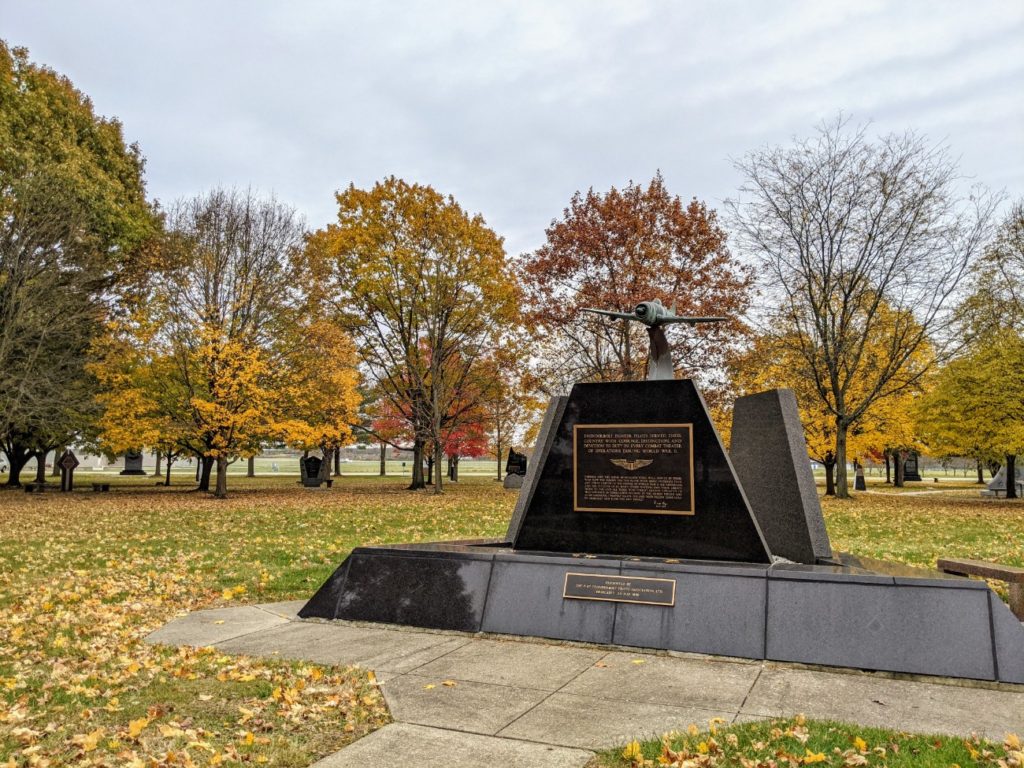
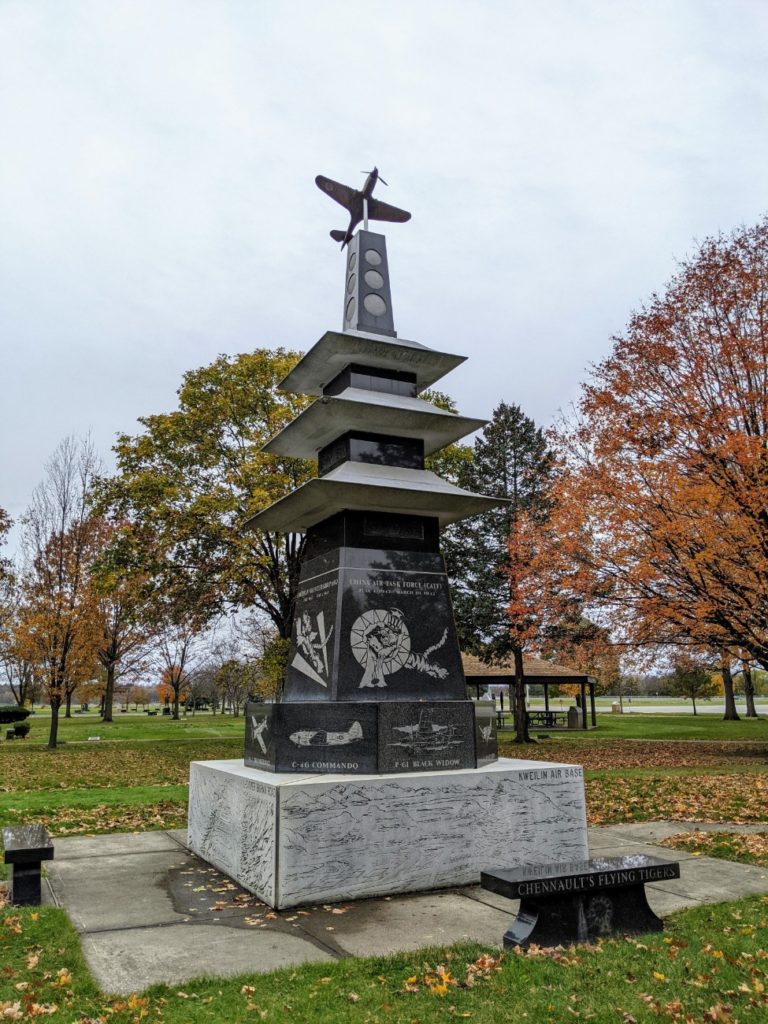
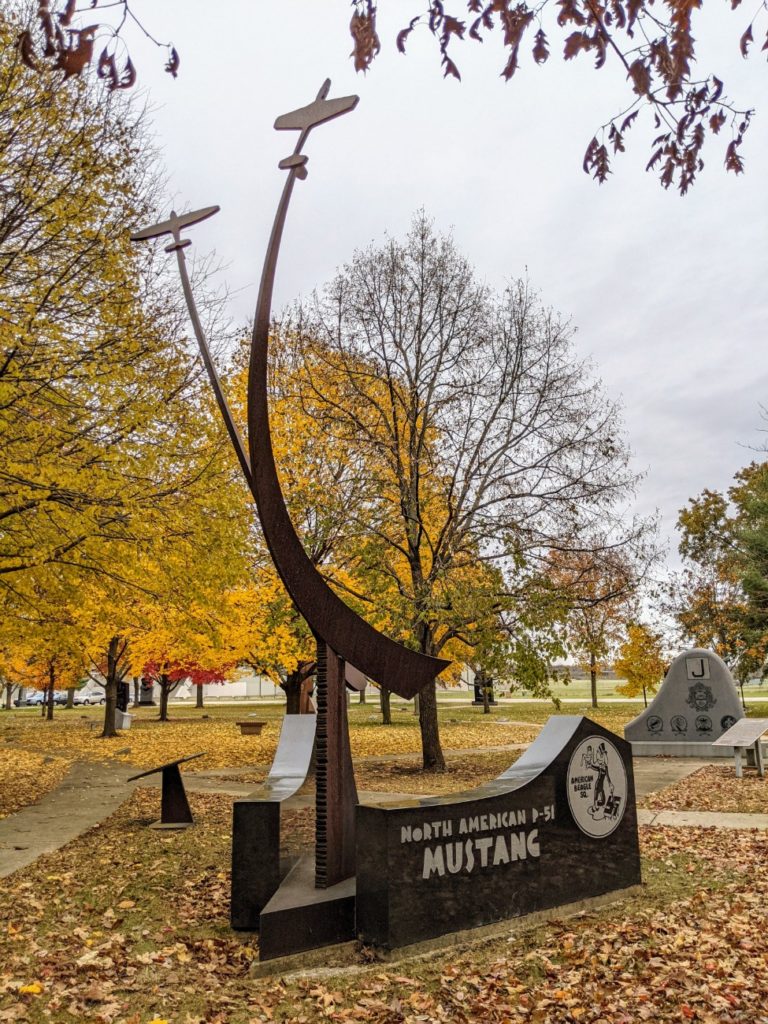
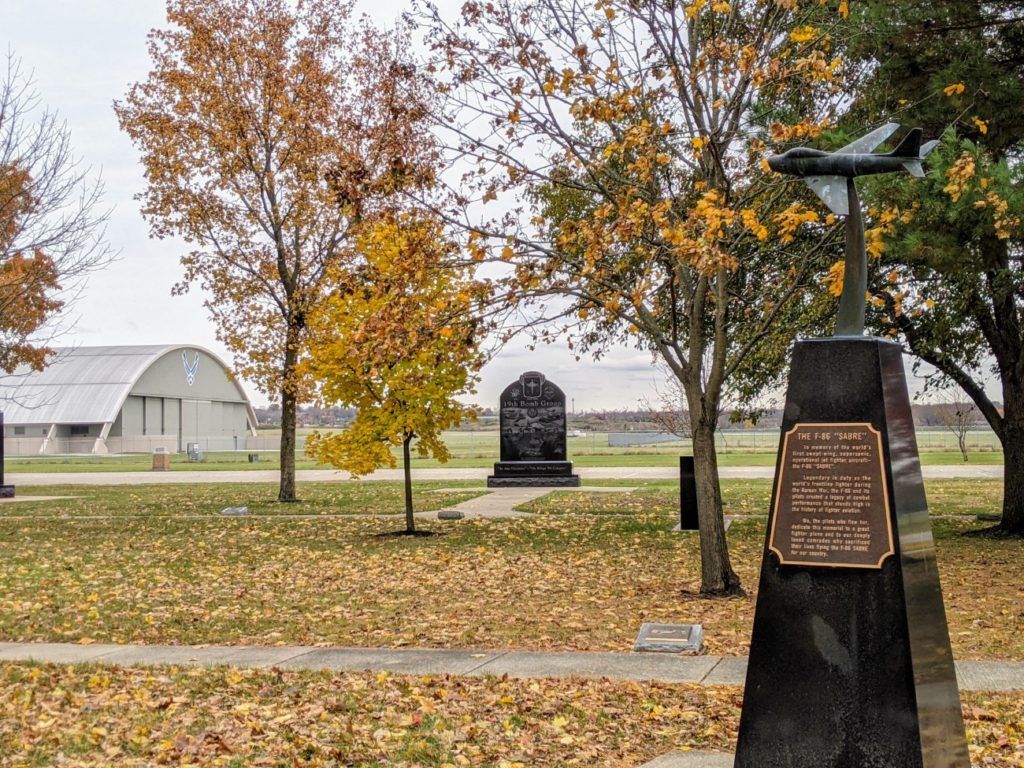
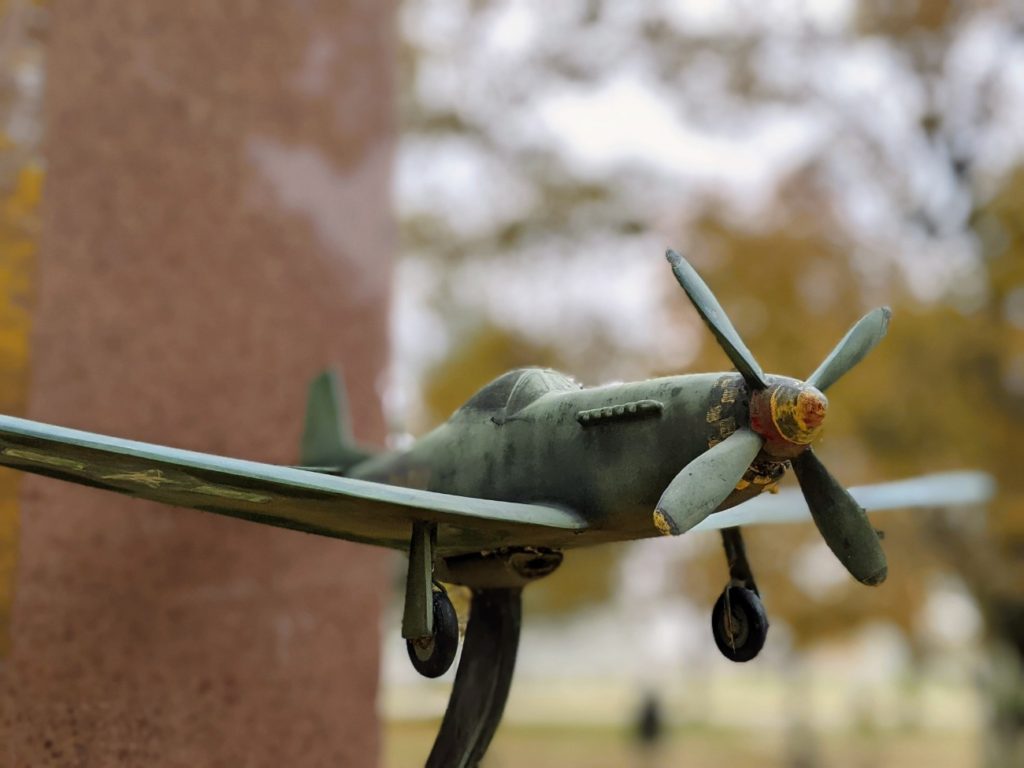
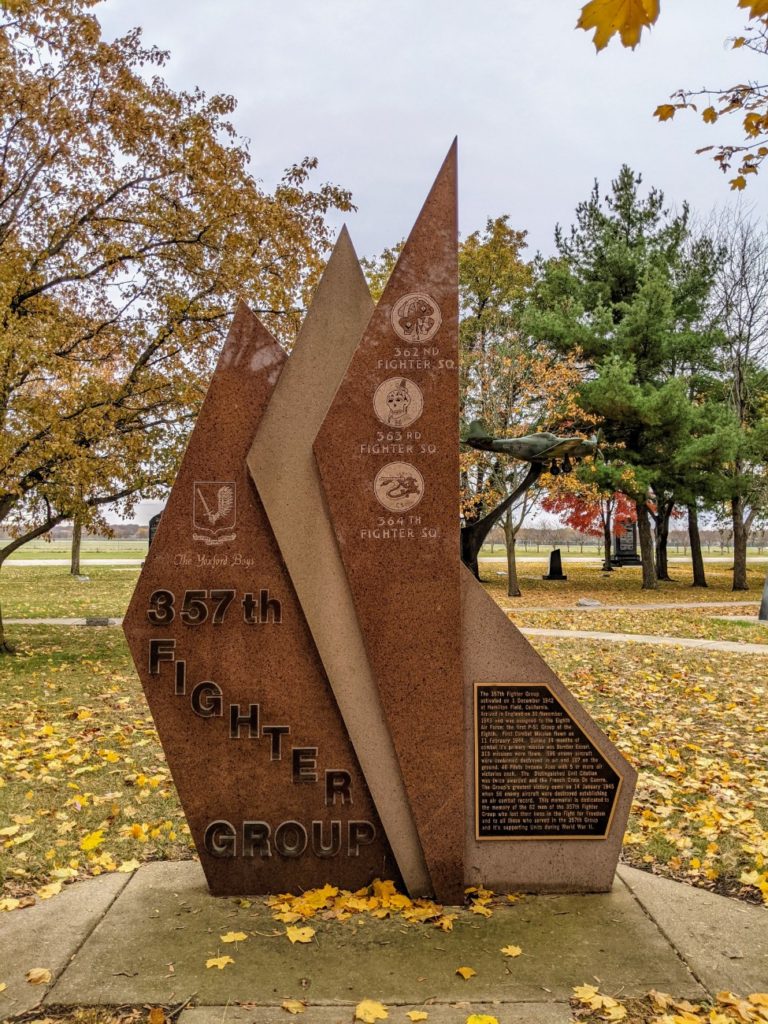

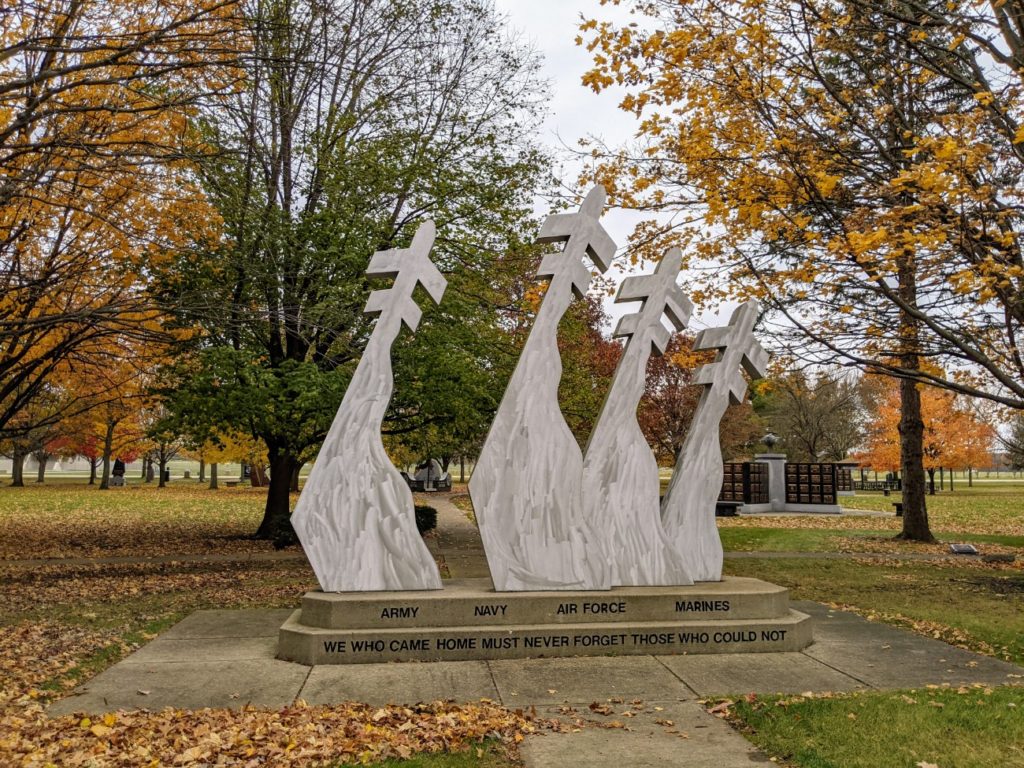
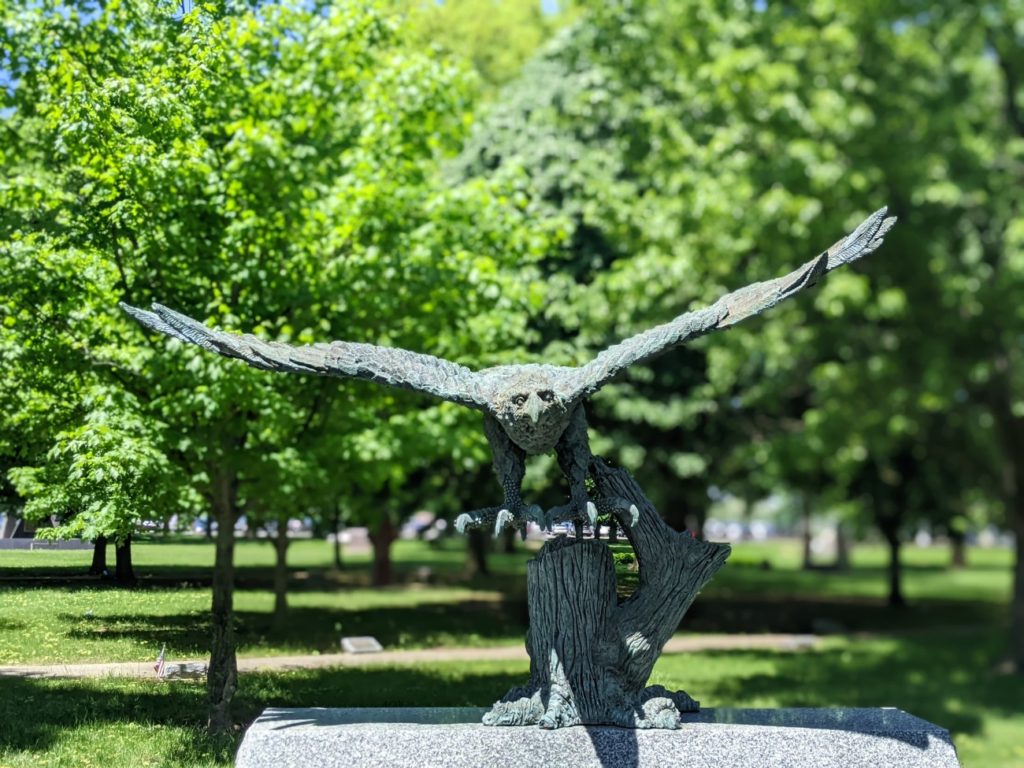
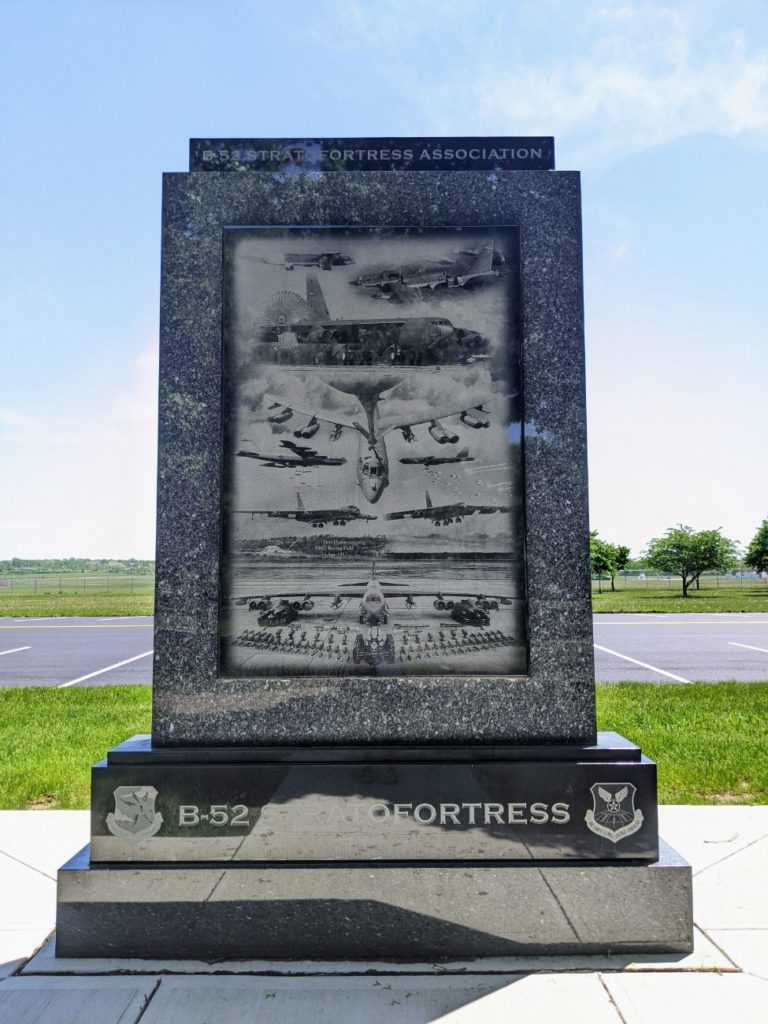
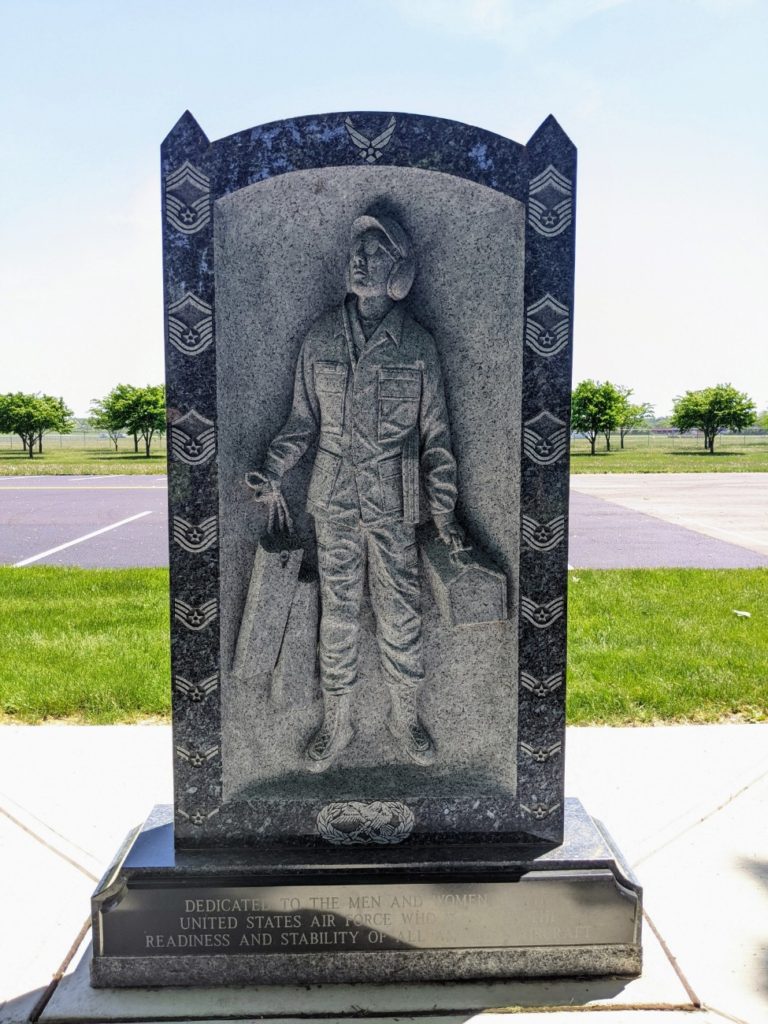
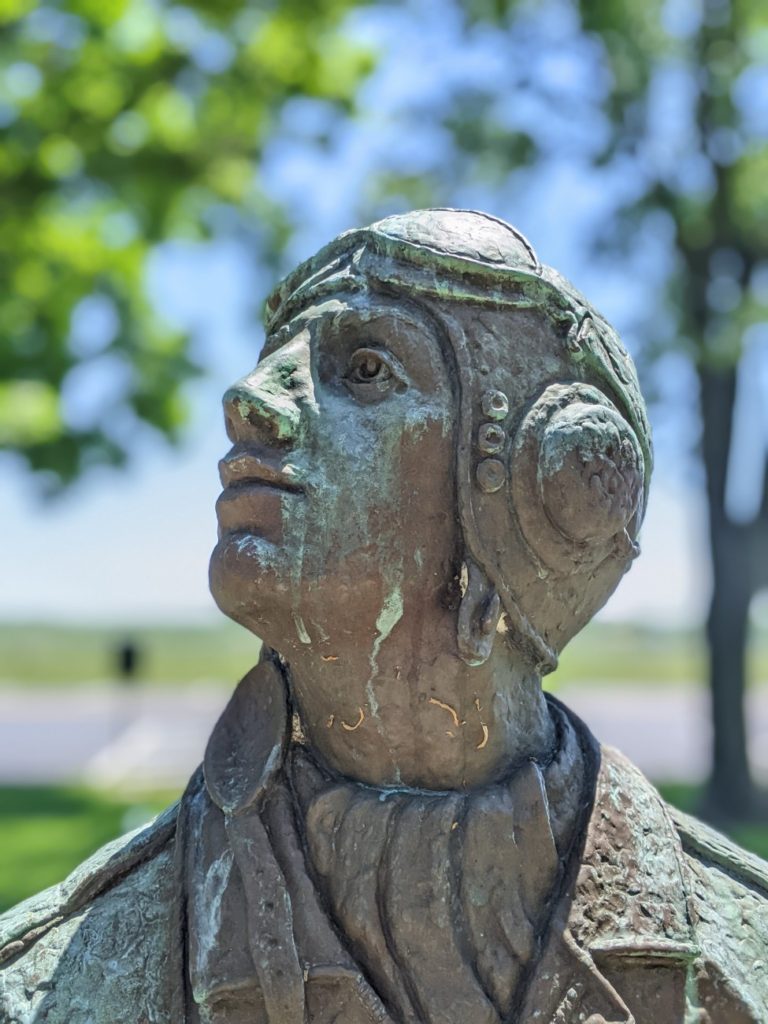
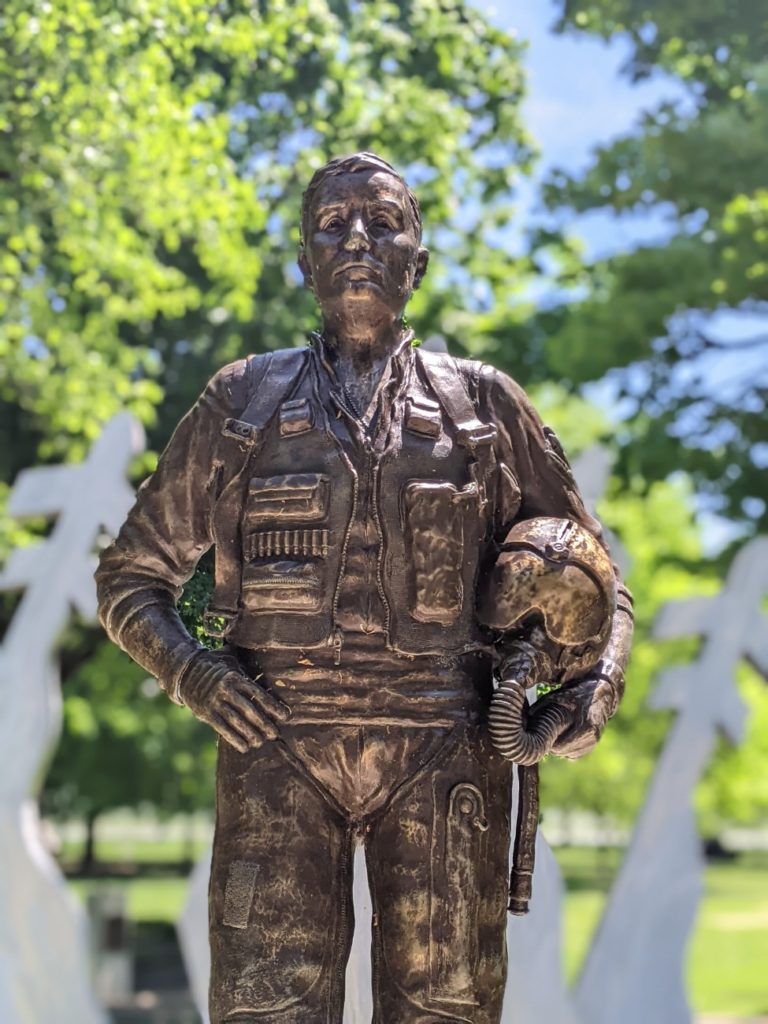
There are also a few more airplanes outside on the far side of the museum theater. I never walked over there but you can see them as you drive in and out. There’s also an old air control tower and Nissen Hut that you used to be able to tour but are currently closed.
I ended up visiting the National Air Force Museum a total of four times – once to tour the whole place on my own, once to take all the tours, and two extra times to watch all the movies. I think one full-day visit is enough to see everything pretty well in-depth. Though if you have a more acute interest, you can always keep coming back – because it’s free!
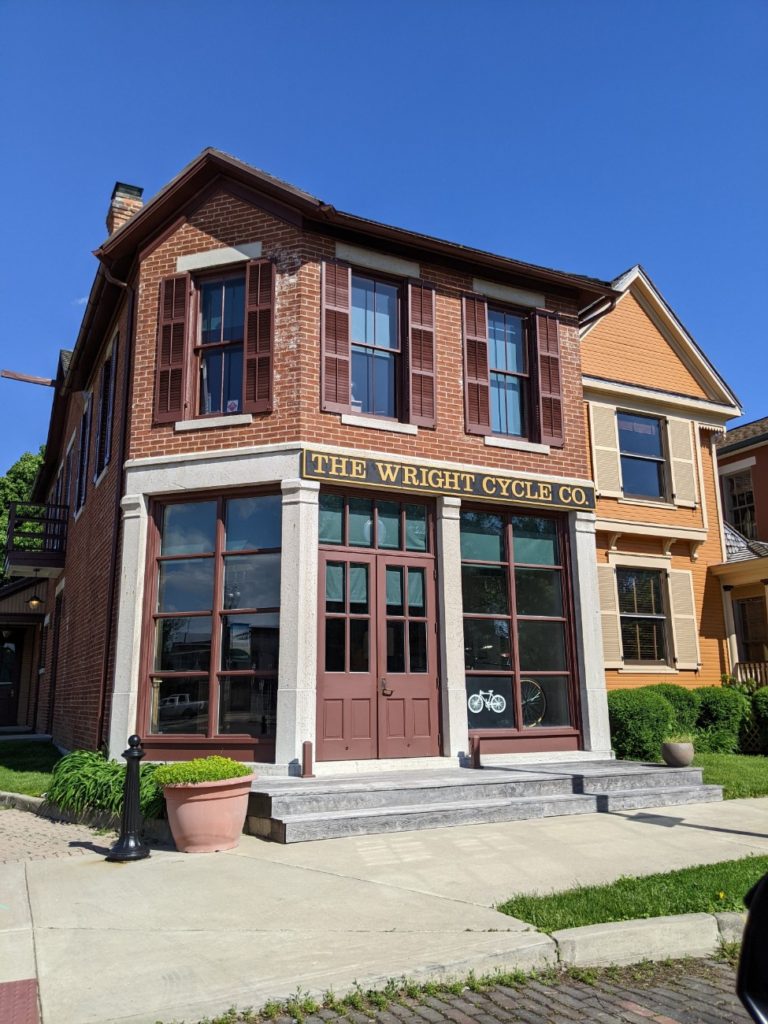
Man, it’s amazing that a place that extensive has free admission! The post was a great read! I especially liked the WWII displays and the section of women in the airforce.
Thanks! It’s really cool – I think one of the tour guides said that the Air Force put it together then sold it all to the Museum Foundation for $1, something like that. Then the foundation runs it as a non-profit. It’s great fun.